2-FOR-1 GA TICKETS WITH OUTSIDE+
Don’t miss Thundercat, Fleet Foxes, and more at the Outside Festival.
GET TICKETS
BEST WEEK EVER
Try out unlimited access with 7 days of Outside+ for free.
Start Your Free Trial
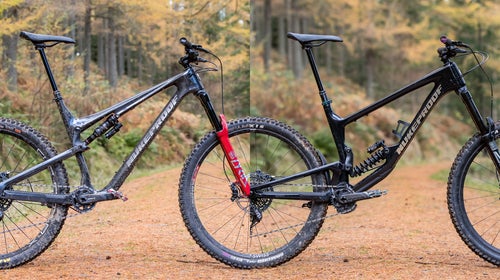

Short or Long Travel: Which Is the Best All-Around Mountain Bike?
How much slower does a modern long-travel bike climb? And what are the differences downhill?
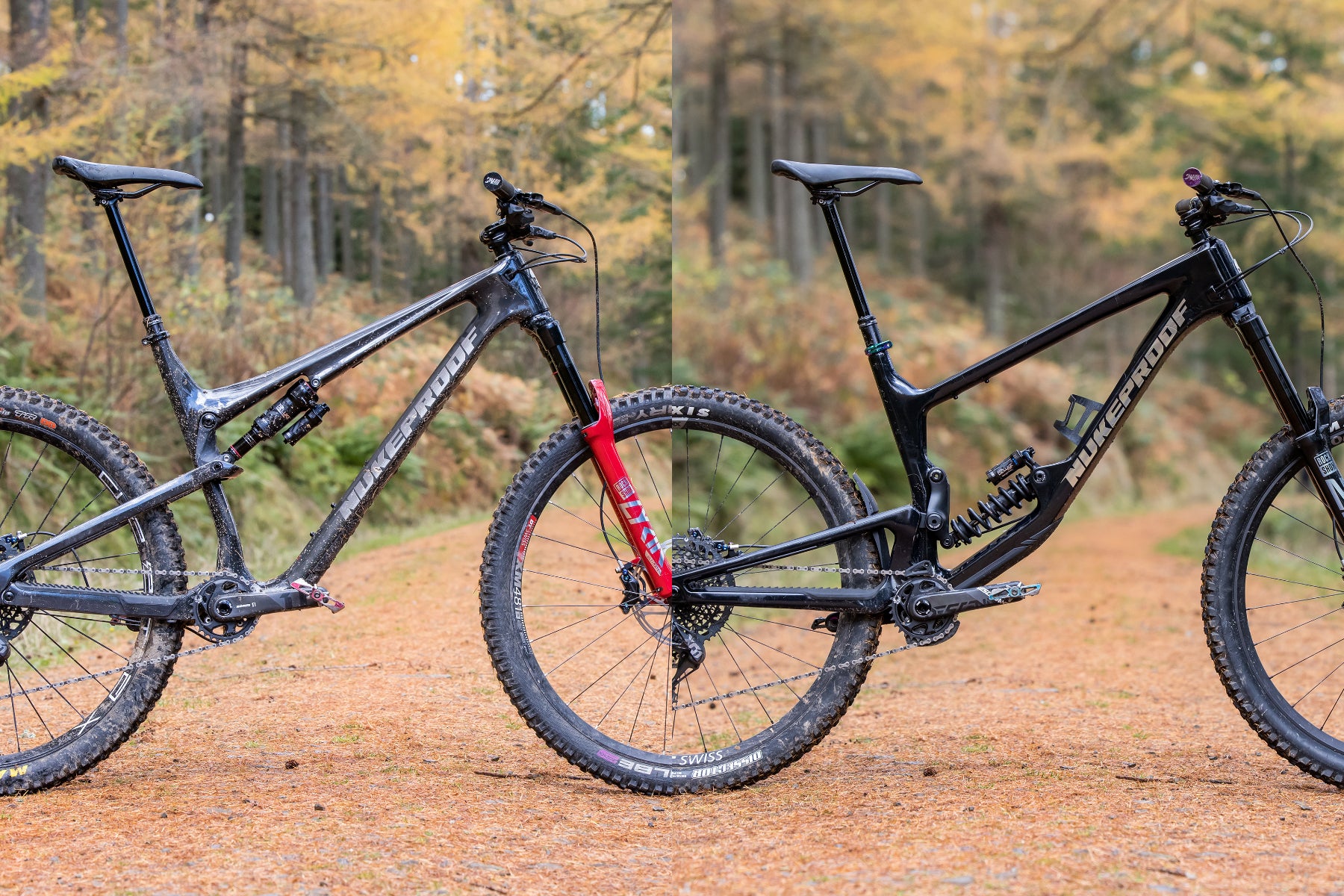
Heading out the door? Read this article on the Outside app available now on iOS devices for members! >","name":"in-content-cta","type":"link"}}'>Download the app .
If you want one bike to do everything, how much travel should it have? All bikes have to find a compromise between climbing and descending performance, and suspension travel is usually seen as a good indicator of where a bike sits on that spectrum.
But recently, short-travel trail bikes are a lot more capable, while long-travel bikes are much better at climbing. So how much slower is a modern long-travel bike uphill? And what are the differences downhill?
Caught up in all this is the question of tire choice. How much of the difference in climbing speed between an enduro bike and a trail bike comes down to the tires? Can fast-rolling tires close the gap? And can sticky tires make a short-travel bike descend as well as a long-travel one? Let’s find out.
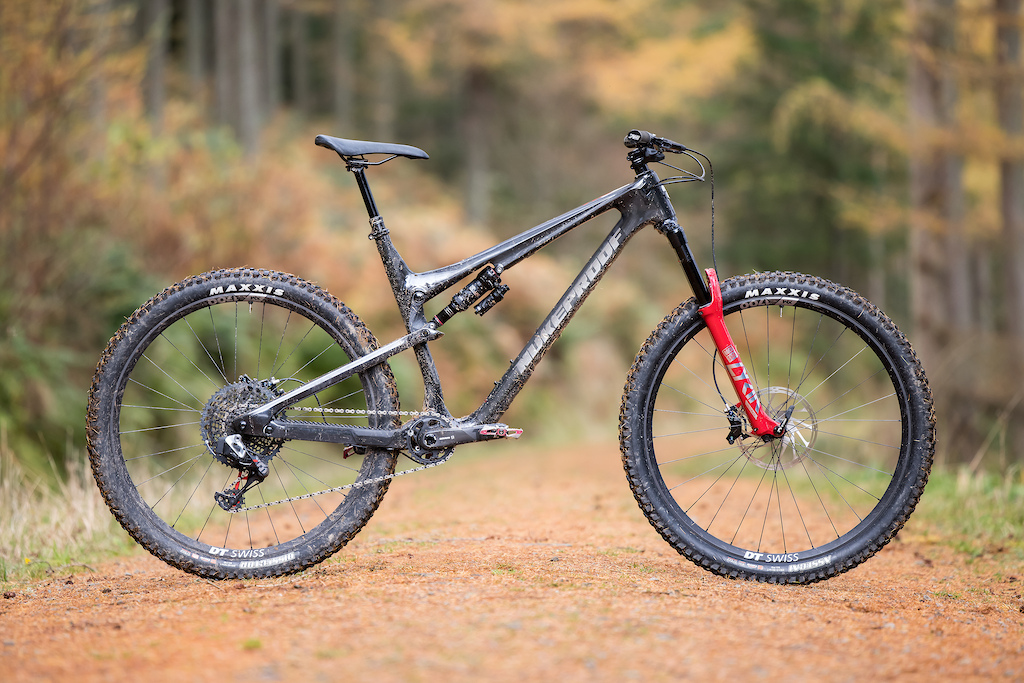
Nukeproof Reactor
• 130 / 150 mm travel • Weight as tested: 14.4 Kg / 31.7 lbs (“trail” tires, 200 mm rotors) • Size tested: XL • Price: $7,062
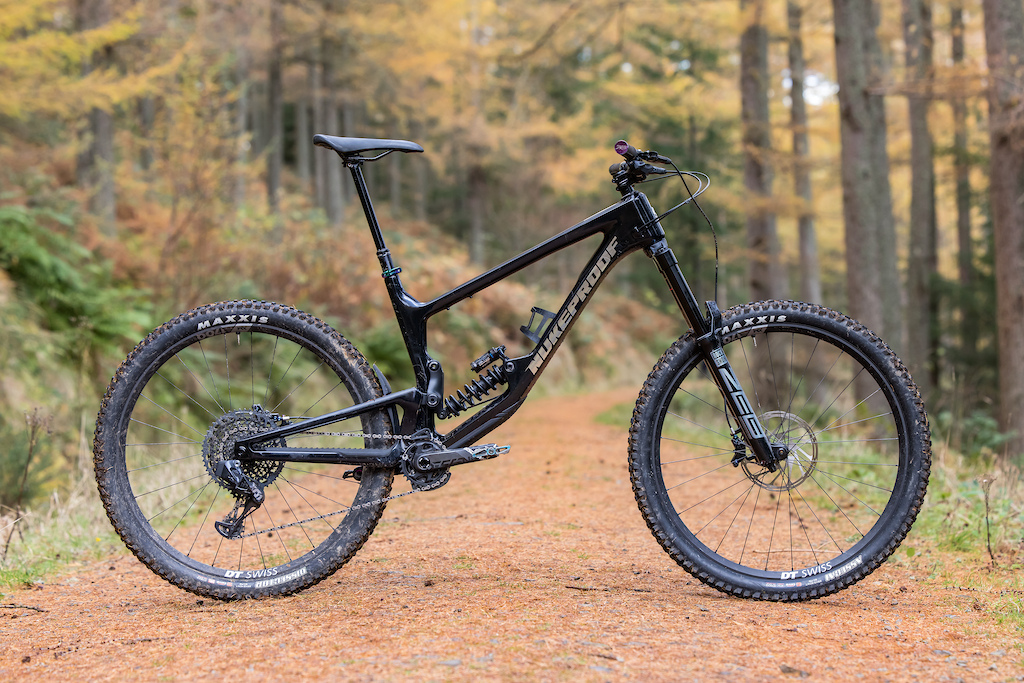
Nukeproof Giga
• 170 / 180 mm travel • Weight as tested: 15.2 Kg / 33.5 lbs (“trail” tires, air shock) • Size tested: XXL • Price: $7,415
To make things as comparable as possible, I got hold of a Nukeprof Reactor RS and a Nukeproof Giga RS. The Reactor has 130 millimeters of rear travel and 150 millimeters up front, while Giga serves up 170 millimeters (rear) and 180 millimeters (front). These models have identical brakes, drivetrains, and cockpits. With the same wheels and tires fitted, only the frame and fork are different. Both use full-carbon frames and RockShox Ultimate-level suspension. The Reactor has a Lyrik fork to the Giga’s Zeb, but the difference in chassis diameter is appropriate to the travel offered in each case.
Although the photos used here were taken with a coil shock fitted to the Giga, the testing was carried out with a RockShox Super Deluxe air shock to match the shock on the Reactor. I upgraded the rear rotor size on the Reactor to 200 millimeters so both bikes could accept the same wheels for comparative testing.
I set both bikes up with 30 percent shock sag and suspension settings as I would normally have them.
For the most part, I used the wheels that came stock on the Reactor for both bikes to remove the variable of tire choice. These tires were a Maxxis Dissector, EXO+ casing, MaxTerrra compound (rear) with a Maxxis Assegai, EXO casing, MaxxTerra compound (front). For brevity, I’ll call these the “trail” tires from now on. Fitting these tires and the air shock to the Giga dropped its weight to a respectable 15.2 kilograms – only 800 grams (1.8 pounds) more than the Reactor with the same wheels.
I also tested with a stickier pair of tires (fitted to another alloy wheelset for easier wheel swaps). These were a Maxxis Assegai in DoubleDown casing, MaxxGrip compound on the rear, with a Schwalbe Magic Mary, SuperGravity casing, Soft compound, on the front. We’ll call these the “enduro” tires. These wheels/tires weighed 600 grams more than the trail wheels/tires.
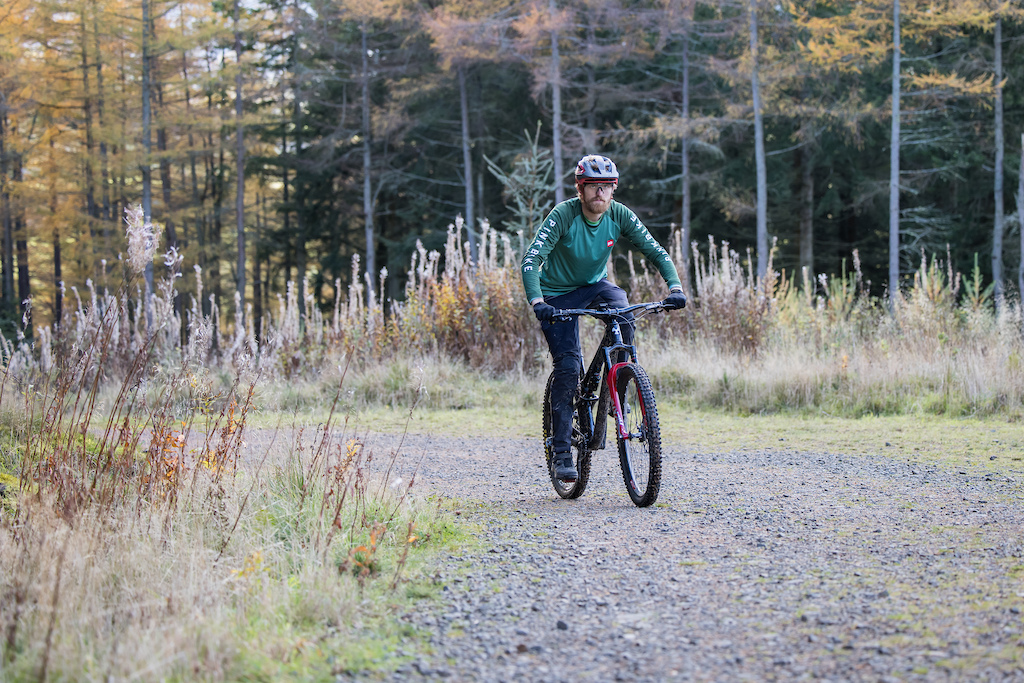
For the climbing test, I used a pair of SRM power meter pedals to control my effort, which I kept at a steady 250 watts. I rode both bikes up the same gentle and smooth fire road climb. I used a short climb so I could do five laps on each bike in quick succession and take an average. If I only did one or two longer climbs on each bike, there would be no way of knowing if any difference in times was down to the bike or just a fluke.
I did this first with the trail tires at my usual riding pressures (23 and 26 psi) then I re-tested the Reactor with the enduro tires. Here are the times:

As you might expect, the Giga was slower on average than the Reactor, but the average time was only 0.8 percent slower. Because the Reactor wasn’t consistently quicker, and the average difference between the bikes was so small, we can’t be sure from these numbers if the difference between the bikes is real or just a fluke. In science terms, the difference wasn’t statistically significant.
But even if we take the 0.8 percent difference at face value, that’s about what we’d expect from the weight difference between the two bikes alone, suggesting the travel per se (i.e. the pedaling efficiency) wasn’t having any effect.
In contrast, with the enduro tires fitted, the Reactor went 4.1 percent slower, or 3.4 percent slower than the Giga with the trail tires. In both cases, these are statistically significant differences, because the Reactor with Enduro tires was consistently slowest. To give that some context, over a half-hour climb, the enduro tires would add about one minute and fourteen seconds to the Reactor’s time. Or to go at the same pace, you’d need to produce about 260 watts instead of 250 watts; if you’re already working hard, that could be very noticeable.
The added weight of the heavier tires would only be expected to slow things down by at most 0.6 percent, so most of that difference is down to rolling resistance. This added drag will make covering ground slower on the flat and even downhills too (so long as traction and braking aren’t what’s limiting speed).
Subjectively, you can feel a little pedal bob from either bike, but there isn’t dramatically more with the Giga. The position is quite different due to the Reactor’s lower stack height and slacker seat tube angle (74.5 degrees vs. 78 degrees); this stretches out the spine which feels much less comfortable to me, especially on long climbs. Doing timed testing over technical climbs is virtually impossible because the time can vary so much from one run to the next depending on line choice, technique and luck, but when riding over bumpy terrain the Giga is noticeably smoother. The softer suspension obviously helps here but having your weight further in front of the rear axle also reduces how much your weight lifts when the rear wheel moves over a bump. Though I can’t put a number on it, I much preferred the Giga for technical climbs.

To see how they compare for descending, I chose a short local trail I know well with a good mix of roots, rocks, steep twisty sections and flat fast sections. It’s not the most technical trail in the world and it’s definitely not the roughest, but on the day of testing (which was a couple of days before taking these photographs), it was wet and slippery, making it a good challenge. To level the playing field and keep things simple, I stuck with the trail tires on the Giga and the enduro tires on the Reactor.

The Giga went first, and despite doing two laps to get up to speed on the course before getting the timer out, I shaved 2-3 seconds off my time from one run to the next. This is always a problem with timed testing. My first time on the Reactor (my fourth timed run of the day) matched the first run on the Giga. It improved from there but levelled out at one minute and sixteen seconds.
I did one more run on the Reactor with the trail tires and matched my fastest times, suggesting the stickier tires weren’t much of an advantage on this course anyway. I’m sure that on a more treacherous course—or in the hands of a rider who is better at finding the limit of grip—the enduro tires would become a significant advantage.
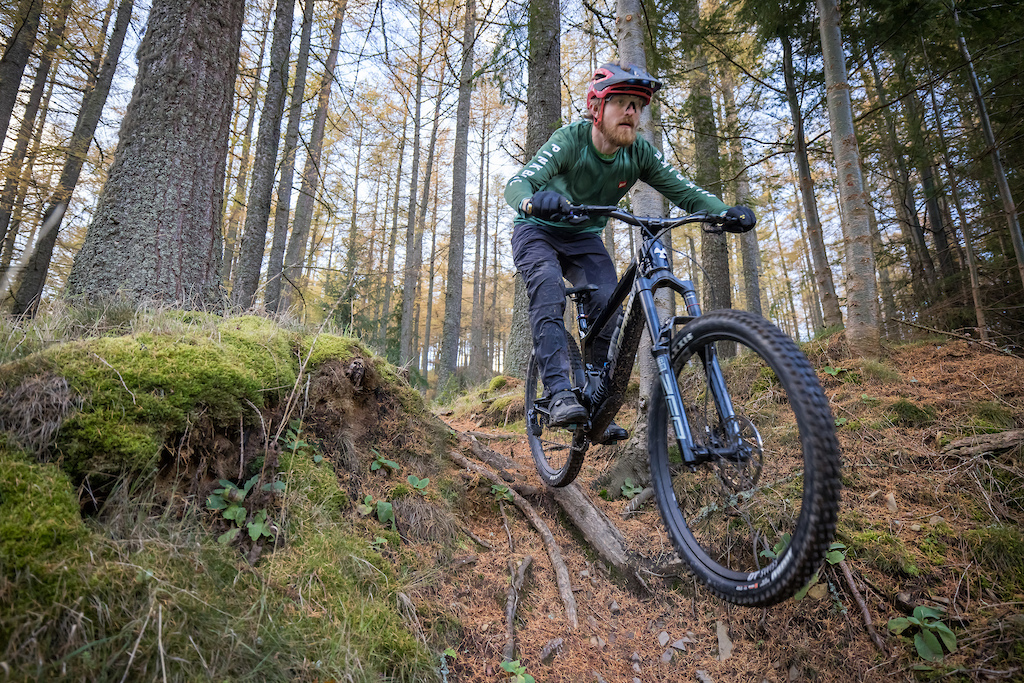
Subjectively, the enduro tires felt much more damped and surefooted and I was locking up less on the steep sections, but this didn’t seem to translate into more speed for me. Even with the sticky tires on the Reactor, the Giga felt much smoother, calmer, and more stable. The higher bar and slacker head angle combined with suspension that feels more settled “in the travel” makes going faster feel more within my comfort zone. I also felt like there was more time left on the table with the Giga, whereas the last two runs on the Reactor would be hard for me to improve on.
Because there are so many variables at play when descending, I wouldn’t read much into the times themselves. But they reveal that, although I felt closer to the edge on the Reactor, I was in fact going slower.

Closing Thoughts
The biggest takeaway for me is just how much difference tire choice makes for climbing speed. Sure, the enduro tires I tested are pretty draggy, but they’re not DH tires or mud spikes, and the trail tires (with an Assegai up front) are far from the fastest you can get. In fact, they held their own even on slippery descents.
I’m sure plenty of people don’t care about going slightly faster or feeling more comfortable on steep descents; in fact, I often hear people say they find it more fun to have a sketchier ride at slower speeds. But if that’s the case, why not fit slicker tires which will offer a real boost in climbing speed as a bonus? You could always use the lockout or run 10 percent sag if you want your enduro bike to feel sketchier! Personally, I have more fun on a long travel bike as it gives me the confidence to try new lines or ride them with more commitment.
The other surprise was that the Giga was barely slower uphill than the Reactor with the same tires, and if you want to close the efficiency gap even more you could always use the lockout.
One caveat here is that a power meter may not be the best way to measure and control effort in an efficiency test when comparing suspension efficiency. I discuss this with Mike Levy in this episode of the Pinkbike Podcast , but the bottom line is that I think the power meter method is valid for measuring efficiency when pedalling sitting down (as in this test), but it doesn’t work for out-of-the-saddle sprinting, and that’s where the extra travel is more likely to be a disadvantage.
It’s also fair to say the Reactor isn’t the fastest-climbing short-travel bike out there. But the Giga probably isn’t the most efficient among 170 millimeter+ bikes either. It’s based on a downhill bike and it’s designed to be even more gravity-focussed than Nukeproof’s Mega enduro bike. More to the point, it doesn’t have a huge amount of anti-squat , and higher anti-squat levels would probably make it climb even better. In one of Levy’s efficiency tests , the 170 millimeter-travel Santa Cruz Nomad (which has quite a lot of anti-squat) was faster than the 130 millimeter Ibis Mojo (despite having slower tires), suggesting a long-travel bike with generous anti-squat can be as just as efficient as a shorter travel one.
The bottom line is that ample suspension travel needn’t be a hindrance uphill, but grippy tires will slow you down a lot. So if you want one bike to do everything, it might make sense to pick a long-travel bike with a spare set of fast-rolling tires for mellower rides.
This article first appeared on our sister site, Pinkbike .
- Mountain Biking
Popular on Outside Online

Enjoy coverage of racing, history, food, culture, travel, and tech with access to unlimited digital content from Outside Network's iconic brands.
Healthy Living
- Clean Eating
- Vegetarian Times
- Yoga Journal
- Fly Fishing Film Tour
- National Park Trips
- Warren Miller
- Fastest Known Time
- Trail Runner
- Women's Running
- Bicycle Retailer & Industry News
- FinisherPix
- Outside Events Cycling Series
- Outside Shop
© 2024 Outside Interactive, Inc
Best trail mountain bikes 2024 – we test 11 excellent ride anywhere MTBs
Trail MTBs have become the ultimate do-everything mountain bikes, efficient on the climbs and confident on the descents. Here's our expert pick of the best around
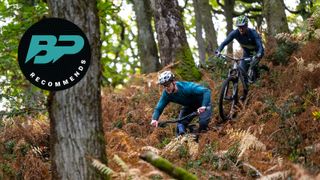
The best trail mountain bikes are designed to be all-around MTBs that can take on any trail, all day long. As trail mountain biking fills the middle ground between enduro and XC, it's the most popular riding style and virtually every brand has at least one trail bike in its range.
Trail bikes are designed to combine uphill and downhill performance. For this reason, they often have a relatively efficient pedaling platform, yet the best trail bikes will shine on the downhills too. Usually sitting somewhere between 130 and 150mm of front and rear travel, these machines can tackle everything from trail center loops to gnarly off-piste steeps.
With so many quality trail bikes here, it's very tough to pick any overall winner and the one that's best for you will depend on where and how you want to ride.
Our five star rated trail MTBs are the Specialized Stumpjumper Evo Comp and Forbidden Druid V2. The Canyon Spectral 29 CF8 and YT Jeffsy Uncaged 6 are also excellent bikes that give maximum bangs per buck, so are our best value choices.
If you're unsure if trail MTBs are you right for you, our guides to the best mountain bikes and best mountain bike brands which should help you make your decision. And if you're looking to upgrade an existing bike, you may want to have a look at our top trail tire guide and our our article on the best dropper posts . We've also got a buying advice section on what to look for in a trail bike at the bottom of this article.
The best trail bikes
Why trust BikePerfect Our cycling experts have decades of testing experience. We'll always share our unbiased opinions on bikes and gear. Find out more about how we test.
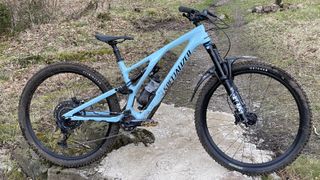
Specialized Stumpjumper Evo Comp
Our expert review:
Specifications
Reasons to buy, reasons to avoid.
Specialized offers the Stumpjumper in a huge range of spec, travel options, and in two wheel sizes, however, the Specialized Stumpjumper Evo Comp version is a happy medium between cost and components and is the Goldilocks model for us.
The Evo Comp model is made from the brand's Fact 11 carbon and features 160mm up front and 150mm at the back. The geometry is great, with a really well-centered feel descending and easy poise when climbing. Don't get us wrong, there are bikes out there that climb or descend better, but there aren't many that do both quite so well and it's finding the balance that makes the Stumpjumper such a great bike.
Not only does the Stumpjumper have impeccable ride manners, but Specialized has also packed the Stumpjumper Evo with practical features including a SWAT storage (with hydration reservoir included) and tuneable geometry. It also comes with a full SRAM GX drivetrain, complementary tire combo, and high-control brakes
Reviewer Guy Kesteven said. "It’s light and agile enough to be a joy on less techy, pedaling trails or just big days out in the hills but controlled and calm enough to really push the potential of its radical geometry options. The fact you can play around with big changes to those settings in just a few minutes between runs is a unique and invaluable gift for riders who really like to dig into their dynamics too." Read more in-depth thoughts in our review of the Specialized Stumpjumper Evo Comp .
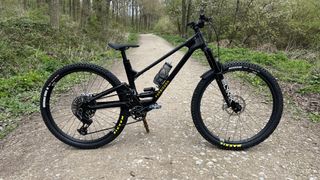
Forbidden Druid V2
While high-pivot bikes using idlers are becoming increasingly popular on downhill bikes and enduro bikes, they haven't really filtered down to the best trail bike market that much yet. Idler-equipped bikes have the advantage that the suspension and drivetrain are more disconnected giving better suspension performance, however, this can come at the cost of pedaling efficiency.
The Forbidden Druid V2's drivetrain creates less drag than it's predecessor and gives better chain security. Forbidden have also enhanced the Druid's riding character and the new incarnation combines short travel, agility and responsiveness with long travel control and confidence for a best of both worlds feel.
In testing, our tech editor, Guy, reported that the Druid V2 "charges, pops and hustles like a hard pedaling short travel bike but carries speed through jank and jolt sections like some kind of catapult. When that generates more speed than you’re expecting (which will happen a lot at first) it’ll save your stupid ass/arse and throw you straight back into the ring on your toes and ready to go. It does it without any of the old stretchy weirdness either, so not only is the overall performance better it’s easier to go harder on sooner.
Reviewer Guy Kesteven summed up the Druid V2. "With up to date, suspension flattering geometry, less drag, internal storage, smarter servicing touches and a killer spec right down to the correct tire carcasses at each end mean the Druid is truly something special. In fact, when I’m increasingly saying test bikes are sorted, capable and forgiving but in many ways increasingly similar, the Forbidden has got just enough freak to make it one of the bikes I’ve enjoyed riding most and been gutted to hand back in years."
For more, see our full Forbidden Druid V2 XO review .
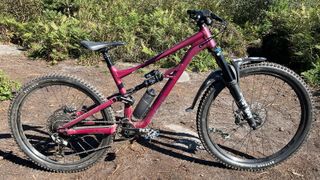
Specialized Status 140
The Specialized Status 140 proves you don’t need to spend a fortune and have more than six inches of travel to have an absolute blast.
The attack-focused geometry is designed to come in super hard. With the front wheel way out front and the back end tucked as far underneath you as possible, the basic handling dynamic is as close to one of those kids' skid steer chopper trikes as you’ll get. While there’s no shortage of stability or ‘stick it into turns way harder than seems sane’ confidence at the front, the super-short back end also helps you get the nose off the deck surprisingly easily.
The squat back end, with chunky double-sided pivots is properly stiff too, so it’s really easy to exaggerate the natural difference in turning circles and scrub rates of the front and rear wheels and kick or hip it off line like a hero. Even the RX Trail Tune on the shock is pretty tight, so you’re getting more mid-travel support to shove through berms on than typically comfort-focused Specialized FSR bikes. The short stroke fork does really well most of the time too, although more aggressive riders or slam landers will probably want to clip a couple more volume spacers under the air spring top cap to create a more progressive stroke.
It certainly doesn’t smooth out or roll through jank as well as a twin 29er like the Stumpjumper Evo. And, while the steep 76-degree seat angle helps get weight forward over the bars on climbs, the front still wanders all over the place on steep sections and the short back end doesn’t grip as well either. But overall our tester, Guy Kesteven, reported that it is, "one of the most naturally playful, anarchically agile and responsive trail/park bikes I’ve ridden at any price point. If the trails are tight and/or steep with gaps and pops rather than relentless root and rock mess, it’s seriously fast too. Everything from parts pick to stealth aesthetics feels spot on for purpose."
Find out more in our full Specialized Status 140 review .

Norco Optic C2
The Norco Optic C2 is well established as a great setup for good time riding so it’s no surprise that this bike feels sorted as soon as you grab hold of the grips. What stood out when we test-rode it is the way the Optic feels absolutely spot-on from geometry to shock tune.
As soon as we started riding, the Optic began offering rich communication between bike and rider. Norco has bumped up the high-speed compression and given the bike plenty of low-speed compression progression which gobbles up stutter bumps, roots rocks, and debris whilst race inspired shock tune will reward warp speed.
Beyond the excellent geometry and chassis dynamics, the component spec is superbly pitched to flatter the feel and capability. It’s practical, well priced and even the cheaper bike still packs all the play essentials into the package if your working with a tighter budget.
Mick Kirkman summed up the latest Optic C2 in his review. "With sublime rear suspension, the Optic is still one of the best downcountry bikes around. Less carbon parts for more dosh and a swap from sorted Schwalbe to vague Vittoria tires mean 2023’s kit list isn’t as good value as previously, but the Optic C2’s spirit still shines through."
Get full details of the Norco Optic C2 in our review.
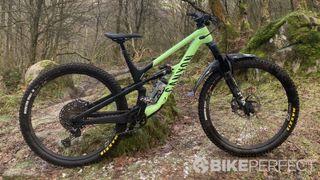
Canyon Spectral 29 CF8
Canyon's Spectral is a trail bike doing its best enduro impersonation and can continually step up to the job in hand the harder you push. This is down to the properly radical geometry which can teach any trail that normally terrified us a lesson in Canyon domination.
The offset of the bulky trail build means climbing isn't as easily earned as other trail bikes. That said if you're faced with a steep and technical crux section, the Spectral has superb traction and control that will leave sharper-feeling bikes struggling.
Once pointed down the Spectral can transition from a smooth, calm, and collected cruiser to a controlled and precise technical downhill weapon. With a characteristic that becomes more alive the harder you ride, it encourages you to seek out as much fun on the trail as possible.
Guy noted in his review that "the core of the bike is an impeccably balanced, firmly supportive, and accurate tracking technical trail and DH weapon. One that increasingly comes to life, popping, drifting, sending, and playing the harder you push it" and was so impressed he awarded the Canyon Spectral 29 CF8.0 a five-star review.

YT Jeffsy Uncaged 6
Direct sales brand, YT Industries, is much better known for its gravity bikes, specifically the YT Capra which is a common sight at enduro trail spots. The Jeffsy is one step below the Capra in the lineup with 10mm less suspension.
With 150mm of travel, the Jeffsy still ripped on the downhills during our testing and is more than capable of dabbling with everything from flowing singletracks to enduro trails. The geometry isn't as radical as you would expect from a brand like YT but we found that further helped with the Jeffsy's versatility.
Unsurprisingly, bikes this good are hard to get a hold of and with YT's stock getting snapped up quickly, bikes are frequently changing spec and out of stock.
When Rich Owen reviewed the Jeffsy he found "the ultra-responsive nature of the Uncaged 6 is hard to ignore. Everywhere I rode, the bike felt as if it was champing at the bit to go faster and hit the trails harder." For more info, check out our full review of the YT Jeffsy Uncaged 6 model.

Merida One-Forty 6000
Our techical editor, Guy, seriously rates this shorter travel 140mm travel trail bike that's already picked up a bunch of awards from other testers in the industry too. He's also rave reviewed Merida’s longer travel, higher cost One-Sixty 8000 and reckons it's one of the best enduro mountain bikes available.
Whatever size you opt for (XShort, Short, Mid, Long or XLong), they're all extremely roomy for their size with our Mid test bike measuring 480mm. That gives you plenty of room to maneuver and helps give a planted feel on the trail.
The 150mm Marzocchi Bomber Z1 fork gives a supple up front end, but in its default trim, it ramps up at the end of the stroke in a very similar way to the 143mm travel RockShox Deluxe Select+ at the rear, so any ugly landings are tidied up neatly once the shock's damper is dialed in. Flex seat stays, rather than pivots, add rear end extra flex too.
A super steep 80 degree seat angle and high level of traction from a naturally ground tracking rear end combines with a mid length stem and 65 degree head angle combo stops the bike from feeling too floppy when you’re winching the bike upwards. Add an efficient, seated pedaling feel, and you can climb up ridiculously steep, technical upslopes when you’d be walking or wanting an uplift on a lot of bikes. The only big drawback is the One-Forty's weight, which comes in at around 500g more than comparative rivals.
In his full Merida One-Forty 6000 review , Guy summed up the bike as one that "packages radical, hard riding geometry, smooth suspension plus wheel and travel change potential and a lot of neat features with super solid, good value kit. It’s on the hefty side though and the seat angle might not agree with everyone".

Mondraker Raze Carbon RR
Mondraker’s Raze is a lightweight mid-travel trail steed with a 150mm travel fork, 130mm shock, and Mondraker’s sleek aesthetic. The RR version gets full Fox Factory suspension monitored by its unique MIND telemetry system .
With a lightweight frame, a slightly compliant, conforming – rather than rigidly harsh – feel and the Raze Carbon RR feels inspiringly alive and responsive on the trail, never rabid or rowdy.
The MIND system gathers suspension and ride data and sends it to a smartphone app. This allows you to study how your suspension performed over a ride and tune it accordingly. You also get detailed telemetry on your performance which you can properly geek out on – if that's your thing.
In his review, Guy remarked, "Despite so many bikes following much of Mondraker's pioneering geometry lead, it has managed to keep its signature ride character deliciously distinctive. The light, lithe, perfectly imbalanced suspension of the Raze RR makes it a proper ‘chef’s special’ in terms of accentuating that agility and inherent ‘skill gifting’ to the maximum." For more info on this tech-packed bike, check out our full Mondraker Raze Carbon RR review .
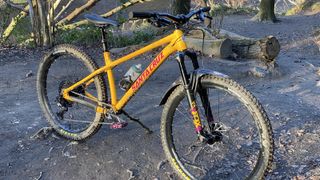
Santa Cruz Chameleon
A hardtail in best trail bike? Surely some mistake, but no. The Santa Cruz Chameleon is here very much on merit, as this eighth edition of Santa Cruz's trail-friendly hardtail is the most versatile, confident and flat-out-fun incarnation yet. It's also the most engaging and easiest-on-the-wallet entry into owning one of this premium brand's bikes.
Despite the finishing kit being a tad below par to that found on comparably priced bikes, the forgiving yet massively capable ride is so much fun that it won't ever cross your mind.
It can run both MX (mullet) or full 29er configurations which we found gave it a delightful double personality. "In MX format it’s got proper pop, precision, and powerful responsiveness for attacking the most fun trails flat out or you can choose the 29er option for the smoothest ride and tap out the tempo as far into the hills as your curiosity takes you." For our full verdict, check out our Santa Cruz Chameleon review .
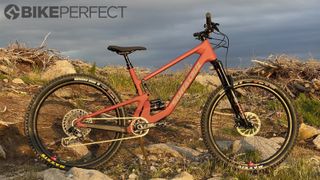
Santa Cruz 5010 CC X01 RSV
If you are looking for the ultimate fun-loving trail bike, it's hard to look past the Santa Cruz 5010. It's now running a mixed wheel combo (29 up front and 27.5 rear), rather than a straight 29er, which gives it a more playful and agile ride quality. If Strava segments are the goal of a trail ride then this is probably not the bike for you, however, if slashing corners and throwing shapes over jumps for insta-bangers is your thing then no other bike is going to come close.
However, it would be a disservice to say that the 5010 is slow. The Virtual Pivot Point (VPP) is dialed to efficiently deal with chaotic trails and on twisty tight tracks, the 5010 carries excellent speed due to its explosive cornering speed. You might need to work it a little harder on the way up, however, it's all worth it when gravity is on your side.
Mixed wheels might not suit everyone but as Guy points out, "if you’re the kind of rider who hunts for every turn to hook, loamy corner to explode sideways out of or slight lip to hip then the 5010 is an absolute riot. The fact it’s more stable and sucks up way more trouble fires you along the trail with more flow than before. It hasn't lost its killer kick and precision agility meaning you’ve got even more speed to play with, too." Check out our full review of the Santa Cruz 5010 CC X01 RSV to find out more about this mixed-wheeled shredder.
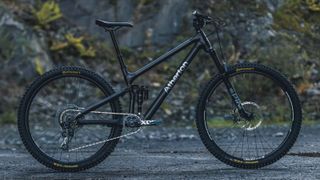
Atherton Bikes Trail AM.130
The Atherton's have evolved from a successful trio of siblings dominating World Cup downhill racing to a factory race team and innovative frame manufacturer. Atherton Bikes started with AM.200 downhill bike before extending the range with the AM.150 enduro bike and AM.130 trail bike.
All the bikes share the same carbon tubing and titanium lug manufacturing process and Dave Weagal designed DW6 suspension system that's used on the downhill bikes. Not only does that mean supple suspension performance but also a chassis strong enough to tackle Bike Park use and downhill riding, plus the AM.130 is sold with a lifetime warranty.
One of the big advantages of Atherton Bikes' manufacturing is that they are able to offer the AM.130 in 22 different sizes – which is far more than we see from any other brand. These sizes feature reach numbers between 410mm and 530mm in increments of 10mm. On top of that, all but the four smallest frame sizes are available with two different stack heights.
The unique construction method is sure to turn heads as well so if you're looking for a boutique trail bike that will stand out on the trails, then the Atherton Bikes AM.130 is an excellent choice.
For riders needing a little more capability, Atherton Bikes also offers an AM.130.X which gets a 150mm fork and a 0.5 degree slacker head angle. For more details, see our news article on the Atherton AM.130 .
How to choose the best trail bike for you
What's the best trail bike geometry.
Mountain bikes have been getting longer and lower as time has progressed. With wheel and suspension technology continually improving and brands embracing new fork offsets, trail bikes are becoming ever more capable.
Expect to see head angles between 64- and 66-degrees and seat angles between 74- and 75-degrees. With such a range of geometry figures, one trail bike could ride very differently from another, so if you are unsure what would suit you, many shops or retailers offer test rides or demo days so that you can try before you buy.
How much suspension travel should a trail bike have?
Only a few years ago, travel was a bike-defining characteristic, but that's no longer the case. We're seeing cross-country bikes with over 100mm of travel, trail bikes pushing up against 160mm of squish, and enduro bikes that bottom out at 150mm.
Trail bikes can range from 130mm of travel all the way up to about 160mm, and quite often we see forks that are about 10mm longer than rear shocks. Added travel at the front gives a bike a bit more composure on the downhills, while a shorter stroke at the rear makes it easier for designers to keep the chainstays compact leading to a lively feel on the trail.
While hardtail trail bikes are becoming less common, there are still a few around. The simplicity of the frame keeps the price down, and expect to find a 130-150mm fork and 29-inch or 27.5+ wheels and tires. If you are interested in that option, check out our best hardtail mountain bike guide.
Should I got for 29 or 27.5-inch wheels?
Over the years, the wheel size debate has been hotly contested. Trail bikes take advantage of both wheel sizes, and historically if you wanted an agile and maneuverable ride, 27.5 was your ticket, while if you were looking for rollover and speed, you'd want a 29er. However, as things have progressed, brands seem to be embracing the larger wheel size.
Because a 27.5-inch wheel with a 2.8-inch tire is roughly the same diameter as a 29er with 2.3-inch rubber, quite a lot of frames designed for bigger wheels will be compatible with both.
And if you want the best of both worlds, lots of bikes are available as a mixed-wheel mullet option, with a 29in upfront and a 27.5in wheel on the rear.
Should a trail mountain bike have an alloy or carbon frame?
Alloy frames are cheaper to produce, so it's no surprise to find them at the lower end of the pricing spectrum, while carbon dominates the upper end. There are great bikes in both materials, and ultimately your budget will determine what your new bike is made from. Some brands offer an alloy version of a frame specced with top-end components for a fraction of the cost of the carbon frame with the same build. If you are planning on upgrading parts over time go for the carbon version, if you are looking for the best performance-to-cost ratio then an alloy frame is probably the way to go.
What components should I look for?
For the most part, if you are choosing an XC bike, you will choose lightweight XC parts, and if you are going enduro, you will go full enduro. Trail bikes are a little different and really blur the lines between disciplines. Much of the component choice will be dependent on your local trails and riding style.
If you're looking to try out the odd bit of enduro riding, there is no harm in beefing up components like wheels, tires, or brakes to handle the extra stresses. However, if your trails are tamer or if cruising and flow are more your style, choosing lighter-weight parts would be a good way to go.
How we test trail bikes
Given that most trail bikes are designed for a fairly wide range of conditions that is exactly what we test them in – everything from fun trail center loops to gnarly, natural off-piste descents and everything in between. We also like to push the bikes beyond their designed use to see how they perform – as that is what you may end up doing out in the real world. While this is somewhat dependant on the season, we also aim to ride the bikes as many different riding conditions as possible to see how they perform in sucky mud and over slippery roots as well as on dusty, fast running hardpack. This also helps to give us an understanding of how the bikes will stand up to hard use and if it will still function if parts of it are clogged up with mud or affected by other trail debris.
Meet the testers
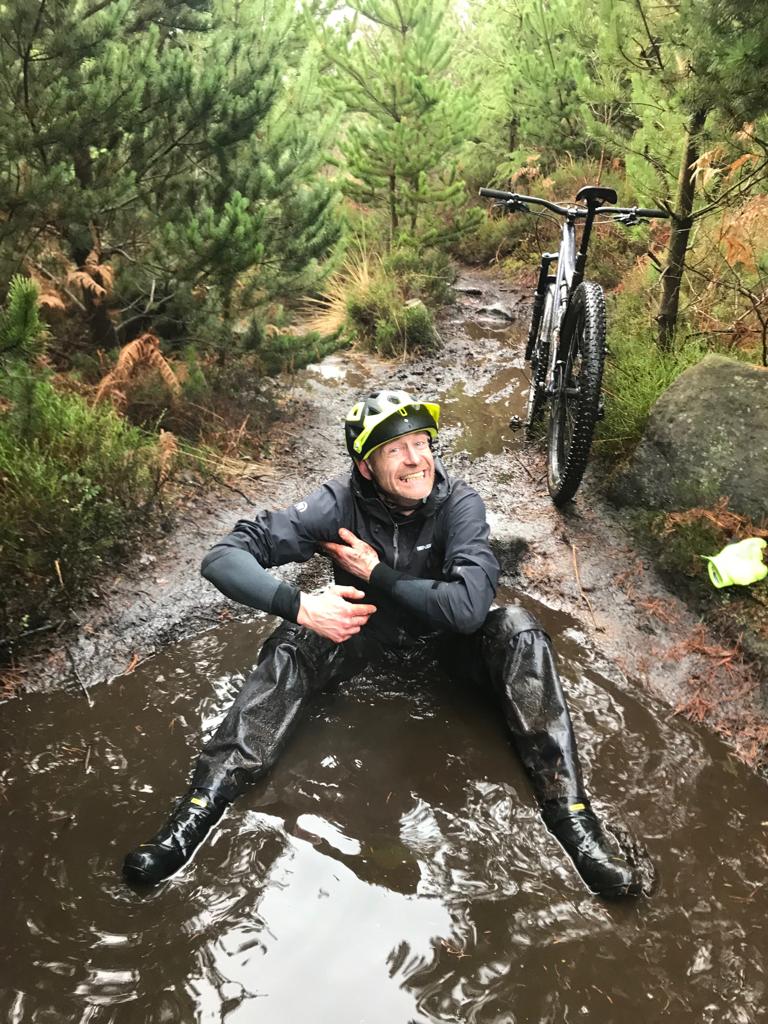
Guy's been testing and writing about mountain bikes since the 90s, he’s written several million words about several thousand test bikes and a ridiculous amount of riding gear. We are willing to bet that there aren't many trail bikes Guy hasn't ridden over the last couple of decades.

Rich has been riding mountain bikes since the early nineties and professionally testing bikes and kit for over a decade. While he has ridden mountain bikes of every kind, Rich is definitely a trail bike rider at heart and loves finding flow on more technical lines.
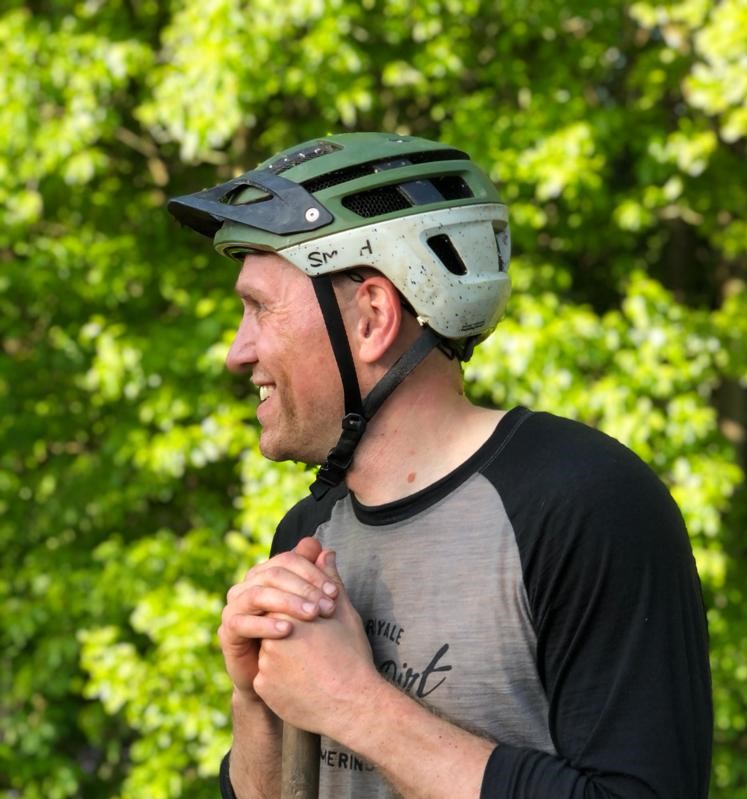
An ex-elite downhill racer, Mick's been mucking about and occasionally racing mountain bikes for over twenty years. Nowadays, he's mostly riding enduro-style terrain on conventional and electric bikes.

Rich has been riding mountain bikes for over 30 years and mostly likes hitting flowy yet technical trails that point downhill. A jack of many trades, he has competed in cross-country, enduro and long distance MTB races. A resident of North Devon, Rich can mostly be found pedaling furiously around his local trails, or slightly further afield in the Quantocks, the Mendips or Exmoor.
Current rides: Merida One-Forty 6000, Banshee Paradox
Height : 175cm
Weight : 68kg
- Guy Kesteven Technical-Editor-at-Large
- Mick Kirkman Freelance writer
- Colin Levitch Freelance writer
Best mountain bike clipless pedals 2024 – the top-rated clipless MTB pedals for XC, trail and gravity riding
Best MTB saddles for comfort 2024 – 6 top-rated butt-pleasing perches for mountain biking and off-road cycling
Is Rotor's Kapic crankset and oval Q Ring setup pedaling perfection, or did it leave me riding all out of shape?
Most Popular
- MAGAZINE OFFERS
- BIKE INSURANCE
- Best Products
- Maintenance
- Accessories
- Long-Term Reviews
- BikeRadar Podcast
- First Look Friday
- Bike of the Week
- Tech Features
- Routes and Rides
- Bike Galleries
- BikeRadar Bargains
- Buyer's Guides
- Fitness & Training
- Sizing & Fit
- Mountain Biking UK
- Cycling Plus
Best trail mountain bikes 2024 | 26 of the best trail MTBs and buyer's guide
The top trail bikes as rated by our expert reviewers, plus our buyer's guide for everything you need to know
Steve Behr / Our Media
Stan Portus
The best trail bikes hit the sweet spot between rowdy enduro bikes and svelte cross-country bikes, delivering performance that's equal parts fun and super-capable.
This has made trail bikes an incredibly popular category among the best mountain bikes in recent years. They give you a bit of everything, and open up the widest range of trails and riding when compared to other types of mountain bike.
The flipside is that choosing the best trail bike for you can be quite a bewildering prospect – there are simply so many options on the market.
Fortunately, you've come to the right place because our expert mountain bike testers have spent years riding and reviewing dozens of trail bikes. This list of the best trail bikes in 2024 will help you find the perfect machine for you.
We've also put together a buyer's guide to trail bikes at the end of this list that explains everything you need to know about this type of mountain bike, from what sort of terrain they are good for to the size of disc brake rotors – we've covered it all!
Best trail mountain bikes in 2024
Atherton am.130.1.

- £7,800 / $7,735 / €7,345 as tested
- Pros: Impressive suspension; agile and composed ride feel; head-turner
- Cons: Pricey; not the latest spec for the price
Atherton's AM.130.1 is made using an additive construction technique that sees carbon tubes connected with 3D-printed titanium lugs, enabling the brand to offer the bike in 22 frame sizes.
A DW6 linkage gives the bike a good balance of sensitivity and support, with its small-bump compliance making trail imperfections disappear without losing response to direct inputs.
The bike comes with SRAM's X01 mechanical groupset, which is far away from the electronic groupsets usually found at this price point.
- Read our full Atherton AM.130.1 review
Boardman MTR 8.9
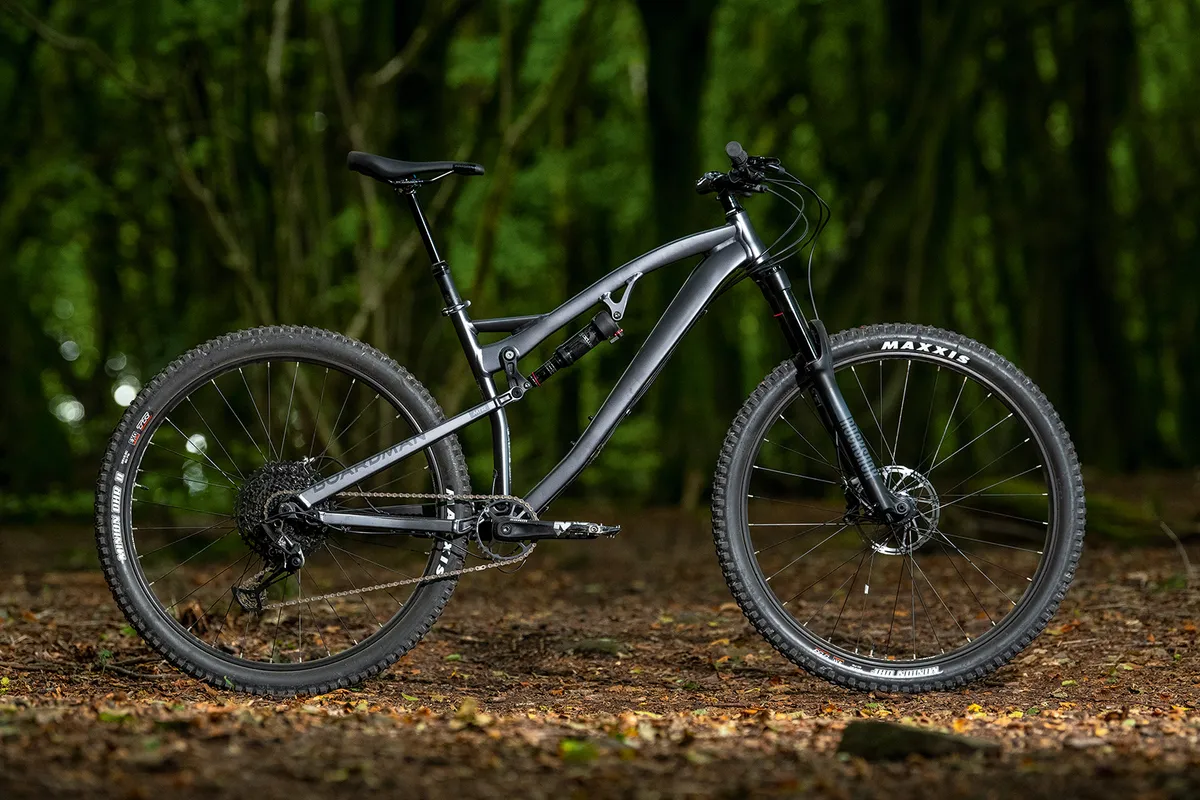
- £1,750 as tested
- Pros: Fantastic all-rounder
- Cons: Limits become clear on extreme terrain
The Boardman MTR 8.9 has the same geometry and suspension as the pricier MTR 9.0.
It has a well-chosen spec that balances cost, performance and strength, with a RockShox front fork, a SRAM NX Eagle drivetrain and Maxxis tyres.
The triple-butted alloy frame looks purposeful and has externally routed cables, making for easy maintenance. There is a bottle mount too, but we found there to be minimal clearance.
The geometry is modern but not extreme with a generous reach, leading to a comfortable ride.
You do have to shift your weight forward to keep front-wheel traction over tricky ascents, and downhill the bike is fairly noisy. So really this is a bike for speedy trail centre rides, rather than super-challenging terrain.
The bike is also ripe for upgrades and, with a few parts swapped out, we think it would be great as a lightweight, mile-munching machine.
- Read our full Boardman MTR 8.9 review
- Buy now from Halfords
Cannondale Habit 4
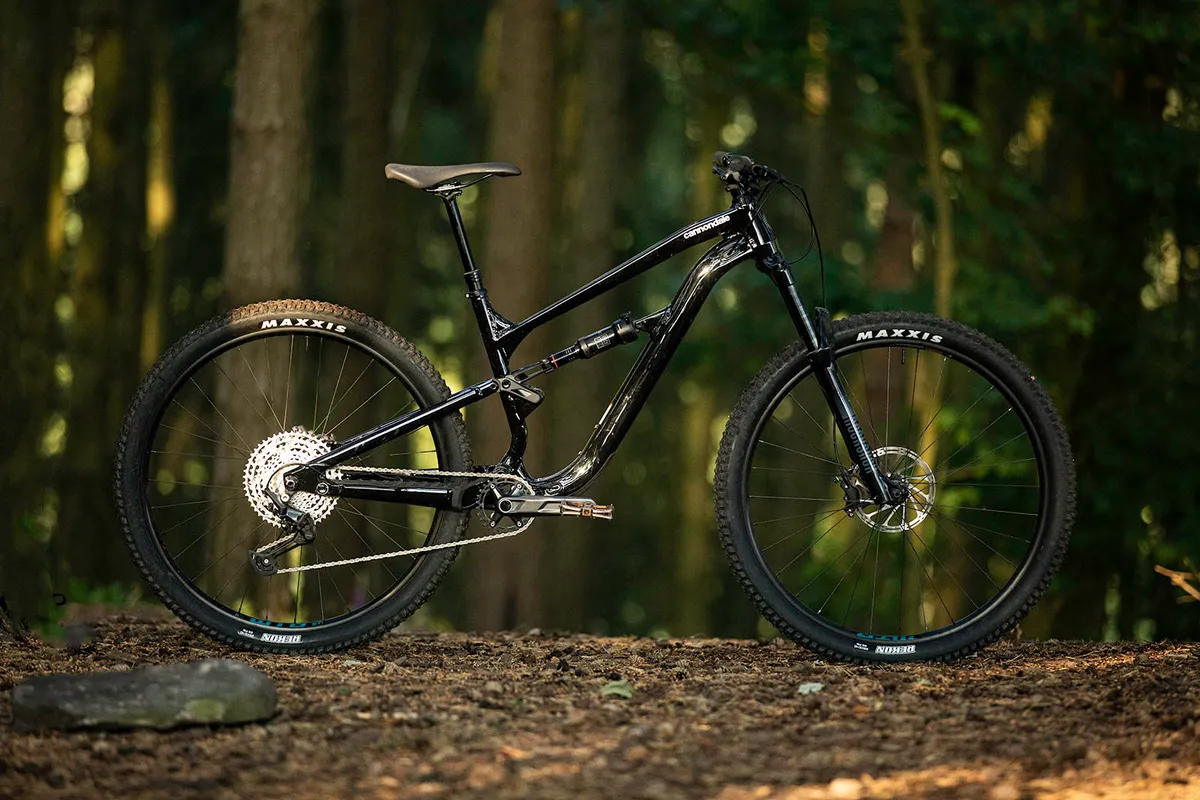
- £2,300 / $2,300 / €2,699 / AU$4,399 as tested
- Pros: Well-balanced; confidence-inspiring ride; fun and flicky
- Cons: Shimano Deore drivetrain can be a little clunky
The Habit 4 impressed us with its playful and balanced ride feel.
Its aluminium frame features size-specific geometry. Cannondale increases the chainstay length with the frame size making the Habit. The bike feels surefooted and quick to turn.
We found the RockShox Recon fork to bind on hard compressions, though this didn't take too much away from the performance of the bike.
A steep seat tube angle of 77.5 degrees makes winching up climbs comfortable, though the bike lacks some of the punchiness of other bikes on this list.
Canyon Neuron 5

- £1,849 / $2,099 / €1,899 / AU$2,949 as tested
- Pros: Fast rolling on mellow trails; composed ride feel; grippy in most conditions
- Cons: Suspension feels overworked on steeper trails
Canyon's Neuron covers ground fast, with supple suspension that provides good comfort while descending, although, it can feel a tad active on steeper, technical descents.
The bike has a nimble ride feel that helps it eat up trail centre singletrack with ease, with the Schwalbe tyre combo offering fast rolling speeds.
We found the RockShox Recon fork to be a little out of tune with the rear of the bike, and not providing the desired amount of support on steeper terrain.
- Read our full Canyon Neuron 5 review
Merida One-Forty 700
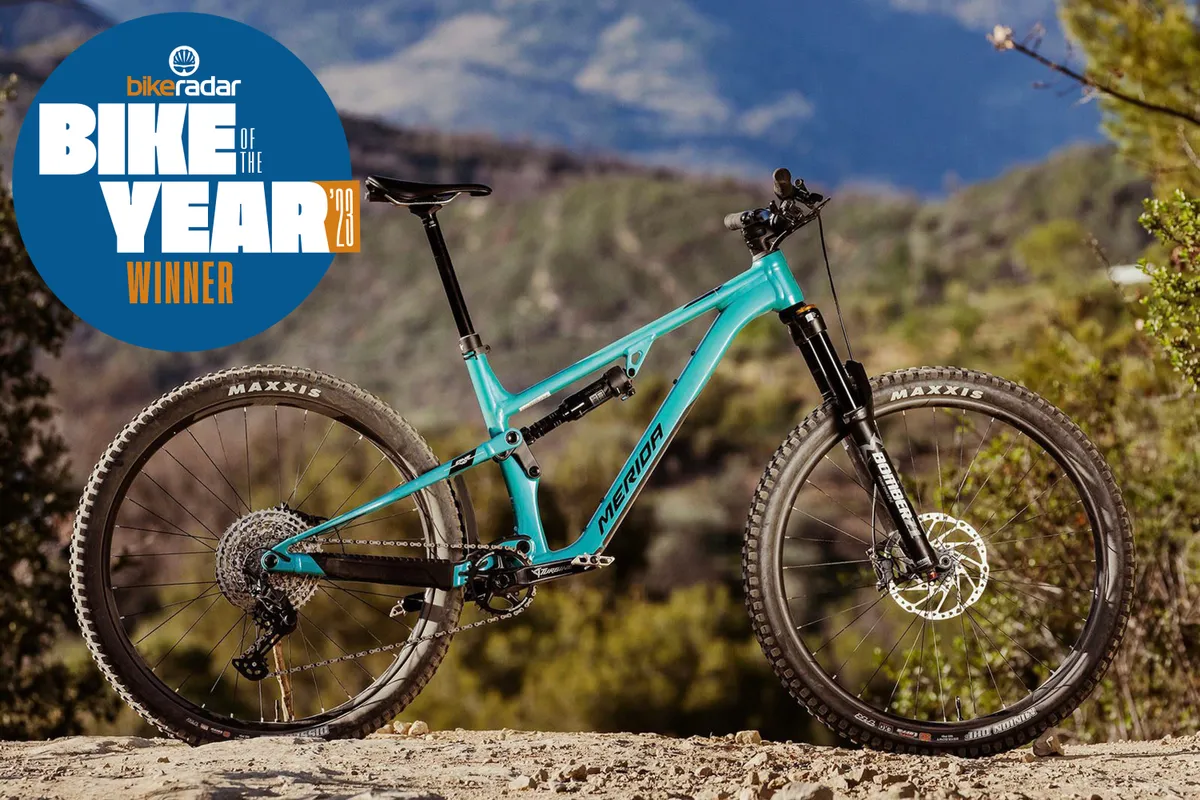
- £3,100 / €3,869 as tested
- Pros: Boundary-pushing geometry options; one of the best climbers out there
- Cons: Stem could be shorter; not the smoothest ride
The Merida One-Forty 700 impressed us in testing, winning our Trail Bike of the Year 2023 award.
The carbon fibre frame, which is shared with the longer-travel One-Sixty , uses flex stays in the rear linkage and provides 140mm of rear travel.
Merida has packed serious value for money into the bike, with a RockShox Deluxe Select rear shock and a 150mm Marzocchi Z1 fork.
On climbs, the bike has zero wallow and a perky attitude, making the uphills easier than on its contemporaries.
Downhill, the geometry is spot on with composed and accurate handling adding to the ride.
- Read our full Merida One-Forty 700 review
Norco Fluid FS C2
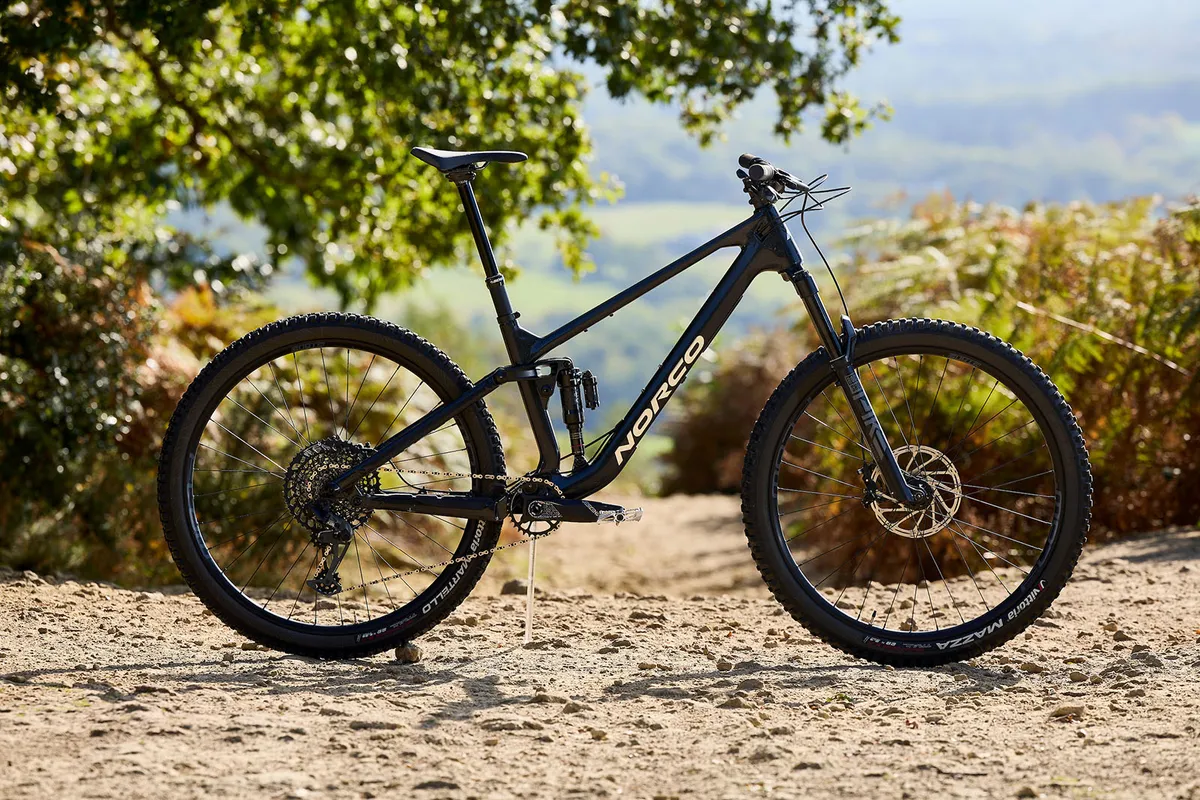
- £4,999 / $4,999 / €5,299 as tested
- Pros: Confidence-inspiring geometry; makes good use of suspension travel
- Cons: Brakes could be more powerful; tyres won't suit everyone
Norco's Fluid FS C2 has a playful agility on the trail that remains composed at high speeds.
With a 140mm RockShox Pike Select fork up front and a Super Deluxe Select controlling 130mm of rear-wheel travel, the Norco feels planted through rough terrain, balancing a poppy yet bump-gobbling ability.
We found the Fluid capable of all aspects of trail riding, but it was on the hills where it really impressed, with the bike eager to attack short, sharp climbs with grace.
Because it's able to carry a lot of speed down the trail, the SRAM G2 RS brakes feel a little under-gunned in some situations, with the bike deserving of more powerful brakes.
- Read our full Norco Fluid FS C2 review
Vitus Escarpe 29 CRS
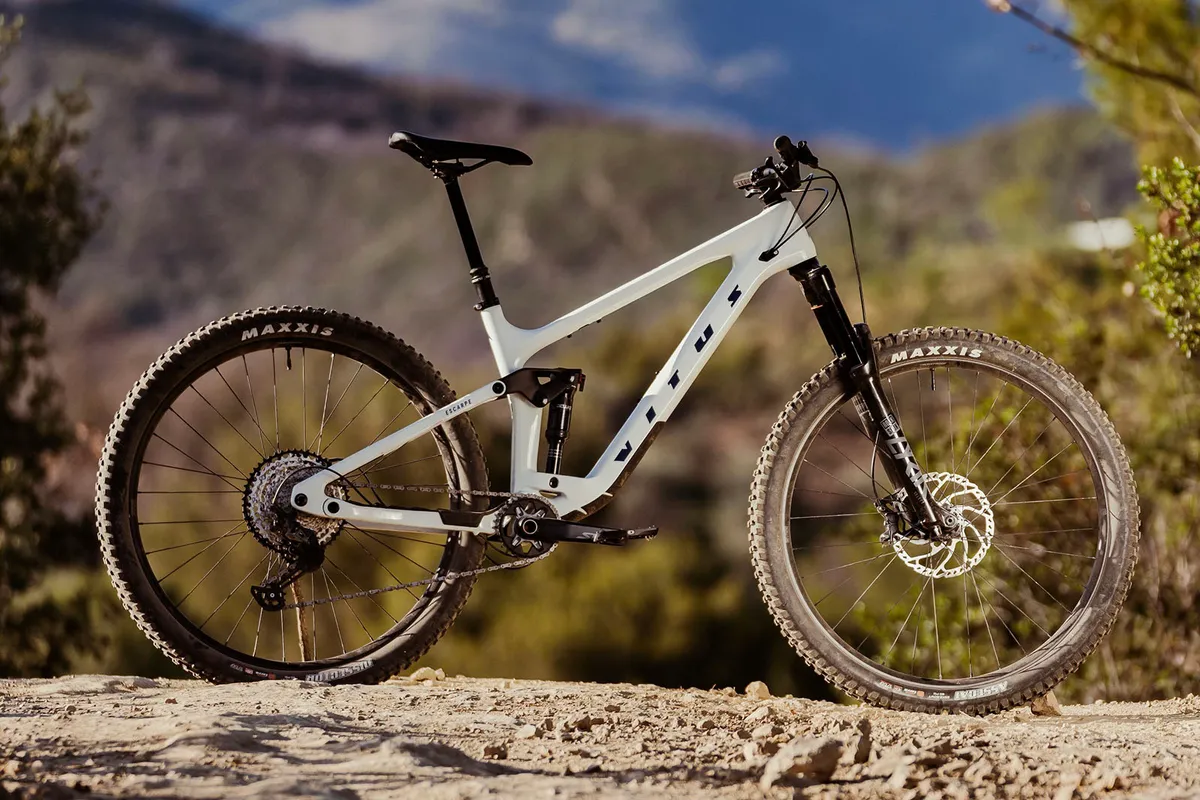
- £3,200 / $3,599 / €3,899 as tested
- Pros: Super-smooth and confident descending; stunning value for money
- Cons: Limited climbing performance
Vitus is becoming synonymous with value for money, with the Chain Reaction direct brand giving the Escarpe 29 CRS a similar treatment.
The full carbon fibre frame has 140mm of rear travel controlled by a RockShox Deluxe Select and the front end is supported by a 150mm RockShox Lyrik Select.
The Escarpe is more descent-focused compared to other trail bikes, with its climbing performance limited by pedal bob and increased sag on steeper pitches.
Downhill, the bike smooths terrain and offers a confidence-inspiring ride over a broad range of trails.
- Read our full Vitus Escarpe 29 CRS review
YT Jeffsy Core 1
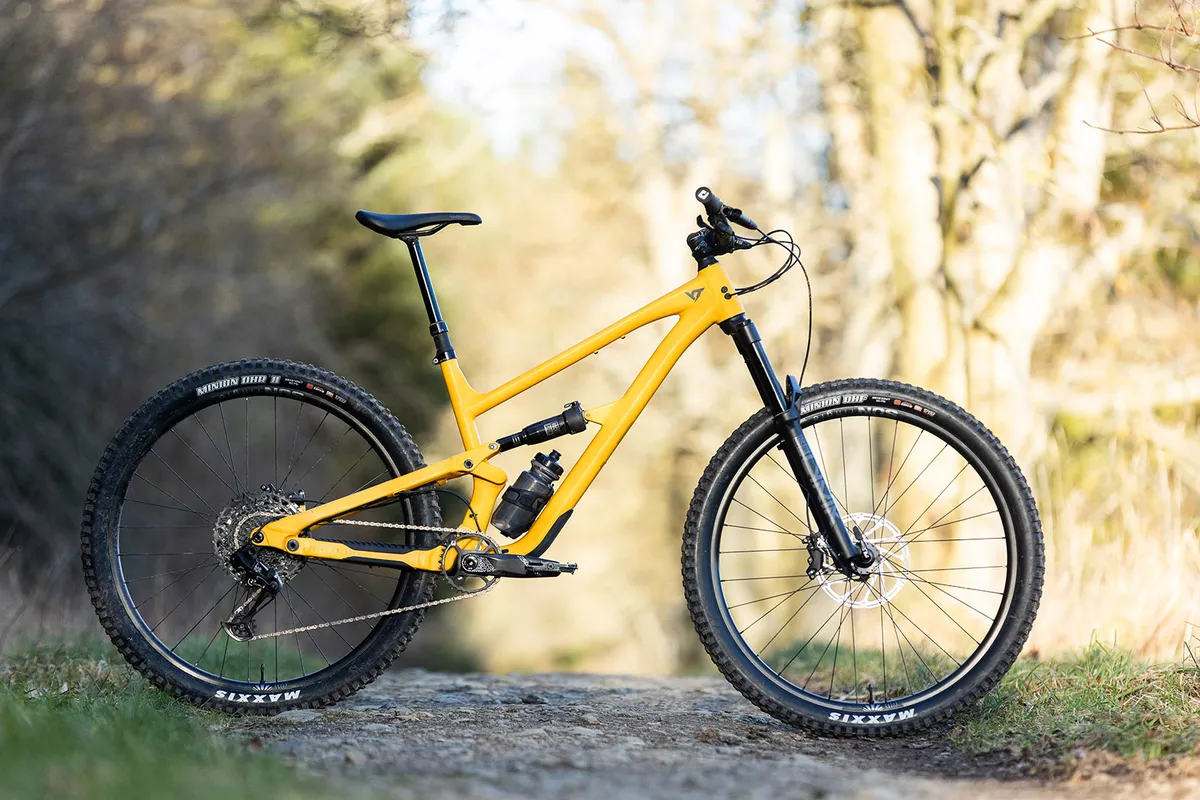
- £2,499 / $2,799 / €2,499 as tested
- Pros: Confidence-inspiring geometry; good spec for the money; fork performs well
- Cons: It's not the the lightest
YT's entry level to the Jeffsy range offers the value for money often associated with the German direct-to-customer brand.
The bike offers impressive capability, tackling enduro trails with ease while remaining playful on mellower trails.
A centred riding position gives you plenty of confidence to push the bike to the limit on the descents. A steep 77.9-degree seat angle puts your weight over the BB, helping on technical climbs.
It's not the lightest trail bike we've tested, but we feel this is less important with it sitting towards the more aggressive side of the segment.
- Read our full YT Jeffsy Core 1 review
Boardman MTR 9.0

- £2,000 as tested
- Pros: Rides with confidence and has excellent brakes; RockShox fork and rear shock
- Cons: Contact points detract from overall package
The MTR 9.0 is Boardman's flagship mountain bike, with an upgraded alloy frame, 150mm RockShox fork, a Deluxe Select rear shock and a groupset that is, by and large, comprised of Shimano SLX-level parts.
The bike is happiest heading downhill, where it feels planted, and the Shimano SLX four-piston brakes provide a whole load of stopping power.
The MTR climbs reasonably well. The relatively steep seat-tube angle helps you get your weight over the bottom bracket, and the wide-ranging 10-51 tooth cassettes help winch you up the toughest climbs.
The bike has a dropper post, which is great for such a gravity-focused bike, but the dropper lever is a bit small and not the easiest to use.
The bike rides with more confidence than you might expect and, apart from the dropper lever, there really isn't much to fault.
- Read our full Boardman MTR 9.0 review
- Buy now from Tredz
Boardman MTR 8.8
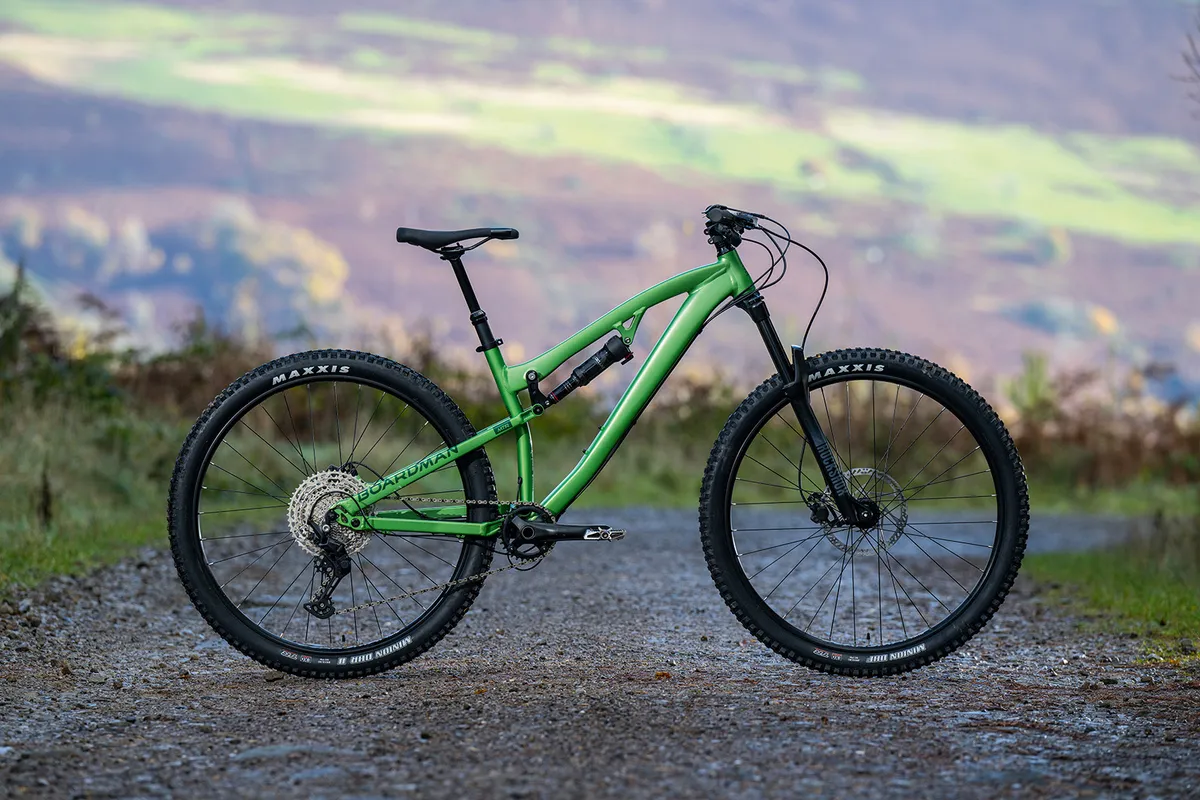
- £1,350 as tested
- Pros: Impressive spec for the price; good suspension feel
- Cons: underpowered brakes; dropper post length
Boardman's MTR 8.8 is built to be the ideal all-round UK trail bike. It's very capable when pointed down a trail, thanks in part to the 145mm of rear suspension controlled by a RockShox Deluxe Select , and 150mm RockShox Recon Silver RL fork.
Considering its suspension travel, it climbs very well, but it's the descents where the Boardman shines.
In its price range, there aren't many bikes that can provide the same levels of performance. However, a couple of spec changes, such as a longer dropper post and more powerful brakes, would make the riding experience even better.
- Read our full Boardman MTR 8.8 review
Canyon Spectral 125 CF 7

- £3,349 / $4,199 / €3,499 / AU$5,349 as tested
- Pros: Aggressive geometry and stiff, low-slung frame; great handling on really steep terrain
- Cons: Sluggish at slow speed on mellow terrain; thin tyres
A shorter-travel trail bike, the Spectral 125 mixes that with a 140mm-travel fork and a long reach geometry that's built for more aggressive riding. It's a different, all-carbon frame from the longer-travel Spectral bikes and saves 100g in weight.
The stiff, aggressive, low-slung frame is great for bikepark laps and climbs, but you need to increase the sag from the recommended values for the bike to handle rock gardens comfortably.
The bike navigates super-steep terrain admirably though, with the long frame helping to maintain stability. It pays to tinker with the Spectral 125's suspension settings and to ride hard to get the best out of the bike.
Want a spec upgrade? We've also tested the Canyon Spectral 125 CF8 .
- Read our full Canyon Spectral 125 CF 7 review
Carrera Titan X
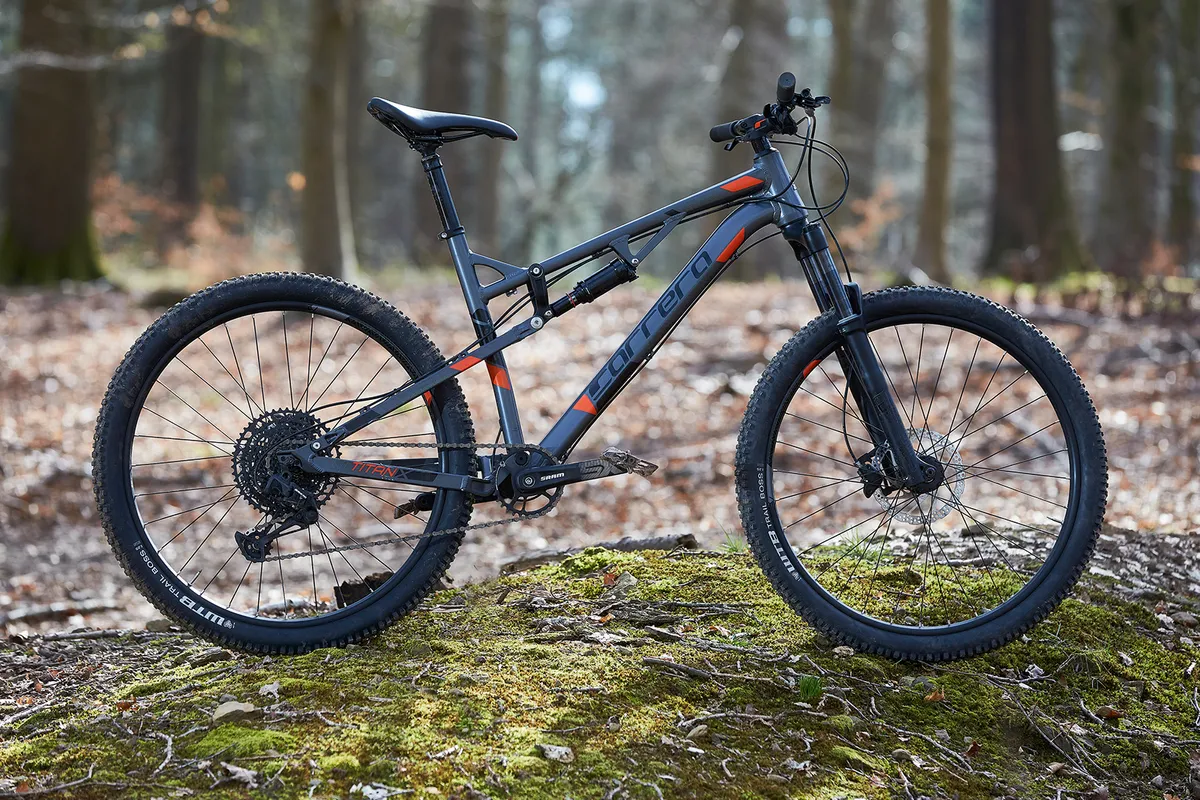
- £850 as tested
- Pros: Excellent spec for the price; a real advantage over hardtails at this price
- Cons: limited size range
Full-suspension bikes for under £1,000 are a rarity, and ones that are as well-specced as the Carrera Titan X are rarer still.
The kit on this bike is really impressive. It has SRAM SX 12-speed gearing with a 1x setup, a Trans-X dropper post and Shimano hydraulic brakes. In short, what you'd expect from a pricier bike.
When it comes to ride performance, the Titan X's suspension works surprisingly well, making this bike a good shout over a hardtail – which is normally the go-to option at this price point.
When climbing, the Titan X's frame is a little cramped due to its relatively old-school geometry, but it winches up hills better than you might expect.
The only real drawback to the Titan X is the limited sizing, and taller riders should stay clear. This is a real try-before-you-buy bike, but if it fits and you're on a budget, it's a compelling option.
- Read our full Carrera Titan X review
Cotic Jeht Silver Mullet
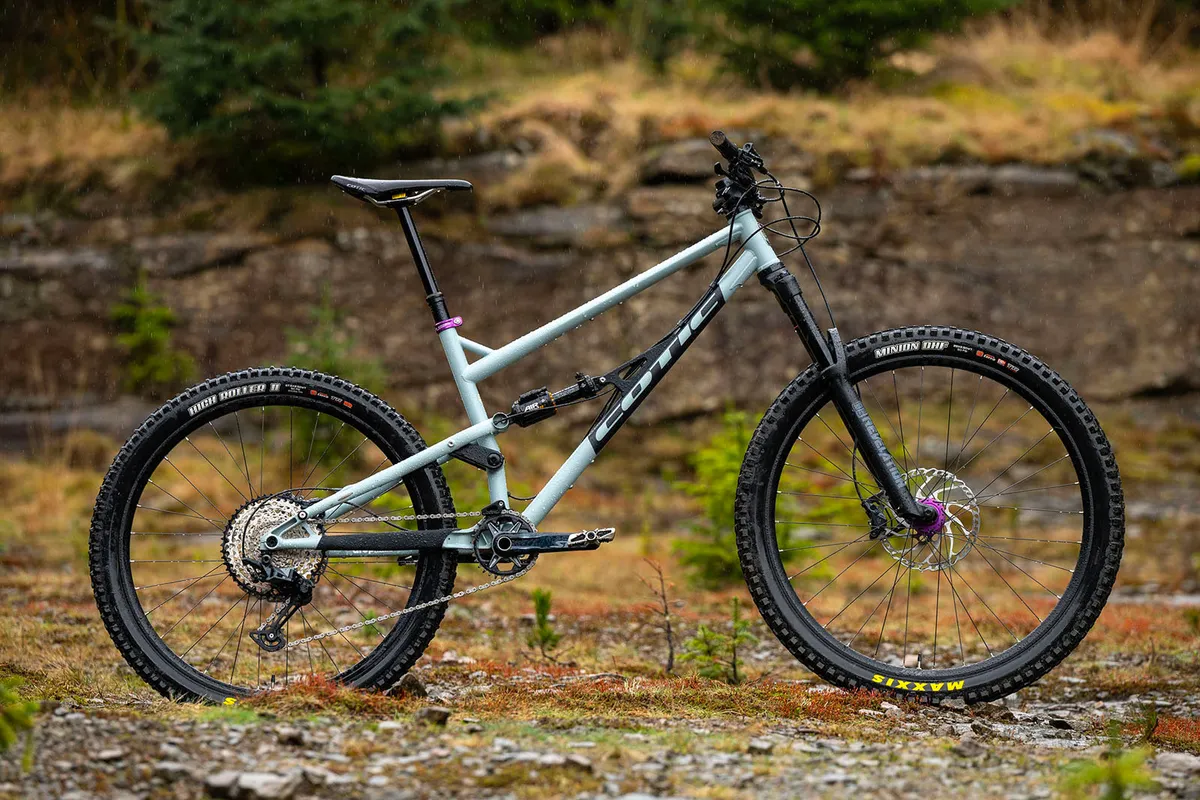
- £3,989 as tested
- Pros: Composed and confident; smooth feeling suspension
- Cons: Stiff suspension under braking; feels large
The Cotic Jeft is made from Reynolds 853 steel with a steel-alloy rear triangle that has 140mm of suspension travel.
Its long, low and slack geometry is on point and allows you to let the bike run through the techiest of sections while still feeling in control.
The Jeht is a fairly tall bike, and when braking the rear suspension isn't as good as some of the competition, especially those bikes using a four-bar design.
The spec can be matched to your pockets, with our test bike featuring an upgraded RockShox Revelation fork with a Charger 2.1 damper.
- Read our full Cotic Jeht Silver Mullet review
Focus JAM 8.9

- £4,799 / €4,699 / AU$6,999 as tested
- Pros: Impressive suspension maintains ground contact well; clever internal frame storage
- Cons: Hefty weight; complicated stem design
With 150mm of travel, the JAM 8 series bikes get a carbon front triangle with neat internal storage and share geometry with the alloy JAM 6 series. There's also tidy internal routing through the stem for the cables.
The new suspension design, with its flip chip, leads to a better-supported mid-stroke than Focus's older system, leading to a more playful ride and less chance of bottoming out. It also helps keep contact with the ground well at the rear on descents.
The mix of agile handling and stable suspension leads to an exciting ride, and it's easy to pick and change your line, although the Fox 36 Performance fork feels more limiting than the rear travel.
- Read our full Focus JAM 8.9 review
GT Sensor Carbon Pro LE
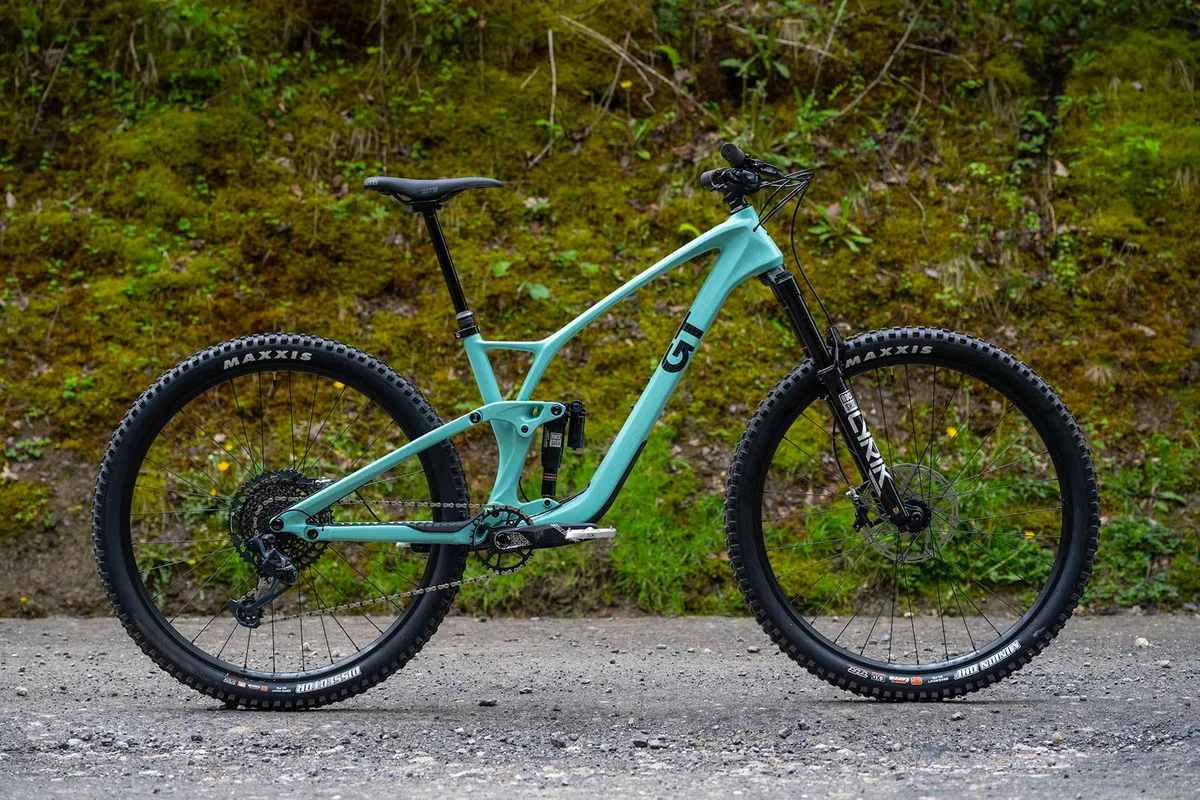
- £5,000 / $5,750 as tested
- Pros: Great for rowdy trail riding; RockShox suspension works very well; ideal for those looking for simplicity
- Cons: Freehub engagement is clunky; SRAM G2 RSC brakes struggle with power down steep trails
GT's Sensor Carbon Pro LE feels very capable on rougher trails considering its suspension travel, with the 150mm fork and 140mm rear-suspension travel combination providing a composed ride on gnarly trails.
The Sensor certainly prioritises downhill prowess, with the bike remaining poppy and responsive whatever the gradient.
The RockShox Lyrik Ultimate fork and Super Deluxe Ultimate shock provide composed damping, but SRAM's G2 RSC brakes are a little lacklustre when shedding speed.
- Read our full GT Sensor Carbon Pro LE review
Kona Honzo ESD
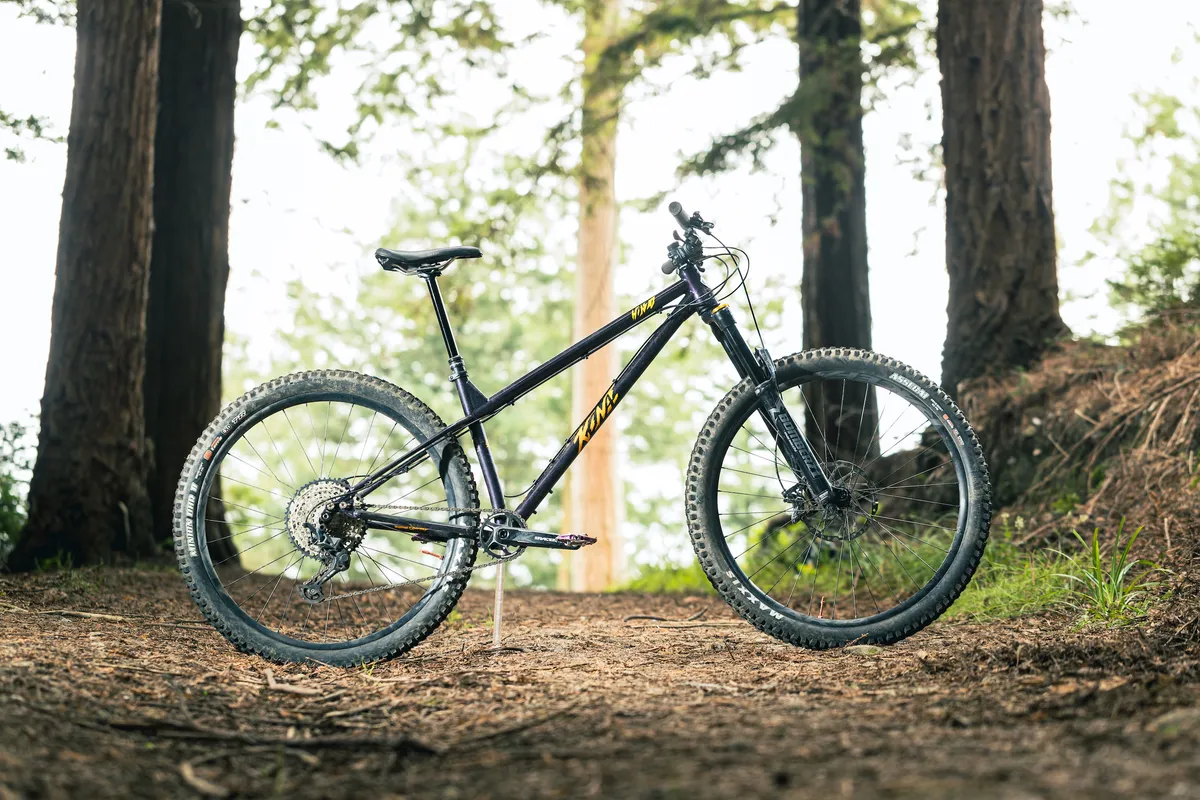
- £2,899 / $3,099 / €3,299 / AU$4,399 as tested
- Pros: Very smooth ride over the rough stuff; descends better than a hardtail should
- Cons: Not great value for money
It may be a hardtail, but the Kona Honzo is long and slack enough to handle the steepest descents, with a braced steel frame, 150mm-travel fork and plenty of room for aggressive rubber. Adjustable rear dropouts enable you to fine-tune your ride or go singlespeed.
There's bags of stability on steep descents and the bike is great at carving wide corners, but shorten the rear end and direction changes come really easily. You've got a 203mm rotor at the front and 180mm out back to help control your speed.
The Honzo's steep 77.5-degree seat tube helps with climbing and it's got plenty of room for the long-travel TransX dropper post.
We were impressed by the climbing performance, aided by a 30t chainring and a wide-range 10-51t cassette, while the bike's length means you can shift your weight around both up and downhill. It's a hardcore hardtail that shows you don't need suspension out back to have fun.
- Read our full Kona Honzo review
Marin Rift Zone XR 27.5

- £3,095 / $3,500 / €3,499 as tested
- Pros: Well-designed frame; excellent rear suspension
- Cons: Brakes lack bite; not the best climber
The Marin Rift Zone XR is built on the alloy Rift Zone frameset which provides top-notch rear suspension while prioritising front-end control.
The Fox Float X rear shock works well to support the rear end, giving the bike playfulness without sacrificing grip.
The bike's poppy character makes for an engaging ride, though the bike requires rider attention on gnarlier sections of trail.
A 'sit up and spin' attitude to climbing is provided by the upright and relaxed position, with the bike featuring more pedal bob than its competitors.
- Read our full Marin Rift Zone XR 27.5 review
Merida One-Forty 500
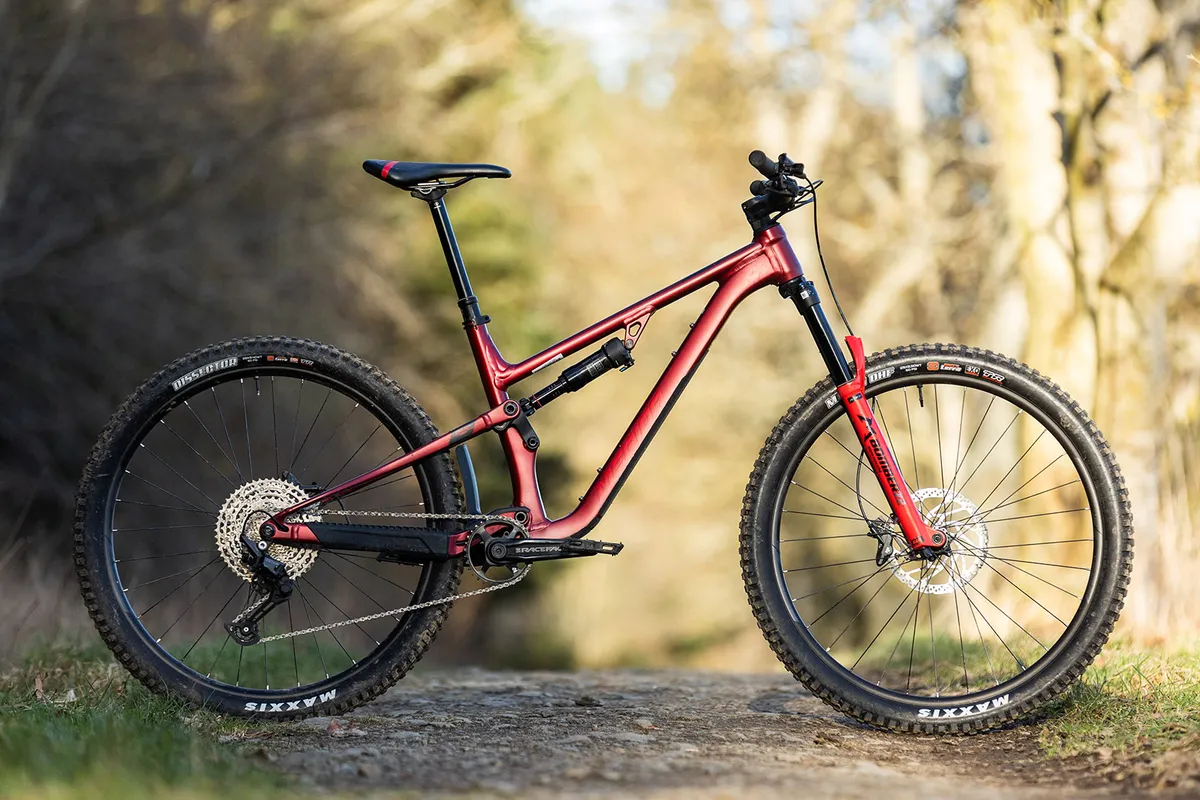
- £2,600 / €3,160 as tested
- Pros: Efficient pedalling; playful handling; good spec for the money
- Cons: Rear-end grip isn't the best in the wet; brake bite point can wander
The One-Forty 500 uses the same frame as the One-Forty 700 that we awarded Trail Bike of the Year in 2023.
At this lower price point, the bike remains an impressive performer with eager climbing characteristics and supportive suspension on the descents.
The bike offers an impressive spec for the money, though we did find the Shimano Deore four-piston disc brakes a little unpredictable, with a wandering bite point affecting the accuracy of our braking.
- Read our full Merida One Forty 500 review
Merida One-Twenty 700
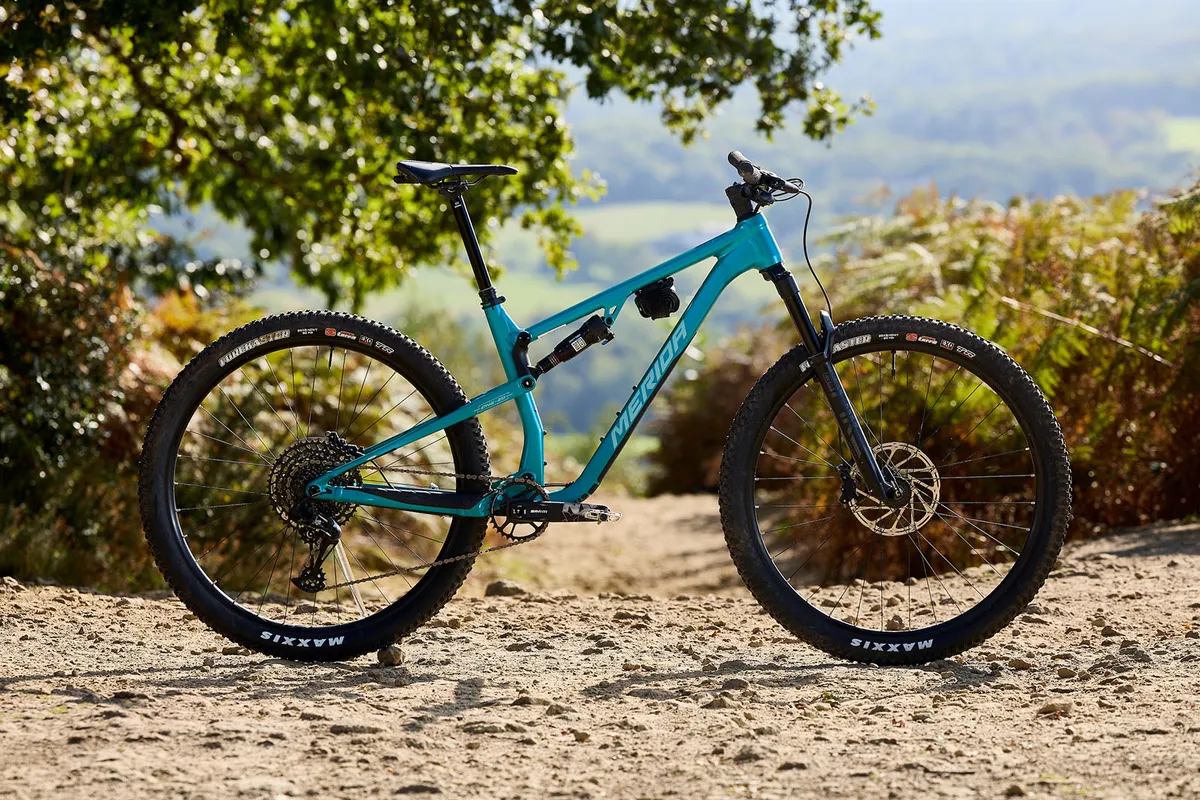
- £3,100 as tested
- Pros: Progressive suspension; confident handling; efficient pedalling
- Cons: Front end is quite harsh; brakes are average
Despite its name, the One-Twenty 700 has 130mm of suspension travel front and rear, which does a stellar job of climbing thanks to Merida's P-Flex flex-stay suspension linkage.
While the bike isn't the most composed on the downhills, the long and low geometry still eggs you on to push the brakes and tyres to their limits.
The RockShox Pike Select fork and a RockShox Deluxe Select shock work well to iron out the bumps, but the SRAM DB8 brakes feel a little underpowered when hitting the trail at full speed.
- Read our full Merida One-Twenty 700 review
Polygon Siskiu T7 29
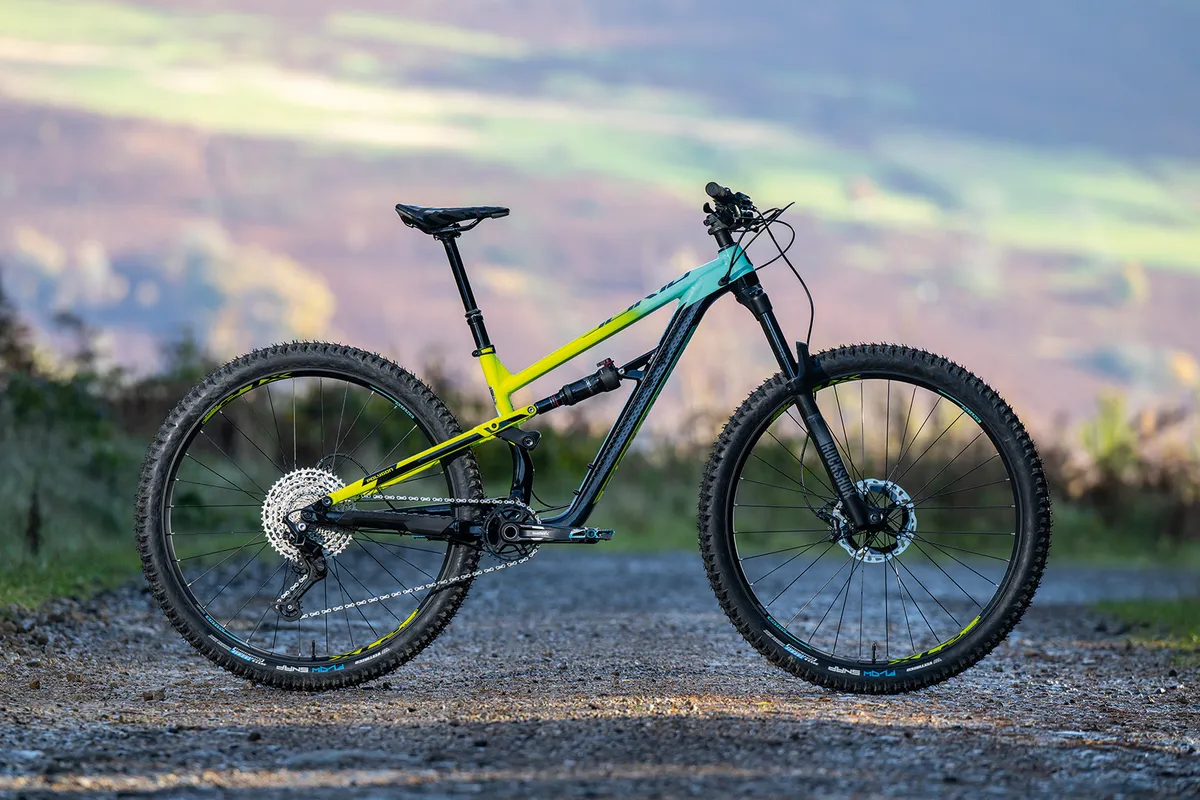
- £1,800 as tested
- Pros: Great trail geometry; impressive value for money
- Cons: Brakes are a weak point
The Polygon features modern trail geometry and decent components that make it very capable on the descents, with the 65.5-degree head angle giving confidence on even the steepest terrain.
A RockShox Deluxe Select controls 135mm of rear-suspension travel, while a 140mm RockShox Recon Silver RL fork supports the front. The bike comes with Shimano's Deore 1x12 drivetrain with Tektro's HD-M735 brakes.
Polygon's Siskiu will take all you can throw it, but is maybe not as responsive as bikes twice its price. If you are a GoOutdoors member, however, you can get the bike at the reduced price of £1,600.
- Read our full Polygon Siskiu T7 review
Santa Cruz 5010 CC X01 RSV
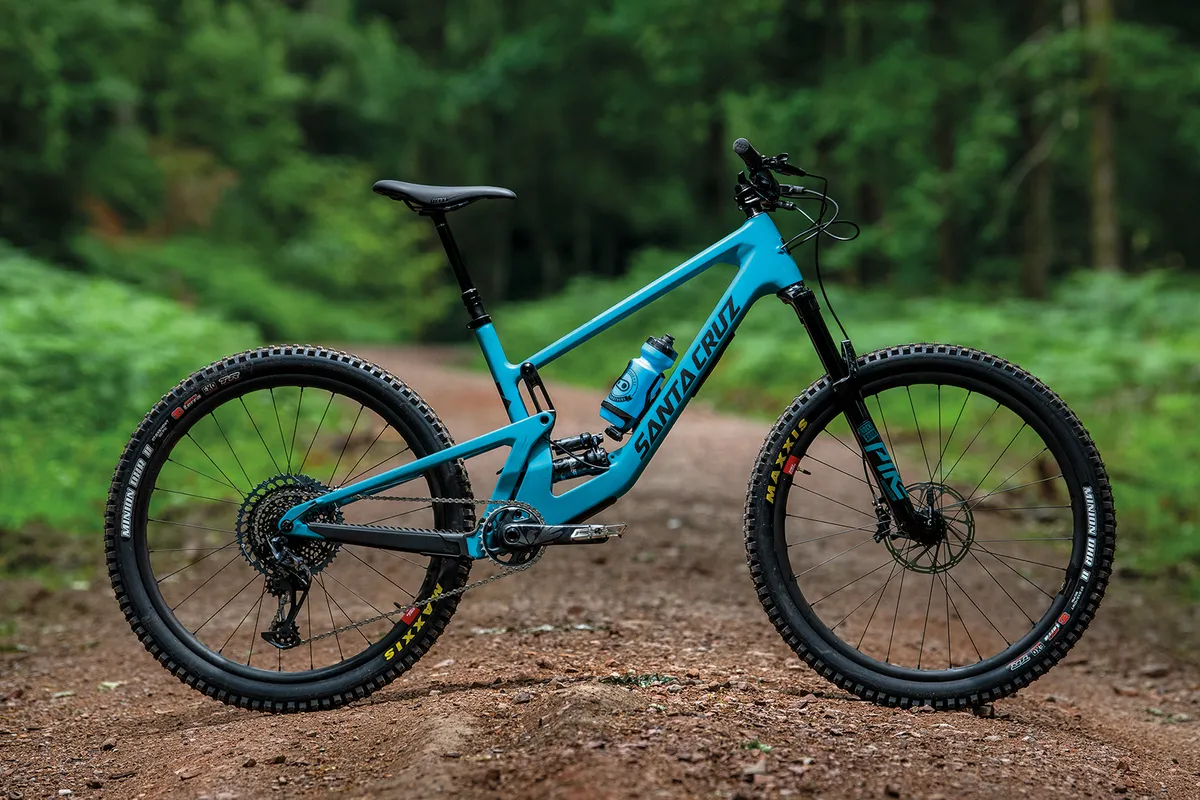
- £7,599 as tested
- Pros: Composed and fun; only 130mm of travel, but still capable
- Cons: Pricey build
The new Santa Cruz 5010 CC X01 RSV is the brand's top-flight version of its 5010. The bike has an updated geometry that sees it getting lower and longer, and it now has Santa Cruz's low-slung VPP (Virtual Pivot Point) design. It sticks to 650b wheels though and retains the fun factor of previous models.
The suspension comes in the form of RockShox' top-spec kit on the front and rear, providing 140mm/130mm of travel. Paired with the new geometry, this creates a ride that is capable and fast on descents, remaining composed but spurring you on, and is incredibly energetic on climbs when pushing power through the pedals. The handling is also razor-sharp.
Fittingly for this carbon fibre bike, and its significant price tag, the finishing kit is top-tier too, with SRAM drivetrain and brakes and Santa Cruz's own carbon Reserve rims built around DT Swiss hubs.
This all comes together to create a bike that is seriously fun to ride. It's not quite as playful as previous versions, but it is more capable and faster. And if the price is too steep, Santa Cruz offers the 5010 in less expensive builds.
- Read our full Santa Cruz 5010 CC X01 RSV review
Specialized Stumpjumper Comp
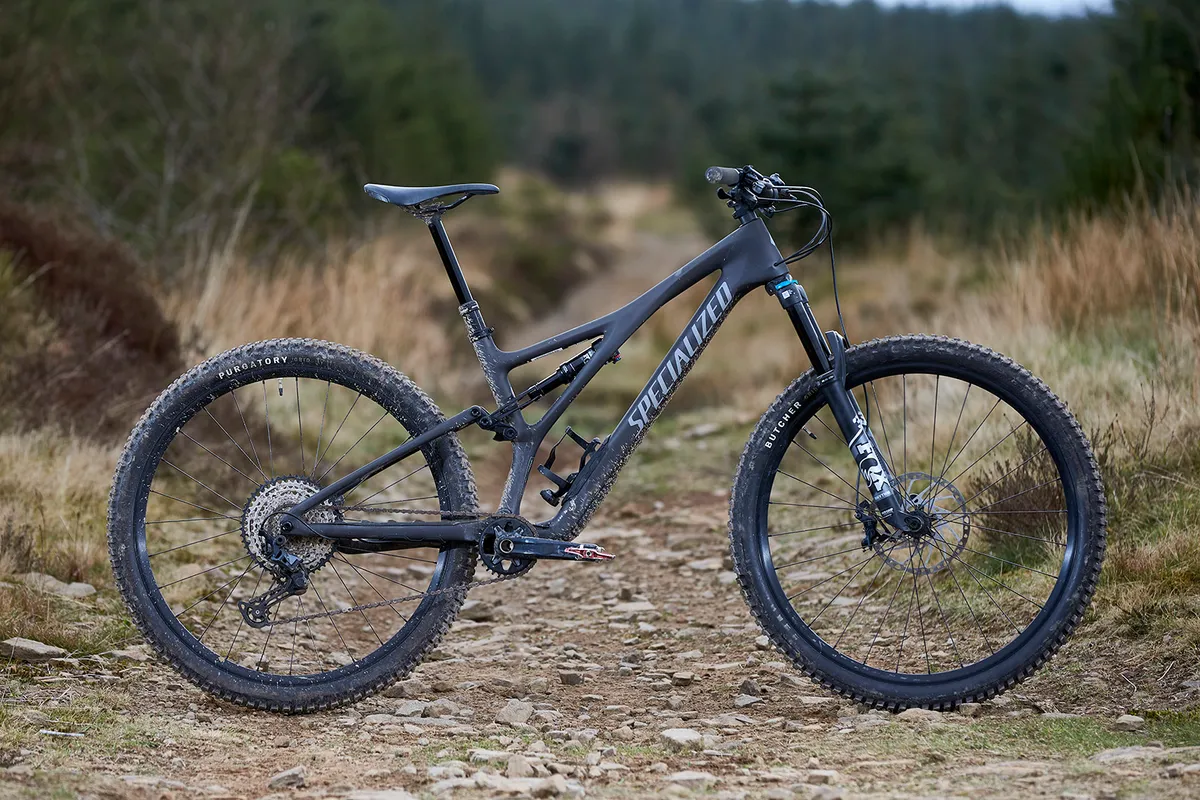
- £3,950 / $5,000 / €5,000 / AU$7,200 as tested
- Pros: Smooth suspension and great chassis; excellent rear-end grip
- Cons: Specialized's tyres; pricey for the build
It may be the cheapest carbon Stumpjumper, but the Comp spec still delivers impressive performance from its 130mm-travel and flip-chip tunable geometry – the EVO version gets a little more travel and more aggressive geometry.
Rear suspension is smooth and leads to great grip for the Specialized Purgatory tyre. The Stumpy handles well on slow, technical descents, aided by the Fox 34 fork, but there's some chassis squirm and an unsettled feel on more aggressively ridden terrain. We reckon it works best on day rides on singletrack or trail centre loops.
Spec-wise, the Comp has a Shimano SLX groupset, X-Fusion Manic dropper and Specialized wheels and tyres. SWAT Door storage lets you stash your tools under the bottle cage.
We've also ridden the 2021 spec Stumpjumper Expert .
- Read our full Specialized Stumpjumper Comp review
Trek Fuel EX 8 Gen 6
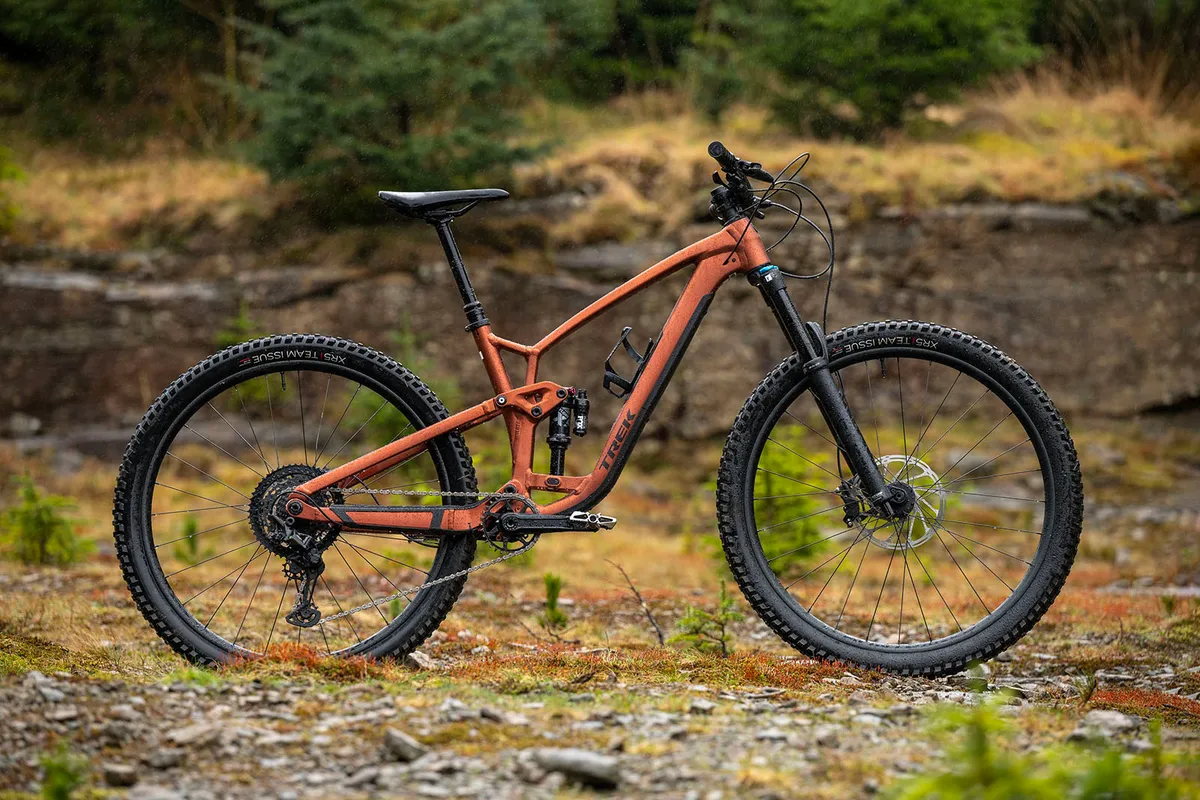
- £4,350 / $4,300 / €4,699 / AU$6,200 as tested
- Pros: Class-leading chassis; happy on any level of trail
- Cons: Harsh cockpit; poor brakes
The Trek Fuel EX 8 is on the aggressive end of the trail bike spectrum, with 140mm of rear suspension controlled by a Fox Performance Float X, paired with a 150mm Fox Rhythm 36 fork.
The frameset offers high levels of adjustability, with two flip chips that have high and low settings for slacker or steeper geometry.
While value for money is questionable, the spec of the bike is considered, with only the SRAM DB8 brakes failing to impress due to low power levels and disconnected lever feel.
- Read our full Trek Fuel EX 8 Gen 6 review
Vitus Escarpe 29 CRX

- £4,000 / $5,500 / €4,850 / AU$7,100 as tested
- Pros: Balanced uphill and downhill performance; great-value component spec
- Cons: Fox suspension outshone by RockShox
The all-carbon Escarpe's 2022 revamp includes a new 140mm-travel frame with improved suspension kinematics, more modern, longer geometry, wider, stiffer tubes and a flip chip.
As you'd expect with Vitus's direct sales model, spec levels are excellent for the price with a top-spec Fox 36 Factory fork with Kashima coating and a Factory Float DPS shock. That's paired with a Shimano XT groupset.
There's not too much suspension bob on climbs, even with the shock open, while there's plenty of stability and control on descents, with a progressive suspension action that handles steep, stepped berms without bottoming out.
- Read our full Vitus Escarpe 29 CRX review
Whyte T-140 RS 29er
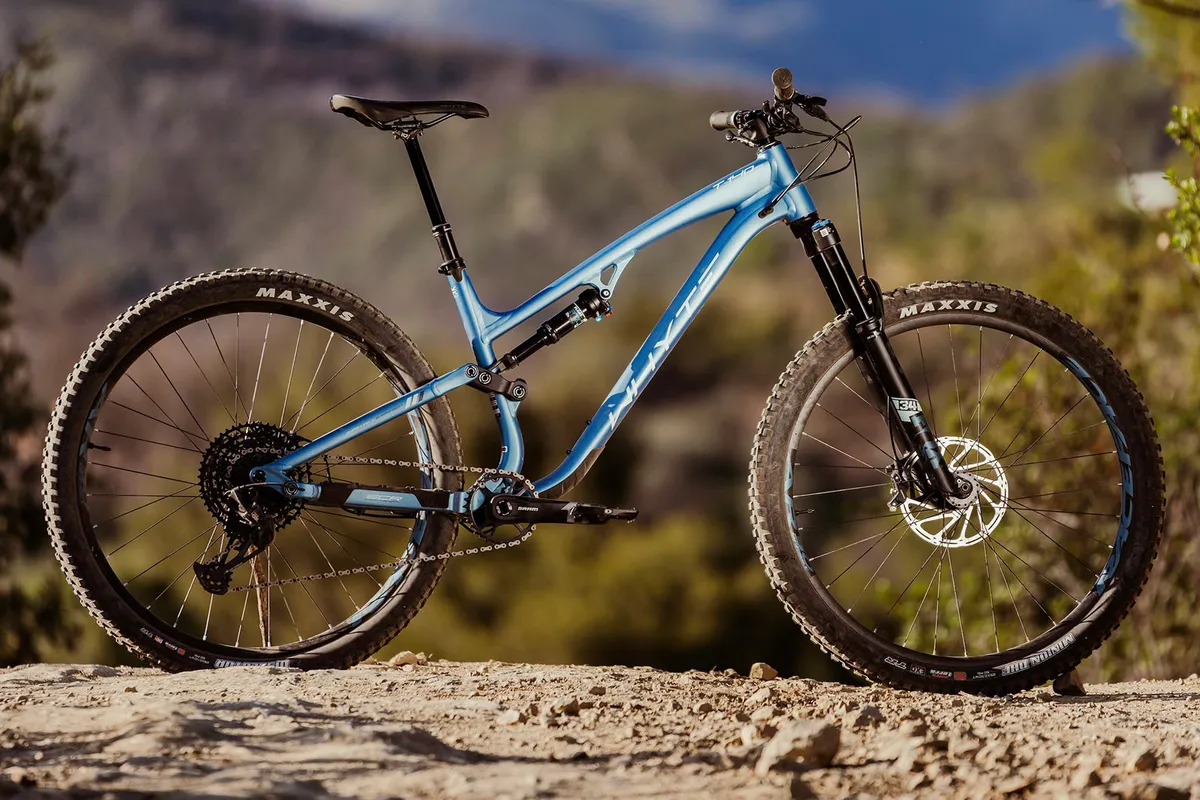
- £4,099 as tested
- Pros: Super-composed suspension; excellent pedalling characteristics
- Cons: Harder riders may push suspension to its limit; size range
Whyte's T-140 RS is a true do-it-all trail bike featuring 135mm of rear travel controlled by a Fox DPS Performance Elite shock and a 140mm Fox 34 Performance Elite fork.
The T-140 RS smoothes the way without fuss, with the rear suspension soaking up small and big hits.
The 34mm stanchion diameter of the fork becomes noticeable on seriously technical sections and can feel squirrelly under heavy braking.
The lightweight chassis helps the bike when pointing uphill.
- Read our full Whyte T-140 RS 29er review
YT Jeffsy Core 3
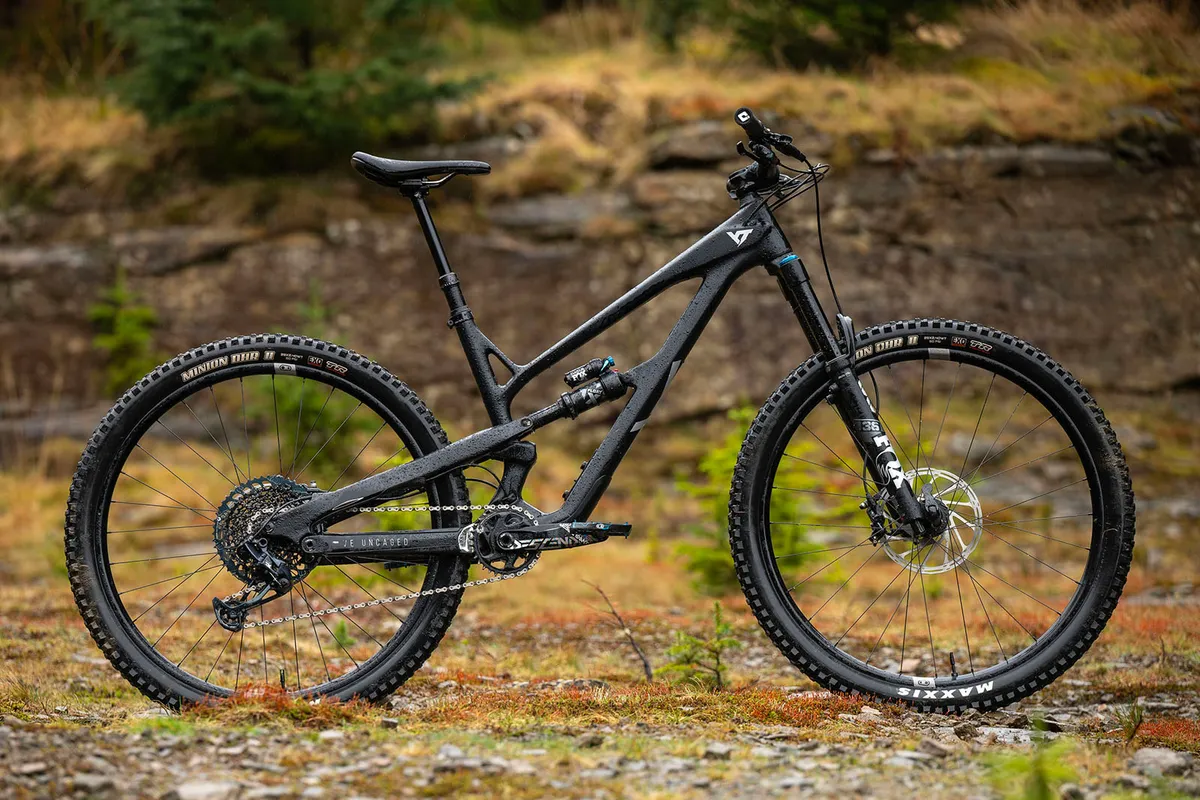
- £3,999 / $3,999 / €3,799 as tested
- Pros: Poppy ride quality; great value for money
- Cons: Pedal bob when pushing hard; underwhelming brakes; harsh cockpit
Although the frameset hasn't been updated since 2019, the YT Jeffsy still feels contemporary with its super-fun and poppy ride quality.
The frame has a 470mm reach measurement on a size large frame. There is a flip-chip on the linkage.
YT has given the Jeffsy Core 3 a great spec list for the price, with Fox 36 Performance Elite forks and Float X Performance Elite dampening the bike while SRAM's GX Eagle features for the drivetrain.
SRAM's G2 brakes were a little underwhelming and were noticeably poor on steep sections of trail.
- Read our full YT Jeffsy Core 3 review
Trail bike buyer’s guide | Everything you need to know when choosing a trail bike
What is a trail bike.
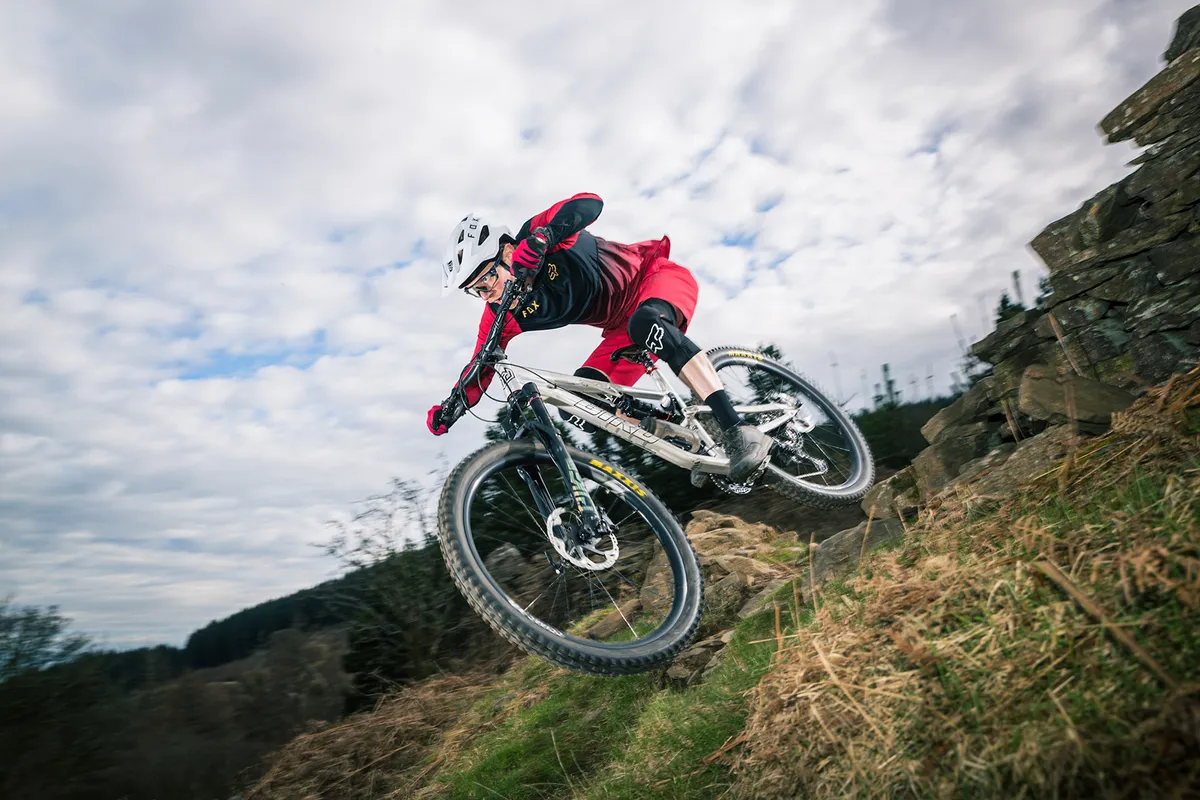
The trail mountain bike category occupies the space between lightweight, speed-focused cross-country bikes and enduro and all-mountain mountain bikes designed to fly downhill and slowly winch back to the top.
Balancing pedalling efficiency and gravity potential, trail bikes are intended to hit a sweet spot; they aren’t quite as rowdy as enduro bikes but are tougher than cross-country bikes.
They make light work of riding down flow trails with big sweeping berms and can cut it on more demanding terrain too – and you might be surprised at just how capable they truly are.
Really, trail bikes are best for mountain biking in the most general sense and are designed to give you just about enough of everything.
Trail bikes also tend to be relatively affordable when compared to other types of mountain bike. The components don’t have to be super-lightweight as on XC bikes, or heavy-duty enough to survive the rigours of downhill, which helps to keep costs down.
Although enduro and downhill bikes are considered to be the Formula 1 of mountain biking, we think trail bikes are the most important and widest-spanning category, and benefit from economies of scale where bigger production runs also play a factor in keeping prices down.
The affordability of trail bikes combined with their versatility, helps to make them an ideal choice if you’re new to the world of mountain biking or are looking for a one-bike solution to all your mountain biking needs.
What to look for in a trail bike
There are no set rules when it comes to defining what a trail bike is and, like all mountain biking sub-disciplines, they exist on a sliding scale in terms of capability, geometry, suspension travel and price.
However, there are various factors that when put together constitute a trail bike and are worth bearing in mind when looking for one of these versatile machines.
Frame material
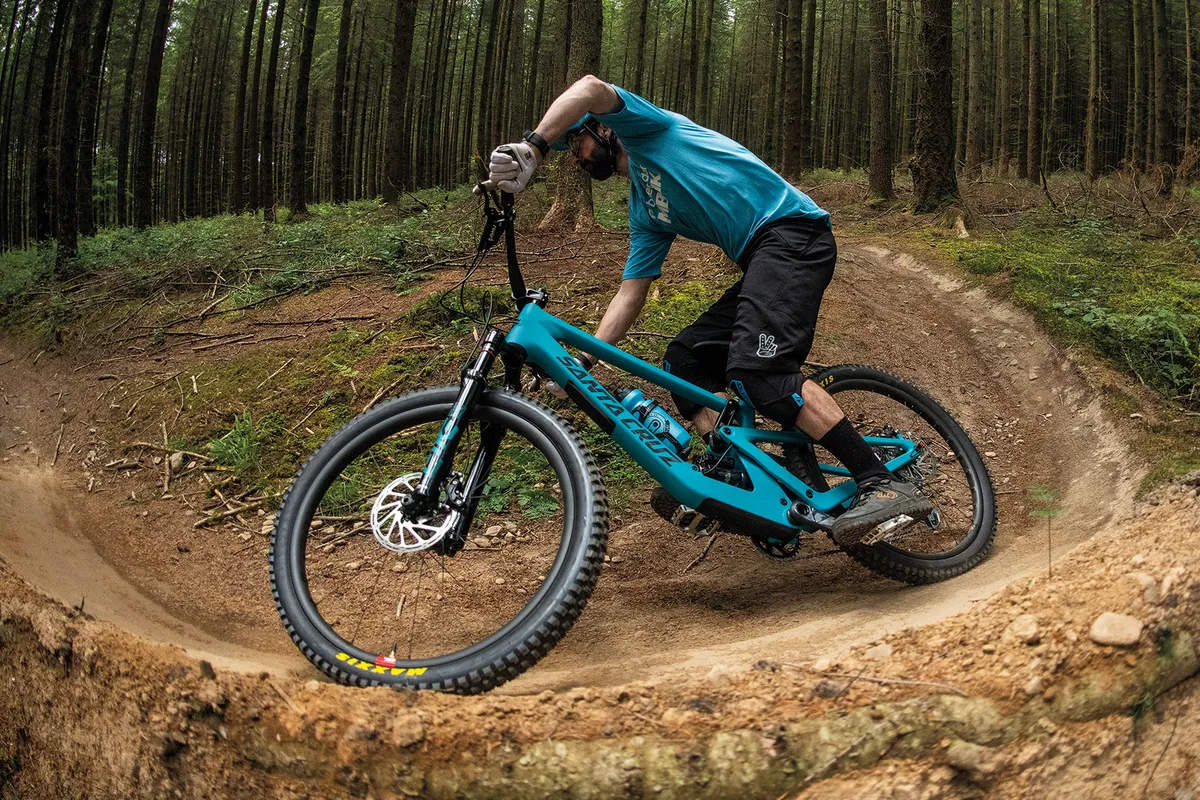
Many brands stick to aluminium alloy or carbon fibre for trail bike frames, while some more boutique builders opt for alternative frame materials, such as steel or titanium.
Carbon has the advantage of being lighter and stronger, and can be made to be stiffer than an equivalent aluminium frame, so it's a good choice if zipping uphill and weight are priorities. It does, however, cost more than aluminium.
While it might not have the exotic feel of carbon, or be as lightweight, an aluminium frame is a good call if you’re new to the sport or on a budget, but it’s hard to argue with the desirability and performance of carbon.
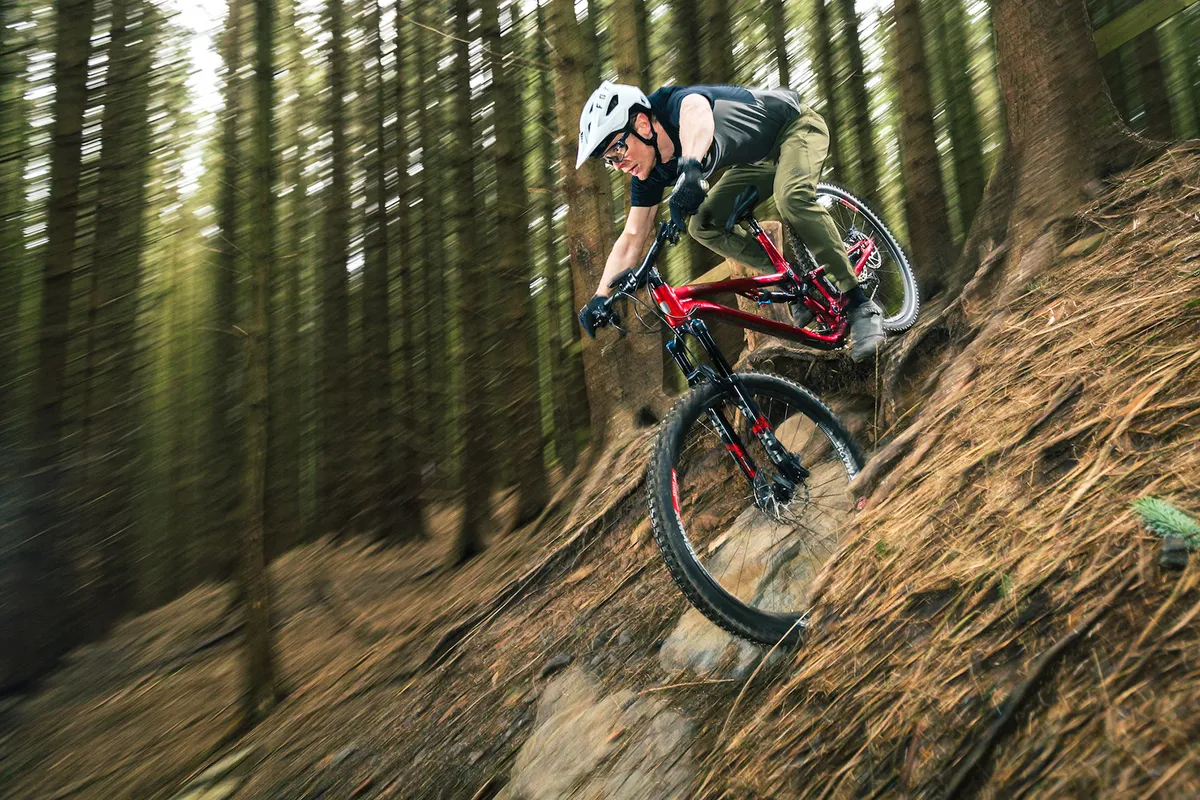
Frame geometry probably has the biggest impact on how a mountain bike handles, with even slight adjustments to the wheelbase, head tube angle and reach determining how a bike feels.
In keeping with their Goldilocks position between XC and enduro bikes, trail bikes have a relatively slack geometry that makes them capable enough to handle most rough descents, while being suitable for all-day epics and plenty of comfortable and efficient climbing.
As a general rule, trail bikes have a head tube angle of between 64 and 66.5 degrees and seat tube angle of between 73 and 78 degrees.
Look for slacker head tube angles if you want a bike that will descend better, because a slacker angle helps give the bike a calmer ride by slowing down the steering. It also makes its wheelbase longer, which helps improve stability at high riding speeds.
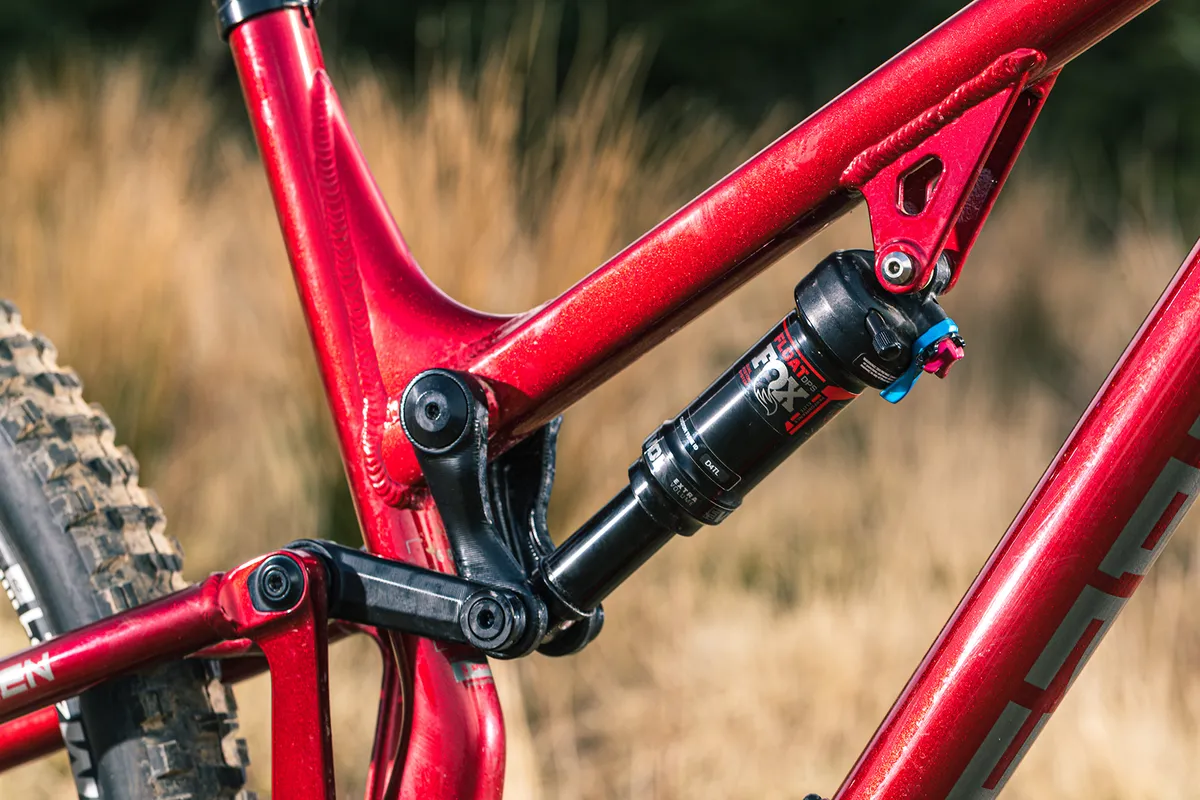
Most commonly, trail bikes have front and rear suspension with between 120mm and 150mm of travel.
As travel increases, a bike will be better suited to riding downhill and less suitable for climbing, so when considering how much travel to go for on a trail bike think about the type of terrain you'll spend most of your time riding and your riding style.
If you ride on rougher, more technical trails, or like to barrel down descents, choosing a trail bike with 140mm or 150mm is advisable.
Shorter-travel bikes won’t descend quite as well, but they are light and efficient so are a good choice if endurance riding and climbing is more your thing.
Wheel size and tyres

There used to be a time when mountain bikes simply had 26in wheels. But those days are long gone, and now mountain bikes come with either 27.5in or 29in wheels.
Both wheel sizes have their advantages and disadvantages . 29in wheels roll over obstacles and hold their momentum more, making them the preference for cross-country and the best downcountry mountain bikes . Compared to 29in wheels, 27.5in wheels are faster accelerating, stronger and more agile, with handling and placement feeling more natural too.
Trail bikes come with either of the two sizes and there isn’t really a right or wrong answer to which size wheels you should go for – you might prefer the snappier feel of 27.5in wheels or value the efficiency of 29in wheels.
One thing to bear in mind when selecting what wheel size to go for is your height. A taller rider will probably benefit from a larger wheel, whereas a shorter rider will benefit from a smaller wheel. Some manufacturers do consider this and provide models with different-size wheels depending on frame size.
Trail bike tyres tend to be chunkier with a decent amount of tread and are around 2.3 to 2.5in wide. These provide a decent amount of grip and help make trail bikes the versatile machines they are.
The best mountain bike tyres can really change how your bike feels, so it’s worth paying attention to what tyres a trail bike is specced with, but also remember that it’s not too hard to swap tyres out for something more suitable for your riding.
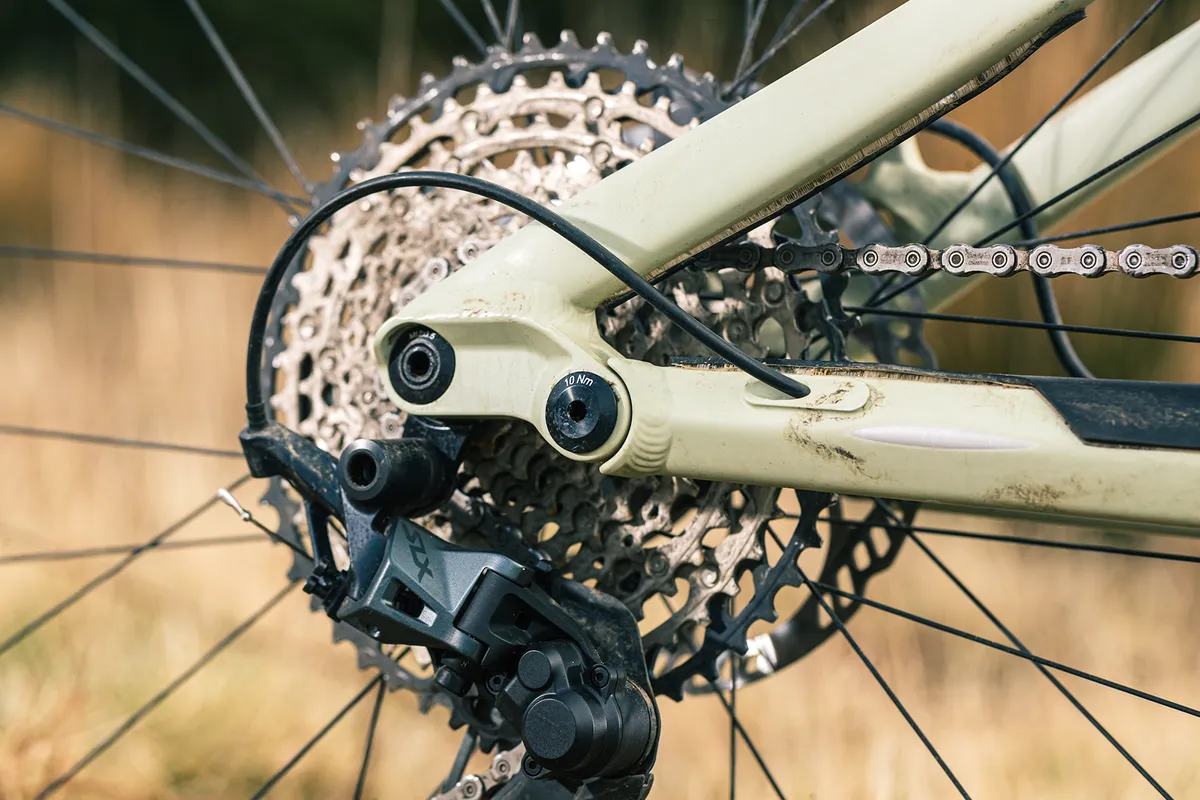
Trail bikes tend to have drivetrains with one front chainring. Thanks to wide-ranging 12-speed cassettes (normally between 10 to 52t), only having one front chainring doesn’t limit climbing potential.
Groupsets such as Shimano Deore XT M8100 are a popular choice on trail bikes. Trail bikes also tend to have easier gearing than speed-focused XC bikes. Front rings are usually between 30- and 34-tooth, while rear cassettes can go up to 52-tooth.
This gives trail bikes a wide range of gears for enough speed on the flat and to help you get up tough climbs.

Like most aspects of trail bikes, the brakes strike a balance between stopping power and weight saving.
Trail bikes will generally come with disc brakes that have two- or four-piston calipers. Four-piston brakes are more powerful and are aimed at downhill riding, where more braking power is needed, but this will of course add weight.
Rotors on trail bikes are often a mix, with up to 200mm both front and back. The larger the disc rotor, the more powerful the brakes will be, but this also comes with a weight penalty.
Hydraulic brakes are standard on all full-suspension trail bikes costing £1,000 or above, and often the best mountain bikes under £1,000 come with these brakes too.
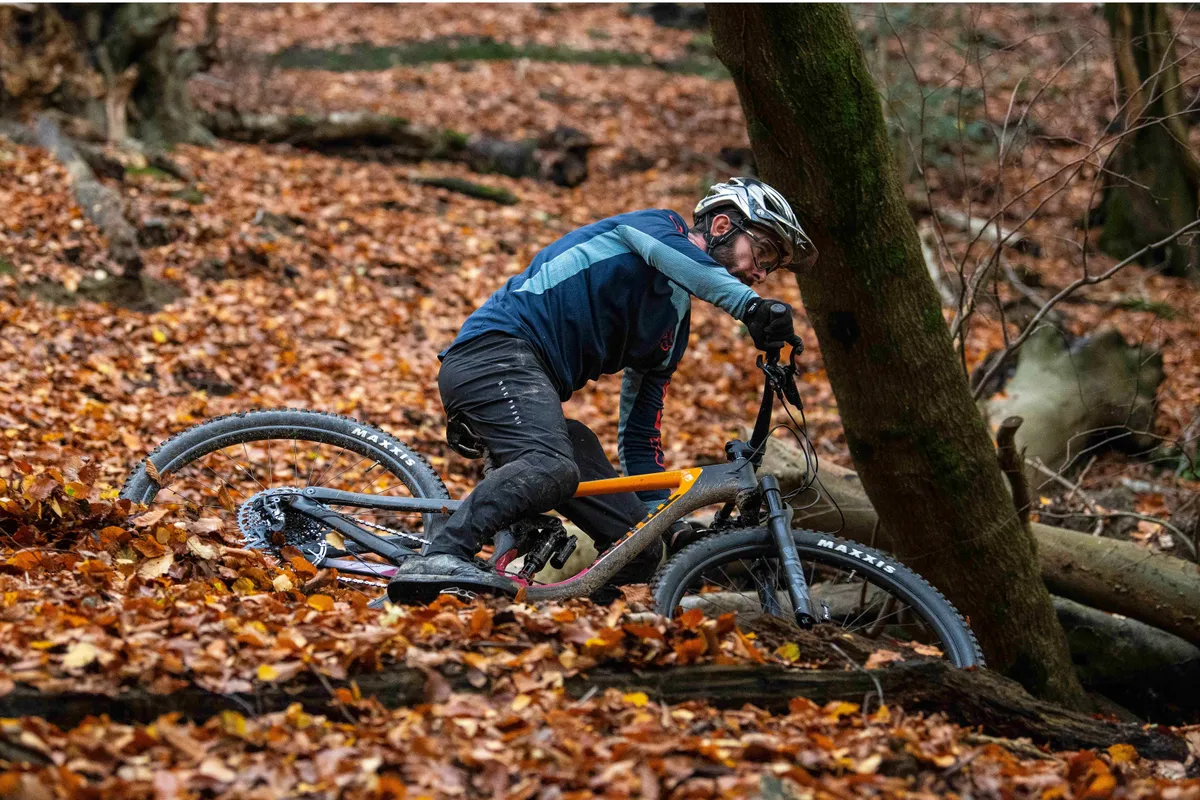
Wide mountain bike handlebars are becoming the norm, and provide extra stability, comfort and control.
Trail bikes follow this trend, many coming with a 760mm or 780mm bar, while some go up to 800mm. Just as smaller-sized trail bikes tend to have smaller 27.5in wheels, they also come with a narrower bar, going down 740mm, to help make the bike a better fit for smaller riders
Dropper posts
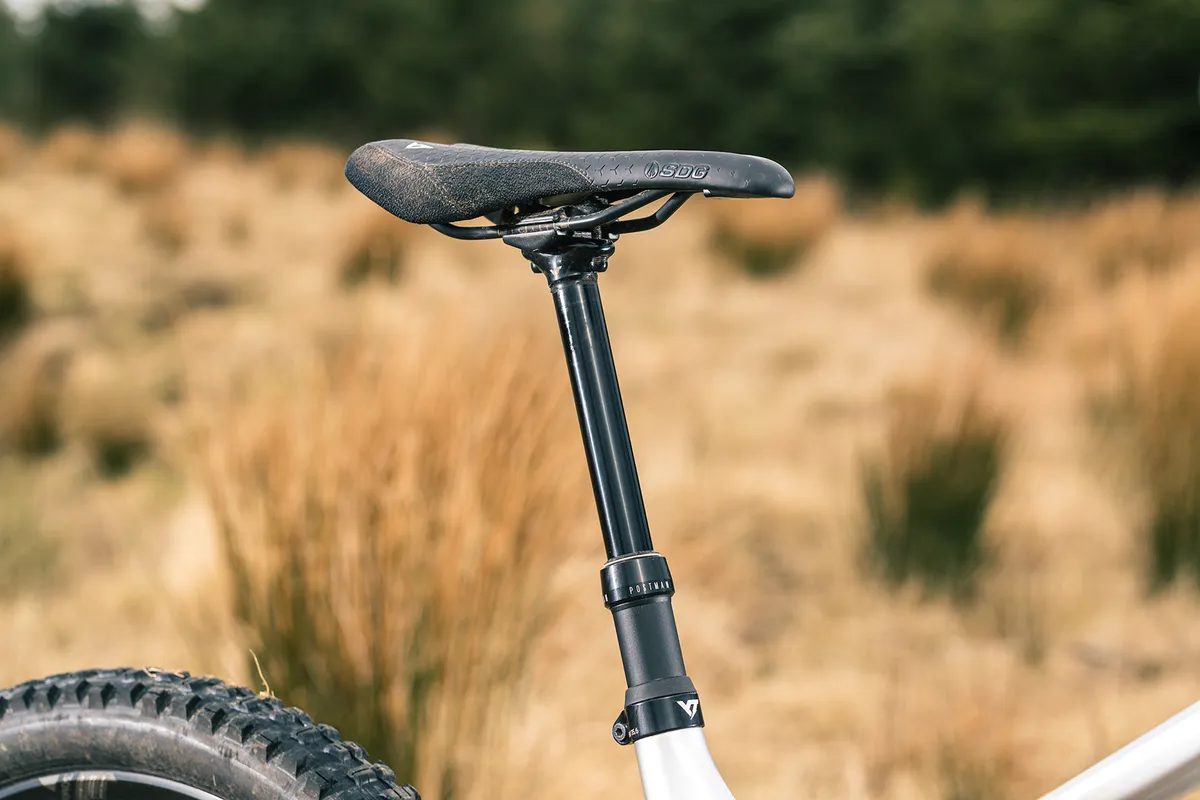
Dropper posts are almost standard on trail bikes.
They allow you to lower and raise your saddle with the flick of a handlebar-mounted button, giving you extra room to move your weight around on descents and the correct saddle height for efficient pedalling.
A dropper post is one of the first upgrades you should consider if your trail bike doesn't have one, because it will open the bike up to a wider range of riding.
Share this article

Content editor
You may also like
Bikeradar newsfeed, best mountain bike in 2024 | find the right mtb for your riding and budget, best cross-country mountain bikes 2024 | 13 top-rated xc mountain bikes and our buyer's guide, the best enduro mountain bikes of 2024 | 25 top-rated enduro mtbs.

- Terms & Conditions
- Subscribe to our magazines
- Manage preferences

Best Long Travel Mountain Bike Review 2021
by Kyle Scott | Nov 12, 2021 | Best of Bike , Best of Mountain Bikes , Bike , Comparisons
Table Of Contents
Long travel 29ers, terminology, our top picks.

A.) Reach : the distance between the center of the head tube (where the handlebars sit) and an invisible line that runs up from the center of the bottom bracket. Short travel bikes are getting longer and longer reach, meaning to keep up with steeper head tube angles (read on), the longer reach allows the rider to have more control over the front end of the bike. For a medium-sized frame, expect to see between 440mm and 470mm for reach.
B.) Rear Center (Chainstay Length) : The distance between the rear axle and the bottom bracket. The shorter the measurement means the rider will be positioned closer to the back axle and this allows for easier manuals, greater control over the back tire, and overall, the bike will have a more responsive feel. The longer the chainstay length, the greater stability you will have at speed and over rougher terrain.
C.) Front Center : The distance between the front axle and the bottom bracket. As head tubes get slacker the front center distance is getting longer. A longer measurement again will mean more control at speed on downhills but potentially sluggish responsiveness on uphills and flats. A shorter front center will provide more agile steering and greater control on uphills but may feel sketchy when at speed on downhills.
D.) Wheelbase : Measure from the front center to the rear center of each wheel, and you get the measurement for the wheelbase. This is the distance between the front axle and rear axle. A larger wheelbase will provide stability on the downhills while a shorter wheelbase will be more maneuverable and give slightly better control over the front wheel. Both serve different purposes and each rider will likely prefer a different measurement depending on his or her discipline.
E.) Bottom Bracket Height : This is the measurement of the distance between the bottom bracket and the ground. A lower bottom bracket height will offer more control and a more stable feeling on the downhills, however the trade-off is the potential of bouncing your bottom bracket or pedals off of uneven roots and rocks.
F.) Head Tube Angle : This is the angle of the head tube from a flat plane (the ground). Head tube angles often absorb the most impact on the handling and stability of the mountain bike. You will hear the angles referred to as “slack” if they are a low angle or steep as they get higher. Cross country bikes and trail bikes have steeper head tube angles that allow riders to have greater control over the bike while climbing, whereas enduro and downhill mountain bikes have very slack head tube angles to give the most control while descending at high speeds.
G.) Seat Tube Angle : This is the angle that the seat tube stands up from horizontal. This angle determines the rider’s seated position over the back wheel and the amount of control that they will have over the front wheel. A steeper seat tube angle has traditionally been best for bikes that want to climb and keep the rider in a neutral position so they can power hard into the pedals. A steeper seat tube angle also offers the rider the option to have more weight over the front wheels and, in turn, greater control and traction over the front end.
H.) Trail : The distance between the bikes front wheel contact patch with the ground and the steering axis. Greater tire size will provide more trail as well as smaller fork offsets. The more trail, the greater amount of tire will be in contact with the ground and that equals more traction and control.
Fork Offset : The distance between the front axle and the steering axis. Essentially, where the front fork comes down from the head tube is your steering axis, and the small amount of metal that connects the front fork to the axle is the offset. Traditionally, mountain bikes have gone with a 51mm offset for 29” wheels. However, there is a small push towards bringing in smaller offsets, like 44mm, which provide greater trail and more traction.
Travel : This is how far moving parts move on a mountain bike. Mainly referring to the suspension (rear and front). When reading about mountain bikes, specifically a “120 mm travel bike,” the travel they are mentioning is in the rear shock. Frames are built with a level of suspension in mind and are not often switched for different levels of travel, so that is why the travel often only means the rear suspension. Front travel in the forks is easier to switch around, depending on the rider’s preference and terrain, so those numbers will change more frequently.
Bikes with smaller travel (short travel) are better for climbing as the suspension won’t take away too much of your pedaling power as you move uphill, whereas the larger suspension is better for a more controlled and comfortable descent down choppy terrain. Most suspension systems are lockable, meaning you can reduce the amount of travel on the fly, and this helps with climbs.
Best Long Travel Mountain Bikes of 2021
Santa Cruz Hightower : Best All-Around Long Travel Bike of 2021
Giant Reign : Best Budget Long Travel Bike of 2021
Yeti SB150 : Best Climbing Long Travel Bike of 2021
Specialized Enduro : Best Enduro Bike of 2021
Other Mountain Bikes
Pivot switchblade, canyon strive, orbea rallon, kona process x, norco sight, scott ransom, nukeproof mega.

Santa Cruz Hightower Review
Buy Now at Backcountry.com
Compare Best Prices
- Climbing Ability 90% 90%
- Downhill Ability 90% 90%
- Overall Fun 90% 90%
All-around Ability in a Variety of Terrain
Weight of some of the build options.
Travel: 145mm rear/ 150mm fork
Head Tube Angle: 65.2
Seat Tube Angle: 76.3
Reach: 470mm (large frame)
Weight: Starting at 29 lbs

Giant Reign Review
Buy Now at Giant-bicycles.com
- Climbing Ability 70% 70%
- Downhill Ability 80% 80%
- Overall Fun 80% 80%
Maestro Suspension Platform, Price
Could use some better brakes.
Travel: 146mm rear/ 170mm fork
Head Tube Angle: 64.6
Seat Tube Angle: 76.4
Reach: 488mm (large frame)
Weight: Varies With Frame Material

Yeti SB150 Review
Buy Now at Aventuron.com
- Climbing Ability 80% 80%
Really Playful Bike
Expensive build options.
Travel: 150mm rear/ 170mm fork
Head Tube Angle: 64.5
Seat Tube Angle: 76.9
Reach: 480mm (large frame)
Weight: Starting at 31 lbs

Specialized Enduro Review
Buy Now at Specialized.com
- Downhill Ability 100% 100%
DH Bike That Can Climb
Needs steeper seat tube, price.
Travel: 170mm rear and fork
Head Tube Angle: 63.9/ 64.3
Seat Tube Angle: 76
Reach: 487mm (S4 frame)
Weight: Starting at 32.5 lbs

Ibis Ripmo Review
Buy Now at JensonUSA.com
Climbing Ability, Ripmo AF Option
Stock shock not being fox float.
Travel: 147mm rear/ 160mm fork
Head Tube Angle: 64.9
Reach: 475mm (large frame)
Weight: Starting at 28.9 lbs

Pivot Switchblade Review
Buy Now at Backcountry.com
- Overall Fun 100% 100%
All-around Performance
Travel: 142mm rear/ 160mm fork
Head Tube Angle: 66
Seat Tube Angle: 75.5
Weight: 30.2 lbs

Canyon Strive Review
Buy Now at Canyon.com
The Shapeshifter
Also the shapeshifter.
Travel: 150mm rear/ 160mm fork
Head Tube Angle: 66 - 67.5
Seat Tube Angle: 73.5 - 75
Reach: 470mm (large frame))
Weight: Starting at 31.2 lbs

Orbea Rallon Review
Buy Now at JensonUSA.com
Amazing Climber, Custom Paint Job Option
Short reach and cost.
Travel: 160mm rear/ 170mm fork
Head Tube Angle: 65
Seat Tube Angle: 75.5/ 76
Reach: 455mm (large frame)
Weight: Starting at 30.95 lbs

Kona Process X Review
Buy Now at Konaworld.com
- Climbing Ability 60% 60%
- Overall Fun 70% 70%
Chainstay Chip Makes A Difference
Sluggish at slow speeds, super long.
Travel: 161mm rear/ 170mm fork
Head Tube Angle: 63.5
Seat Tube Angle: 78
Reach: 490mm (large frame)
Weight: 32.8lbs (large frame)

Norco Sight Review
Buy Now at Norco.com
Strong Climber, Stable Descents
Not as playful as older versions.
Seat Tube Angle: 77.7
Weight: Starting at 32.23 lbs

Scott Ransom Review
Buy Now at Scott-sports.com
Made For The Downhills
Twinloc system needs some work.
Travel: 170mm
Seat Tube Angle: 75
Reach: 466.5mm (large frame)
Weight: Starting Around 30.20 lbs

Nukeproof Mega Review
Buy Now at Nukeproof.com
Now Comes With A Water Bottle Mount, Sportier Geometry
Climbing could be more efficient.
Head Tube Angle: 64
Weight: Heaviest Build 34.2 lbs
Santa Cruz Hightower

Best All-Around Long Travel Bike of 2021
Price: $7,299
What We Like: All-around Ability in a Variety of Terrain
What We Don’t: Weight of Some of the Build Options
Santa Cruz has created the perfect one quiver bike with the Hightower . With a suspension system that is capable of handling flowy trails to absolutely nightmarish choss piles, the Hightower will make it through. Every tester has been really impressed and surprised by the Hightower and its overall versatility. There really isn’t much more to say other than this bike will climb and mountain and ford any stream. It was easy to give the Hightower our selection as Best All-Around Long Travel Bike of 2021 .
^ Back to Top ^
Giant Reign

Best Budget Long Travel Bike of 2021
Price: $3,499
What We Like: Maestro Suspension Platform, Price
What We Don’t: Could Use Some Better Brakes
Giant , though late to the 29” party, have produced some impressive 29ers. The Reign is their second 29er after the Trance, and they are definitely dialing it in. The Reign is a solid climber with the Maestro system and a steep seat angle to keep the rider in a good position. Turn the bike downhill and prepare to bash through anything in your way. The 170mm fork is composed and all-business, while the fairly short rear chainstay with the snappy rear shock keeps it lively and poppy. At the prices Giant is offering on their carbon and alloy frames, it was a fairly easy choice to name the Reign as the Best Budget Long Travel Bike of 2021 , though you can still splash out if you so choose.

Best Climbing Long Travel Bike of 2021
Price: $5,900
What We Like: Really Playful Bike
What We Don’t: Expensive Build Options
The Yeti SB150 always impresses with its climbing ability and an easy selection as the Best Climbing Long Travel Bike of 2021 . Without going overboard on the modern geometry side of things, Yeti has produced a competent climber that is still really aggressive on the downhills. The Infinity Switch system even got an upgrade making the bike more robust. The added suspension makes the bike really playful in the rough and rowdy sections of trails and it has just become a really good all-arounder.
Specialized Enduro

Best Enduro Bike of 2021
Price: $4,499
What We Like: DH Bike That Can Climb
Built for the descent but will also get you uphill with your own power is a tough combination to find. Specialized has come pretty close to nailing it with their new Enduro bikes. The combination of long travel and modern geo has given this downhill rocket the legs to get back up the mountain. The seat tube could be a bike steeper to really help the pedaling efficiency, but it is a small price to pay for the wild downhill skills this bike comes with. It is controlled and composed but also poppy and playful, it has amazing traction when you need it and really just wants to go fast. Add the cool SWAT downtube storage, and it’s hard to find any flaws in this beast, making it our Best Enduro Bike of 2021 .

Price: $3,999
What We Like: Climbing Ability, Ripmo AF Option
What We Don’t: Stock Shock Not Being Fox Float
New may not always be better, but in the case of the Ibis Ripmo , it most certainly is. Slackening the head tube angle, slightly longer reach, and some protection for the linkages, the Ripmo V2 isn’t too different, but it is better. The more aggressive headtube angle does not take away from the climbing ability of the Ibis’s we have come to know and has only made it more fun on the downs. Now with room for a 750ml water bottle, what can’t this bike do?!

Price: $10,899
What We Like: All-around Performance
What We Don’t: Price
Pivot has nailed it. The Switchblade is a dialed-in all-around trail bike that is ready to tackle any terrain, and it will do it in style. The rear shock has been customized by Fox for the Switchblade and has made the bike super-efficient on the uphills but plush and bottomless on the downhills. With a modern but reserved geometry, the Switchblade is highly maneuverable and snappy through tight sections of trail but will also eat up choppy straights. It really is hard to find a negative with the Switchblade other than the price, but also there is a ton of technology that is available to be added to the Switchblade should your wallet allow.

Head Tube Angle: 66 – 67.5
Seat Tube Angle: 73.5 – 75
Price: $8,499
What We Like: The Shapeshifter
What We Don’t: Also The Shapeshifter
Canyon has created something very innovative with the Shapeshifter and for that, it’s pretty awesome. However, it seems that if they had originally adjusted some of the geometry, the Strive could be a one-quiver ride without the bells and whistles that in a way also hinder it. Definitely worth a look for a rider who doesn’t like the modern geo all that much but is looking for a do-it-all bike. The all-around nature of the Strive is present, it just feels like you need to do too much while riding to get the best out of the bike.

Price: $7,999
What We Like: Amazing Climber, Custom Paint Job Option
What We Don’t: Short Reach and Cost
The Rallon by Orbea is a very composed enduro bike. While the geometry keeps it out of the hard-charging enduro bike categories, it is a super good climber and comfortable all-day rider. The MyO customized paint option provided by Orbea will allow you to have the stealthiest or flashiest bike on the hill if you so choose. The rear linkage has been updated and raised to increase bottom out support and create a more responsive ride while also maintaining control while braking. This bike is excellent if you are not the biggest fan of all of the new modern geometry these days and live in an area where there is a lot of vertical gains to be climbed.

Price: $4,999
What We Like: Chainstay Chip Makes A Difference
Kona has brought a stretch limousine to a chicane competition it seems. The new Process X is a far cry from what most of the bikes in this article are in terms of geometry and length. While the length and geo make it a downhill superstar, it does not love tight corners and hates uphills just as much as kids chasing the ice cream truck. The flip-chip that increases or decreases the chainstay length does make a big difference in the ride. So it’s all about finding that perfect set up.

Price: $6,399
What We Like: Strong Climber, Stable Descents
What We Don’t: Not As Playful As Older Versions
The 2021 is not very different from the 2020 Norco Sight , but it is very different from the 2019 Sight. So know that before reading any further. The new 2021 Norco Sight is a long bike with long chainstays and steep seat tubes to keep everything calm, cool, and collected on climbs and speedy descents. Paired with Norco’s Ride Align app, you can easily dial in your suspension settings to get the most out of your new ride and get cruising. Definitely not the flashiest bike or the bike you ride if you want to let your hair down and show off to your friends. The Sight is rock solid and a hard-charging all-mountain bike that could find itself in some enduro races.

Price: $9,223.37
What We Like: Made For The Downhills
What We Don’t: TWINLOC System Needs Some Work
Relying too heavily on the TwinLoc system the Scott Ransom just isn’t the bike it could be if it simply utilized the suspension it chose to its fullest. While being a shredder and a great option for enduro races, the suspension just isn’t quite what we were hoping for, and the rest of the impressive bike fell to the wayside. It is a downhill shredder and great for some laps in the bike park. If you don’t climb a lot and mainly use gravity for propulsion, this is a great option.

Price: $7,332.72
What We Like: Now Comes With A Water Bottle Mount, Sportier Geometry
What We Don’t: Climbing Could Be More Efficient
With a few modifications on the already awesome Mega , Nukeproof has created an amazing bike. They have even added enough room for a water bottle holder, which is great news for people who hate fanny packs. The Mega now comes with a shorter chainstay and a steeper seat tube to make climbing more efficient and the downhills more lively. The build-outs in all five of the options for the Mega are solid and look after the important parts before adding too many bells and whistles. All in all, the Mega is a super all-arounder that would work for any rider of any skill set.
You Might Also Like

Trek trail bikes are versatile, light, and exceedingly capable. They climb just as well as they descend, making them ideal for everything from enduro racing to ripping laps after work.
A long-travel all-mountain bike built for racing rugged enduro lines and having a rippin’ good time in the rough.
- See all models
Snappy 27.5˝ wheels make this the rig for popping off jumps, railing corners, and throwing the bike around.
The ride-it-all MTB. It’s fast, capable, and fun everywhere—no wonder it’s our most popular trail bike!
Top Fuel’s a full suspension XC ripper that’s fast on flow and loves getting down on techy trails.
This hardtail’s all about having a blast on the trail thanks to wider, grippy tires and a longer travel fork.
Yeti SB150 Review: A Long-Travel 29er Built to Do Everything
Share this:.
- Click to share on Facebook (Opens in new window)
- Click to email a link to a friend (Opens in new window)

Low, slack, and stretched, this long-travel 29er performs so well climbing and descending that riders who love the downhill could make it a one-bike quiver.
Bikemakers often claim their all-mountain or trail bike is the only one you need. But no all-mountain or trail bike we’ve tested is compromise-free on big descents. And while bomber enduro rides like the Santa Cruz Bronson, Pivot Firebird, and Specialized Enduro will put a smile on your face during rowdy downhills, they still compromise some performance on climbs.
Enter the Yeti Cycles SB150 , launched today, starting at $5,199. With a 150mm travel shock and 170mm travel fork, it offers the best example of a long-travel 29er bike that climbs as well as an all-mountain bike — while descending confidently even in harsh terrain. And after my test, I think you’ll consider selling your downhill, enduro, and all-mountain bikes to own an SB150.

Yeti SB150: A Better MTB
The new SB150 has what Yeti calls “progressive race geometry.” That means longer reach, steeper seat angle, and a slacker head angle combine with a shorter fork offset.
During development, Yeti took its popular SB5.5 and, according to Yeti director of engineering Peter Zawistowski, “Frankensteined” it to explore the progressive race geometry on offer.
“We wanted a slightly more progressive leverage curve, space for a water bottle in the front triangle, and lower standover height while maintaining our well-known Yeti Switch Infinity efficient pedaling platform,” Zawistowski said.

So Yeti opted for a 15 percent leverage curve based on feedback from riders. The result, Zawistowski said, provides better small-bump compliance as well as a “wider range of compatibility of shocks” and a “wider tuning window for rider weights and styles.”
“If you break shock travel into thirds —beginning, middle and end — with the new leverage curve, in the beginning of travel the bike is more sensitive to small bumps. In the middle of the travel, it’s well supported. And in the end of travel, the bike has even more bottom out resistance than previously. These new progression percentages give us a wider range of compatibility of shocks and a wider tuning window for rider weights and styles.”
In short, the Yeti Cycles team actually figured out how to make a mountain bike with better steering that’s more versatile and capable overall. And to do so, the brand filed 15 patents in the process.
“We’d get on a bike with a wheelbase 30mm longer and it would feel shorter,“ said Product Manager Ryan “Rocket” Thornberry. “On paper, everything about this bike looked wrong. But on the trail, it was like we made an impossible wish list and all of it came true.”
Yeti SB150 Review

I rode the SB150 for a long weekend, hammering a wide variety of trails at Colorado’s Snowmass and Buttermilk ski resorts. That included a 1,800-foot climb up the front side of Snowmass on buff flow trails, transitioning to rocky, technical, and fall-off-your-bike-steep descents. Then I rode it for another week on backyard trails at my home in Vermont, where I typically ride bikes with far less suspension.
In short, I was stunned at the SB150’s adaptability and performance. The new geometry helped the bike steer exceptionally well. I smoothly rode features where other bikes gave me pause. I felt centered on the bike — a driver not a passenger.
Ordinarily, I would have never considered taking a bike this big on some of the trails I rode — especially the monster climb at Snowmass. But the SB150 crushed it all, making me rethink what and where I’ll pedal. At first glance, this bike appeared too much for everyday riding. I was wrong.
On multi-hour rides on technical singletrack, I soared over obstacles I previously considered sketchy. Without pause, the bike rolled over it playfully and sturdily.

Plus, the bike climbed as well as any all-mountain bike. I knew the SB150 would crush any downhill I pointed it toward, so I was most surprised by its ascents. On uphill flow trail, it was a 100 percent adequate climber, not sluggish at all. And thanks to Yeti’s Switch Infinity additional linkage, there was no bobbing around as I slogged up alongside the lifts.
I didn’t bother to lock out the shock, yet the bike didn’t bounce around. Then, when I hit sections of technical uphill singletrack I wasn’t sure I’d be able to pedal, the bike cruised through with agility and confidence-inspiring handling.
On rooty, easy-coasting singletrack, the SB150 smoothed out the trail. It absorbed small bumps but never felt like a beast when I needed to make a quick correction to avoid an obstacle.
When pushed to perform, the bike handles with catlike agility while rolling over everything in its path. Like all Yetis, the SB150 is made for an aggressive rider who wants to push themselves and the bike. But its slow-speed handling is also spot on.
The kinematics of the SB150 are on point. So is the new shock tune. If it’s set up properly, you’ll use all this bike’s travel and get everything you want, including small-bump sensitivity and midstroke support. And you’ll maintain a poppy, lively feel as well as better bottom-out resistance. Yeti Cycles built this bike with great tunability for a wide range of riding styles and rider weights.

Maintenance
The new bike also makes maintenance and modifications easier. A 60mm shock extender allowed Yeti to get optimal shock placement and space for a water bottle in the main frame. The extender also allows the shock to be removed for servicing quickly and easily. The two-piece extender doesn’t clamp onto the shock — it has bearings. These minimize friction, so you’re not wearing through bushings as you ride. And the extender fits inside the shock link, keeping the bike frame narrow.
New Yetis, from the SB100 up, share hardware. So you won’t have to wonder if you grabbed the correct spare derailleur hanger for your next big trip. And the bikes are maintenance friendly for your mechanic. The shock is easily removable, and the bottom bracket port can be unscrewed, simplifying dropper post install.
The cockpit is user-friendly too. Much like Yeti’s SB100, the 150 has lower standover height, making it more accessible to smaller riders and more comfortable for everyone. By lowering the seat tube height, the SB150 is compatible with up to a 200mm dropper post, though it comes with Fox’s Transfer 150mm dropper. Yeti also made the switch to a 31.6mm seatpost diameter to compensate for consumers’ tendency to overtighten seat tube collars, which commonly interferes with correct dropper post operation.
Yeti 2019 model year bikes, including the SB150, now come with a lifetime warranty for the original owner. And they’re more durable than ever without being heavier. The SB150 is tested to downhill standards and has undergone substantial impact testing both in the lab and under the rider on the Enduro World Series circuit.
Yeti SB150 Impressions
I was blown away by the SB150’s performance, both on its own and compared to other long-travel 29ers I’ve tested. Drawbacks I experienced with other brands, like pedal strike, weren’t an issue here.
But setting this bike up to get the best ride will take time, more so than on any other Yeti I’ve ridden. Tiny tweaks in sag and suspension make a noticeable difference.

The SB150 is spec’d with a piggyback Fox Factory X2 shock and a Fox Factory 36 fork. But it’s Fox-approved for a coil if that’s your preference. Set up the bike according to recommendations on Yeti’s new website , launched today. Then, hone in on settings in a more scientific way: Ride it repeatedly on the same section of trail, making small tweaks each time.
Then, once you feel you’ve got it tuned to you, let it loose anywhere.

Berne Broudy is a contributing writer at GearJunkie.com.
Broudy has been writing about cycling, skiing, and outdoor gear for more than 20 years. Before that, Broudy spent time guiding hiking and cycling tours in South America, Europe, and the U.S.
Based in Vermont, Berne Broudy is a core user of and expert in outdoor, cycling, and ski gear, as well as overlanding and powersports gear. She has been writing about outdoor products, business, and issues for more than 20 years. She has written and photographed for more than 20 publications and has served as a contributing editor at many of them.
Broudy currently sits on several nonprofit boards in her home state of Vermont. She is an avid mountain biker, gravel biker, backcountry skier, overlander, and adventure traveler.
Follow Us On
Subscribe Now
Get adventure news and gear reviews in your inbox!
Join Our GearJunkie Newsletter
Gear Top Stories Deals

The best trail bike of 2024 – 15 of the most exciting trail bikes in our 2024 comparison test

In our big 2024 trail bike group test, we crowned an unexpected winner, had a few pleasant surprises and also spotted a few lemons, which we would never recommend you buy! Our test field includes 15 of the most exciting trail bikes of the season – but what does it take to be the best and worst trail bike of the year?
Table of content: What is in this test
- Our test field
What is a trail bike and what should it be capable of ?
- How and where did we test the Light-eMTBs?
The ENDURO test crew
- Our test criteria
The tops and flops in our 2024 trail bike group test
- Which is the best trail bike of 2024?
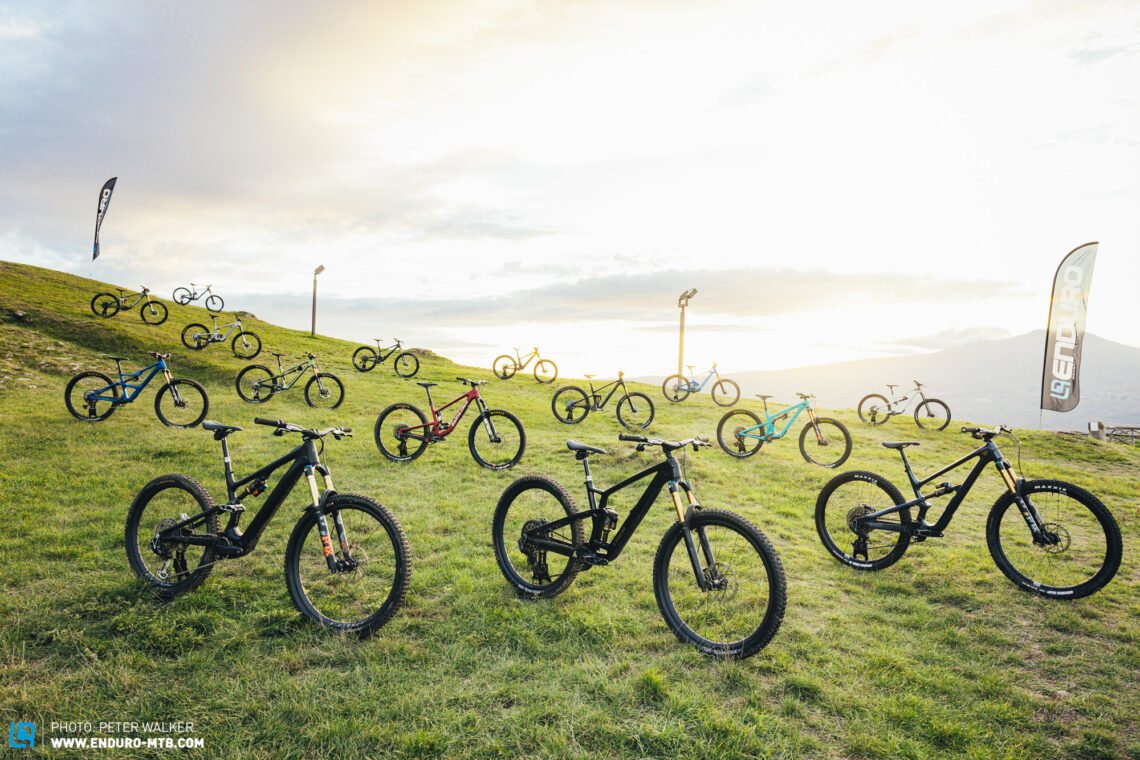
Let’s be honest, most of us are totally over-biked! We spend most of our time tackling tame home trails with big-hitting bruisers, just to be able to enjoy the extra travel on the occasional bike park trip or rowdy enduro holiday in summer. But is it really necessary with all the fantastic technology available these days?
Back in our 2022 trail bike group test, we recognised a clear pattern that has also repeated itself in this year’s test: modern trail bikes are becoming increasingly capable, allowing you to tackle faster, rougher trails and bigger jumps without smashing your bike (and yourself) into a million pieces. And no, modern trail bikes don’t pedal like shit. Quite the opposite: they don’t call for compromises uphill, and aren’t necessarily stupidly expensive either. Sounds too good to be true?
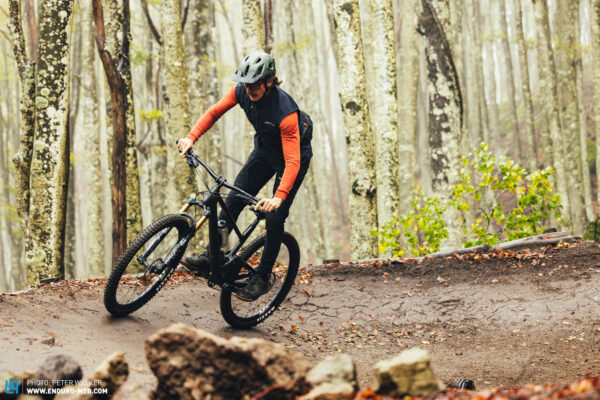
Trail Bike ≠ Trail Bike
First off, the days when we were buying bikes based on a predefined category are long gone. In other words, instead of fixating on a certain bike category, you should look for a specific bike model, regardless of whether it’s classified as an all-mountain, super enduro or full-suspension touring bike. There’s no such thing as “one bike for all”. Every manufacturer interprets the existing categories in a different way, relying on different specs, features and key data and keeping the focus on different things, blurring the boundaries between categories. What really counts is the overall concept and, of course, how well each concept suits your individual needs, riding style and intended use.
What became quickly evident again in this year’s test with 15 trail bikes, is that each model has its very own character, with huge differences distinguishing the bikes from one another. In other words, depending on the bike, you could either carve through a berm with extreme precision or slide through it hoping for the best – and that’s despite the fact many bikes share near-identical key data like the suspension travel, geometry and wheel size.

Have you ever seen Chat GPT flying down the trails?
However, there’s one thing all trail bikes have in common: they’re all designed to deliver top riding fun on the trail – or at least, they should! That’s mainly down to the fact that trail bikes are not developed for racing, which is the case with most enduro and XC rigs. Instead, they’re designed to be versatile, strong all-rounders that allow you to have fun on any sort of trail, whether you’re heading to your local forest for a chilled post-work ride without knee pads, shredding gnarly bike park lines at the weekend, or embarking on an epic singletrack expedition in the Alps. The best trail bikes in this group test can do all of this, and they do it extremely well! To achieve this, they must be able to combine different riding characteristics, and sometimes even to unite supposed opposites. For example, a trail bike has to perform equally well on climbs and descents, which can be achieved through a sensible geometry, finely tuned rear suspension kinematics and the right choice of components. It’s a fine balance, a harmonious interaction of different criteria that can’t be deduced from a spec list, geometry chart or random lab results – let alone predicted by AI. Or have you ever seen Chat GPT rocketing down the trail?

Our test field: 15 of the most exciting bikes of 2024 at a glance
Our test field consists of 15 modern trail bikes and includes all kinds of different concepts, from lively, lightweight speedsters to rowdy shredding machines and even several light eMTBs, which pushed their analogue competitors to the limits. It was a colourful bunch of contestants, with newcomers, underdogs, innovative high-tech trail bikes and bikes that have already set a benchmark in the past seeking to prove themselves against the new competition.
Our latest readers’ survey with 23,000 participants revealed which brands are most popular amongst our readers and which technologies arouse their interest. This gave us a good starting point to work from. On top of that, our editorial team racked their brains to understand which bikes simply couldn’t be overlooked, along with a few more niche options that our readers might not be aware of.
On this basis, we’ve put together an exciting test field with 15 hot, new bikes, which provided some exciting insights and plenty of interesting facts. For example, there’s a difference of over € 8,000 between the cheapest and most expensive competitors. Is this bonkers? Or is it unfair? Not at all, in fact, our test shows that the opposite is true! Curiously, there are bikes with nearly identical specs that have a price difference of over € 4,000, which caused quite a stir – wtf!

While most of the test field consists of analogue bikes, we also included four of the most important light eMTBs of the season, which rely on the four most exciting motor systems and battery concepts currently available on the market, thus appealing to a very wide range of rider types. This also explains the huge 7.5 kg weight difference between the lightest and heaviest competitors – that’s a whole road bike worth of difference! Are the heaviest bikes necessarily the slowest or most boring? Let us surprise you! There are also huge differences in terms of suspension travel, with the most conservative rear suspension generating 120 mm of travel at the rear, the most capable bike delivering a whopping 155 mm. Maybe that doesn’t sound like a fair comparison, but which one was more fun downhill?
For a better overview, here’s a list of all 15 bikes in our 2024 trail bike comparison test, with some of the most important data.
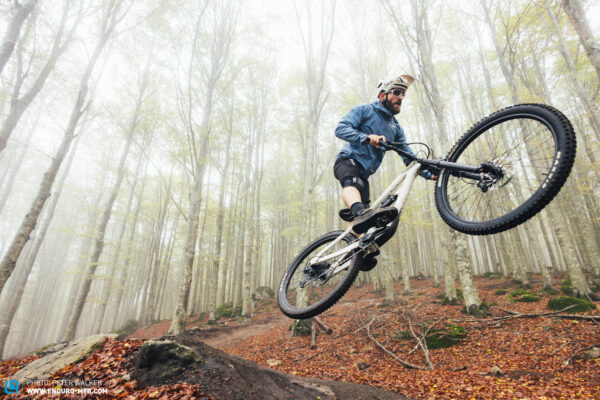
The Cannondale Habit LT 1 1 takes on the competition with a humble spec, renouncing any kind of fancy, shiny components. Together with the YT, it wants to prove that even the cheapest bike in this test can put a big grin on your face on the trail. The CUBE Stereo ONE55 C:62 SLT 29 , on the other hand, comes with a top-tier spec at an affordable price. At first glance, it stands out from the crowd with some radical details: at 13.4 kg, for example, it’s the lightest bike in this test (alongside the SCOR), and at the same time, it’s the bike with the most travel, which is controlled by a very capable FOX X2 shock. Does this make it the most potent contestant downhill?
Just with its name, the GHOST RIOT Trail Full Party shows its intentions. With a fully integrated EightPins dropper and tire inserts fitted as standard, the GHOST has a few party tricks up its sleeve. But is it enough to claim victory in our 2024 trail bike group test? Other bikes, like the MERIDA ONE-FORTY 10K , have plenty of tricks up their sleeves too. With the ONE-FORTY, the Taiwanese manufacturer introduces a versatile frame platform with flex-stays that relies on a brand new design language and innovative geometry concept.
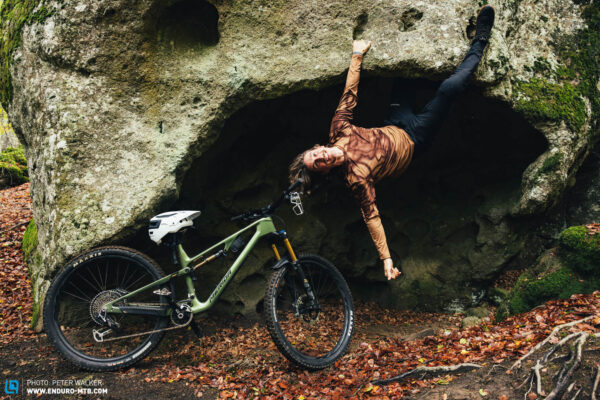
As already mentioned, we didn’t miss the opportunity to include a few light eMTBs in our 2024 trail bike group test, deliberately ignoring all the hate they attract. And once again, they proved that they have a right to be in this test field. Let’s start with the sleek Mondraker Neat RR SL and its TQ_HPR50 motor system, which delivers a very natural ride feeling but also feels weak compared to the competition. In purely visual terms, its electric nature only becomes evident upon closer inspection. It’s a whole different story with the NICOLAI SATURN 14 Swift HRZ , which is distinctly recognisable as an ebike, integrating a brand-new Bosch SX motor into a machined alloy frame. At 600 watts peak power, the motor packs a real punch when you pedal hard.
The Specialized S-Works Turbo Levo SL is the “ultimate trail bike” in the portfolio of the Californian manufacturer. After robbing its analogue counterpart of the title, there was no way that we wouldn’t include it in this test. Specialized spared no expense or effort, delivering tremendous development work with the sophisticated motor system of the Levo SL. What’s even more impressive is that the Levo SL is already in its second iteration, while most light eMTBs in this group test are still in their infancy. Does this give the Specialized an advantage?
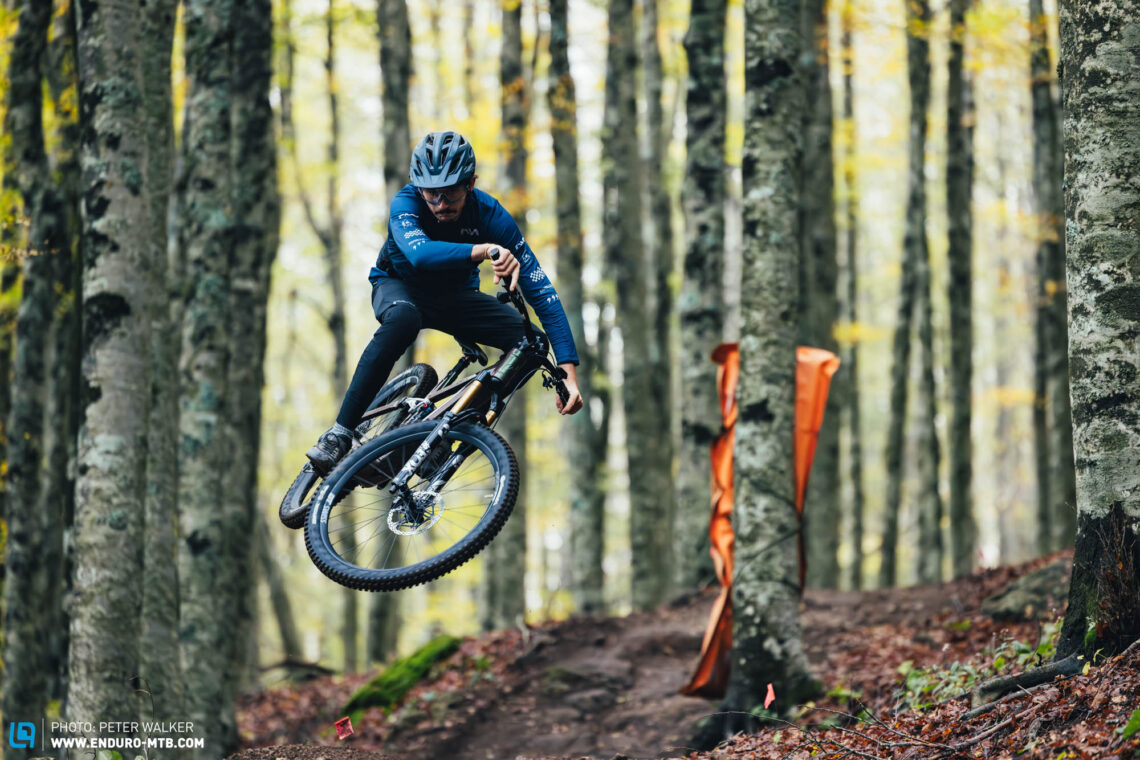
The Santa Cruz Heckler SL XX AXS RSV , too, is based on its analogue sibling, the Bronson. The FAZUA Ride 60 motor system is neatly integrated into the down tube, preserving the distinctive look of Santa Cruz’s VPP rear suspension. Like the Levo SL, it rolls on a mixed wheel setup with a small 27.5″ wheel at the rear, promising to be tons of fun on the trail, while packing a punch uphill. The Heckler can count on some family support, because the Californian brand also entered the race with one of their analogue trail bruisers, the Santa Cruz Hightower X0 AXS RSV , which looks a lot like the Heckler despite rolling on two big 29″ wheels.
Introduced only recently, the Orbea Occam LT M10 employs a versatile frame platform and allows you to customise both the spec and look of your bike down to the smallest detail using Orbea’s extensive online configurator. Does this make it the perfect trail bike for everyone? Well, there’s another bike in this test that lets you do pretty much the same, at least in terms of aesthetics. With the brand-new SCOR 2030 X01 , you can design your very own frame protectors for the top and down tube using the Swiss brand’s online design tool. With only 120 mm of rear travel, it doesn’t have lots of reserves on paper, but the progressive suspension allows you to get rowdy downhill while maintaining a lively, nimble character on the climbs.
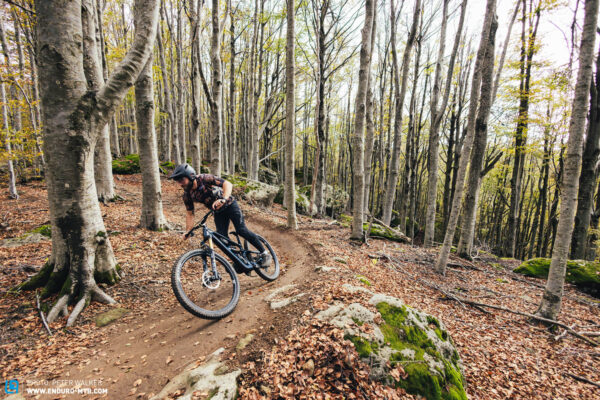
With the SCOTT Genius ST 900 Tuned , the Swiss manufacturer shows once again what seamless integration looks like, concealing the shock inside the frame and routing all cables internally. To round off the clean look, SCOTT also throw in a fancy one-piece handlebar/stem unit.While the high level of integration ensures a super tidy look, it also has its drawbacks, making it harder for home mechanics to work on their bike. Is the Genius ST 900 Tuned just as discreet on the trail as it looks? The Trek Fuel EX 9.9 X0 AXS T-Type is the latest evolutionary development of a true trail classic, the latest version of a bike which has been a regular in our group tests over the years. Particularly striking are the top-tier spec and countless customisation options, which allow you to alter both the geometry and kinematics of the bike. Can our trail veteran use its lengthy experience to secure Best in Test in our 2024 trail bike group test?
With its big brother securing victory in last year’s enduro group test, the YETI SB140 LR T3 X0 has big shoes to fill. It shares the same frame features and Switch Infinity suspension design as the enduro model, and (of course) comes in the same iconic turquoise finish. The spec is almost identical to the last contestant in this test, the new YT JEFFSY CORE 5 CF , which is packed with practical features. However, the German direct-to-consumer brand charges significantly less than its competitors for the fancy components – but is YT skimping elsewhere?
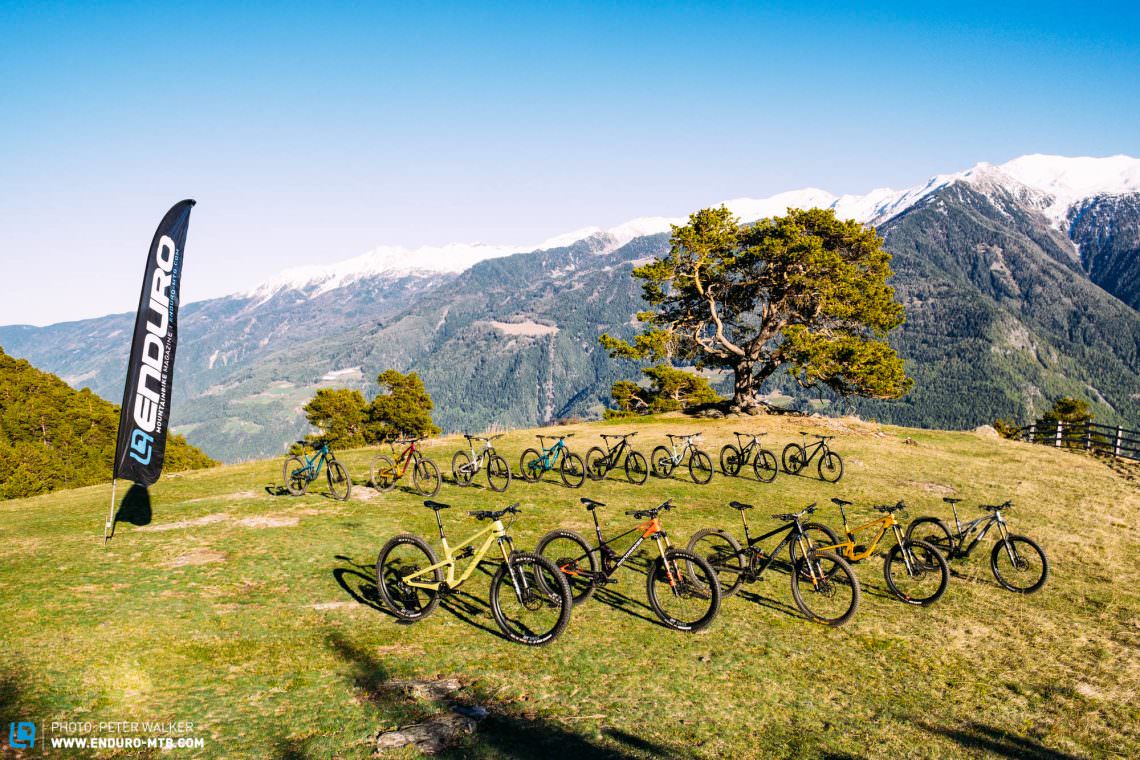
Of course, there are some bikes missing this year, and as much as we’d love to squeeze all of the trail bikes currently available on the market into one massive group test, this would simply be impossible. Many bikes, like the Propain Hugene , Specialized Stumpjumper , Canyon Spectral and Santa Cruz Bronson haven’t been updated since our last group test, and weren’t able to secure victory back then anyway. That’s why they didn’t even enter the competition this year, but you can still draw some interesting conclusions by reading last year’s reviews and comparing the bikes.
On the other hand, we would have loved to include some other bikes in this test, like the Canyon Neuron, Forbidden Druid and COMMENCAL TEMPO, but the manufacturers were either unable to deliver a bike in time, or simply too afraid to hear our opinion, so they decided not to send a bike for this test. Once again this year, there are bikes that didn’t live up to expectations, but more on this later.

A good trail bike not only allows you to climb to the top of the mountain comfortably and without suffering too much, but also delivers tons of fun when shredding your way back down into the valley. Good composure and plenty of reserves are no longer exclusive to potent enduro bikes, with increasingly more trail bikes packing a punch on the trail.
Trail bikes are designed to be the perfect all-rounder and to deliver an unparalleled riding experience. Climbing performance isn’t compromised in any way – quite the opposite! Despite their impressive downhill potential, the trail bikes in this group test are surprisingly nimble, pedal-neutral and at the same time offer a high level of touring comfort. Furthermore, trail bikes aren’t subject to the limitations of racing, which is the case with many enduro and XC bikes. Instead, they’re designed to crank the fun factor up to eleven while inspiring huge amounts of confidence in the process, whatever trail you’re deciding to tackle. One of the most frequently asked questions amongst modern mountain bikers is whether your next rig should be an eMTB, which is partly due to the advent of the latest generation of light eMTBs. The advantages of light e-mountainbikes are obvious: ride more trails in less time, overcome laziness, and enjoy a wider range of applications, from rowdy trail expeditions to family weekends with a trailer and fun uphill sessions with your mates. Depending on which motor system you’re using, you’ll be able to engage in some wild climbing antics. The disadvantages? Higher prices, more wear and tear… but is the handling really worse?

Do I even need a new trail bike?
If you’re asking yourself this question, you probably forgot about the N+1 rule, which states clearly that you can never own enough bikes. However, if for some inexplicable reason, you want to stick to just one bike, modern trail rigs are the optimal addition to your bike cave, because they’re extremely capable and at the same time have great touring potential, thus covering an incredibly wide range of applications and delivering an insane amount of fun, even on more moderate trails. Furthermore, now is a great time to get a new bike, because many manufacturers and bike shops are currently offering huge discounts to empty their warehouses. If you want to know why, you should read our “Price war” article , which gives you an insight into the current state of the bike industry. But one thing’s for sure: at some point, the price-drop battle will come to an end and bikes will get more expensive again.
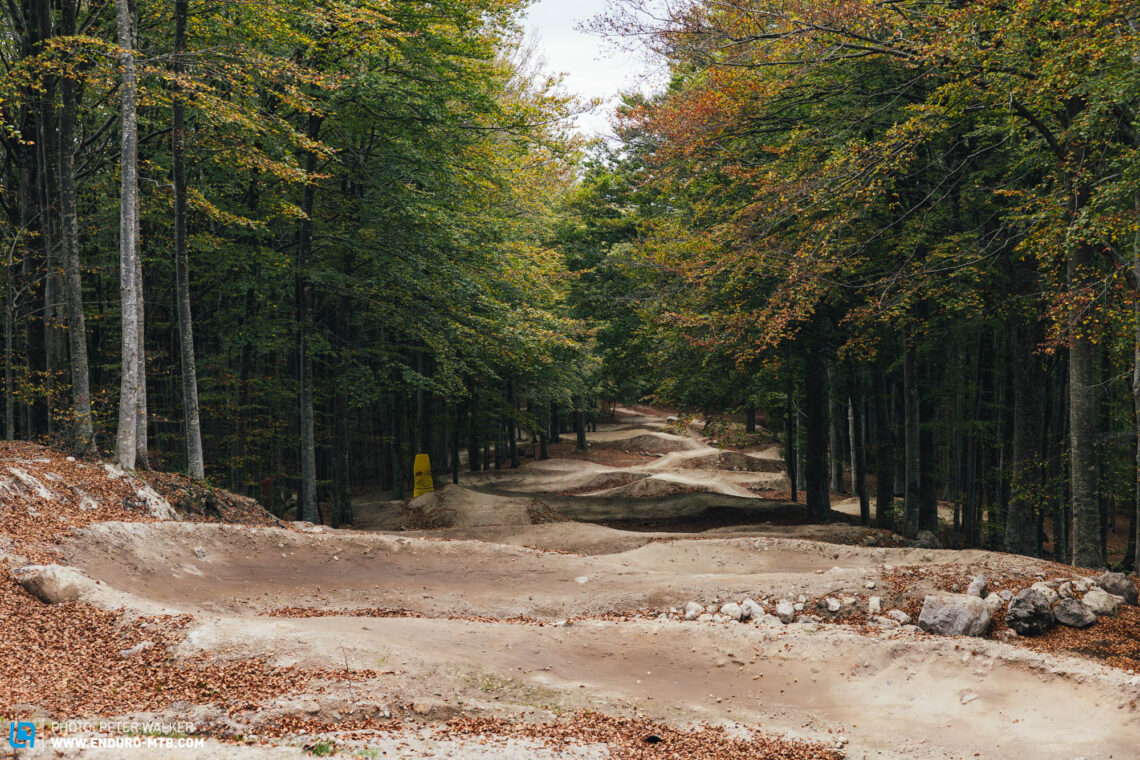
Our insider tip: The Amiata bike park in Tuscany, Italy
Have you ever heard of Monte Amiata, a 1,738 m inactive volcano in Tuscany? Neither had we until recently. While searching for a great mountain biking destination with lift support in late autumn, we came across Amiata Bike Park , which is relatively unknown in the international circuit. When we got there at the end of October, it had already shut for the season, but the guys from Tasso Trail Solution swept the leaves off the trails and fired up the old chairlift, cranking it up to full speed for the occasion. We had the bike park all to ourselves for over a week – how cool is that? Once again, a big thank you to everyone involved, especially to those who spent hours clearing the trails with leaf blowers, lifting our bikes out of the chairlift for days on end and popping beers open with us in the pizzeria in the evening.
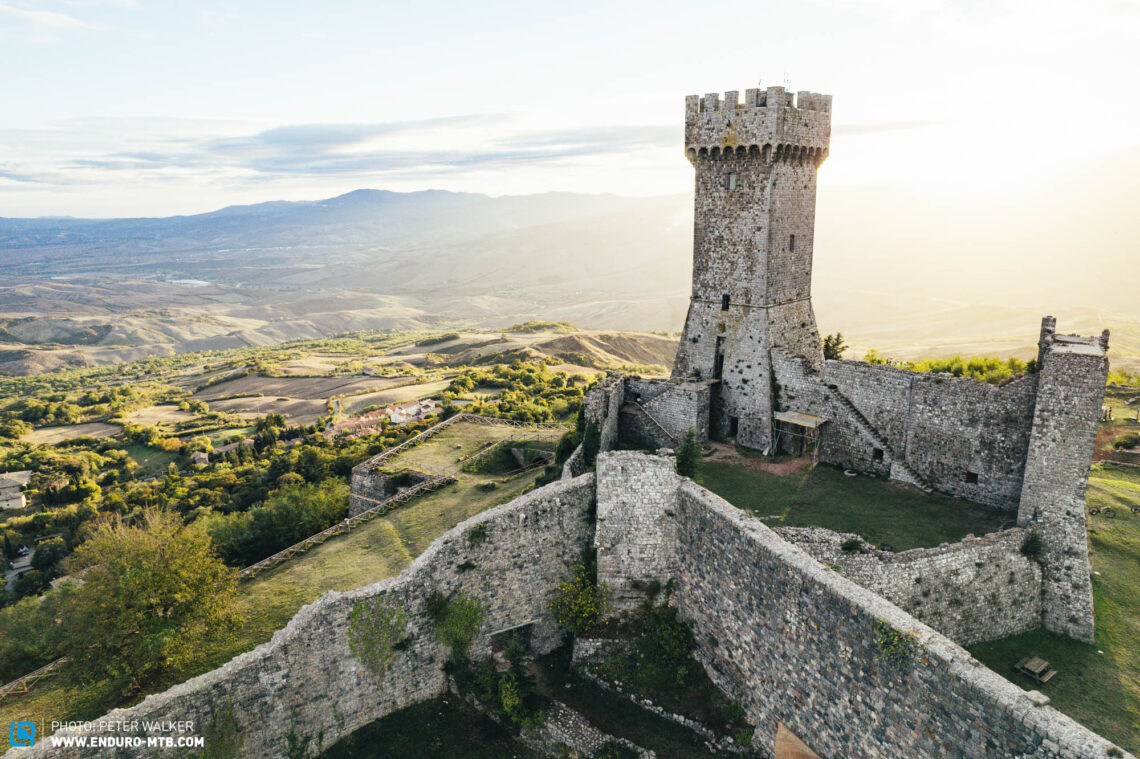
Luckily for us, all the trails were still in excellent shape, and – even better – incredibly good to ride in the wet. Yes, our idea to escape the cold, wet German autumn didn’t quite work out… We highly recommend that you add the Amiata Bike Park to your bucket list. There’s also a bike shop next to the lift, where you can hire a bike and get spares and equipment. During this test, it served as our base, allowing us to set up the bikes and fix mechanicals. At the back of the store, there’s a big workshop that has everything you need to get your bike back on the trails if something goes wrong.
Incidentally, the lift’s valley station is a little further up the mountain, but right in front of the Hotel Le Macinaie we stayed at, which made logistics much easier for us, and it also has a restaurant with a full-size Italian espresso machine – which can’t be missing on a long day at the office! There are more bars scattered around the bike park, where you can enjoy a cosy lunch or a drink. We highly recommend the Bar Jolly , which serves really tasty food and is also super bike-friendly.
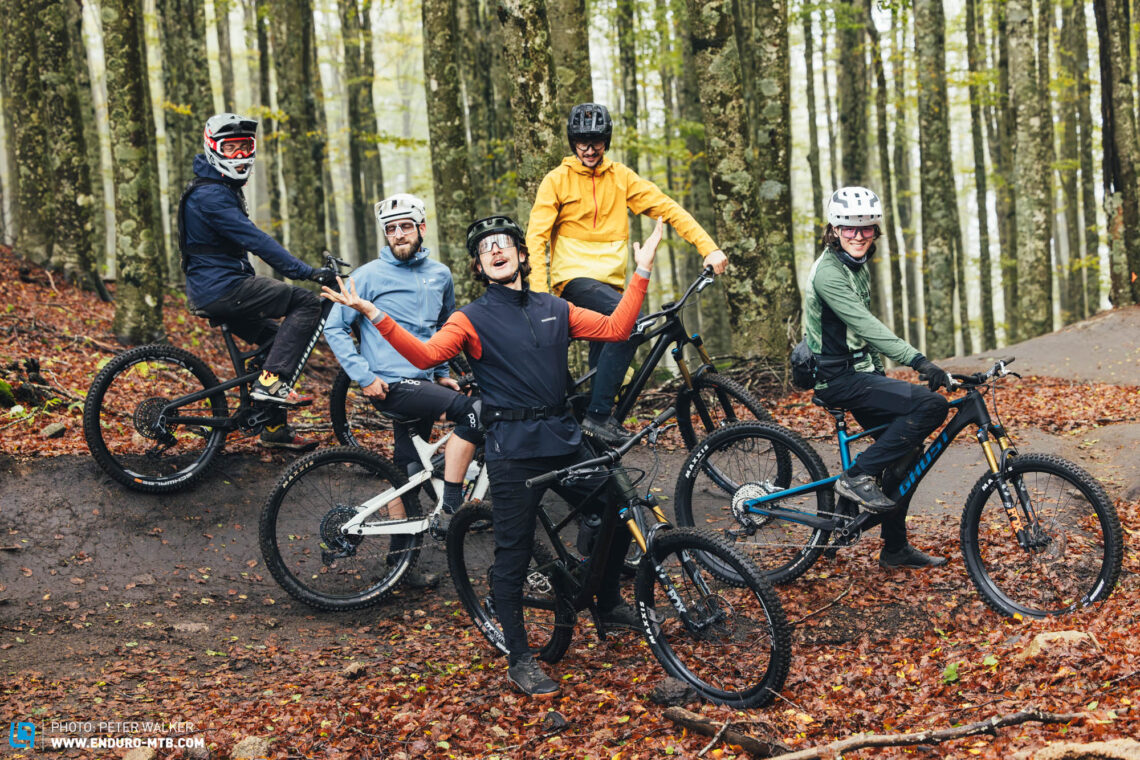
Our big trail bike comparison test in numbers
Raise the curtain for our numbers!
is the total price of the bikes in this group test. € 33,799 more than last year’s group test
- Which featured one less bike.
- But didn’t include any ebikes.
is the average bike price. € 8,329 is the average price excluding ebikes.
- € 985 more than in the last test.
is the price of the three cheapest bikes in this test, the YT Jeffsy CORE 5 CF , GHOST Riot Trail Full Party and Cannondale Habit LT 1 .
is the price of the most expensive bike, the Specialized S-Works Turbo Levo SL , making it more than twice as expensive as the cheapest bikes.
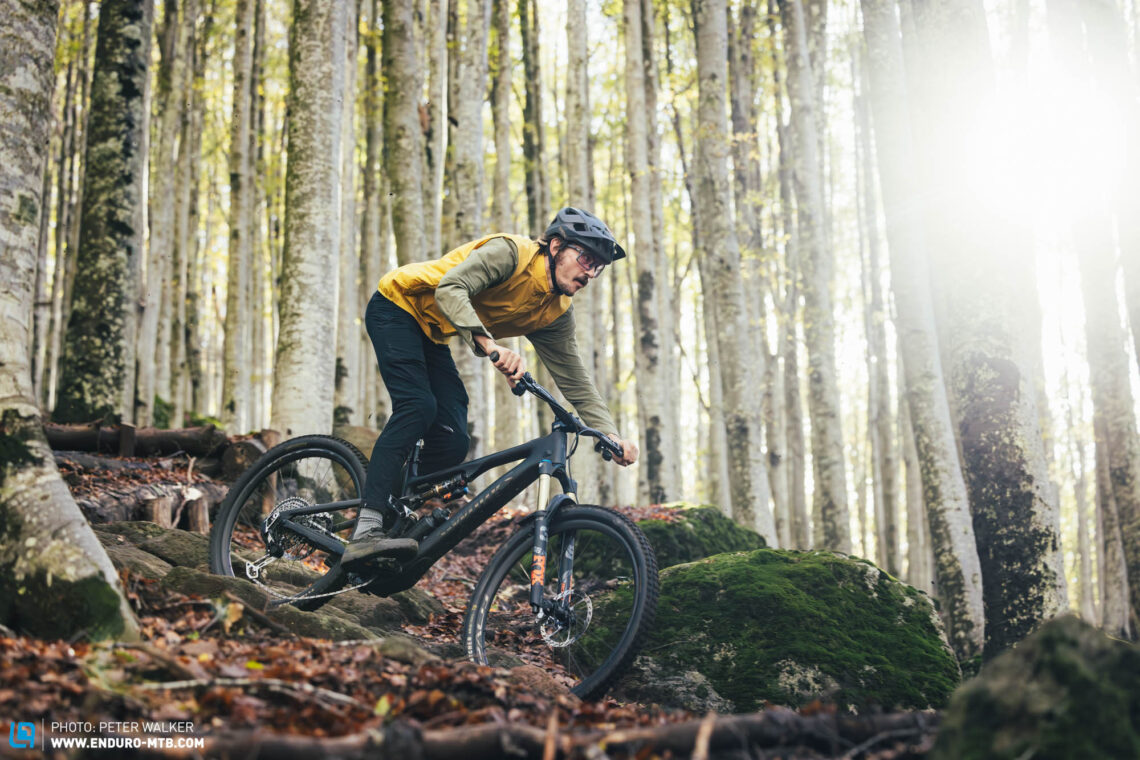
160/155 mm (F/R)
combines the bike with the most travel.
140/120 mm (F/R)
offers the bike with the least travel.
Average front travel: 154 mm Average rear travel: 143 mm
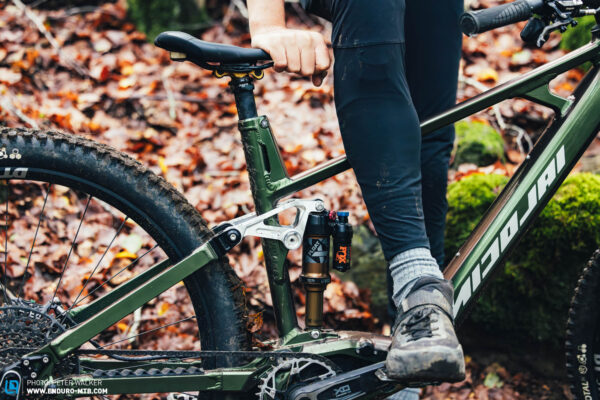
The lightest bike on test weighs 13.4 kg The heaviest analogue competitor tips the scales at 15.4 kg
17.5 kg is the weight of the lightest light eMTB in test. 20.9 kg for the heaviest light eMTB.
The bikes weigh on average.
Average weight in our latest enduro bike group test: 16.6 kg Average weight in our latest downcountry bike group test: 11.4 kg

13 bikes are full 29ers.
0 bikes roll on two small 27.5″ wheels., 2 bikes have a mixed wheel setup, aka mullet.
(both of which are ebikes).
bikes have an integrated storage compartment or mini tool.
2 bikes come equipped with RockShox suspension. Both of which combine a Lyrik fork and Super Deluxe shock.
None of the bikes rely on mixed suspension, with components from different brands.
13 bikes have FOX suspension. 12 of which come with a 36 fork. Only one bike relies on a 34 fork. 10 bikes have a Float X shock. 2 bikes have a Float DPS. 1 bike comes with a Float X2 shock.
9 bikes rely on SRAM CODE four-piston brakes. 2 bikes feature Shimano XTR four-piston brakes. 1 bike has Shimano XT four-piston brakes. 1 bike comes equipped with Formula Cura 4 four-piston brakes. 1 bike specs Hope Tech 4 four-piston brakes. 1 bike has SRAM Level four-piston brakes , which unfortunately don’t provide enough braking power for a trail bike.
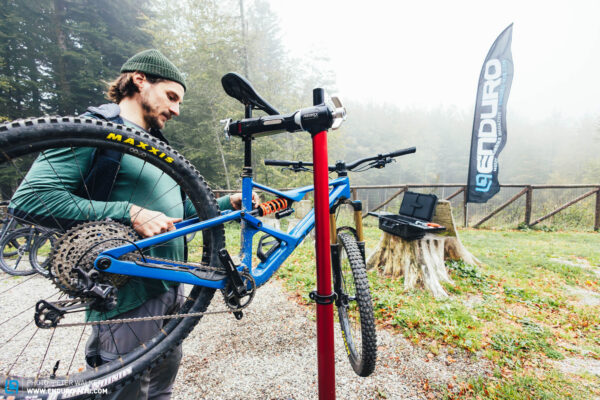
7 bikes rely on 200 mm brake rotors
front and rear.
None of them use big 220 mm discs.
8 bikes rely on a 180 mm brake rotor.
at the rear, which overheats quickly, resulting in an inconsistent bite point and potentially leading to painful arm pump.
1 bike relies on 180 mm brake rotors
front and rear, which don’t do justice to the bike’s character and intended use.
Average brake rotor size in our 2024 trail bike group test: 194 mm Average brake rotor size in our 2022 trail bike group test: 194 mm Average brake disc size in our 2022 enduro bike test: 202 mm
14 bikes have a carbon main frame .
1 bike employs an alloy frame ..
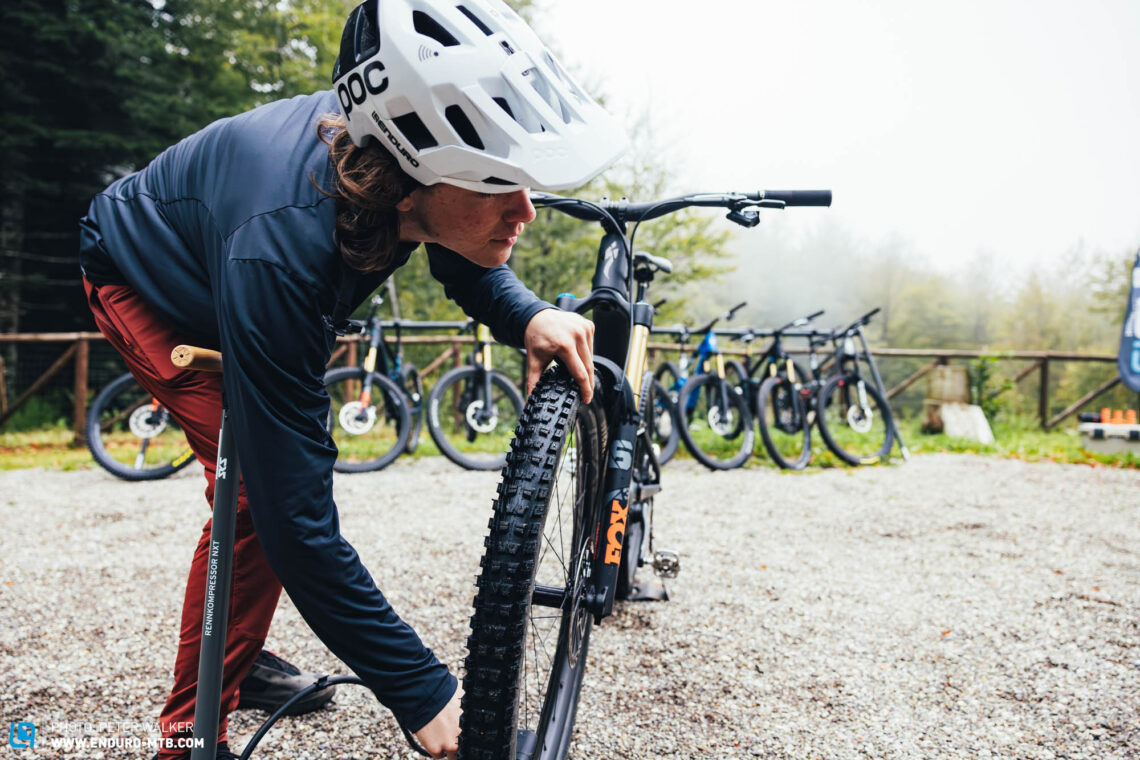
4 punctures and 0 crashes during our test runs. 1 wheel didn’t survive the testing session.

Our test criteria: What defines a good trail bike?
The perfect trail bike shines with strong all-round characteristics, uniting supposed opposites without compromising on the virtues of either. In other words, it’s a harmonious balance between the spec and character of the bike. To define the latter and thus provide you with the best possible advice for your purchasing decisions, we don’t use a rigid scoring system and prefer to provide you with a holistic evaluation of the bike. When it comes to the components, it’s not the price tag or bling factor that matters, but rather how the individual parts harmonise with each other and how they perform together as a whole on the trail.
To help you understand our testing procedures, we’ve summarised the most important criteria for our 2024 trail bike group test.
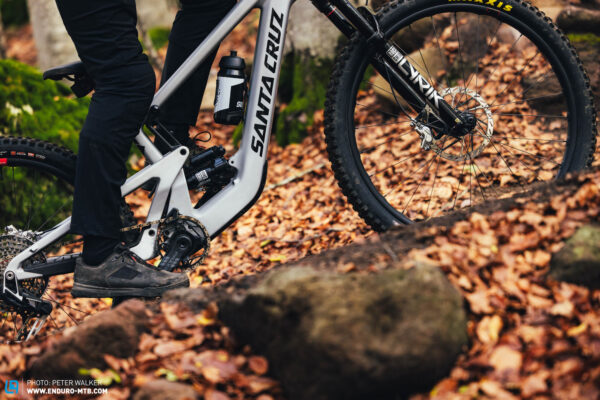
What makes a trail bike the best climber?
Without climbing there’s no descending! And since with trail bikes we tend to make our way to the trailhead solely with the power of our legs, climbing performance is paramount. Therefore, the perfect trail bike must offer a comfortable pedalling position without putting too much pressure on your hands, thus enabling long days in the saddle. At the same time, it’s crucial to have enough weight on the front end, as this allows you to comfortably negotiate steep climbs without having to actively weight the front wheel to keep it tracking.
Needless to say, the rear suspension also has a major effect on the bike’s climbing qualities and should therefore be as efficient and pedal-neutral as possible, even without activating the climb switch. This will ensure sufficient traction even on technical climbs, allowing you to negotiate nasty root carpets and smaller obstacles while at the same time providing a higher level of comfort than a locked-out platform. Just one of our competitors relies on a bar-mounted lockout lever, allowing you to quickly adjust the suspension to the riding situation, but also creating a little confusion on the trail with countless levers in the cockpit. Weight and rolling resistance also play a decisive role when riding uphill, especially when accelerating from a standstill. Once the mass is in motion, however, weight only plays a secondary role, while shallow-profiled tires with hard rubber compounds tend to spin out of control all too easily in loose terrain.
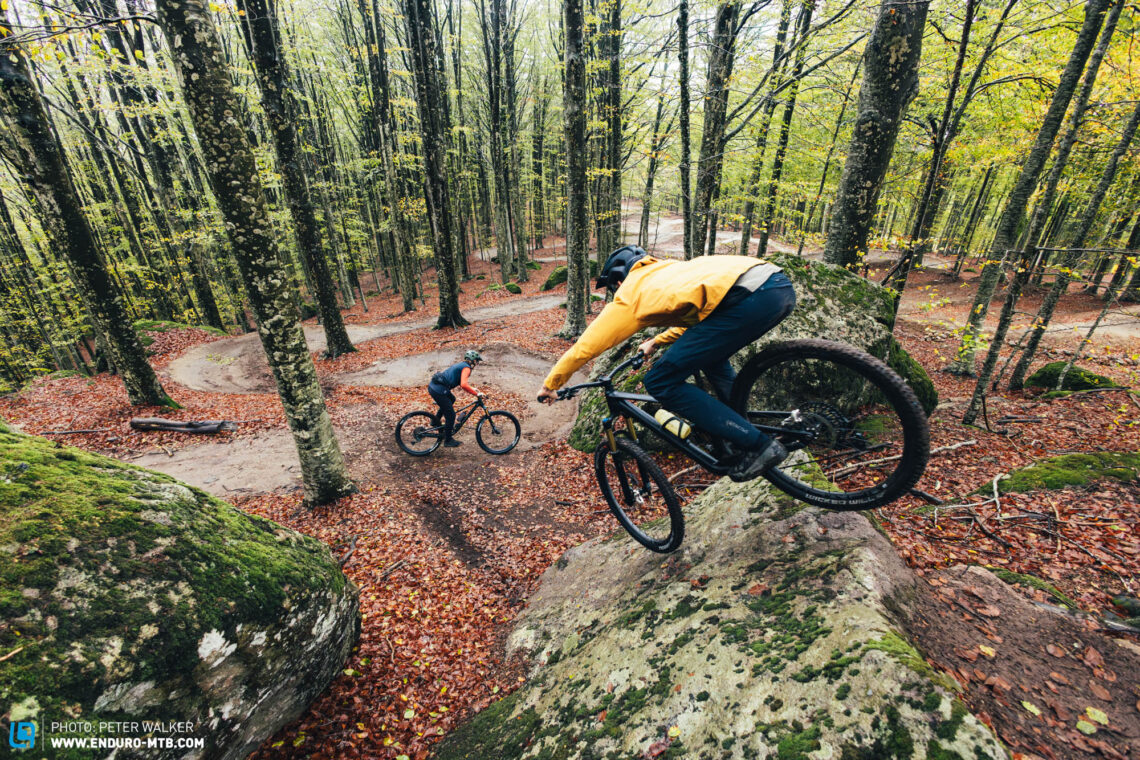
Which handling characteristics are typical of trail bikes?
Trying to determine the handling of a bike based on isolated geometry values isn’t just wrong but also risky. Despite some near-identical geometry on paper, handling differs enormously, with the suspension, the relationship between measurements (i.e. reach to stack ratio) and the setup playing a major role. A good trail bike positions its rider centrally, is intuitive and easy to ride, and also forgives the odd riding mistake. Regardless of whether you’re an inexperienced rider or just exhausted after an epic day in the mountains, intuitive and predictable handling is a godsend. However, some bikes are the exact opposite, requiring a great deal of concentration and excellent riding skills, forcing you to actively shift your weight around the bike to generate traction. If you’re not 100% in control, even small distractions can quickly lead to a crash. In a nutshell, the more intuitive the handling, the faster and safer you can ride a trail bike.
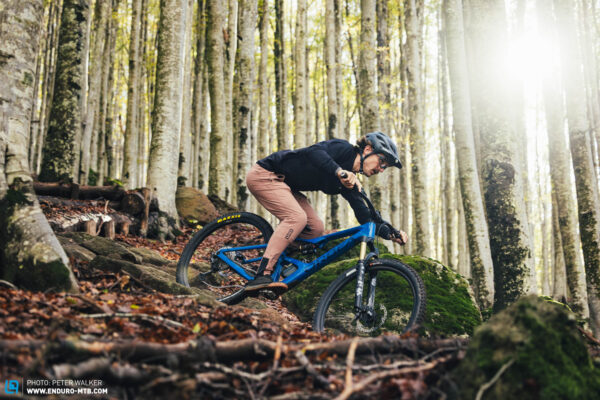
Composure vs agility
Although no two riding qualities are quite as antithetical, the best trail bikes manage to combine them. Composure isn’t just about bombing through a rock garden at full pelt but also about having sufficient reserves to swallow big hits and make you feel safe in the process – which is what encourages us to ride fast in the first place! Agility is the word we use to describe a bike’s ability to move and change direction quickly and efficiently, and thus how easy it makes it to snake through a narrow trail.

What should the perfect trail bike suspension be capable of?
The performance of a trail bike’s suspension isn’t determined solely by the quality or characteristics of its components, though it is heavily influenced by the shock tune and setup. Simply put, there’s only one way to find out how your suspension performs: taking your bike to a trail! The perfect suspension is a fine compromise that combines a high level of traction and responsiveness with sufficient mid-stroke support, lots of pop for playful riding manoeuvres and good reserves for botched landings. Bikes like the Specialized S-Works Turbo Levo SL and the YETI SB140 LR gobble up nasty impacts with ease, and still generate lots of traction, allowing you to focus on the trail ahead. Nonetheless, they don’t swallow up the rider’s input like a sandbag, allowing you to play with the terrain and pop off features on the trail as well.
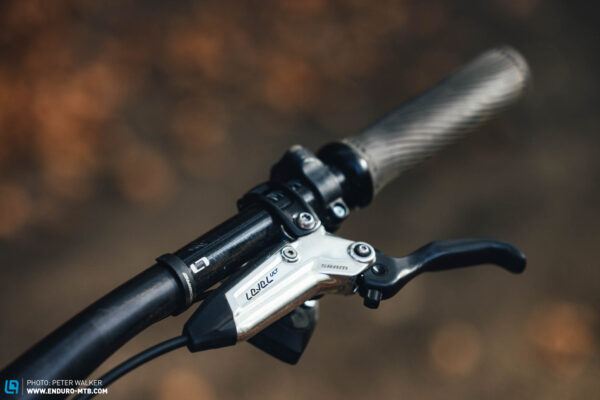
What does the perfect trail bike spec look like?
We all just want to ride our bikes and hate wasting time fixing this or that on the trailside. That’s why it’s crucial to choose your spec according to the intended use. However, many bike manufacturers are still cheating to keep the weight down and make their bikes look better on paper and shop floors!
Without a doubt, the brakes are the most important component on a trail bike. Not only are they your guardian angel in hairy situations, but they also have a huge influence on arm pump and fatigue, which in turn can be seriously detrimental to your safety. As a logical conclusion, saving weight on the brakes isn’t just thoughtless, but also incredibly dangerous! However, our 2024 trail bike group test proves that many manufacturers agree with us and features more powerful brakes and bigger rotors than any of our previous group tests – keep it up guys! Only Mondraker’s light eMTB, the Neat RR SL, comes with undersized brakes, which are actually designed for XC riding. We recommend upgrading the brakes, as this limits the bike’s potential and safety enormously.
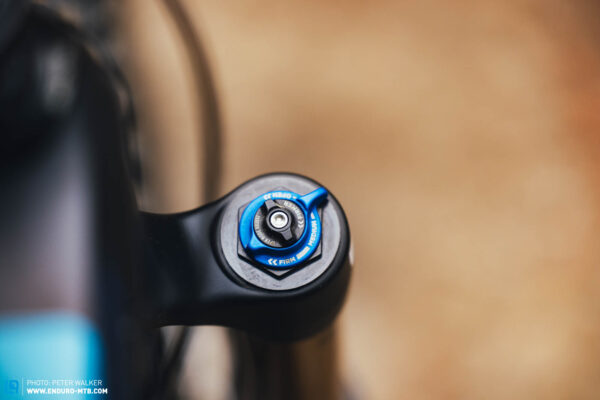
Manufacturers also like to skimp on drivetrains, combining high-end rear derailleurs with cheaper shifters. While this might look great on the shop floor, it doesn’t bring any advantages to the trail because the quality of the shifter is key to smooth shifting performance, and basic models lack some of the practical features of their high-end counterparts, thus making a bling rear derailleur totally pointless. The same goes for the cassettes, but this is only a concern in terms of weight and durability, and doesn’t particularly compromise the performance on the trail. The GHOST RIOT Trail Full Party is a good example of this tendency, pairing a high-quality XT rear derailleur with a cheaper SLX shifter, which doesn’t support the derailleur’s full range of functions, meaning that you’re riding around with expensive technology you can’t even use. Furthermore, the GHOST also features a bling FOX 36 fork with fancy Kashima coating, which bears the distinctive look of the Factory flagship model. Upon closer inspection, however, the fork employs the cheaper FIT4 damper, which doesn’t even get close to its top-tier GRIP2 counterpart in terms of trail performance.

For some brands, unfortunately, speccing lighter, less robust tires is still a great way to make their bikes look better on paper. As far as rubber compounds go, it makes sense to combine a softer, grippier compound at the front for traction and control, with a harder compound at the rear to ensure lower rolling resistance and a longer service life. The tire casing, on the other hand, should be chosen according to the character and intended use of the bike, as well as the type of wheelset used. Unlike alloy wheels, carbon rims only know two scenarios with nasty impacts, either getting away entirely unscathed, or landing straight in the bin. That’s why carbon rims should always be paired with a robust tire casing, not least because they’re significantly more expensive. On the other hand, a dented alloy rim isn’t that big of a deal and won’t necessarily ruin your day. Moreover, a robust casing allows you to run lower tire pressures, ensuring more traction and additional damping, both with smaller vibrations and bigger impacts. In addition, some trail bikes in this group test come standard with shallow-profiled tires, which might roll extremely well in dry conditions, but quickly get you in pickle on wet, muddy terrain. In a nutshell, a more aggressively-profiled tire at the front generates plenty more traction and has a very small effect on rolling resistance, because there’s far less pressure on the front when climbing.
Unfortunately – and this is a big one – very few bikes in this test have a spec which does full justice to the potential of the bike and its intended use. This is why we’ve added a “Tuning Tips” section at the bottom of each review, suggesting the most beneficial and cost-effective upgrades to get the most out of the bike.
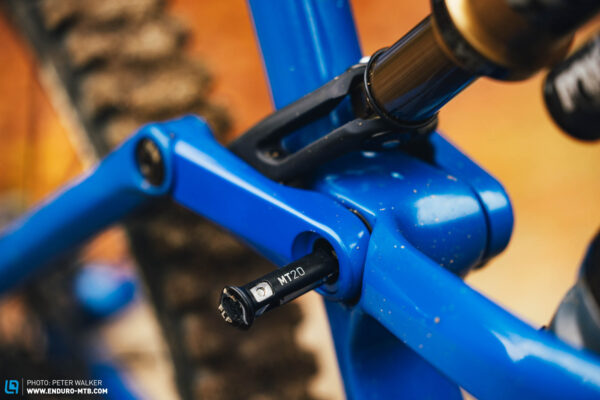
Which clever features and detail solutions should be standard on a modern trail bike?
Clever and useful frame features can, albeit indirectly, boost the fun factor of a trail bike enormously. For example, additional storage options such as an integrated storage compartment or tool mount allow you to leave your backpack or hip pack at home, making your rides more comfortable. On the other hand, threaded bottom brackets make it easy to replace worn bearings, saving you precious time and embarrassing swearfests. All bikes in this group test have at least one bottle cage mount, while integrated storage compartments and tool mounts seem to be rather the norm than the exception. However, the systems differed greatly in quality and ease of use, and no one really likes to fiddle around with a finicky storage compartment when a pinch flat has already put you in a foul mood. In this respect, more is always better, and every additional storage option is one less object (or several) you have to carry on your body. This also helps reduce the risk of injuries, because falling on a mini tool or CO2 cartridge ain’t fun! Internal cable routing, frame protection, universal spares and additional plastic covers like mudguards help to reduce wear while increasing the fun factor and improving the look of the bike. Generously-sized protectors on chainstays, seat stays and the down tube ensure a quiet ride and protect the frame from stray rocks. All of the bikes in this test feature SRAM’s UDH universal mech hanger, which can be found in most bike shops around the world, and is easy to replace. By contrast, conventional derailleur hangers are specific to the frame, and can be difficult to get hold of in a pinch.
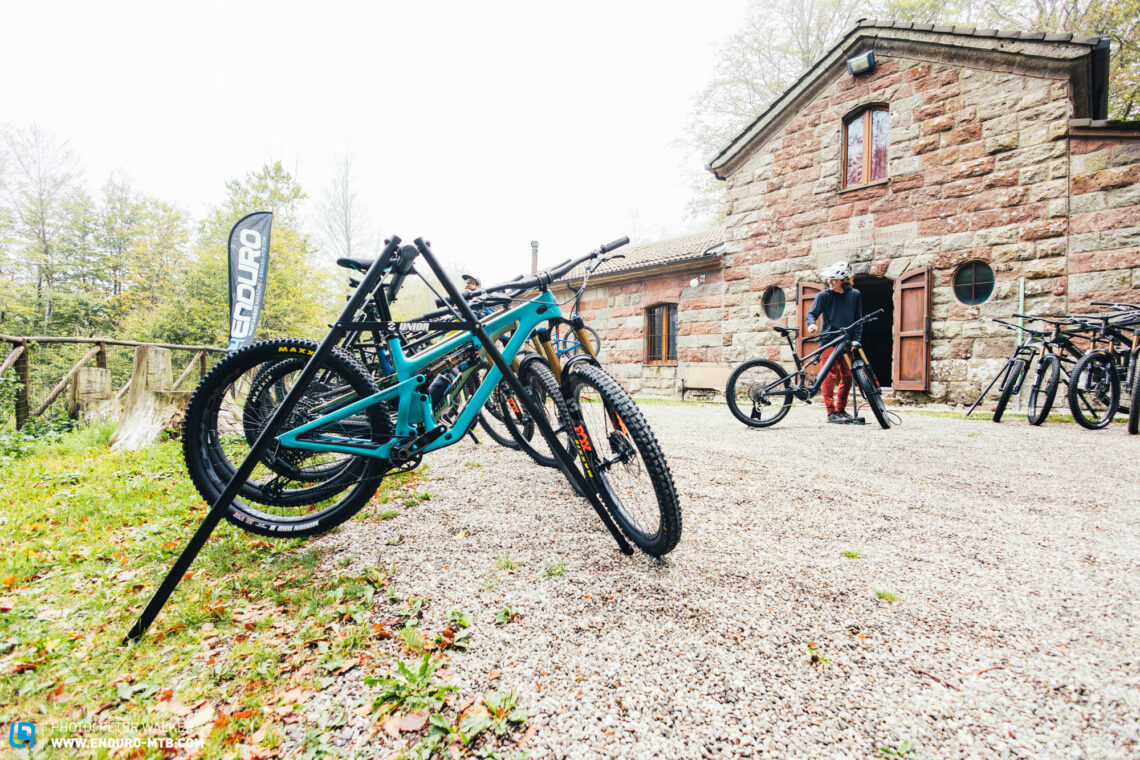
Does the spec list of a trail bike speak for its performance?
In this group test, price only plays a subordinate role. It’s not that we don’t care about money, but we’re deeply convinced that the price of a bike should always be commensurate with its performance. That’s why we don’t calculate value for money based on the spec list of a bike or the amount of bling you get for your dosh. We’re more concerned with how a bike performs on the trail, and how it benefits the rider. What’s the point in rocking the hottest components available on the market if the bike rides like a milk carton? Even pricey bikes with lower-end specs can offer good value for money, provided they deliver where it really matters, in the same way that supposedly cheap bikes with good components can get a bad rating if they don’t deliver on the trail. What really counts is the interaction of all elements, from the suspension through the geometry all the way to the spec. And that’s exactly why the huge price gap of over € 8,000 in this group test is actually irrelevant. On the contrary, it will help you understand what’s important to you, and what you actually need!
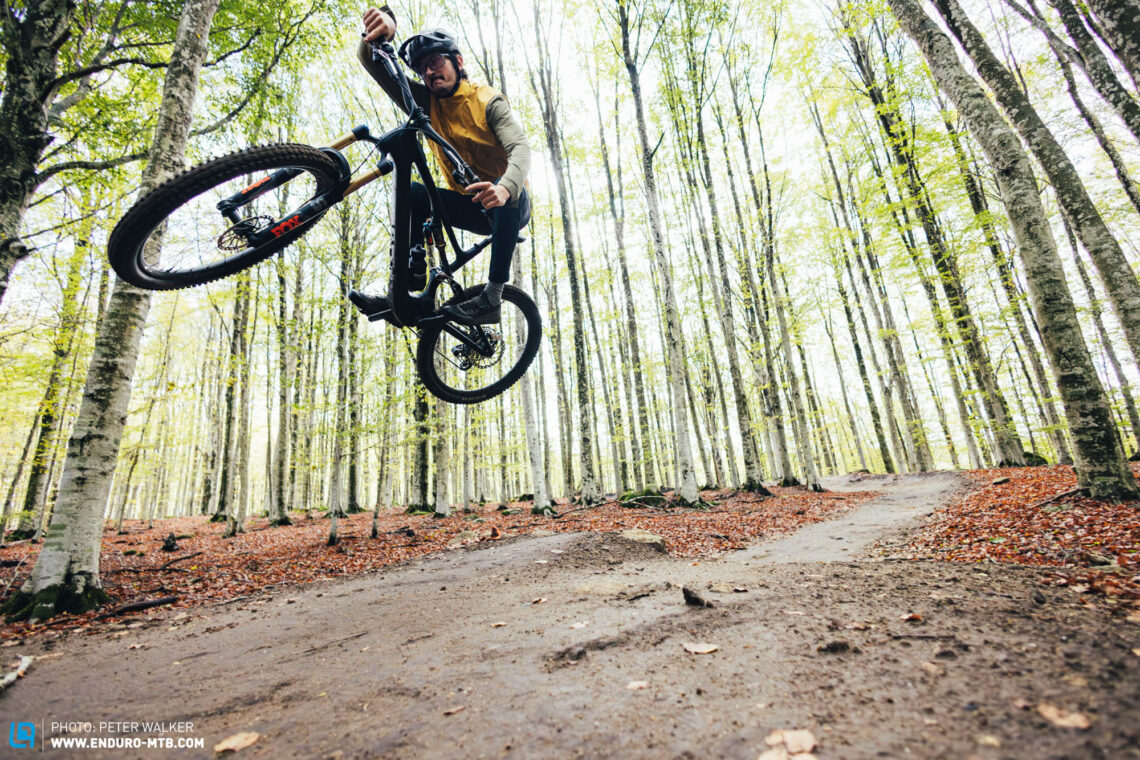
Analogue trail bike or Light eMTB?
Sometimes, the differences between analogue trail bikes and light e-mountainbikes only become evident upon closer inspection. This is mainly down to the fact that compact motor systems, like the Mondraker’s TQ-HPR50 and the Specialized SL 1.2 drive of the Levo SL, allow for a discreet, seamless integration into the bike’s bottom bracket area. The Bosch SX motor of the NICOLAI and the FAZUA Ride 60 in the Santa Cruz, on the other hand, are slightly bulkier, but also deliver more oomph, ensuring a more distinctive shuttle feeling. In other words, they support you more eagerly than their two compact opponents on your way back to the trailhead. Given that the motor system has a massive influence on the bike’s character and handling, you should get familiar with the different concepts before committing to one system in particular, and know exactly what you want from your new light e-mountainbike. Long shuttle laps or a natural ride feeling? A removable battery you can complement with a range extenders, or software that tells you how much time you spent in the air? Anything is possible, you just have to pick your weapon of choice. You might find it helpful to read this in-depth motor comparison test on our sister magazine E-MOUNTAINBIKE, where we pitted the four motor systems against each other.
Overall, our latest 2024 trail bike group test has clearly shown that light e-mountainbikes can deliver just as impressive a trail performance as their analogue counterparts, offering similar handling characteristics and a comparable level of agility – and in some cases have even more pop and agility than their non-electric rivals! It’s not the weight, but rather the geometry and rear suspension kinematics of a bike that define its liveliness and manoeuvrability, allowing you to transfer your energy into the trail without the suspension absorbing it like a sandbag. And you know what is the best thing about a light eMTB? Less power uses less energy, so you don’t have to worry about the range when using a smaller battery!

Which is the best trail bike of 2024? Winners, losers and other recommendations.
Not only did our 2024 trail bike group test expose many weaknesses and some half-baked solutions, but also demonstrated that trail bikes are indeed undergoing a process of permanent evolution, with features once highly polarising becoming standard over the years. Furthermore, lots has changed as regards to safety and trail performance, both up- and downhill. It’s also incredibly cool that one of the cheapest bikes in the test secured not only the coveted Best Buy tip but also the test victory, proving that there are still top bikes for less money out there! By the time we packed up our shit and left Tuscany, we also had some other exciting recommendations, because the test field was packed with awesome bikes! Here’s a clear overview of the test field and the individual characters of the bikes.
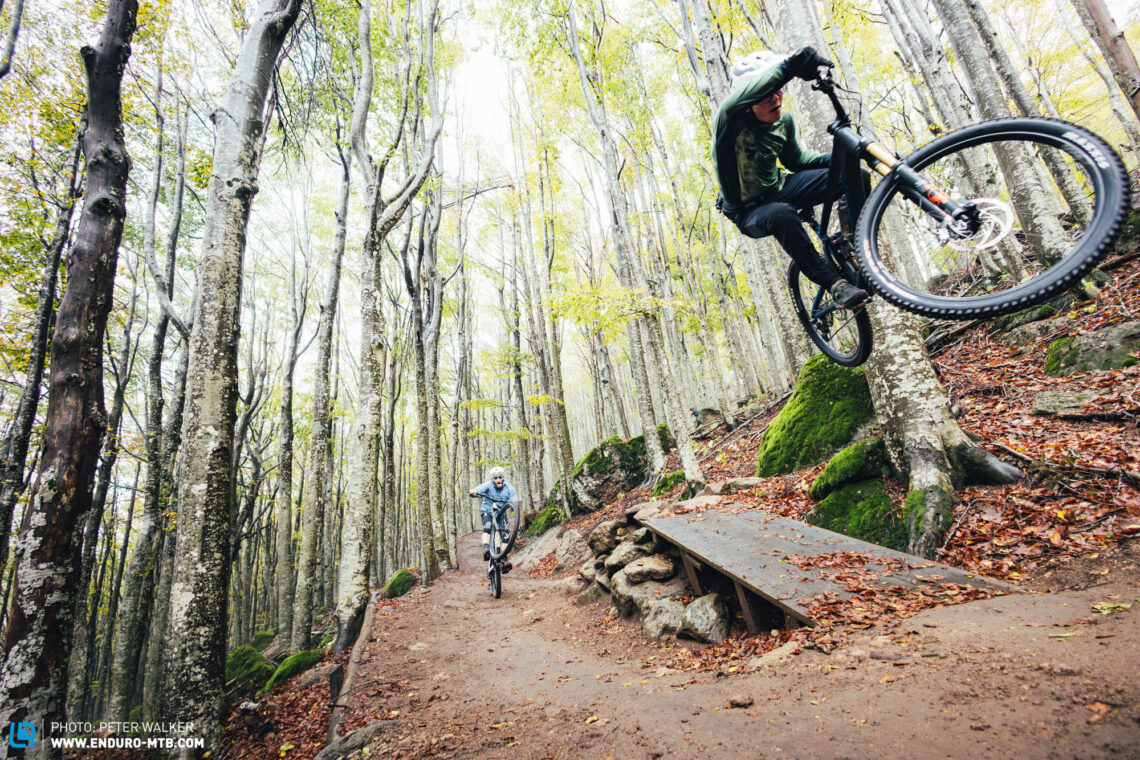
The remaining test field in our 2024 trail bike group test
Although only a few bikes rolled out of our big 2024 trail group test with a champagne bottle and a medal on their stem, most participants passed the tests with flying colours, impressing our test crew with countless cool features and unique characters.
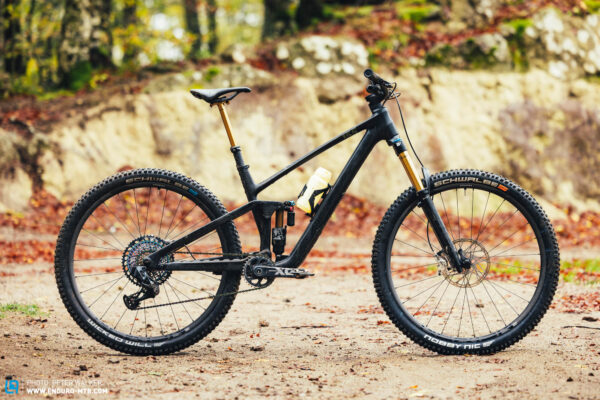
The CUBE ONE55 C:62 SLT 29 might look promising at first, but turns out to be a bit of a sheep in wolf’s clothing. On paper, you get a top-tier spec and some interesting frame features at a very attractive price. Upon closer inspection, however, it has some major flaws in the spec and fails to impress on the trail. The high front end conveys huge amounts of confidence, but the handling is somehow simultaneously sluggish yet nervous, which has a real impact on the bike’s trail performance.

As the most expensive analogue bike in this test, the MERIDA ONE-FORTY 10K convinces with a good frame platform and several clever features, like the tool strap and long-travel dropper post, which can be inserted all the way into the frame across all sizes. On the trail, the MERIDA delivers a smooth performance, but feels a little sluggish, which spoils the fun factor quite significantly. The suspension lacks a little sensitivity, but shines with tons of support, allowing it to pick up speed on flowing trails.
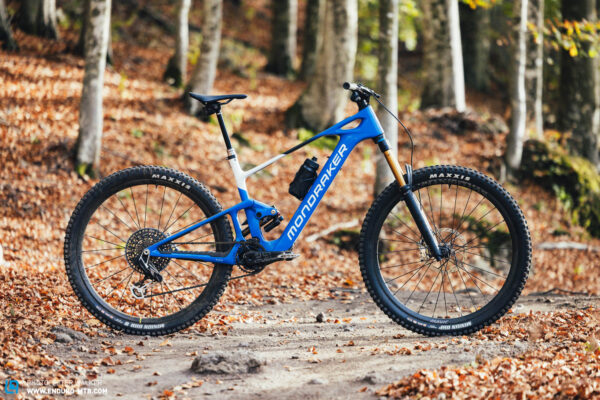
The Mondraker Neat RR SL is a potent ebike for the everyday gnar. If you pick your lines carefully, you’re guaranteed to be the fastest rider on your local mountain. One thing’s for sure: with its agile character, the Mondraker fits perfectly into our trail bike group test, despite having a motor, rewarding experienced riders with tons of feedback and fun.
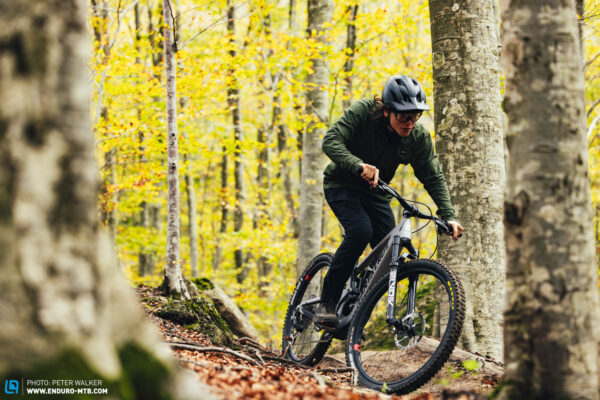
With the Santa Cruz Heckler SL XX AXS RSV , the Californian manufacturer has made a successful debut in the light eMTB segment, delivering a mean fun machine that can easily keep up with its analogue competitors. The intuitive handling makes it suitable for both beginners and experienced riders alike. The motor doesn’t affect the bike’s riding performance with its additional weight, but encourages you to squeeze in one more lap. Although it wasn’t able to secure victory in this comparison test, it’s right up there with the most fun bikes on test.

Despite generating the least rear travel on test, the SCOR 2030 X01 really drops the hammer downhill, leaving some of its long-travel competitors behind in a cloud of dust. A few spec upgrades would improve its performance even more! However, the SCOR shows its strengths above all on easy flow trails, where it transforms the mountain into a playground, as well as uphill, where you’ll fly to the trailhead with great agility and efficiency.

With its seamless integration and enclosed shock design, the SCOTT Genius ST 900 Tuned is by far the tidiest looking competitor in our 2024 trail bike comparison test. The TracLoc system and low system weight also makes it the best climber amongst the analogue competitors. Downhill, however, it requires an experienced rider who can handle the direct feedback and firm suspension, as well as the additional fatigue resulting from the unfiltered vibrations.
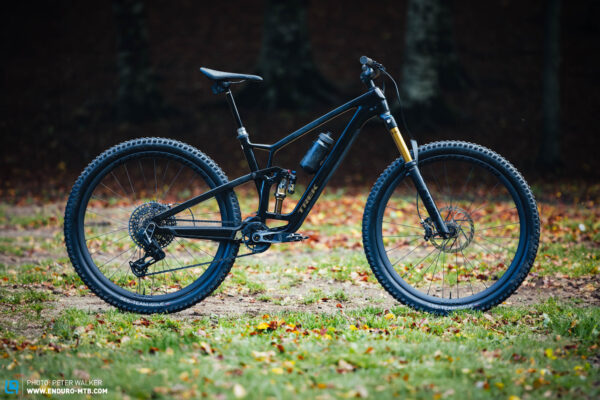
By contrast, the Trek Fuel EX 9.9 X0 AXS T-Type is discreetly understated, both visually and on the trail. However, behind the inconspicuous look hide countless geometry and kinematics adjustments, as well as smart features like the integrated multi-tool and storage compartment – all wrapped up in a high-quality finish. On the trail, the Trek’s intuitive handling and excellent feel-good factor straight out of the box make it suitable for all types of riders. The Trek handles anything you can throw at, without excelling particularly at one thing.
The best trail bike of 2024: YT JEFFSY CORE 5 CF
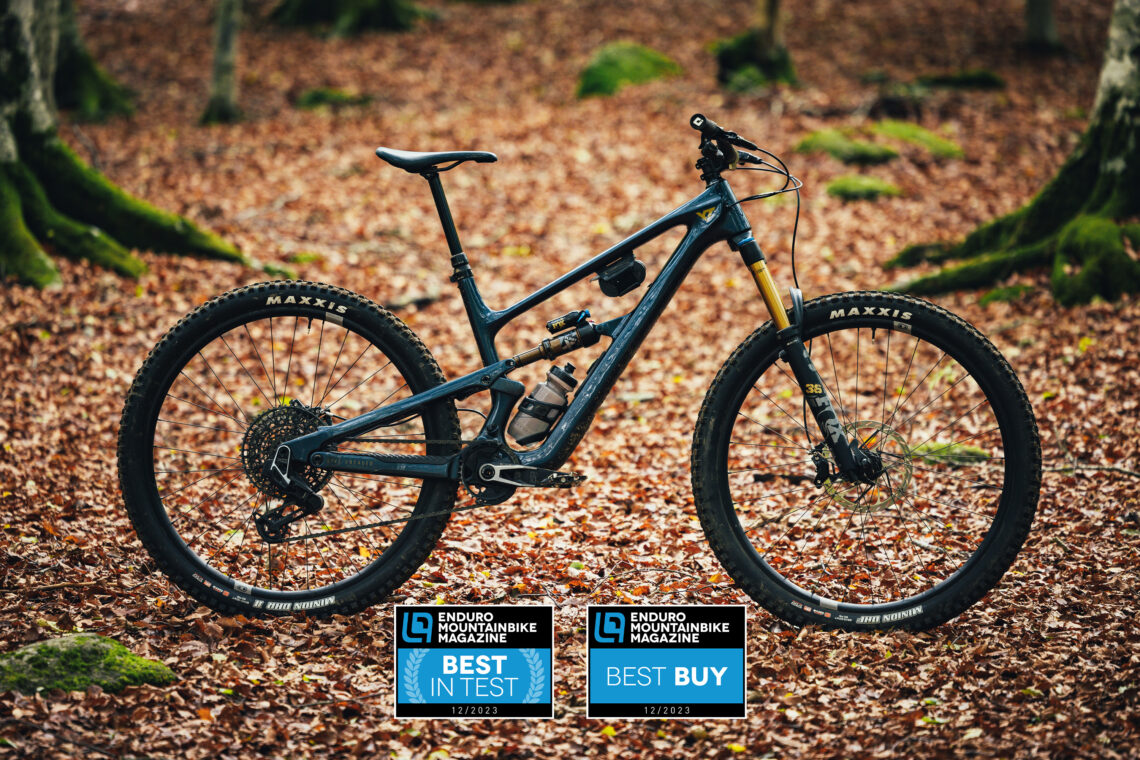
At the time of this comparison test, the YT JEFFSY CORE 5 CF hadn’t been officially released yet. As the further development of a well-proven platform, the latest descendant of the JEFFSY dynasty comes with plenty of useful features, like the integrated storage compartment. Retailing at € 5,999, it’s the most affordable bike in the group test and yet features a top-tier spec that perfectly matches the bike’s potential – we struggled to find many things we would want to improve. On the trail, the YT slaps a massive grin on your face and makes you feel at ease from the get-go, striking an excellent balance between agility and composure: whether you want to plough your way through rock gardens at Mach 10 or flick the rear end from one berm into the next with a loud braaap, the JEFFSY is up for it! No trail bike in this comparison test combines supposed opposites like agility and composure as harmoniously as the JEFFSY – and the price/spec ratio is second to none! As a result, the YT JEFFSY CORE 5 secures not only our coveted Best Buy badge but also the test victory. A double award is very rare for us – YT has succeeded with the JEFFSY. Chapeau!
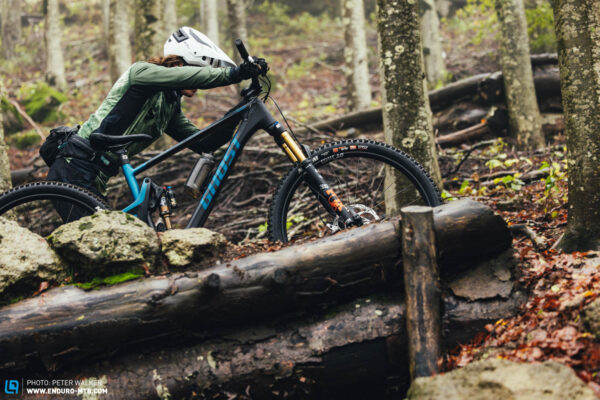
The bitter lemons in our 2024 trail bike comparison test
Although we don’t particularly enjoy picking losers in a comparison test, it’s important to us to be as honest as possible when it comes to helping you out with your next purchase decision. Unfortunately, this also includes advising you against some bikes if necessary. Nothing is more frustrating than spending your hard-earned money on a bike that delivers far less than it promises, especially if there are bikes that offer significantly more for the same or even a lower price.
While its name suggests an authentic party animal, the GHOST Riot Trail Full Party hides in the kitchen when the music gets loud. The spec might look promising on paper but some of the components suggest a level of performance they can’t deliver. On the trail, the plush suspension generates good traction but offers little support, absorbing the rider’s input like a sandbag. In addition, the RIOT Trail is neither agile nor composed. One positive aspect is the intuitive handling, which makes it a good choice for beginners who won’t push it too far beyond its comfort zone.
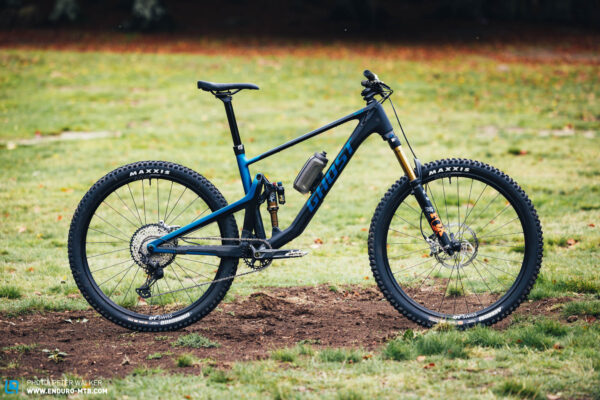
Unconventional looks meet an unconventional riding experience! The NICOLAI SATURN 14 Swift HRZ 2023 is exotic in all respects, in terms of handling, manufacturing process and aesthetics. The combination of finely machined parts, alloy tubes and coarse weld seams sets it apart from the crowd. However, the riding behaviour is rather exceptional too, requiring a great deal of effort to get used to the peculiar handling. This costs the SATURN precious points and pushes it right back to the bottom of the test field.
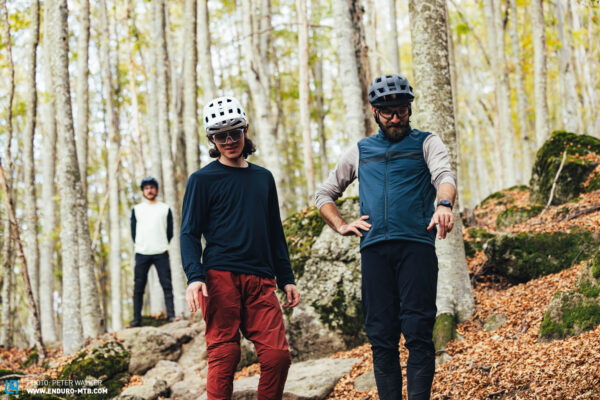
More exciting trail bike recommendations from our 2024 group test
The Specialized S-Works Turbo Levo SL emerges as the best light e-mountainbike in our 2024 trail bike group test, and only misses out on the Best in Test title by a hair’s breadth. The Levo SL is the perfect choice for riders who can’t do without motor assistance, but also want balanced, smooth-performing suspension – by far the most impressive in this test! Specialized rely on their extraordinary ebike know-how to deliver a belter of a bike with a top tier spec and some clever detail solutions that burst with confidence – and rightly so, because it’s amongst the best performing bikes in the entire test field.

The Cannondale Habit LT 1 takes on whatever you throw at it. The price-friendly spec is cleverly chosen and perfectly matches the bike’s potential and range of applications – save for a few minor upgrades. The Habit LT 1 delivers an excellent performance on the trail, impressing above all with its well-tuned rear suspension. The intuitive handling strikes a good balance between composure and agility, ensuring lots of fun on the trail without reaching its limits on demanding trails.
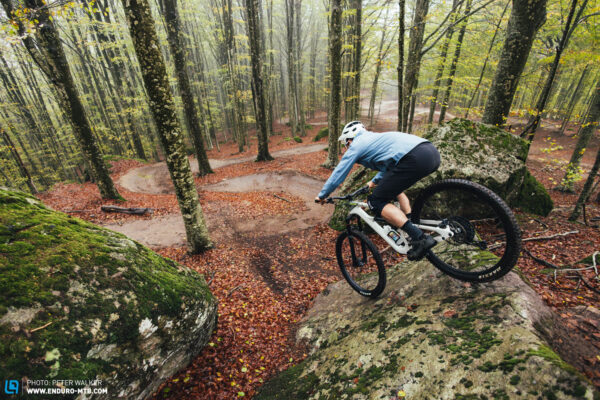
While the Santa Cruz Hightower X0 AXS RSV 2023 might not look spectacular on paper, it comes with a few clever, well-implemented features, like the Glovebox storage compartment in the down tube. On the trail, the Hightower is a strong all-rounder and a real joy to ride, and significantly more capable than many of the other trail bikes in this test. It might not be the ideal bike to get rowdy, but makes up for this with very agile, fun handling, ranking alongside the best bikes in this group test.
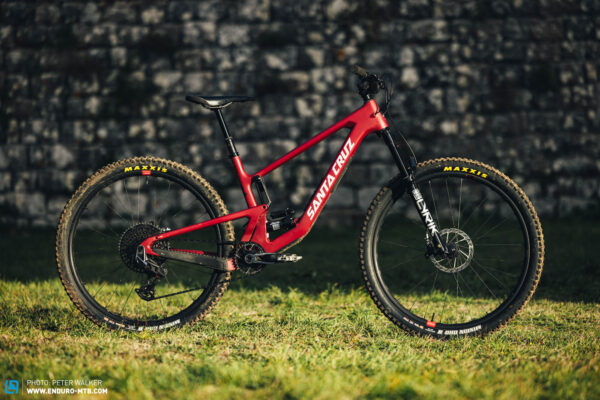
The YETI SB140 LR T3 X0 proved an excellent trail bike all-rounder that lives up to its “one bike for everything” claim. Despite the lack of a storage compartment and tool mount, it features many functional, well thought-out frame details. The SB140 LR delivers an impressive performance on the trail and only misses out on the test victory by a hair’s breadth. Simply put, it’s a mean cornering machine with ridiculously good suspension, regardless of the type of trail.
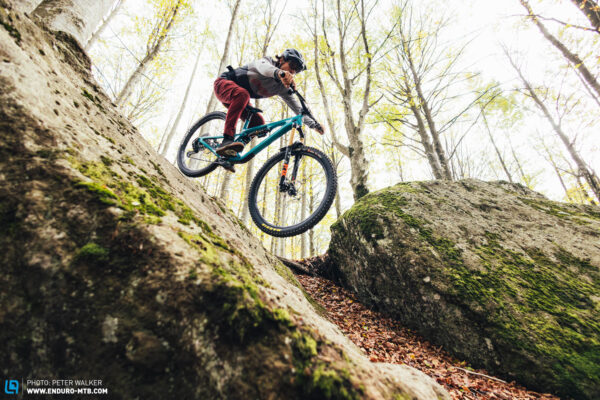
The Orbea Occam LT M10 is built around a clever, versatile frame platform that allows you to customise the spec and look of your bike using Orbea’s extensive MyO configurator. With its comfortable pedalling position and pedal-neutral suspension, the Occam is an excellent climber and, as soon as you point its nose into the valley, it delivers the finest downhill performance in the entire test field, impressing with predictable, confidence-inspiring handling – though this comes at the expense of agility. Overall, the Occam is an outstanding trail bike with its foot in the enduro door, and the optimal choice if you’re looking for a versatile trail rocket.

You will find the biggest surprises and most important findings from our 2022 trail bike test as well as an outlook on the future of trail bikes in this separate article.
Are trail bikes not capable enough for you, or are you looking for a more relaxed bike for moderate trails?
Then you should take a look at our other recent comparison tests:
- The best enduro bike
- The best downcountry bike
- The best light e-mountainbike
- The best bike park bike
- North America’s Finest Bikes
Did you enjoy this article? If so, we would be stoked if you decide to support us with a monthly contribution. By becoming a supporter of ENDURO, you will help secure a sustainable future for high-quality mountain bike journalism. Click here to learn more .
Words & Photos: Peter Walker
You may also like
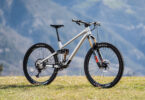
ENDURO reader survey 2024 – Win a RAAW Jibb V2

Hayes Dominion T4 – in our big 2024 MTB brake comparison test

Formula Cura 4 – in our big 2024 MTB brake comparison test

The best MTB disc brakes – 14 MTB brakes in comparison

TRP Trail EVO – In our big 2024 MTB brake comparison test

TRP DH-R EVO – In our big 2024 MTB brake comparison test
About the author.

Peter Walker
As editor-in-chief, Peter is as much a man of action as he is of words. This expert, screw-driver-flexing two wheeled-whizz has many envy-inducing characteristics, including a background in motocross, several EWS race plates to his name, and more than 150 recorded days at Whistler Bike Park. However complex the bike and however steep the trail, he’s probably already nailed it, twice. Oh, and he can do it all on skinny tyres too. When it comes to guiding consumers, Peter cut his teeth at Vancouver’s oldest bike shop and now puts pen to paper on the daily translating this know-how into our editorial plan. When not tearing up Stuttgart’s local trails while testing bikes, he loves nothing more than loading up his self-renovated VW T5 and hitting the road. The fact that he’s a trained paramedic gives his colleagues reassurance out on the trails. So far we haven’t had to call him by his alias ‘Sani Peter’, so here’s hoping he keeps it right side up for the rest of his time here!
Gear-obsessed editors choose every product we review. We may earn commission if you buy from a link. How we test gear.
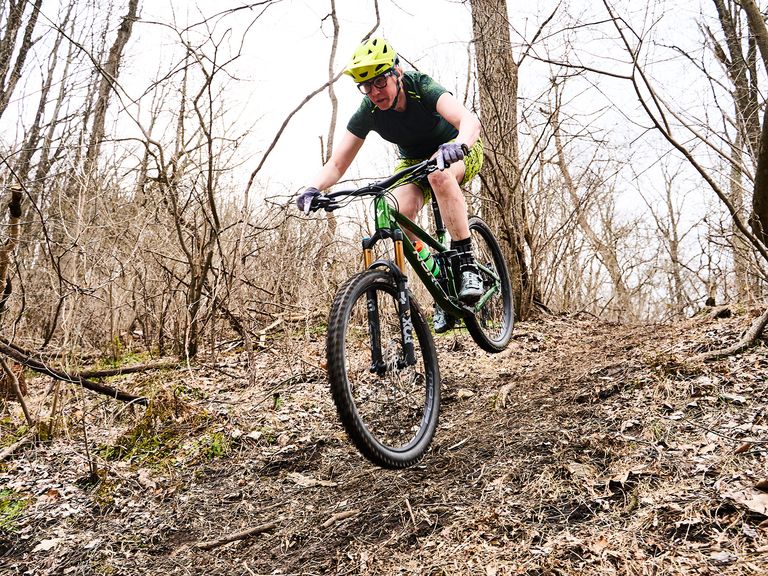
The 10 Best Mountain Bikes You Can Buy Right Now
These stellar electric, hardtail. cross country, trail, and all-mountain bikes can go anywhere and do almost anything.
When it comes to the various types of bikes , the mountain bike category is broad. There are hardtails, full suspensions, cross-country , trail, enduro, and downhill models, and they all have benefits and drawbacks to consider before making a purchase. The diversity of the breed is great for experienced mountain bikers who know exactly what they’re looking for, but it can be confusing for new riders trying to find a mountain bike that fits their needs.
With so many sub-genres, there’s no such thing as the “best mountain bike.” The best mountain bike is the one that gets you excited to get out the door and onto the trail. With that in mind, we’ve rounded up 10 of the best mountain bikes you can buy right now. There’s truly something for everyone in this guide. We’ve included budget-friendly options for first-time buyers, full-suspension trail bikes that can tackle the most rugged trails, e-mountain bikes, and fat bikes .
Best Mountain Bikes
- Dream Bike: Giant Trance X Advanced Pro 29 SE
- Best Fat Bike: State 6061 Trail+ Fat Bike
- Best Priced E-MTB: Specialized Turbo Tero 3.0
- Best Budget Hardtail: Specialized Rockhopper Elite 29
- Best $1,000 MTB: Giant Talon 29 1
What to Consider When Buying a Mountain Bike
What’s new in mountain bike design, key geometry considerations, types of mountain bikes, why you should trust us, how we tested mountain bikes, our full mountain bike reviews, q+a with our expert josh patterson, how to buy a mountain bike.
Today, buyers have the option to walk into their local bike shop, purchase from various online retailers, or, in some cases, buy directly from the brand. Each approach has its own pros and cons.
Buying from online retailers or directly from a brand comes with the benefit of having the bike delivered directly to you, which is great if you know exactly what you want and can assemble it yourself. (You can also have your local bike shop assemble it for a fee.) The ease of clicking “buy” from your phone or keyboard is offset by the fact that fitting, test rides and returns might be more involved than working with a local brick-and-mortar retailer.
Good bike shops can offer a wealth of information for first-time buyers, but sometimes, they can also be intimidating. Use your judgment: if you feel welcomed and heard at your local bike shop, consider giving them your business, but don’t feel obligated. You have other options.
Mountain Bikes and “mountain bikes”
Many first-time buyers are confused by the fact that not all “mountain bikes” are actually designed to be ridden off-pavement. In fact, most of the knobby-tired bikes you see at big box stores aren’t designed for trail riding at all. These bicycles feature frame geometry (the angles of the frame that determine how a bicycle rides) that is better suited to riding on bike paths and commuting than riding on twisty singletrack.
Given that most of these bikes are priced below $500, it should come as no surprise that they are equipped with budget components that aren’t up to the rigors of mountain biking.
During the past decade or so, mountain bikes have undergone one of the largest evolutions in their history. This includes the almost wholesale shift to 29-inch wheels and 1x drivetrains, widespread use of dropper posts and thru-axles, and major changes in geometry, including steeper seat angles, slacker head angles, longer reaches, and the use of shorter stems and wider handlebars.
Some of that madness has tapered off. Until recently, every model update would include “longer, lower, slacker” geometry. But that progress has lulled and now we’re seeing model updates with minimal geometry changes: Yeti’s SB140 is one example.
Today, 29-inch wheels are still the standard—a few brands like Yeti and Pivot still make 27.5 models—but there is a growing trend, particularly among trail, enduro and downhill bikes as well as some e-bikes towards mixed (sometimes called mullet) wheel sizes. These bikes run a 29-inch wheel in front and a smaller 27.5-wheel in the rear. The main advantages claimed are more clearance when hanging off the rear of the bike in steep terrain, and a snappier cornering feel.
When it comes to components and features, the big change here is the almost industry-wide adoption of the UDH (universal derailleur hanger) . As the name implies, this is a single replaceable derailleur hanger standard. Plus, a bike that employs the UDH standard also accepts SRAM’s new Transmission drivetrain with a direct-mount rear derailleur.
If you’ve been following the trends in mountain bikes, you may have noticed that “longer” is the most popular word. Reach (a measurement of the rider’s distance to the handlebar) is getting longer, which—along with increasingly slack head tube angles—also lengthens the bike’s front center and wheelbase. This additional length centers the rider between the wheels more and makes bikes feel more stable, more secure in steep terrain, and smoother overall.
Longer isn’t always better, though, and can make a bike feel less stable at slower speeds and harder to maneuver in tight terrain.
Seat tubes are also much steeper than they’ve been—as steep as 76 degrees or more. This puts most riders in a more favorable seated climbing position. But steeper seat angles also allow frame engineers to move the seat tube out of the way as they try to increase travel, decrease chainstay length, and fit bigger wheels and tires into their frames.
.css-1f6aja5{-webkit-align-items:center;-webkit-box-align:center;-ms-flex-align:center;align-items:center;background-color:#ffffff;border:0;border-bottom:none;border-top:0.0625rem solid #E8E8E8;color:#000;cursor:pointer;display:-webkit-box;display:-webkit-flex;display:-ms-flexbox;display:flex;font-style:inherit;font-weight:inherit;-webkit-box-pack:start;-ms-flex-pack:start;-webkit-justify-content:flex-start;justify-content:flex-start;padding-bottom:0.3125rem;padding-top:0.3125rem;scroll-margin-top:0rem;text-align:left;width:100%;}@media(min-width: 64rem){.css-1f6aja5{scroll-margin-top:3.375rem;}} .css-jtmji2{border-radius:50%;width:1.875rem;border:thin solid #6F6F6F;height:1.875rem;padding:0.4rem;margin-right:0.625rem;} .css-jlx6sx{display:-webkit-inline-box;display:-webkit-inline-flex;display:-ms-inline-flexbox;display:inline-flex;width:0.9375rem;height:0.9375rem;margin-right:0.625rem;-webkit-transform:rotate(90deg);-moz-transform:rotate(90deg);-ms-transform:rotate(90deg);transform:rotate(90deg);-webkit-transition:-webkit-transform 250ms ease-in-out;transition:transform 250ms ease-in-out;} Cross-Country
As the name implies, these mountain bikes are designed for racing on XC and marathon courses. This category prioritizes light weight, agile handling, and pedaling efficiency, and includes hardtails and full suspensions, and nearly all roll on 29-inch wheels.
Most full-suspension models have 90mm to 120mm of travel. In recent years, cross-country race courses have become more technically demanding. Bikes have followed suit with slacker head angles (66 to 68 degrees), steeper seat tube angles, and longer wheelbases. The result is that modern cross-country bikes are able to tackle terrain once reserved for trail bikes.
A trail bike is the Swiss Army knife of the mountain bike world. The majority of trail bikes are full suspension models that boast between 120mm and 160mm of travel.
Expect to see head angles between 64 and 66 degrees and longer wheelbases for increased stability and confident descending. These bikes are generally well-rounded machines and are the best option to consider for those looking to purchase one type of mountain bike to ride on everything from casual flow trails to rowdy descents.
Like cross-country mountain bikes, enduro bikes are designed with racing in mind. Where XC bikes excel on the climbs, enduro bikes prioritize downhill speed. Think of them as mini-downhill models that are also capable climbers.
There is some overlap between trail and enduro bikes, though most enduro bikes have more suspension travel—generally between 160mm and 170mm. Head angles range from 62 to 65 degrees, and reaches are longer to keep your weight farther behind the front wheel. Enduro bikes perform best at high speeds, on steep descents, and in bike parks.
Made for downhill races and bike parks, these models have ultra-long wheelbases, lots of travel (usually 200mm or more), and dual-crown forks that slow handling but help the bike rip downhill in a straight line and hit massive jumps better than anything other type of mountain bike.
As the name suggests, downhill bikes aren’t designed with climbing in mind. Most riders rely on lifts or shuttling to get to the top of the trail.
Bicycling has been vetting and reviewing bikes, gear, and accessories for more than 50 years. Bike recommendations are based on the extensive work of the test team, which includes Deputy Editor Tara Seplavy, Senior Test Editor Matt Phillips, Test Editor Dan Chabonov, and Maintenance Editor Gabe Ortiz. Together, they have more than 60 years of ride-testing experience and insight that they bring to every recommendation they make.
For this roundup, Matt Phillips selected, tested, and endorses these bikes based on his substantial riding experience and vast industry knowledge. His efforts were complemented by additional reporting and research by Josh Patterson, an industry veteran as well.
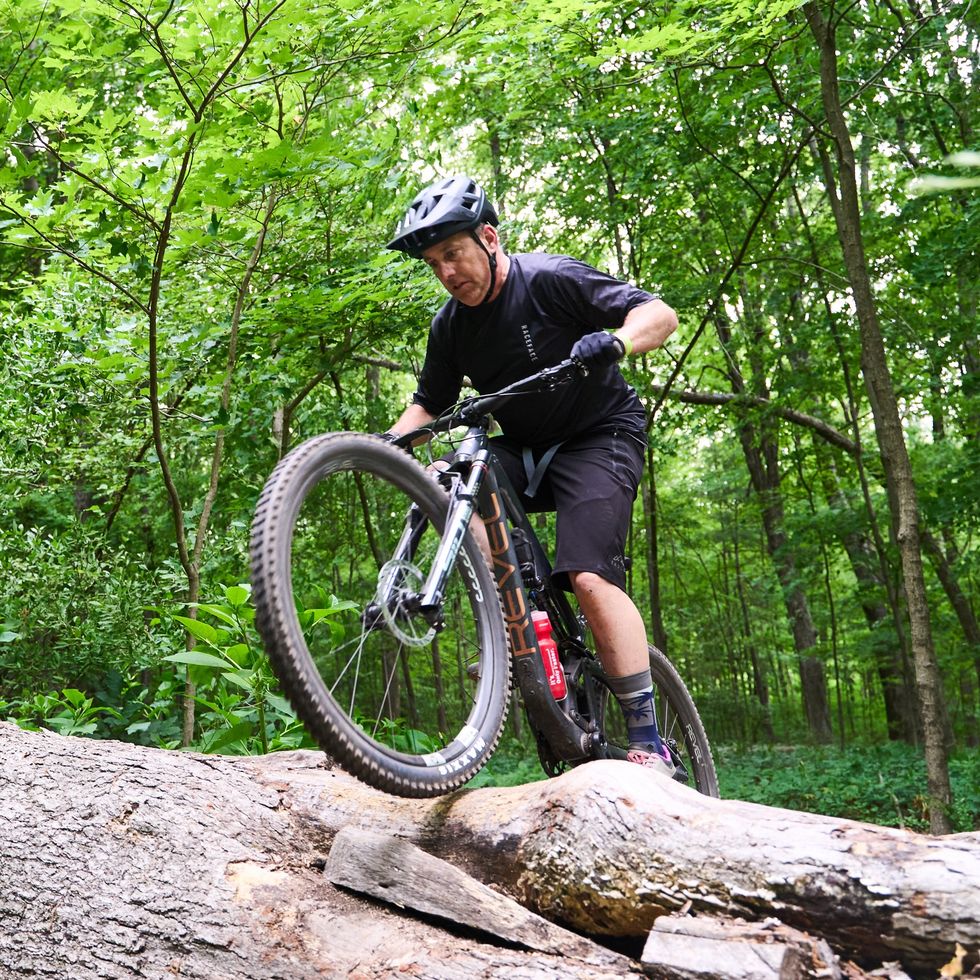
Josh Patterson has been riding, racing, and reviewing mountain bikes for more than a decade. His background includes time spent spinning wrenches as a professional cycling mechanic, a master’s degree in journalism, and bylines with more than a dozen cycling media outlets. Patterson’s favorite trails are rocky and technical, and his favorite mountain bikes leave him grinning.
Over the past 12 months, our team of experienced testers rode more than 100 different mountain bikes. Our testing grounds ranged from tight and twisty East Coast trails to high-speed alpine descents in the Rocky Mountains. We raced them, rode them on our local trails, and hit the bike park. We tested each model for its intended purpose as well as pushing the bikes’ limits outside of their primary intent to see how versatile they could be.
Often, we swapped tires and other components to get a better understanding of each bike. After lots of sweaty, dirty miles, we considered the full picture, weighing not just performance and handling but also, price, comfort, value, and reliability.
Giant Trance X Advanced Pro 29 SE
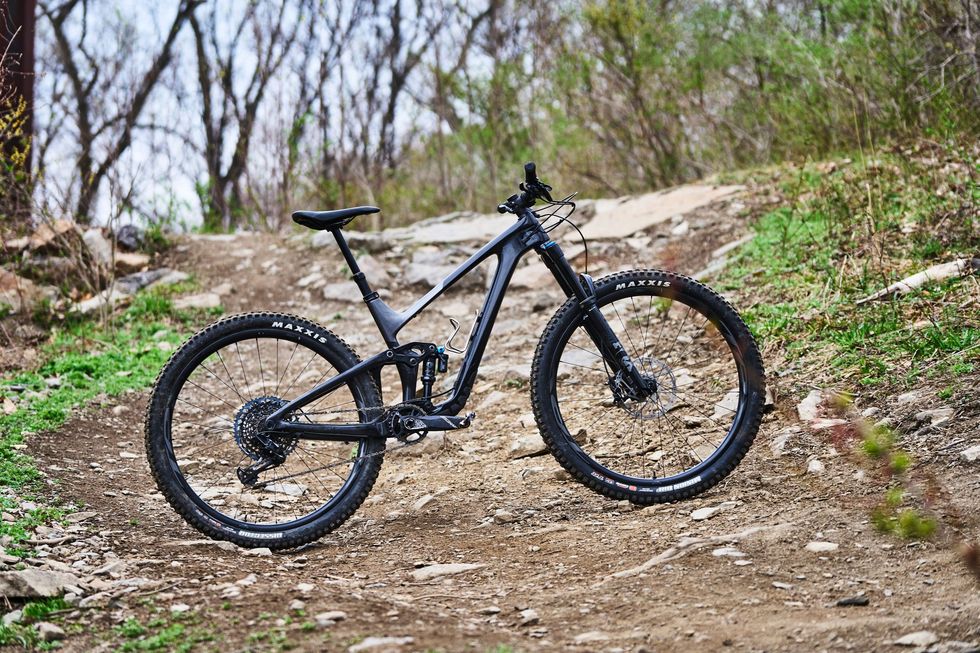
Giant is one of the best brands to consider when it comes to bang for your buck. Dollar for dollar, the Trance X Advanced Pro 29 SE beats its closest competitors in terms of component spec at full retail. Having an opportunity to buy it on sale just sweetens the deal even further.
The Trance is the quintessential trail bike that shines on climbs and descents. Upfront, there’s RockShox’ Lyrik Ultimate with 150mm of travel. The 135mm of rear suspension travel is managed by a matching RockShox Super DLX Ultimate shock. Giant’s Maestro suspension system is one of the more efficient suspension designs on the market, yet this trail bike is made even more capable by the addition of RockShox’ Flight Attendant suspension system. In a nutshell, this smart suspension system senses trail and rider inputs to adjust the compression damping to match the terrain. There’s no need to fuss with lockout levers—just enjoy the ride.
State 6061 Trail+ Fat Bike
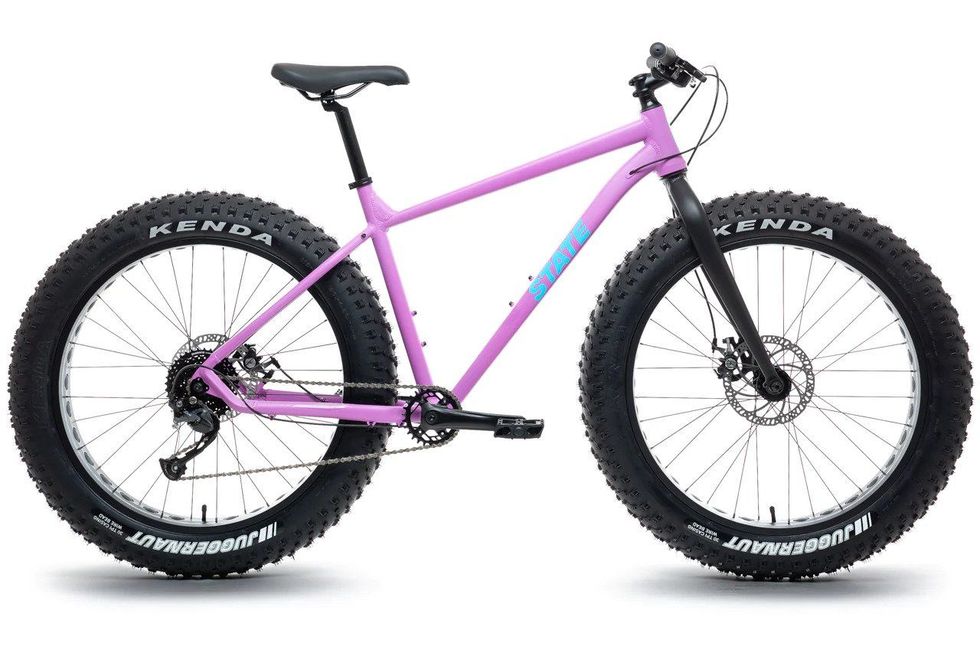
Fat bikes are great for hitting the trail once the snow starts flying. Several brands exited the fat bike market in recent years, but State Bicycle jumped in with its new well-priced, nicely-equipped 6061 Trail+ fat bike.
The 6061 Trail+ features an aluminum (hence the 6061 model name) frame and fork and rolls on 4.5-inch wide 26-inch tires. Other component highlights are a Shimano Altus 9-speed drivetrain and mechanical disc brakes. In typical State fashion, the bike packs a ton of value into a low price.
If the bright pink “wildberry” isn’t your style, State also offers the 6061 Trail+ in stone grey .
Specialized Turbo Tero 3.0
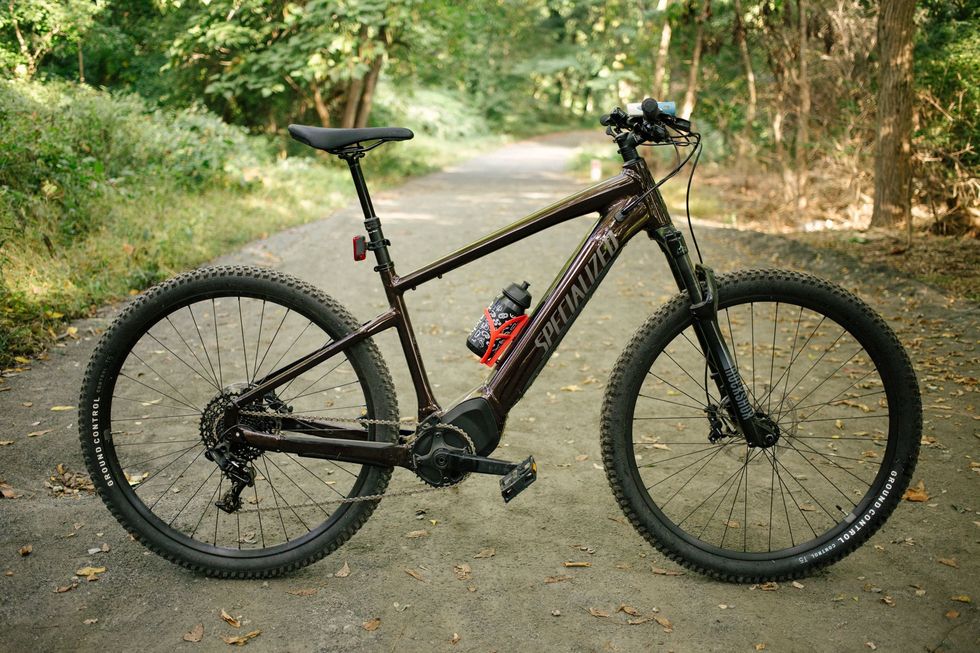
Specialized’s Turbo-series mountain bikes are some of our best-tested best E-MTBs due to their exceptional mid-drive mounted motor. The brand’s base-level Tero 3.0 electric mountain bike is a great entry point into trail riding.
This hardtail model has 29 x 2.35-inch tires, a 110mm travel suspension fork with lockout, and Shimano hydraulic disc brakes. While the fork and components aren’t high-end, they are dirt-worthy. Plus, the parts use standard sizes for easy upgrades and replacements.
READ FULL REVIEW
Specialized Rockhopper Elite 29
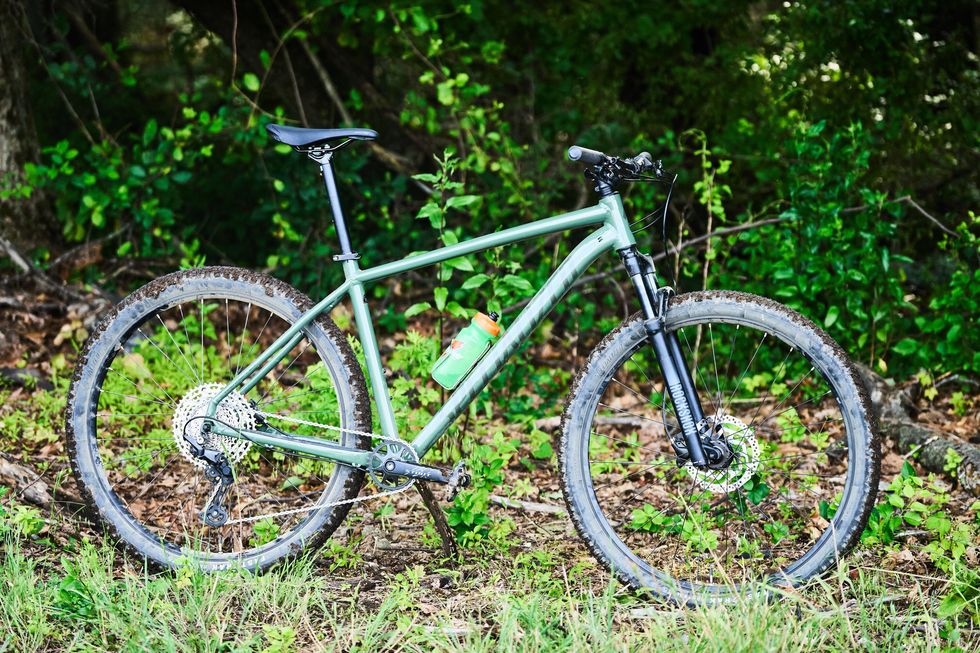
Though overshadowed by its legendary Stumpjumper line-mate, the Rockhopper has been a mainstay of Specialized’s product line longer than most mountain bikers have been in production. Specialized offers a bevy of Rockhopper models between $650 and $1,400—We consider the Comp ($950) , Elite ($1,150), and Expert ($1,400) models most suited for trail riding use.
We recently tested the Elite and found it a well-rounded bike that climbs quickly, is stable on descents, and capably handles a variety of trail conditions. It’s a good-looking bike too, and the parts—particularly the fork and forceful hydraulic brakes—are up to par for mountain bike duty. The price might be budget but its performance on the trail is refined.
Giant Talon 29 1

The biggest surprise of our six-hardtail shootout , Giant’s Talon offers plenty of character from a bike that you might overlook because of its subdued profile. Much of its standout performance comes from the house brand suspension fork, which boasts a list of features not commonly found on bikes priced under $1,000.
These include an aluminum steerer tube and stanchions weight savings, an easily adjustable air spring that lets riders fine-tune the fork for their weight and riding style, and adjustable rebound damping for refined performance on the trail.
Specialized Epic 8 Expert
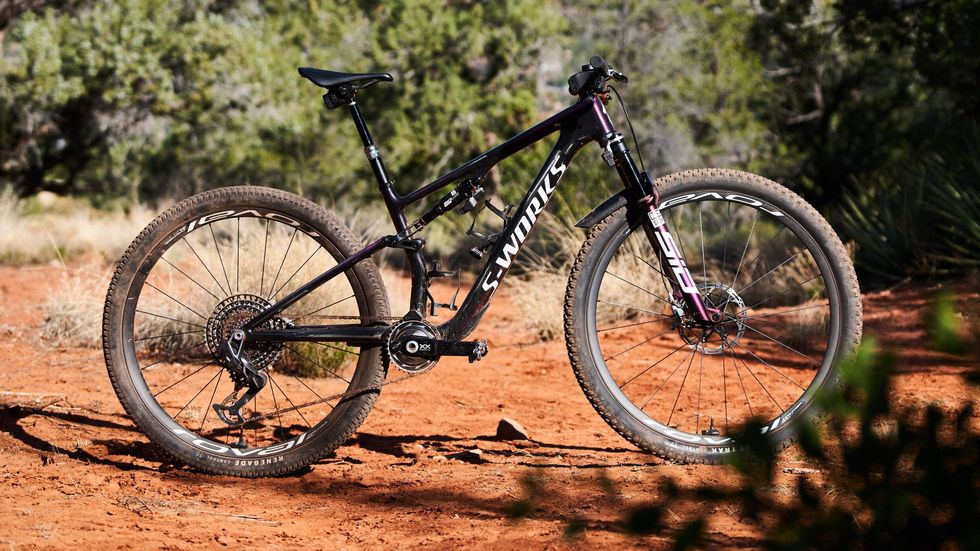
A few years ago, a 120mm full suspension bike with a 66-degree head tube angle would have been considered an aggressive short-travel trail bike. Today, that’s par for the course for the latest cross-country race bikes. Best of all, the latest Epic isn’t just for racers—it’s also an excellent bike for riders who want a lighter and speedier everyday mountain bike.
The new Epic 8 has more travel and capability thanks to improved geometry. It’s a fast bike that is efficient and is not afraid of rowdy terrain. One of the features we love most is SWAT storage in the downtube, which allows us to store trailside repair tools and event a packable shell inside the frame.
Read Full Review
Yeti SB140 T3 TLR X01 Eagle AX
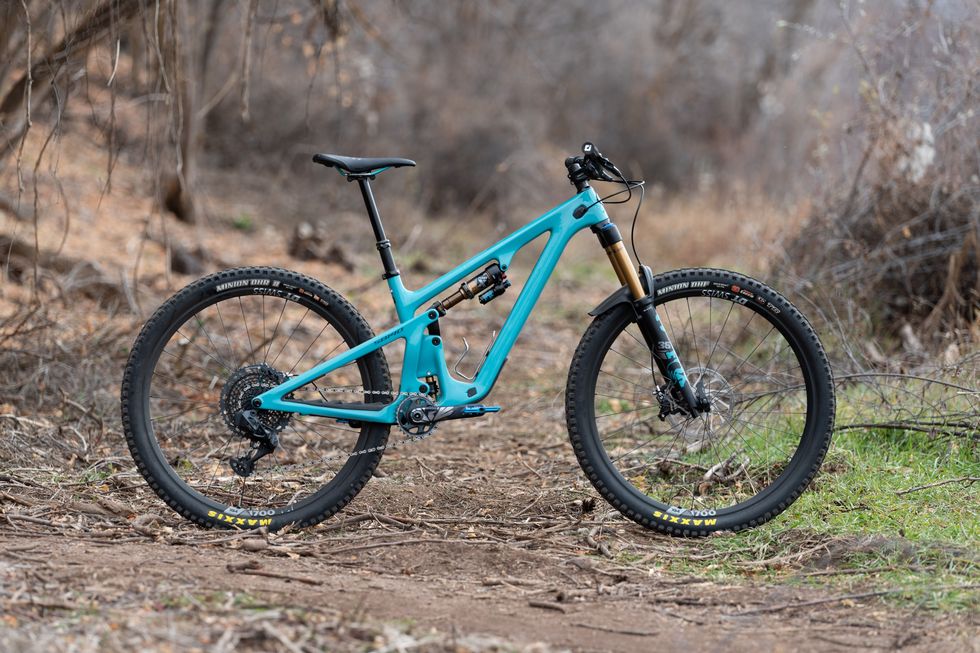
Born from the excellent SB130 , Yeti’s new SB140 is a superb example of a modern trail bike. It does everything well: It’s efficient and capable on climbs both long and technical, it can truck tricky technical descents like a bigger bike, and it’s lively and responsive enough that it is an engaging partner in flatter terrain too.
This is also a bike for the long haul. Not only does it have a solid lifetime frame warranty (and a decent crash replacement offer) but it also has a lifetime warranty on the Switch Infinity suspension link. SB140 also has a standard threaded bottom bracket, sensible hose and housing routing (NOT through the headset ) with full-length tunnels that make repair and replacement a breeze, and a short seat tube so many riders can fit a longer travel dropper if they wish.
Trek Fuel EX 8
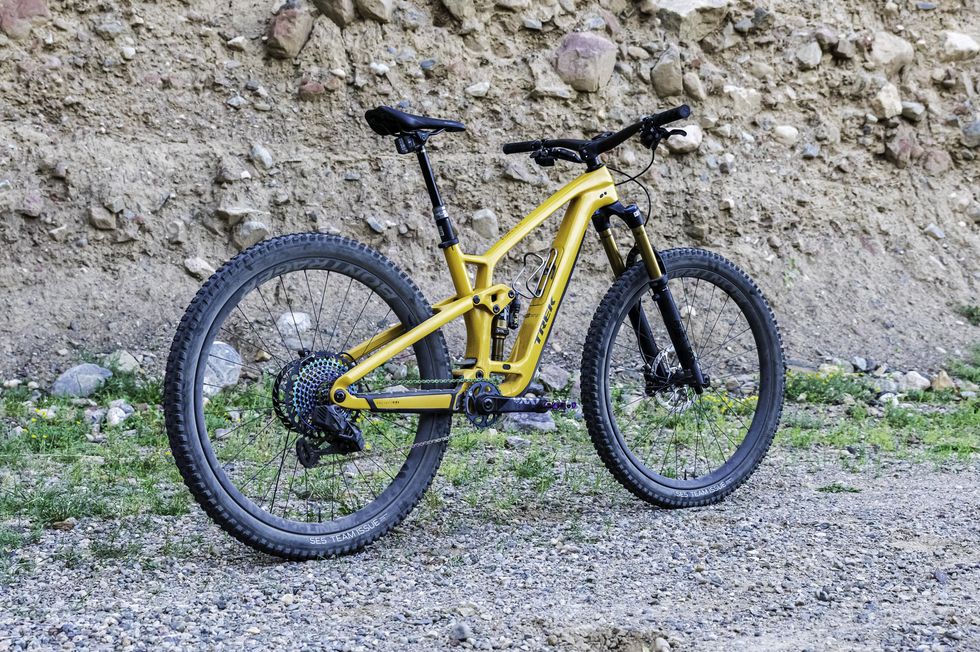
For 2022, the sixth-generation EX underwent a training montage worthy of an ’80s movie and emerged bigger and badder. Suspension travel increased to 150mm in the front and 14omm in the rear, and it’s longer, slacker, stiffer, and comes with bigger tires. It also has a trap door and hidden storage in the down tube.
The longer and slacker geometry provides a more centered feel when you’re working the trail with the saddle dropped. The bike’s steering is light, and the bike climbs technical singletrack very well—a nice suspension platform and crisp pedaling manners help. It’s sure-footed on downhills and even rides a little bigger than its travel and geometry might suggest. There are a lot of great trail bikes you can buy right now. This EX makes a strong case that it’s one of the very best. READ FULL REVIEW
Norco Fluid FS A1

The Norco Fluid FS A1 is an exciting, and responsive ride that, for the price, is one of the best, and best-looking, mountain bikes we’ve tried. Contrary to some of the madness happening at the upper price echelons, this Fluid is basic in all the right ways. There’s not a lick of carbon fiber present, no electronic anything, and nothing is routing through the headset other than the fork steerer. The bottom bracket is threaded, it fits up to 2.6-inch wide tires with clearance to spare, a water bottle fits inside the main triangle, and it has a cargo mount under the top tube for a repair kit.
On trails, the Fluid tackles steep climbs and steeper descents with aplomb. It’s more capable in demanding terrain than you’d expect for a mid-travel bike and a fork with 34mm stanchions.
Santa Cruz Heckler SL
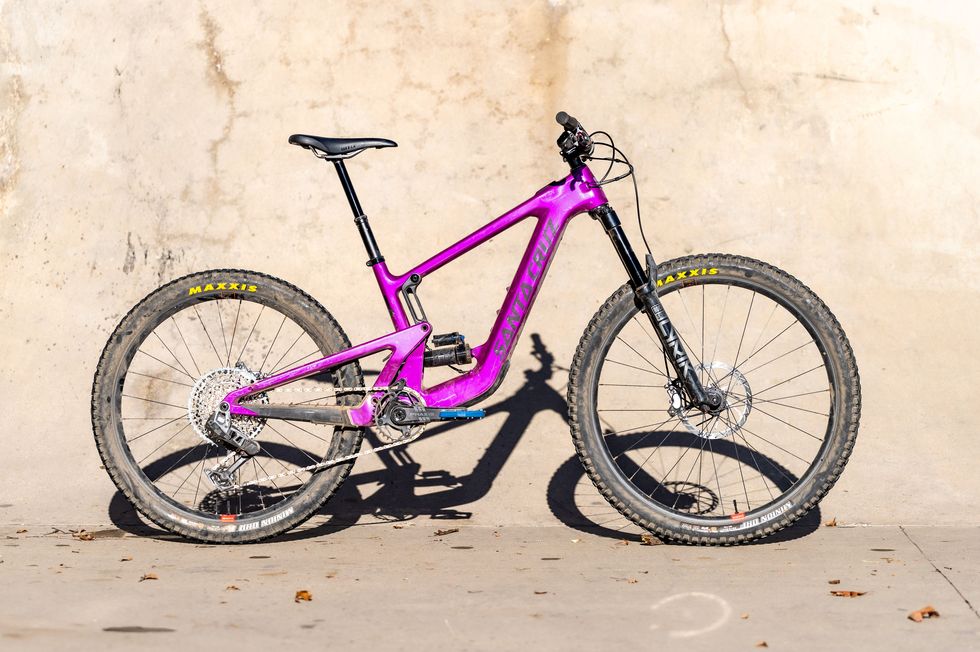
The winner of our four-bike lightweight e-mountain bike shootout —the Santa Cruz Heckler SL GX Eagle— was not only the least expensive, but it had the most powerful motor and largest battery, the second most range, and was fastest in our timed tests.
Emblematic of the lightweight category, the Heckler SL comes in about 10 pounds lighter than a full-power e-bike. That helps the Heckler SL feel almost like an unpowered e-bike: It’s lively, flickable, and easier to ride than heavier and more powerful e-mountain bikes. Though not the cheapest Heckler SL Build—that’s the $7,300 Heckler SL R —the GX Eagle build offers all the performance and most of the features of a top-of-the-line bike
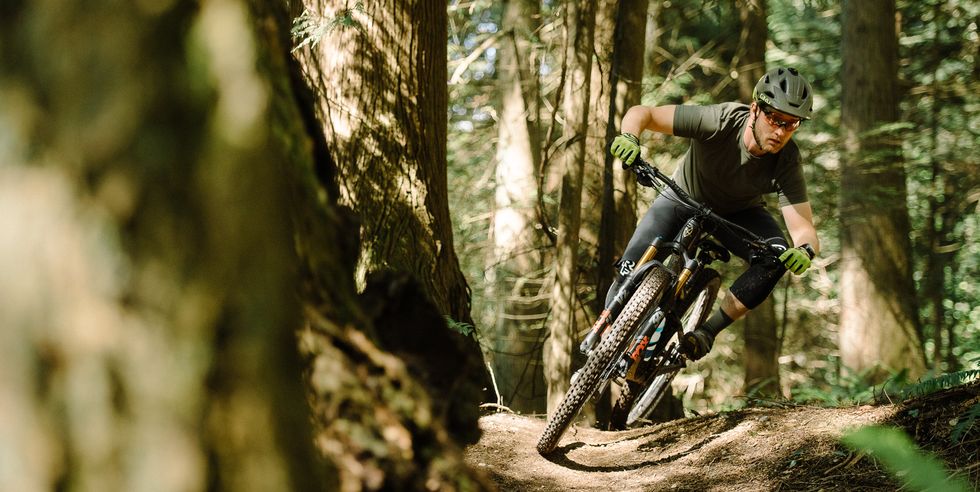
What is the best mountain bike for a beginner?
As mentioned in the introduction, there is no one “best mountain bike” for beginners. Start by considering what type of trails you’ll ride most frequently. Will this be a full-time mountain bike, or will you also use it around town?
Some veteran mountain bikers may tell you that you have to start with a hardtail. This is outdated advice, and in my experience, completely false. If you’re more comfortable and feel more confident on a full-suspension trail bike, then you’ll have more fun and ride more frequently. That’s the whole point, right?
Last but not least, when getting started, don’t buy at the top of your budget. Set aside some of your new bike fund for equipment and accessories, like a quality helmet, sunglasses, gloves, padded shorts, clipless pedals and shoes (both are optional), a bike pump, and a multi-tool. You should also consider investing in a bike rack, which brings us to…
How should I transport my bike to the trails?
Many mountain bikers use bike racks to transport their bikes to and from the trailhead. There are many different types of bike racks to choose from. Hitch racks are generally the most user-friendly. Read our guide to the best hitch racks .
How can I find out where suitable trails are near me?
Apps such as Trailforks and MTB Project are both great ways to find trails near you. These apps include important information such as trail conditions and closures, the preferred route or riding direction, and whether or not they’re open to e-bikes.
Also consider joining your local mountain bike club or trail advocacy organization. These groups are great ways to meet new riders and are generally very welcoming to beginner mountain bikers. Many mountain bike clubs also host beginner skills clinics.
What should I take with me—tools, water, first aid?
Yes, yes and yes. You should take all of the above with you when you hit the trail. Read our list of mountain bike essentials.
What MTB do you ride?
As a full-time cycling journalist, my stable of bikes is ever-changing. When it comes to personal mountain bikes, I gravitate towards full-suspension rigs that pedal well on rocky, technical terrain. Currently, I ride an Ibis Ripley and Specialized Stumpjumper EVO. Both of these trail bikes serve different purposes and both are incredibly fun machines to ride.

Josh Patterson has spent most of his career in the cycling industry as an athlete, mechanic, and journalist. He holds a master’s degree in journalism and has more than 20 years of experience as a cyclist and 14 years of experience riding and writing for Bicycling, BikeRadar, Cycling News, Cycling Weekly, Dirt Rag, MTBR, and Outside Magazine. A native of the Flint Hills of Kansas, Josh was a pioneer in the gravel cycling movement, having raced the first Unbound 200 and many other gravel events around the globe. He considers himself a cycling generalist and enjoys, road, gravel, and mountain biking in equal measure. When not traveling for work, he can be found exploring the singletrack and lonely gravel roads that surround his home in Fort Collins, Colorado. In addition to his love of cycling, Josh is an enthusiastic supporter of brunch, voting rights, and the right to repair movement.

A gear editor for his entire career, Matt’s journey to becoming a leading cycling tech journalist started in 1995, and he’s been at it ever since; likely riding more cycling equipment than anyone on the planet along the way. Previous to his time with Bicycling , Matt worked in bike shops as a service manager, mechanic, and sales person. Based in Durango, Colorado, he enjoys riding and testing any and all kinds of bikes, so you’re just as likely to see him on a road bike dressed in Lycra at a Tuesday night worlds ride as you are to find him dressed in a full face helmet and pads riding a bike park on an enduro bike. He doesn’t race often, but he’s game for anything; having entered road races, criteriums, trials competitions, dual slalom, downhill races, enduros, stage races, short track, time trials, and gran fondos. Next up on his to-do list: a multi day bikepacking trip, and an e-bike race.
.css-1t6om3g:before{width:1.75rem;height:1.75rem;margin:0 0.625rem -0.125rem 0;content:'';display:inline-block;-webkit-background-size:1.25rem;background-size:1.25rem;background-color:#F8D811;color:#000;background-repeat:no-repeat;-webkit-background-position:center;background-position:center;}.loaded .css-1t6om3g:before{background-image:url(/_assets/design-tokens/bicycling/static/images/chevron-design-element.c42d609.svg);} Bike Reviews
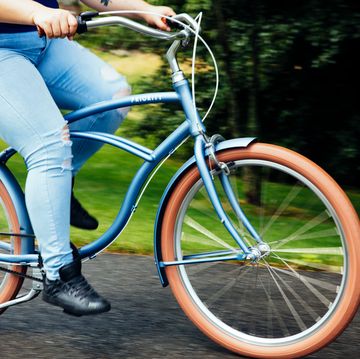
The Best Hardtail Mountain Bikes

Best Hybrid Bikes You Can Buy Right Now

The 14 Best Road Bikes of 2024

The Best Commuter Bikes for Getting Around Town
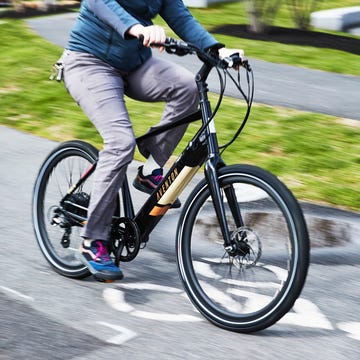
The 10 Best Electric Bikes, Tested by Our Editors
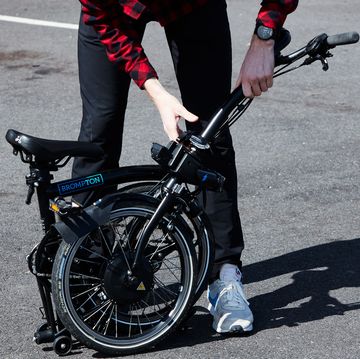
These Folding Bikes Can Go Everywhere

Smoother and Faster: The New Pivot Switchblade

The Best Beginner Mountain Bikes

Reviewed: Colnago's Italian Made C68 Gravel
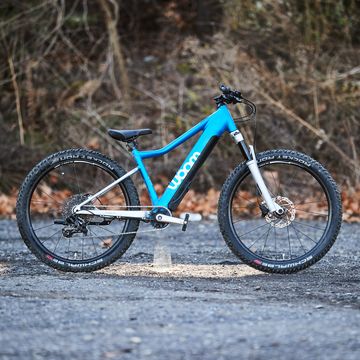
The 6 Best Kids’ Bikes in 2024
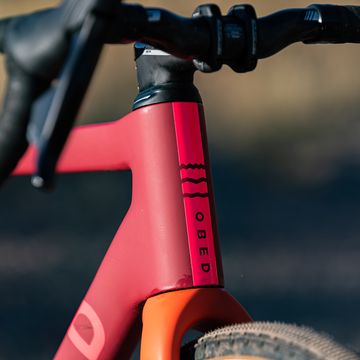
Obed’s GVR Is a Fast and Customizable Gravel Racer

7 Best Trail Mountain Bikes of 2022
For versatile bikes that can tackle long climbs and moderately technical descents, we break down the year’s top trail models.
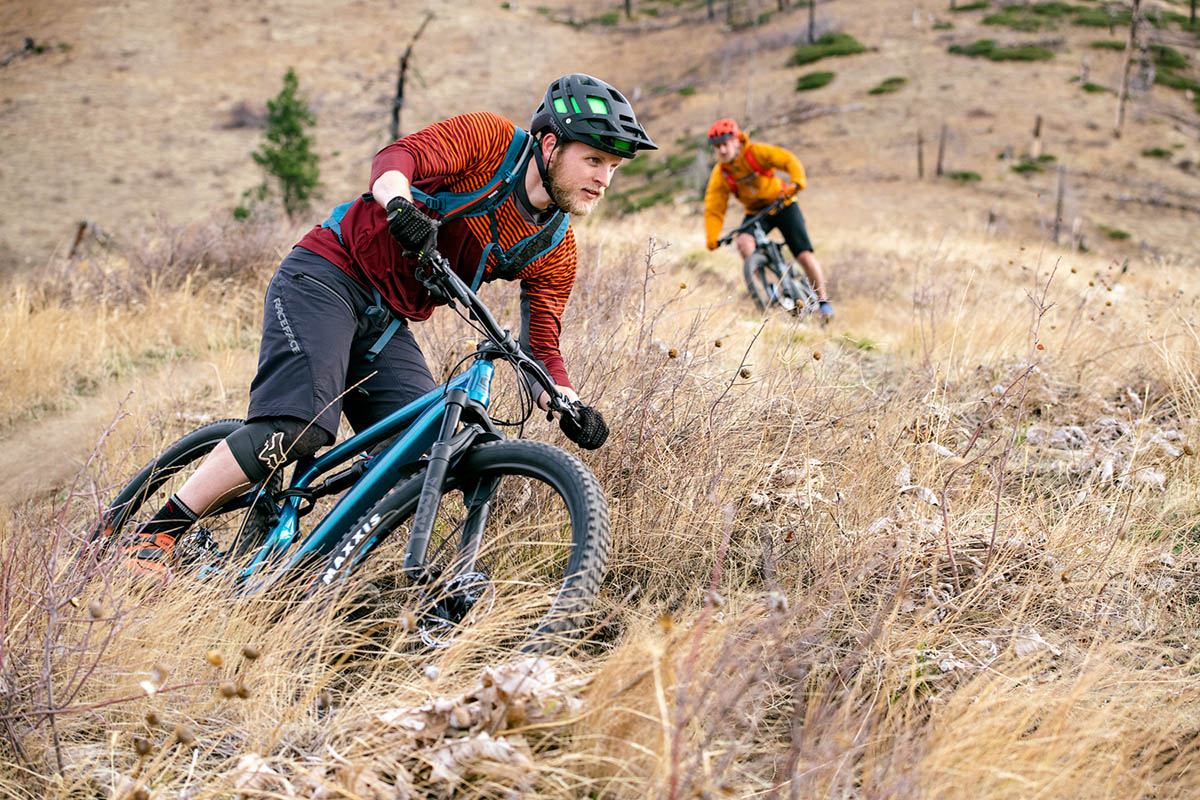
Switchback Travel ( Jason Hummel )
We use affiliate links and may receive a small commission on purchases. Read more about us .
From smooth and flowy post-work rides to rough and rowdy all-day backcountry epics, the trail mountain biking category covers a wide range. And with rapidly changing technology and an ever-growing number of options, it can be hard to nail down the best ride for your needs. Below we detail our top seven picks for 2022, which are broken down by type and best use and include everything from a beginner-oriented hardtail to fast and fun full-suspension rigs. For more, see our buying advice and comparison table below the picks.
Our Team's Trail Mountain Bike Picks
- Best Overall Trail Mountain Bike: Yeti Cycles SB130
- A Close Second (For Rougher Terrain): Ibis Ripmo V2
- Best E-Mountain Trail Bike: Specialized Turbo Levo Comp
- Best Hardtail for Trail Riding: Salsa Timberjack XT 29
- Best Budget Full-Suspension Trail Bike: YT Jeffsy Core 2
- Best Short-Travel Trail Bike: Evil The Following
- Top Entry-Level Trail Bike for Beginners: REI Co-op Cycles DRT 1.1
Best Overall Trail Mountain Bike
1. yeti cycles sb130 c2 gx eagle ($6,500).
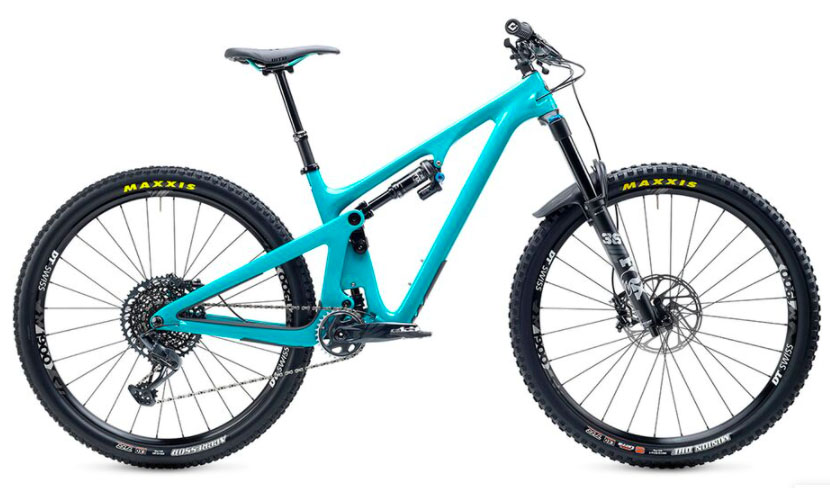
While we readily admit that the term “quiver killer” is overused, we can’t help but think Yeti made just that with the extremely versatile SB130. Sporting 150-millimeters front and 130-millimeters rear travel, it falls nicely in the heart of the trail category, and its progressive geometry and plush suspension mean it’s planted and composed when tackling technical trails. Just as importantly, it’s an efficient climber and has a very light and playful personality that’s a ton of fun on flowy and smooth sections (unlike some burly bikes, it’s not overkill on easier terrain). Finally, the SB130 is impeccably built and easily one of the best-looking bikes around, sporting Yeti’s famous, turquoise-colored frame (the “Brick” color option isn’t too shabby either).
The main knock against Yeti bikes is that they’re not great values, and this mostly holds true for the SB130. Their “entry-level” model rings in at $6,200, and the lightly upgraded GX Eagle variation here comes in at a steep $6,500. That said, Yeti sticks to high-end parts, and when spec’d the same, its pricing actually is quite close to competitors like the Ibis Ripmo and Santa Cruz Hightower. And with the premium price, you’re getting some nice extras, including a lifetime guarantee against defects on the frame and a crash replacement warranty where they’ll offer you discounted replacement parts. All told, the Yeti’s do-it-all nature earns it our top spot for 2022. See the Yeti SB130 C2 GX Eagle
A Close Second (For Rougher Terrain)
2. ibis ripmo v2 slx ($6,099).
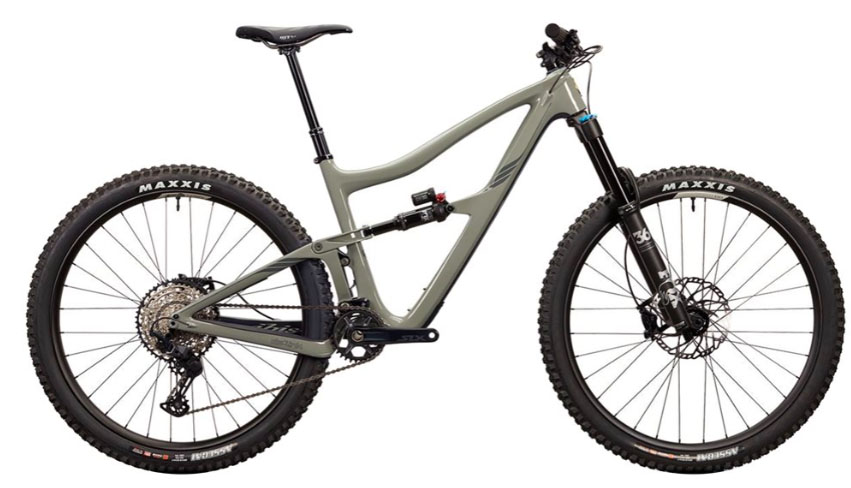
If you live in an area like the Pacific Northwest and your local trails are filled with rough and steep terrain, or you simply want a cushier ride for absorbing big hits, it’s hard to beat Ibis’s latest Ripmo. Stepping up in aggressiveness from the Yeti above, you get an extra 10 millimeters of travel at the front and 17 millimeters at the rear, along with a slacker head angle and burly Maxxis Assegai tires. There’s even an option to select a coil shock if you plan to dabble in the enduro world. What makes the Ripmo a favorite among trail riders, however, is its do-everything performance. The steep seat tube and DW-Link suspension make it out-climb expectations, and the carbon frame and quality Shimano SLX groupset help keep weight in check.
Combining 29-inch wheels and a lot of travel does mean the Ripmo is overkill for flatter, flowy, and less technical trails. And while it’s energetic and happy to pop off features along the way, it’s realistically more bike than a good number of trail riders actually need. As such, it comes up a little short of the slightly more versatile and better-climbing SB130 above. Plus, we think the Yeti is a bit more refined—the Ibis’s internal routing needed a little work to keep from rattling, as one example—and the styling of the Ripmo does leave a little to be desired (although that’s subjective). Of note, Ibis covers both ends of the trail category really well, and their lighter and snappier Ripley is a top choice among short-travel options. See the Ibis Ripmo V2 SLX
Best E-Mountain Trail Bike
3. specialized turbo levo comp alloy ($7,500).
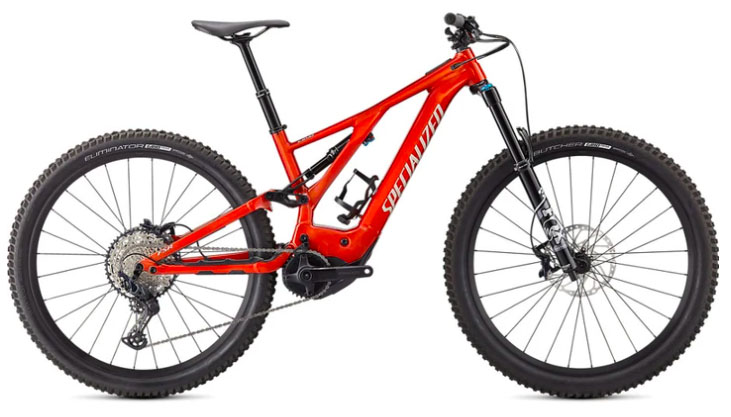
Specialized has been at the forefront of electric mountain bikes in North America, and their Turbo Levo is a leading all-mountain design. The latest bike is a real grin-maker—trust us on this one—and received a host of improvements that set it apart. Its new mullet setup (29 in. wheels at the front, 27.5 in. at the back) gives it a balanced and easy-to-control feel but still can smash through technical terrain, and its electronics have seen a nice upgrade in durability and refinement. Further, their Mission Control App provides quick access to the battery’s status and allows for easy customization of performance. Overall, among a fast-growing and competitive field of e-mountain bikes, we think the latest Turbo Levo is at the top of the list.
Currently, the biggest barrier to an e-mountain bike of any kind is price. Despite packing an aluminum frame, the Turbo Levo Comp here is $7,500, and carbon models start at a whopping $9,000. Additionally, the extra drive system adds a significant amount of weight–it’s not uncommon for e-bikes to weigh upwards of 50 pounds or more. This added heft also has performance drawbacks, and we found the Turbo Levo is quite a bit less flickable and more reluctant to get off the ground than the brand’s analog Stumpjumper Evo (or the less-powerful Levo SL e-bike). Finally, land managers and lawmakers still are trying to figure out where e-bikes fit into outdoor recreation. Regulations vary by state and riding area, but oftentimes they technically are not legal to ride on singletrack trails. See the Specialized Turbo Levo Comp
Best Hardtail for Trail Riding
4. salsa timberjack xt 29 ($2,099).
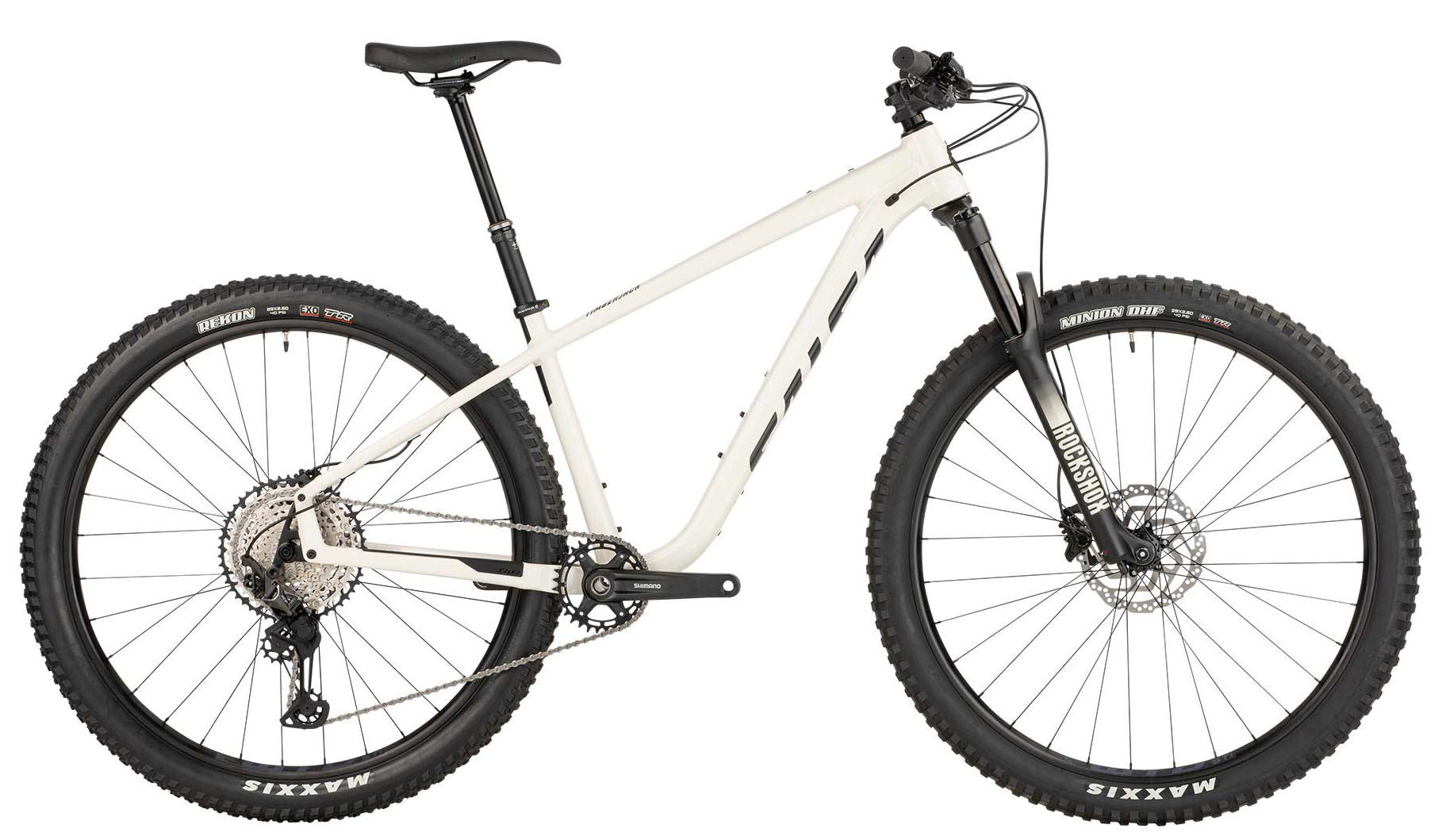
Minnesota-based Salsa Cycles is best known for their bikepacking, touring, and gravel-oriented designs, but they’ve been making some serious headway in mountain biking of late. Their Timberjack XT 29 hardtail is case in point with its well-thought-out spec package and adaptable design. The bike’s burly 2.6-inch tires and highly adjustable 130-millimeter RockShox 35 Gold RL fork provide more than enough cushion for rocky and rooty descents (by hardtail standards). And the relatively slack geometry and fast-rolling tires encourage shenanigans like popping off trailside lips and manualing down the trail. What we really like about the Salsa, however, is its nod to bikepacking. You simply won’t find too many other hardtails that offer as many mounting locations for gear as the Timberjack.
Salsa updated the Timberjack last year, and key changes include a slacker head tube (66.4° on all sizes) and an impressively expansive number of build kits (including 27.5+ wheel sizes). The 29er XT model here features premium components like Shimano’s XT drivetrain at a reasonable price point. The design offers fast and reliable shifting—it even smooths out shifts that would otherwise clunk into place while on an incline—and its 12 speeds have a very wide range. This gives the Timberjack excellent versatility for hauling you up extended climbs and over variable terrain. That said, the burly construction and wide tires mean the bike isn’t as nimble and fast as a more cross country-focused design. But for a capable and well-rounded hardtail that’s built to last, the Timberjack is an excellent choice. See the Salsa Timberjack XT 29
Best Budget Full-Suspension Trail Bike
5. yt jeffsy core 2 ($2,999).
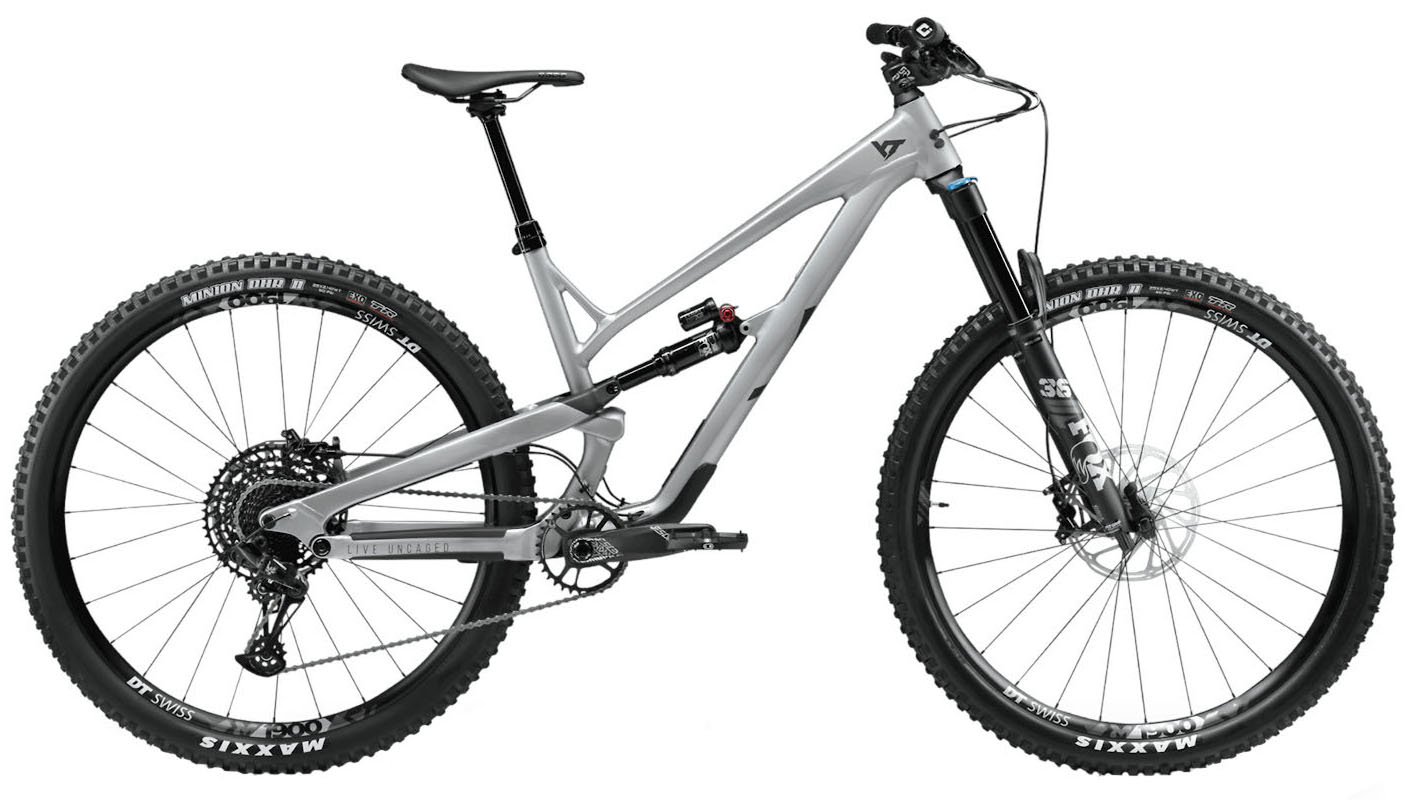
In contrast to premium brands like Santa Cruz or Yeti, YT Industries has built its popularity around offering big-time value. The German-based manufacturer is the best-known direct-to-consumer company that forgoes the middleman (bike shops) and allows shoppers to purchase directly from their website. The Jeffsy is their popular trail/all-mountain offering, and the Core 2 29 base model is a screaming deal: You get quality Fox suspension components front and rear, a DT Swiss wheelset, dropper post, and top-performing Maxxis Minion tires for hundreds less than its competitors. And jumping up to their top-flight Core 4 model ($5,199) will get you components typically found on bikes that cost thousands of dollars more.
What are you giving up by shopping from a consumer-direct company? For one, inventory is hit-or-miss, and at the time of publishing, many sizes and colors are multiple months out (or unavailable altogether). In addition, it can be difficult to get replacement frame parts as bike shops generally don’t stock them. Moreover, buying online means you don’t get a chance to test ride the bike before throwing down some serious cash. But for those who prioritize saving money and are willing to take on a little extra risk, the YT is an enticing option and a solid value. For another direct-to-consumer option, check out Commencal’s Meta TR (starting at $2,500), which also outperforms its modest price tag. See the YT Jeffsy Core 2
Best Short-Travel Trail Bike
6. evil the following ($6,599).
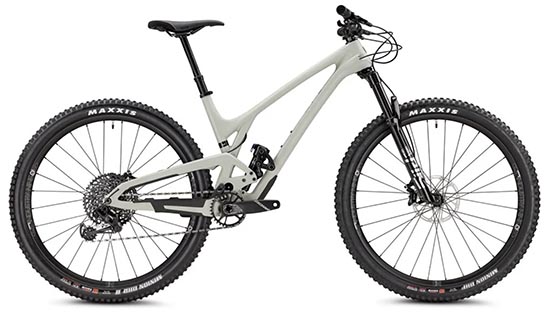
Short-travel full-suspension bikes hit a sweet spot for many riders, and the light and fast Evil The Following currently is our favorite of the bunch. Updated a couple years ago, the bike’s well-balanced riding position hits that desirable combo of near-XC-level climbing that doesn’t terrify you on the descent, 29-inch wheels, and enough suspension travel (130mm front and 120mm rear) for smaller drops and moderately techy terrain. Plus, it’s an extremely refined build with a high-end carbon frame, well-thought-out dimensions, and a creative rear linkage that’s both durable and great to look at. The Evil is not a value leader by any stretch—the $6,599 MSRP for the GX model is Yeti territory—but the bike’s snappy and extremely energetic personality will quickly win you over.
Where does the Following fall short? To start, like the SB130 above, we’d love to see a true entry-level (or even mid-range) version offered with an aluminum frame for those just starting out or wanting to stick to a lower price point. If you fall into that camp, we recommend looking at YT’s Jeffsy Core 2 ($2,999) above. Additionally, riders who prioritize rough and rowdy descents likely will find the Following a little under-gunned—both the Yeti SB130 and Ibis’s Ripmo get the advantage for this type of terrain. That said, the Evil is a faster, nimbler, and more efficient climber than those alternatives, which makes it a better choice for big days. See the Evil The Following
Top Entry-Level Trail Bike for Beginners
7. rei co-op cycles drt 1.1 ($599).
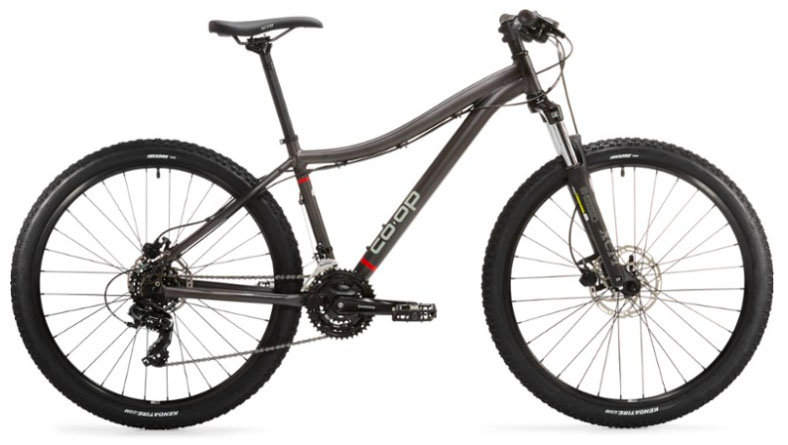
Sub-$600 mountain bikes may conjure up images of cut-rate big-box-store specials, but REI’s Co-op Cycles DRT 1.1 packs a surprisingly good punch. To start, it checks the right boxes for a budget build with a lightweight aluminum frame, 100 millimeters of front suspension travel, and proven Shimano drivetrain. Arguably its biggest selling point is the Tektro hydraulic disc brakes, which have superior stopping power compared with the cable-actuated brakes that you typically find at this price point. And it’s all backed up by REI’s excellent warranty—something you definitely don’t get from the Targets and Walmarts of the world.
What do you give up with the entry-level Co-op Cycles DRT 1.1? For starters, this bike is aimed more at gravel bike paths and mellow singletrack than anything technical. Additionally, the budget-oriented SR Suntour fork will certainly be out of its element during rough and bumpy descents (the quick-release axles don’t help either). If you’re looking for something much more trail-worthy, check out the brand’s DRT 1.2 (our top pick in our article on mountain bikes under $1,000 ). The upgraded model is more aggressive in just about all ways, including more suspension travel, wider tires, and a better overall spec package. However, at nearly half the price, the DRT 1.1 is a great option for most recreational or first-time riders. See the REI Co-op DRT 1.1
Trail Mountain Bike Comparison Table
Trail mountain bike buying advice, frame material: carbon fiber vs. aluminum, full-suspension vs. hardtail, wheel size: 27.5 vs. 29er, drivetrain and gearing, electric mountain bikes (e-mtb).
- Unisex vs. Women's-Specific Models
Trail Bike Price Guide
Buying a mountain bike online, consumer-direct bikes.
- Should I Buy a Used Bike?
As a whole, aluminum-framed bikes still dominate the trail category, but carbon fiber is becoming increasingly common. What’s driving its growing popularity? The main advantages are less weight—approximately 1 pound depending on the frame—and increased stiffness. The additional rigidity of the material compared with aluminum leads to better power transfer and higher efficiency. For committed cyclists, those are pretty convincing performance advantages.
Carbon does come with its fair share of downsides, however. Right off the bat, you can expect to pay about a $1,000 premium for upgrading from an aluminum to carbon frame. Additionally, aluminum does a better job absorbing impacts from trail debris and surviving a high-speed crash (carbon can crack from hard hits). Finally, aluminum is easier to be recycled once a bike has reached the end of its life, although that’s still a hotly debated topic. In the end, it often comes down to budget: carbon has plenty of advantages, but it’s a hard sell if you’re only dabbling in the sport. And we can’t help but think that the extra cash may be better spent on a visit to Whistler instead.
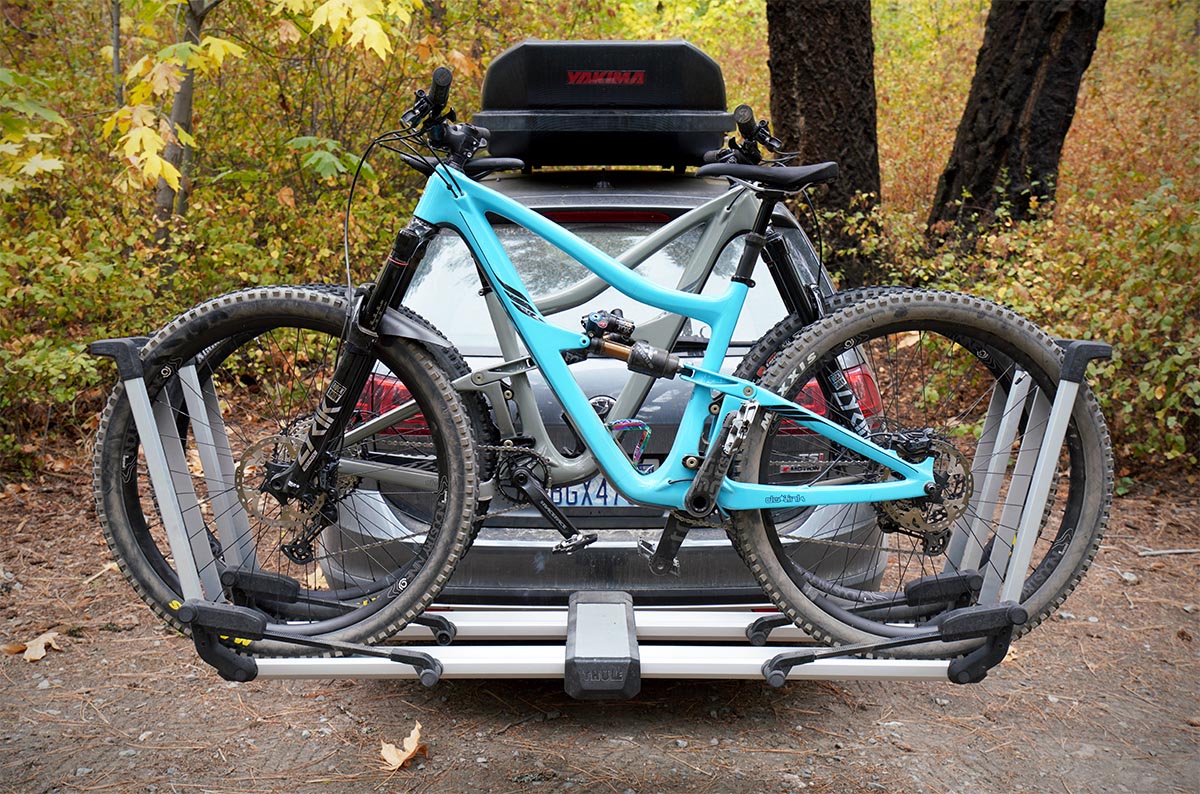
When buying a new trail bike, one of the most commonly asked questions is: should I buy a hardtail (suspension fork only at the front) or full-suspension (includes both a front suspension fork and rear shock) model? There are a number of factors to consider when making this choice. Are you on a tight budget? Are you just starting out? Are your local trails smooth and with few obstacles? If so, a hardtail is probably the best choice for you. However, should your local terrain be rooty and rocky, or maybe you just like going downhill fast, then a full-suspension rig probably is the better option. This is just the tip of the iceberg, however, and we break down the additional considerations below.
Performance In terms of overall riding performance, hardtail and full-suspension mountain bikes each come with their fair share of pros and cons. Starting with hardtails, their lower weight and lack of suspension travel makes them fast and easy to pedal quickly. As a result, they excel on long rides and climbs. But should the going get rough—especially on the downhill—a full-suspension bike quickly takes the lead. The added rear suspension helps soak up bumps and offers a much more comfortable ride in general. FS bikes are the weapon of choice for most intermediate to advanced riders. Having said that, full-suspension designs like our top-rated Yeti SB130 typically weigh more, are significantly more expensive, and will not be as efficient at climbing or on non-technical trails.
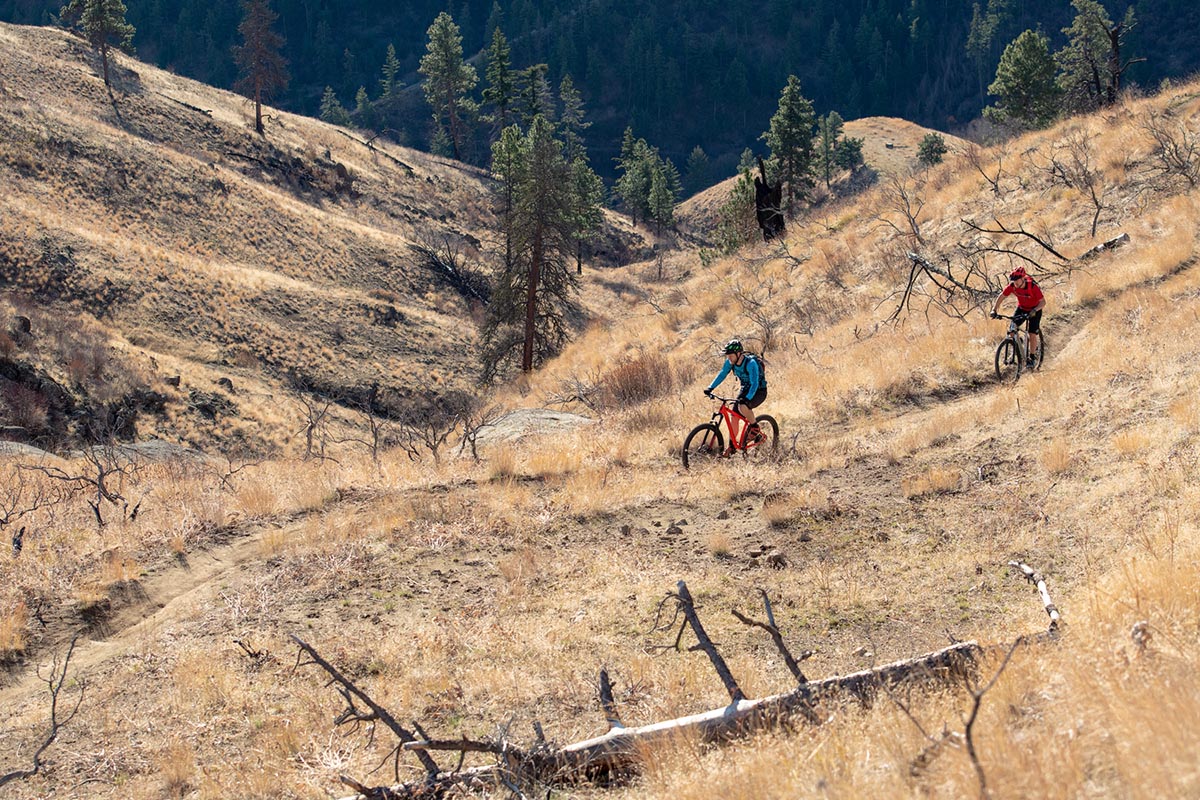
Maintenance If you’re looking for a simple and low-maintenance bike, then hardtails take the cake. Their lack of rear suspension means they forgo any bushing, bearing, or pivots that generally require extra care and attention. This becomes especially true should you live in a wet and muddy climate, which can wreak havoc on full-suspension bikes if they go unmaintained. Because of these characteristics, it’s not uncommon for dedicated mountain bikers to own a full-suspension bike for summer use and a hardtail for when the trails turn to slop. Bikes like the Salsa Timberjack are able to hold their own against short-travel full-suspension rigs yet are much simpler to keep fresh should you often ride in the rain.
Price Once again, if a low price is your top priority, then hardtails are the clear choice. Quality full-suspension trail bikes, with their added rear shock and linkage, are simply too complex to design and build on the cheap. From the list above, the $2,999 YT Jeffsy Core 2 is about as low as we’d advise going with a full-suspension design (there are a few just below $2,000 that are suitable as well). Sure, you could certainly spend less than that on a bike from a big-box store, but in reality, it’s going to ride terribly. The parts won’t last, the suspension will be overwhelmed, and you’ll be quickly wishing you bought a lighter and more comfortable hardtail instead.
.jpg)
Unisex vs. Women’s-Specific Models
Many trail bikes are made in a unisex style and a range of sizes (typically from “S” to “XL”). This can work well for both men and women, although riders on the shorter end of the spectrum can run into some challenges getting an ideal fit. Some brands like Trek address this by offering a wider range of sizes within the unisex line. Taking Trek’s Fuel EX as an example, the bike is made in “XS and “S” frame sizes with top tubes that dip down more aggressively right in front of the seat and smaller wheels (27.5 rather than 29). This makes it easier for shorter riders to comfortably stand over and control the bike. For many women, simply having an array of size options is all they need to get a great fit.
In addition, a number of brands make dedicated women’s mountain bikes. In the past, these mostly have been shrunken-down versions of the unisex models in different colorways. And while that’s still true in some cases—especially on the budget end of the spectrum—many quality brands make women’s-specific trail designs with retuned suspensions, handlebars that are narrower with smaller-diameter grips, and reshaped frames. There also are women’s-only bike brands, including Juliana (Santa Cruz’s sister brand) and Liv (Giant). Liv Cycling in particular really stands out as a leader with a growing collection of XC, trail, and e-mountain bikes for women. In the end, a unisex design like the aforementioned Fuel EX can be a great pairing for many lady riders, but there are a number of potential benefits in opting for a women’s-specific model.
.jpg)
The majority of us do a significant amount of shopping online, so why not do the same when purchasing a mountain bike? They’re certainly more complicated to figure out than a set of dish towels, but there’s a lot of recent movement towards online sales from consumer-direct brands (more on this below), major retailers like REI Co-op and Competitive Cyclist , and even manufacturers themselves like Diamondback. If you’re considering going this route, it’s important to ask yourself a few questions before clicking that buy button. Are you comfortable doing basic assembly and mechanical projects? Will someone be at home to take delivery and sign for your new ride? And, perhaps most importantly, are you comfortable choosing the right size and style of bike without taking a test spin?
One of the most important pieces of the new bike puzzle is getting the correct size, which can be the difference between riding your bike down the hill or wanting to throw it down the hill. Luckily for us, most reputable online retailers and brands provide a significant amount of fit-related information. Size charts are often tailored to specific models, and you’ll then get size recommendation based on your height or inseam length. Taking this a step further, Competitive Cyclist offers one of the most comprehensive fit guides we’ve seen, compiling measurements for your inseam, forearm, lower leg, and more. Taking this detailed approach is one way of ensuring you wind up on a bike that fits you properly.
.jpg)
Should I Buy a Used Bike?
The trail bikes listed above are the latest and greatest in their respective categories, but purchasing a used model is a great way to save and cut down on waste. To start, keep in mind that mountain bike technology has been rapidly evolving even in the past few years, so we recommend picking up a pretty new design. Further, it’s a good idea to closely inspect the bike in person to make sure you’re not buying an unmaintained money pit. With the drivetrain, verify that the chainring teeth are shaped like triangles and less like shark fins. If they look like the latter, it’ll likely need to be replaced. The frame, brake pads, and chain should also be inspected for undue or heavy wear. Finally, see if the rubber seals around the suspension components are cracking or if oil is running on the outside of the fork—both are signs that service is required.
If you’re not comfortable with checking a bike’s mechanical soundness, it’s often worth having a local shop take a look (or you could purchase a former demo bike from a shop, so you can ensure it was properly maintained). Even a modest hardtail can set you back a few hundred dollars, and higher-end models hold their value well enough to justify getting a professional opinion. We recommend calling ahead to make sure they offer the service and that they can fit you in. In the end, used bikes have their place—especially for those just getting into the sport—but it’s a good idea to make an informed, smart decision. Back to Our Top Mountain Bike Picks Back to Our Mountain Bike Comparison Table
Read More From Switchback Travel
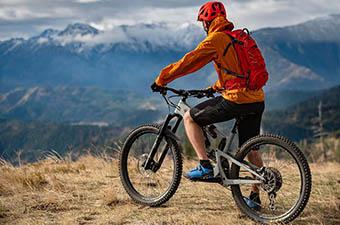
Mountain Biking Gear Reviews
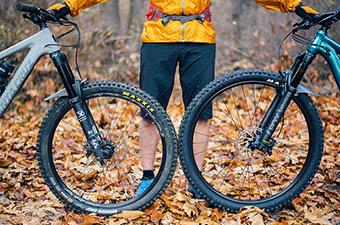
27.5 vs. 29er Mountain Bikes
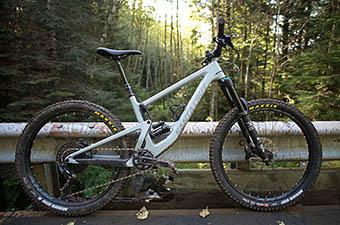
Best Mountain Bike Brands of 2023
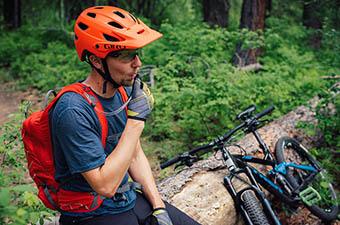
Best Mountain Bike Helmets of 2024
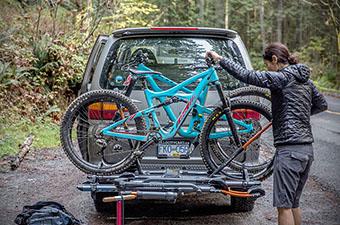
Best Hitch Bike Racks of 2024
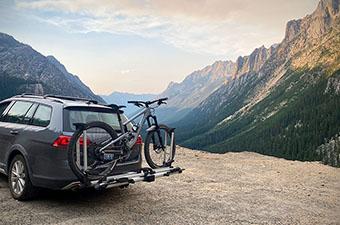
Thule Helium Platform 2 Review
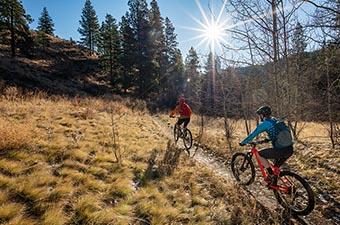
How Much Should You Spend on a Mountain Bike?
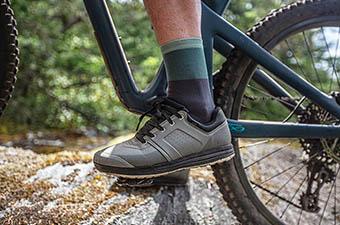
Best Mountain Bike Shoes of 2024
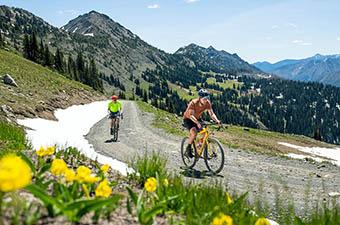
Best Gravel Bikes

Mobile Menu
Megamenu - desktop hamburger menu.
- Hiking Gear
- Backpacking Gear
- Biking Gear
- Camping Gear
- Footwear Reviews
- Climbing Gear
- Skiing Gear
- Winter Gear Reviews
- In-Depth Gear Reviews
- Hiking Shoes
- Hiking Boots
- Trail Running Shoes
- Mountain Bike Shoes
- Approach Shoes
- Climbing Shoes
- Beginner Climbing Shoes
- Mountaineering Boots
- Winter Boots
- Rain Jackets
- Down Jackets
- Synthetic Jackets
- Fleece Jackets
- Hardshell Jackets
- Softshell Jackets
- Windbreaker Jackets
- Ski Jackets
- Winter Jackets
- Hiking Pants
- Hiking Socks
- Trekking Poles
- Baby Carriers
- Running Vests
- Backpacking Tents
- Backpacking Packs
- Backpacking Sleeping Bags
- Backpacking Sleeping Pads
- Backpacking Stoves
- Backpacking Food
- Water Filters
- Altimeter Watches
- Handheld GPS
- Mountain Bike Helmets
- Mountain Bikes
- Mountain Bikes Under $1,000
- Mountain Bikes Under $2,000
- Gravel Bikes
- Bike Brands
- Kids' Bikes
- Hitch Bike Racks
- Camping Tents
- Rooftop Tents
- Camping Sleeping Bags
- Camping Mattresses
- Camping Chairs
- Camping Stoves
- Duffel Bags
- Rock Climbing Shoes
- Climbing Helmets
- Climbing Harnesses
- Climbing Quickdraws
- Belay Devices
- Climbing Ropes
- Climbing Backpacks
- Winter Gloves
- 4-Season Tents
- Ski Helmets
- Ski Goggles
- Ski Backpacks
- All-Mountain Skis
- Ski Bindings
- Backcountry Skis
- Backcountry Ski Boots
- Skis for Beginners
- Hardpack Skis
- Mirrorless Cameras
- Full-Frame Cameras
- DSLR Cameras
- Point-and-Shoot Cameras
- Travel Cameras
- DSLR Lenses
- Mirrorless Lenses
- Lofoten Islands
- Lofoten Hiking
- Hardangervidda
- Jotunheimen
- 10 Great Norway Hikes
- Public Huts
- Torres del Paine
- Chalten and Glaciares
- Lake District
- Patagonia National Park
- Milford Sound
- Abel Tasman
- Marlborough
- Great Walks
- Adventure Towns
Add adventure to your inbox
- Privacy Policy
- Terms of Use
© 2024 Switchback Travel. All Rights Reserved. No part of this site may be reproduced without our written permission.
Trek Rail 2021 Review | A powerful, long travel e-MTB with ALL of the confidence
The not-so-minor details.
2021 Trek Rail 9
Trek Bicycles Australia
https://www.trekbikes.com
$10,499 AUD
- Raw speed and 'GET OUT OF MY WAY!' stability - Buttery smooth suspension performance - The robust ZEB - Mega traction - Powerful and highly responsive motor - Discreet and well-positioned Kiox display unit
- Motor rattle - Mode selector is bulky and awkward - Special key needed to remove the battery
Dan tests the 2021 Trek Rail 9
First introduced to the world for 2020, the Rail is Trek’s premium long travel electric mountain bike. As the natural successor to the Powerfly LT, the Rail offers significantly improved geometry, and it’s built around the latest generation Bosch motor with a 625Wh battery in the downtube. Equipped with 29in wheels, 150mm of rear travel and a 160mm fork, it’s essentially the e-MTB version of the Slash. It’s a similarly capable and planted beast on the descents, though with 85Nm of torque between the crank arms, it can go up some rather extraordinary terrain too.

What’s changed for 2021?
While the Rail was already a brand new platform for 2020, Trek has implemented some significant updates for the 2021 model. And we’re not just talking Bold New Graphics™ here.
The biggest change – both figuratively and literally – is the new RockShox ZEB fork that now adorns the front of the Rail. At the very least a better visual match for the hulking downtube and buxom head tube, the ZEB also brings welcome assuredness to the front end thanks to its fatter 38mm upper tubes and mahoosif crown.

To match the supple ZEB, Trek has bolted in a custom rear shock. It’s the Super Deluxe Ultimate RT3 – the same shock found in the latest Slash , which has been codeveloped with RockShox and features the IFP-free Thru Shaft damper. It lends a big change to the overall ride quality, which we’ll touch on in more detail in a bit.
A 4th generation Bosch Performance CX motor still powers the Rail, but it has been updated with the latest software that’s unlocked a further 10Nm of torque over last year’s bike. The system also features Trek’s custom ‘eMTB Lite’ mode in place of the usual Tour mode.
The old-school Purion display is gone in favour of the snazzy Kiox head unit, which Trek places on the top tube just behind the Knock Block headset. A separate control unit now sits next to the left-hand grip, giving you fingertip control of the various assist modes.

The Goldilocks model
For the past five months we’ve been testing out the mid-spec Goldilocks model – the Rail 9. This bike is flanked by the cheaper Rail 7 ($8,999 AUD), and a pricier, carbon-framed Rail 9.8 ($11,799 AUD). All Rails are produced in four sizes from Small through to XL, which Trek claims will fit riders from 153cm to 196cm tall.
Selling for $10,499 AUD, the Trek Rail 9 is on the pricey side compared to the latest Merida eOne-Sixty 9000 and the Norco Sight VLT C1 29 , both of which feature carbon frames. However, it does offer notably better specs than the similarly-priced Specialized Turbo Levo Comp.
Of course specs and numbers on paper are one thing though – how a bike rides on the trail, how it handles and what it’s like to live with day-to-day is another thing altogether. To see exactly what the new Trek Rail is capable of, we put it into the hands of our tame enduro tester Dan. Read on for a closer look at the package, followed by our review of the Rail.


2021 Trek Rail 9 Specs
- Frame | Alpha Platinum Alloy, ABP Suspension Design, 150mm Travel
- Fork | RockShox ZEB Select+, Charger RC 2.1 Damper, 44mm Offset, 160mm Travel
- Shock | RockShox Super Deluxe Ultimate RT3, Thru-Shaft Damper, 230×57.5 mm
- Drive Unit | Bosch Performance CX Gen 4, 85Nm
- Battery | Bosch PowerTube 625Wh
- Wheels | Bontrager Line Comp 30, Alloy Rims, 30mm Inner Rim Width
- Tyres | Bontrager SE5 Team Issue, 2.6in Front & Rear
- Drivetrain | SRAM GX Eagle 1×12 w/X1 1000 36T Crankset & GX Eagle 10-52T Cassette
- Brakes | SRAM Code R 4-Piston w/220mm Front & 200mm Rear Rotors
- Handlebar | Bontrager Line, Alloy, 35mm Diameter, 27.5mm Rise, 780mm Wide
- Stem | Bontrager Line, 35mm Diameter, Knock Block, 50mm Long
- Seatpost | Bontrager Line Elite Dropper Post, 31.6mm Diameter, Travel: 100mm (Small), 150mm (Medium), 170mm (Large, X-Large)
- Saddle | Bontrager Arvada Elite
- Claimed Weight | 23.92kg
- RRP | $10,499 AUD

Testing the Trek Rail
Having already spent a load of time testing the latest Trek Slash , Dan went straight onto a Large-sized Rail to match his 183cm height. The 465mm reach is about 20mm shorter than the Slash. However, the effective reach is almost identical, as the Rail comes with a slightly longer 50mm stem. The overall riding position is comfortable and relatively upright, complemented by Bontrager’s own 780mm wide riser bars and Arvada saddle.
Setup is otherwise straightforward on the Rail thanks to Trek’s online suspension setup calculato r. We followed the recommendations for Dan’s 83kg riding weight, and ran the fork with 20% sag and the rear shock with 30% sag. The big volume tyres were setup tubeless with 24psi in the front and 26psi in the rear.
Confirmed weight for our test bike without pedals is a smidge lighter than claimed at 23.92kg.

The suspension is insane
For sure one of the biggest standout qualities of the latest Trek Rail is just how bloody good the suspension is. The new Super Deluxe shock already impressed us on the Slash, but it’s even better here thanks to the improved sprung-to-unsprung mass ratio of the stockier Rail.
While it does look like a conventional Super Deluxe shock, the internals are anything but. Compared to the 2020 model, the new shock has ditched the RE:aktiv valve in favour of a standard shim stack. Essentially some of the pedalling support has been traded up for a gooier feel with a greater focus on traction and high-speed reactivity. You can still flip between Open and Firm settings via a two-position lever, and there’s also a separate dial for adjusting the low-speed compression damping in the Open position. We mostly left the low-speed dial in the neutral position, though the firmer option is useful for riding flowier jump trails where you want a little more support to push off of when pumping the bike through rollers and berms. The softer position is ideal for wet days and steep, traction-poor trails.

The near friction-free feel is amplified by the Thru Shaft damper, which skips the traditional nitrogen-charged IFP. The main damper shaft exits the base of the shock during compression, allowing for a constant column of oil inside the shock. Trek claims the Thru Shaft design reduces the ‘stick-slip’ sensation when the shock changes direction between compression and rebound.
On the trail, we’d have to agree with those claims. The back end of the Rail offers glue-like traction with impeccable small-bump compliance, and the rear wheel gets out of the way with incredible efficacy when it meets something hard and fast. Combined with the ABP platform, which helps to reduce the affect of braking on the suspension, it offers a very active and neutral feel. While Dan didn’t mess around with the compression settings much, he did tweak the rebound dial a click or two depending on the trail, going for a slightly slower setting on bigger jump trails to reduce back-end kick, and a faster setting for speedier recovery on rougher flat-out moto trails.

Up front, the ZEB is a fantastic complement to the rear suspension and the Rail’s frame in general. We’ve spent considerable time on the ZEB Ultimate (both separately and on the Trek Slash ), and both the chassis and DebonAir spring are identical in this cheaper Select+ model. The difference is in the damper, and while you do get adjustable rebound and low-speed compression damping, you miss out on the high-speed adjuster.
Performance on the trail is very similar between the two though, and we can’t say we missed that extra adjustment. It is possible to increase spring support by adding a Bottomless Token to the air spring, but we never needed to – from the factory the ZEB is plush, well controlled and it looks proper alongside the Rail’s vast front end.

Two-wheeled monster truckin’
With the stout ZEB and oozy suspension, the Rail absolutely loves going full-gas on steep terrain. In fact, we struggled to find any limit to its high-speed capabilities, which really aren’t that far off from a dedicated dual-crown downhill bike.
There is so much stability on offer – of course the generous mass helps, though the front wheel also tracks a predictable path thanks to the 44mm fork offset and slack head angle. On that note, the head angle is actually a bit slacker than claimed – we measured it at just under 64°, likely because the ZEB is slightly taller than an equivalent Lyrik. The Rail’s front end has a similar vibe to the raked-out Sight VLT, though it delivers noticeably less wiggle compared to the steeper head angles and 51mm fork offsets used on the Levo and eOne-Sixty. The Rail trumps all of them though with its effortlessly smooth suspension performance, which enhances high-speed control and generates traction on rough and loose sections of trail.

Speaking of traction, there’s bags of that courtesy of the aggressive Bontrager SE5 Team Issue tyres. These feature reinforced Core Strength casings, dual compound rubber, and plenty of volume – they measure up slightly larger than claimed at 2.63in wide. Initially Dan set them up with higher pressures, but that made them feel overly stiff and uncompliant. The robust casing means the SE5s is happier at lower pressures, allowing them to more easily contort to the trail surface rather than bouncing off of harsh edges.
Perhaps the only problem with the Rail’s warp-speed capabilities is that it’s often possible to come into sections too hot. In these situations, where the trail tightens up on you a little quicker than anticipated, there are times where it feels big. However, the grippy tyres, combined with the fact that the back end isn’t obscenely long (448mm), does mean you can wrestle it back into line.

It’s otherwise a very forgiving bike. Bacon was saved on numerous occasions, either while bombing down blown out rutted moto trails blind, or when a jump was mistimed. On one specific ride, where Dan was lapping the bottom section of the Epic trail at Mt Buller, he came into a bonus double without nearly enough speed. At that point all he could do was pull up on the bars, hold on, and hope for the best. The Rail’s suspension soaked up the cased impact without drama, avoiding what would have otherwise been a pretty horrible crash. Muchos gracias, Trek Rail.

But it’s no heffalump
Given this bike’s high-speed tenacity, somehow the Rail never feels unwieldy. This was the same magic we found in the Slash – a very capable enduro bike that’s still totally comfortable on more mundane trails. Yes we’re talking about a 24kg e-MTB here, but aside from the occasional tight off-camber corner, it never feels overly cumbersome.
Trek has exercised some restraint in the Rail’s geometry – the wheelbase is long, but not ridiculously so. On the flatter, more adventure-based rides we took it on, it was plenty comfortable with good weight distribution. It doesn’t force a load of pressure through the grips, and it also doesn’t demand a whole lot from its pilot either.

On those longer and more pedally rides, the Bosch motor delivers a smooth transition past the 25km/h cutoff, and there’s very little drag through the cranks as you continue to spin. Of course at that point you’ll rudely be made aware of the overall weight and chunky 2.6in tyres.
You do get a tonne of traction when the trail points upwards though, with the Rail impressing on steep, technical climbs. The stated seat angle is listed at 75°, though shoving the saddle forwards on the rails helps to steepen it further, closer to 77° in our case. You can also flip the Mino Link in the rear rocker link pivot to steepen the angles by another half degree. We didn’t bother though, as the climbing position was fine, and we preferred the lower centre of gravity in the Low position anyway.

The 448mm chainstay length is also nicely balanced for a long travel 29er. Some brands are going shorter (and resorting to mullet setups) for more manoeuvrability on regular singletrack, while others are going longer for vertical wall-climbing capability on more rugged hiking/moto trails. Trek seems to have split the difference with the Rail, and it offers a nice compromise as a result.
Sure, a mullet setup will naturally deliver a more carveable ride experience. Bikes like the Merida eOne-Sixty or Canyon Spectral:ON offer a poppier and more sprightly ride quality on purpose built trails, especially for shorter riders. But there’s no denying that the Rail’s full 29er setup does provide more traction and stability, and it maintains momentum better on rough terrain – both on the ups and the downs.

Strong, responsive power delivery
The climbing performance is made all the more pleasurable on the Rail thanks to the smooth and rapid engagement from the Bosch Performance CX motor. The combination of finely-tuned speed, cadence and torque sensors give the motor excellent pickup that reacts quickly to the slightest pedal pressure, highly useful on very steep and technical singletrack.
Also useful is the extra couple of seconds of power delivery that you’re provided when you stop pedalling. This overrun feature is ideal when you need to take a moment to rest on a techy climb, allowing you to briefly lean on the motor while you catch your breath. It can be a little surprising at first, but once you’re used to it, it becomes a welcome tool in the Rail’s climbing arsenal, providing a noticeable advantage over the smaller and lighter Shimano EP8 motor.

There is the usual clacking noise from the internal clutch mechanism, which is noticeable when freewheeling over rough terrain. While it would be nice if this noise wasn’t there, it appears to be the tradeoff for the reduced motor drag. And once you realise the noise isn’t signifying an actual problem, it doesn’t take long to tune it out, as Dan did after the first few rides.
Otherwise the Bosch motor stands as one of the best power-plants currently on the market, thanks to its powerful response and strong torque. Being a powerful rider himself, Dan mostly left the motor in the Turbo assist mode to quickly gain access to the motor’s full output when needed. This differed from Wil’s experience with the Cube Stereo Hybrid 160 . Being a lighter rider, he preferred using the less aggressive eMTB mode. That said, the Rail delivers so much traction from its supple suspension and big volume 29er tyres that it’s much better placed to harness the motor’s full power output, with less risk of wheel-spin and the bike pulling your arms out of their sockets.
Still, the eMTB mode is the one that will suit most riders thanks to its more flexible and adaptive feel. Of course you can also gain considerably more range by using the eMTB Lite mode (which we preferred over Eco) for longer rides where you’re pushing north of 1,500m of climbing.

Off the beaten track
We’ve had some amazing experiences while riding the Rail over summer, including a visit to some of the more remote areas beyond Mt Buller. A particular highlight involved an all-day adventure with a 20km ride up the valley, bikes then stashed in the bush, followed by a 25km round hike in the high country, before picking the bikes up and riding back down to the valley floor.
In between nightshifts working as a fireman in Melbourne, Dan’s also used his free mornings to go exploring beyond the city limits in areas which aren’t typically popular with mountain bikers, but frequented rather by hikers, 4WDs and dirt bikers. The Rail, with its generous 625Wh battery pack, has lapped up these e-MTB exploration missions, thriving on being thrown deep into the bush down steep, rutted, blown-out fireroads that you wouldn’t dream of tackling on a regular bike, or even on foot for that matter. In these often mobile reception-free zones, it does make you reconsider what you carry with you on a solo bike ride though – Dan’s added an Epirb, a first aid kit and snake bite bandages to his usual riding kit.

Longterm living
While there is plenty to be impressed about on the Trek Rail, there are less than impressive attributes too.
The remote switch looks clunky on what is a $10K mountain bike. The walk mode is also awkward to use, as it reduces your grip on the bars while you hold down the button at the top of the controller with your thumb.
We do like the Kiox display though, which offers a nice colourful screen that displays a tonne of data at your fingertips. Each mode has a different colour so it’s easy to tell what setting you’re in, and you can quickly check battery percentage and your estimated remaining range. Trek’s decision to mount the display on the top tube is also a good one – it puts the screen out of your immediate field of view, so it’s totally unobtrusive. It’s also less likely to get damaged in a crash.
It is easy to remove due to the magnetic attachment, but make sure you don’t lose it – without it the bike won’t turn on. It never happened to us, but there’s potential to knock the head unit off during a crash.

Otherwise the electronics are nicely finished, and it’s great to see the speed sensor discreetly integrated into the dropout, with a magnet attaching directly to the rotor. The spring-loaded latch for the main charge port hasn’t caused any issues, and you’re able to charge the battery both in or out of the bike.
Speaking of the battery, we did have an issue with it coming loose on one ride, causing one heck of a rattle inside the downtube. It turned out the upper battery mount had come loose, which was not ideal. It was particularly not ideal because Dan didn’t have the special battery key with him in his riding pack, which meant he couldn’t remove the battery to tighten up the mount. After getting home, he was able to release the battery, tighten up the mount, and it hasn’t caused an issue since. Still, this is another reason why Bosch needs to use a normal hex key for releasing the battery, as the key is just another thing to remember and potentially lose.

Component highs & lows
For a big e-MTB that’s as hungry for speed as the Rail, it’s fantastic to see big SRAM Code R brakes. While the rear is in need of a bleed, they otherwise haven’t caused an issue throughout testing, offering gobs of stopping power – props to Trek for spec’ing a 200mm rear rotor and a 220mm whopper up front. Bold!
The GX Eagle 1×12 drivetrain has been solid too, and there’s plenty of usable low-range grunt with the big 52T sprocket. Dan did manage to break a chain early on, which was a scary experience – luckily he wasn’t too far from home. Spare master links and a chain breaker now live in the kit bag permanently.

Another random mishap occurred when a 532 error code appeared on the Kiox display, rendering the motor inactive as a result. Some Googling later revealed this was due to the speed sensor not picking up the magnet – a result of the rear thru-axle having come a little loose. This isn’t the first time we’ve had a thru-axle work its way loose, but it’s a timely reminder to check them periodically to make sure they’re always snug.
Otherwise everything else is still in one piece, including Bontrager’s Line Comp 30 wheelset. These feature Rapid Drive hubs with 54 engagement points, though for $30 AUD you can get a pawl kit to upgrade them to 108 points of engagement. The TLR rim strips provide secure tubeless setup, and overall the wheels have been pretty bulletproof, despite being run insert-free.
The tyres have also gone through the whole test period without a single puncture (you all know exactly what’s going to happen now…). Impressive given they’ve been given an absolute hammering, and that they’re actually not that heavy with a claimed weight of 1,080g per tyre. That’s considerably lighter than a Maxxis DoubleDown or Schwalbe Super Trail tyre.

Flow’s Verdict
When we first swung a leg over the Trek Rail at the launch back in 2019 , we were impressed with the balanced geometry, high quality suspension and responsive Bosch motor, which gave it genuine all-round talent. With this new model however, Trek has elevated the performance significantly thanks to the addition of the custom Super Deluxe shock and beefier ZEB fork, which give the Rail a whole new level of ploughability. Add in the confidence-inspiring handling, big 29in wheels and chunky 2.6in tyres, and you’ve got a serious amount of control and traction on tap for descending full-blown downhill trails.
The Rail doesn’t place all of its eggs in the descending basket though – those same attributes make it a great technical climber, and it’s surprisingly comfortable and easy to manage on less demanding all-day adventure rides too.
Value for money isn’t outstanding, particularly when you compare the Rail 9 to the likes of Merida and Norco. Pricing is on par with Specialized though, and you are getting a very robust, well-considered package here with big brakes, superb suspension and that powerful Bosch motor. The new Kiox display is aesthetically pleasing and well-placed, though we’d like to see some refinement to the controller. Otherwise we love the overall feel and power delivery, which complement the Rail’s technical prowess well.
For riders on the lookout for a big travel, ride-everything e-MTB that delivers outstanding traction and high-speed control, the Trek Rail is a seriously capable option to put on your list.

- Submit for Review
- Terms & Conditions
Enjoy reading this?
Get similar articles delivered directly to your inbox
Best mountain bike: the ultimate trail, XC and enduro bikes at all budgets
- Danny Milner
- April 17, 2024
Choosing the best mountain bike is hard. There's loads of them. They all look similar yet different. Our expert panel of reviewers narrow things down.
Mountain bikes come in different designs depending on their intended use. A mountain bike for racing cross-country is not the same as a mountain bike designed for weekend trail riding. As such, our round-up of the best mountain bikes available right now features winning bikes from different disciplines within the broad church that is mountain biking. We’ll go through the differences in disciplines further down this guide.
Our current picks at all price points:
We have tested all of the following bikes. Tested them properly against their peers, backed up with years of experience reviewing thousands of mountain bikes since MBR was launched back in 1997. This isn’t some shortlist pulled together from browsing brochures and brand websites – these bikes are ridden and rated by some of the most experienced testers in the business, all with a shared passion for mountain biking and giving you the best buying advice possible.
Note: this guide only covers non-assisted mountain bikes. If you’re looking for the best electric mountain bikes , we’ve got a special guide for that.
Jump straight to your price point:
Skip ahead to the section that’s right for you, or feel free to browse your way down our selection of top-rated bikes.
Under £600 mountain bikes
Under £750 mountain bikes.
- Under £1000 mountain bikes
Under £2,000 mountain bikes
Under £3,000 mountain bikes.
- Over £3,000 mountain bikes
Best lightweight XC mountain bike
Best enduro mountain bike.
- Best electric mountain bike

Voodoo’s Braag is a cracking entry-level mountain bike
Voodoo Braag
Best hardtail mountain bike for under £600.
Wheel size: 29in | Frame sizes: S, M, L, XL | Weight: 14.6kg | Suspension travel: 120mm front | Rating: N/A
Reasons to buy:
- Amazing price
- Great geometry and range of sizes
- Spot-on cockpit and component choices
Reasons to avoid:
- The fork tops out with a clunk
Using the same frame as the multi award-winning Voodoo Bizango (featured below) the Braag saves money in a few areas to bring the price point under £600. So you get the same confident, fun handling and excellent spread of sizes, along with a wide-range yet simple 9-speed drivetrain and a plush coil-sprung suspension fork. The only fly in the ointment is that the fork can get a bit clunky, but overall this is a killer bike for the money and one you can upgrade as your skills progress.
Read our full review of the Voodoo Braag

The Voodoo Bizango is a classic hardtail that still delivers the goods
Voodoo Bizango
Best hardtail mountain bike for £750.
Wheel size: 29in | Frame sizes: S, M, L, XL | Weight: 13.1kg | Suspension travel: 120mm front | Rating: 10/10
- Light weight
- Wide gear range
- Stable handling
- Not always in stock
The alloy Bizango simple has no competition. It is simply unbeatable for the money. In fact, given the choice we’d probably opt for this bike over many decent £1,000 mountain bikes (saving a couple of components upgrades for the ensuing seasons). Good brakes, good gearing, plenty of standover, decent fork. Shames many bikes at twice the price.
Read our full review of the Voodoo Bizango
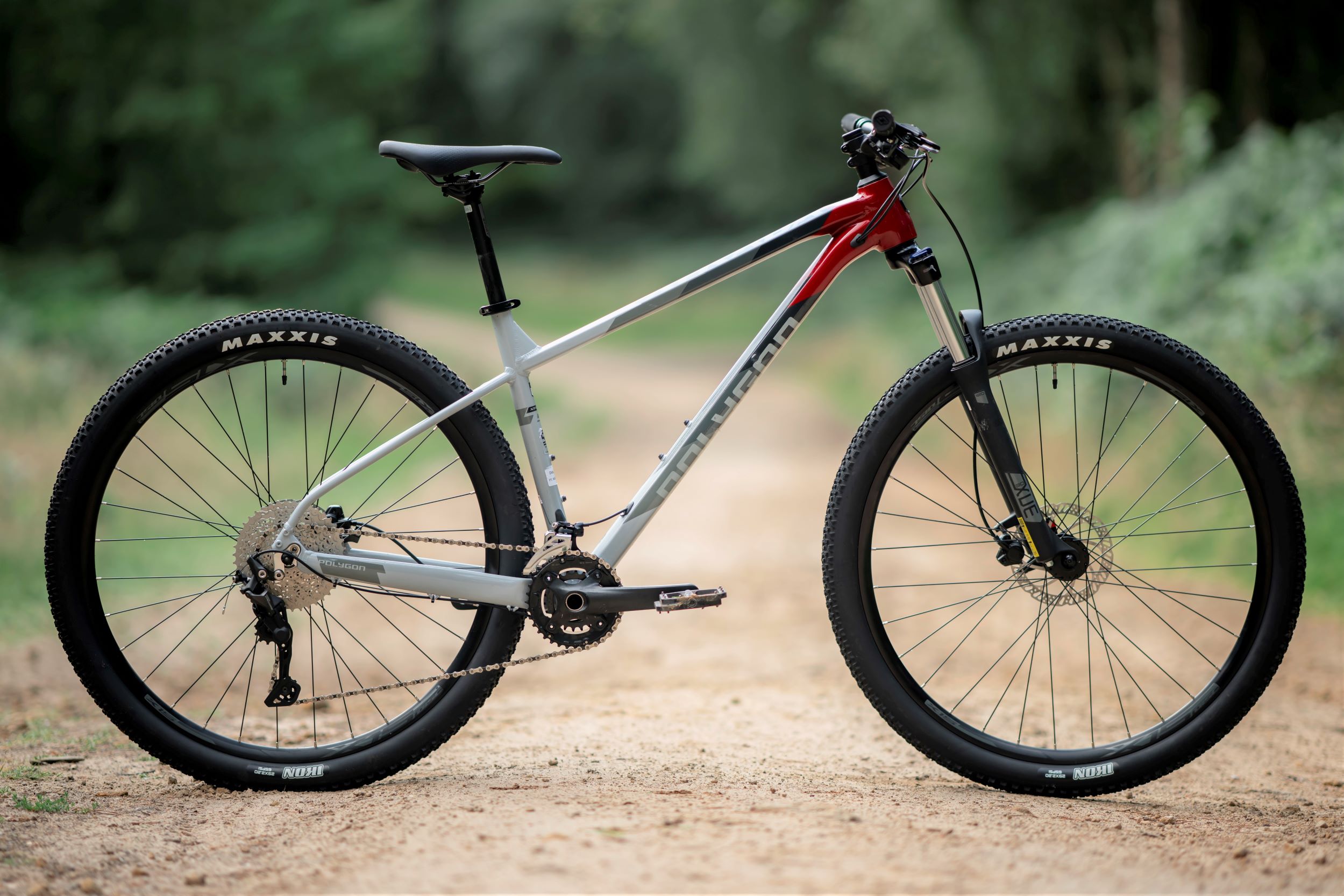
With a single-ring drivetrain, the Polygon Xtrada 5 would be a 10/10 bike
Polygon Xtrada 5
Best shape and handling under £700.
Wheel size: 29in | Frame sizes: S, M, L, XL | Weight: 14.31kg | Suspension travel: 120mm front | Rating: 9/10
- A top quality frame with up-to-date geometry
- Loads of standover clearance
- Dated 2×10 drivetrain
- Fork tops out
The Polygon Xtrada 5 may well sport a dated 2×10 drivetrain, but this 29er has the slackest steering geometry for stability at speed, along with the lowest top tube and shortest seat tube to give you maximum range of motion on black-level trails.
While the drivetrain is frustrating, the handling is first class. It carries speed easily, and we could really throw it around on fun, technical trails and jumps.
Read our full review of the Polygon Xtrada 5
Under £1,000 mountain bikes

Calibre’s Line T3-27 is our latest Hardtail of the Year winner
Calibre Line T3-27
Best hardtail mountain bike under £1,000.
Wheel size: 27.5in | Frame sizes: S, M, L, XL | Weight: 14.52kg | Suspension travel: 140mm front | Rating: 10/10
- Modern geometry
- Dropper seatpost
- Large-volume tyres are comfortable and confidence-inspiring
- Needs a wider gear range
- tall bottom bracket height
Calibre is back in the game after a two-year hiatus, and it’s newest Line T3-27 is straight into the top of our hardtail charts with a perfect 10/10 rating. Built around progressive trail geometry and oversize tyres on 27.5in wheels, the Line T3-27 comes with a clear advantage on rough trails, with more grip and improved comfort.
Getting a dropper post as standard is another impressive feat on this budget bike, and helps the Calibre show a clean pair of heels to the competition on the descents. It’s also more comfortable on the climbs, as you don’t feel every bump travel through your spine. Given inflation over the last few years, the fast that you can get this level of performance for £1k is remarkable.
Listed retail price for the T3-27 is £12,00. However, if you sign up and buy a Go Outdoors membership card for just £5, the bike’s price drops to a great value £999.
Read our full review of the Calibre Line T3-27

Voodoo’s Bizango Pro is an absolute flyer
Voodoo Bizango Pro
Best budget mountain bike for racing and long rides.
Wheel size: 29in | Frame sizes: S, M, L, XL | Weight: 13.2kg (29.2lb) | Suspension travel: 130mm front | Rating: 10/10
- Good geometry and superlative spec choices
- Low weight and comfy ride feel
- BB could be a finger’s width lower
- Fatter tyres and more standover clearance would be welcome
The Voodoo Bizango has smashed pretty much any test it’s ever entered, winning our Hardtail of the Year award multiple times, earning regular podium places on our list of the best hardtail mountain bikes , and impressing everyone who rode it. It must have been very tempting for Halfords to stick with the old frame, add a modern colour, fettle the spec and keep mixing up that winning mix.
We’re extremely glad they didn’t then. For Halfords’ sake, standing still in the ultra competitive hardtail market is suicide. And for our sake, the new Bizango Pro is much the superior bike to anything Voodoo has made before, and ultimately more fun to ride. Great brakes mean you can go faster in the happy knowledge you can stop when you need to, while the 12-speed shifting means you can cruise the hills faster than plenty of full-sus bikes out there. And then there’s the fork, it’s hugely superior to anything we’ve tried before on a £1k hardtail: air-sprung so you can set the sag to your weight, effective rebound dial for control, and a really smooth feel.
Read the full Voodoo Bizango Pro review
Full-suspension

The Cannondale Habit 4 boasts direct-sales value, but you can buy it from a physical store.
Cannondale Habit
Most fun trail bike for under £2k.
Wheel size: 29in (XS frame gets 27.5in wheels) | Frame sizes: XS, S, M, L, XL | Weight: 15.2kg | Suspension travel: 140mm f/130mm r | Rating: 9/10
- Agile and easy to ride, the Habit 4 handles like a much more expensive machine
- Shock tune feels perfect
- Fun and flicky ride that keeps rider weight well-balanced on all trail gradients
- SRAM DB8 brakes feel solid and have a smooth action for a budget brake
- RockShox’s Recon RL fork lacks finesse and precise tuning
- Deore drivetrain shifts can be slightly clunky, especially with the KMC chain
- Maxxis Rekon tyres use harder compound with less wet weather grip
Kudos to Cannondale for nailing the fundamentals on the latest Habit trail bike. The price is right, with the cheapest model coming in at under £2k, despite being sold through physical dealers. And the quality alloy frame and solid parts specification show no obvious cost-cutting. There’s even a dropper post on the entry-level Habit 4.
Better still, it rides great. Sharp, flickable handling rewards your every input, so it dances, rather than drags, on the trail. To quote our review, “as a pure trail bike, it nails the fundamentals of geometry, suspension and efficiency and has an engaging, responsive ride quality that feels anything but budget”.
Read the full review of the Cannondale Habit 4

Polygon Siskiu T8 is a slick full-sus trail bike
Polygon Siskiu T8
Runs the vitus mythique a close second.
Wheel size: 27.5in or 29in | Frame sizes: S, M, L, XL | Weight: 15.6kg | Suspension travel: 150mm f/140mm r 27.5in, 140mm f/135mm r 29in | Rating: 9/10
- Progressive sizing and geometry
- Great value for money
- Needs a Shimano chain
- Tyres are hard and a bit sketchy
Calibre Bikes, sold exclusively through outdoor giant, Go Outdoors, blew the entry-level full-suspension bike market to smithereens when it launched the original Bossnut back in 2016. And it continued to be the benchmark full-suspension bike until the pandemic hit. The Bossnut has disappeared from showroom floors recently, but while we wait for Calibre to launch a new model, there is another option. Calibre’s frames were made by Polygon, and the Indonesian manufacturer has adopted the geometry and suspension tuning (that made the Bossnut head and shoulders above the competition), and applied it to the Siskiu. Also sold through Go Outdoors, the Siskiu is available with 29in or 27.5in wheels depending on the frame size, with the larger frames using 29in wheels and the smaller ones getting 27.5in hoops.
With short chainstays and a stubby stem, the Siskiu T8 29 is a really playful, engaging bike to ride. While the front ends are not that long, the short seat tubes mean you can upsize without getting tangled up in the saddle. And the suspension provides loads of support, so you can push hard on both the climbs and the descents, even if it doesn’t quite have the grip of the Vitus Mythique.
Read the full review of the Polygon Siskiu T8

The Whyte 629 V4 comes from a long lineage of award-winning hardtails
Whyte 629 V4
Best trail hardtail under £2k.
Wheel size: 29in | Frame sizes: M, L, XL | Weight: 14.41kg | Suspension travel: 120mm f | Rating: 10/10
- Amazingly composed and stable handling
- Low-profile rear tyre may not suit all conditions.
- No size small – for that you need the 27.5in wheel 901 or 905
Whyte has been on path to build the perfect trail hardtail for many years now, and the 629 V4 is really honing in on that goal. When we tested it we had this to say about it: ‘The Whyte 629 V4 really impressed us, and in many ways it mirrors its stablemate, the 905, in setting new hardtail standards, this time for 29ers. Ultimately it is balanced, composed, stable and precise, and whether you’re a relative beginner, or an experienced trail rider, you’ll instantly become addicted to its ways’.
Read our full review of the Whyte 629 V4

The Merida Big Trail 600 is a low-slung trail weapon
Merida Big Trail
Light weight with sharp handling.
Wheel size: 29in | Frame sizes: S, M, L, XL, XXL | Weight: 13.86kg | Suspension travel: 140mm f | Rating: 9/10
- Lighter than most rivals
- Handy tool stashed under the saddle
- Wide size range
- Poor wet weather brake performance, but you’ll need new discs and pads to improve it
Merida is a brand that’s easily overlooked, but it has made great strides in the design of its hardtails in recent years, listening to feedback from UK dealers and press to dial-in its geometry and spec. As such, the latest Big Trail is a well-honed option that impressed us when we tested it.
Indeed, our review was glowing, exclaiming that ‘with its low weight and sweet handling the Big Trail 600 ripped, especially in drier conditions’. Merida has also managed to keep the prices keen, and there’s a comprehensive size range that should suit riders of every height.
Read our full review of the Merida Big Trail 600

Specialized’s classic four-bar suspension delivers on its promise of 160mm travel
Specialized Status
Best budget mullet bike.
Wheel size: 29in f/27.5in r | Frame sizes: S1, S2, S3, S4, S5 | Weight: 15.75kg | Suspension travel: 160mm f/160mm r | Rating: 10/10
- Killer value for money
- Inspiring handling
- Sluggish NX shifting
- You’ll need to sharpen your jibbing skills to pull it off
If you’re starting to see a few grey hairs appear then you may well remember the iconic Specialized Big Hit. Although not the original mullet bike, it was perhaps the most successful mixed wheeler before the trend’s recent resurgence. Why was it such a big hit, if you’ll excuse the pun? Well, it wasn’t designed for long distances or going racing, it was built to put a smile on riders’ faces. And it succeeded in spades. The Status captures the spirit of that classic Big Hit, with a mixed wheel set-up, an affordable price and the ability to generate fun at every turn. There are two models on offer, one with 140mm travel and the original version with 160mm travel, but whichever one you pick, you’re in for a blast!
Read our full review of the Specialized Status 160
Over £3000 mountain bikes

The Specialized Stumpjumper Evo Elite Alloy never lets the dust settle when there’s fresh loam about
Specialized Stumpjumper Evo
Best aggressive trail bike with adjustable geometry.
Wheel size: 29in | Frame sizes: S1, S2, S3, S4, S5, S6 | Weight: 14.6kg | Suspension travel: 160mm f/150mm r | Rating: 10/10
- Alloy frame affords a build kit that is performance focused
- Fox Factory suspension is first rate
- Attitude and geometry adjustment make for a seriously versatile trail bike
- Shock tune offers stacks of support, so not as comfort focused as some trail bikes
- SRAM Code RS brakes feel a tad wooden
Fresh from winning our recent battle of the adjustable trail bikes, the Specialized Stumpjumper Evo comes with a rich pedigree as it was also our Trail Bike of the Year in 2022. One of its greatest selling points is the amount of adjustability on offer, with flip chips and headset cups letting you play with the geometry and the weight balance.
The Stumpy Evo is equally adept shredding rough and rowdy natural trails as it is throwing shapes on groomed bike park jump tracks, and that versatility is a huge part of what makes it such an appealing package. Internal frame storage and a comprehensive size range are the icing on the cake.
Read our full review of the Specialized Stumpjumper Evo Elite Alloy
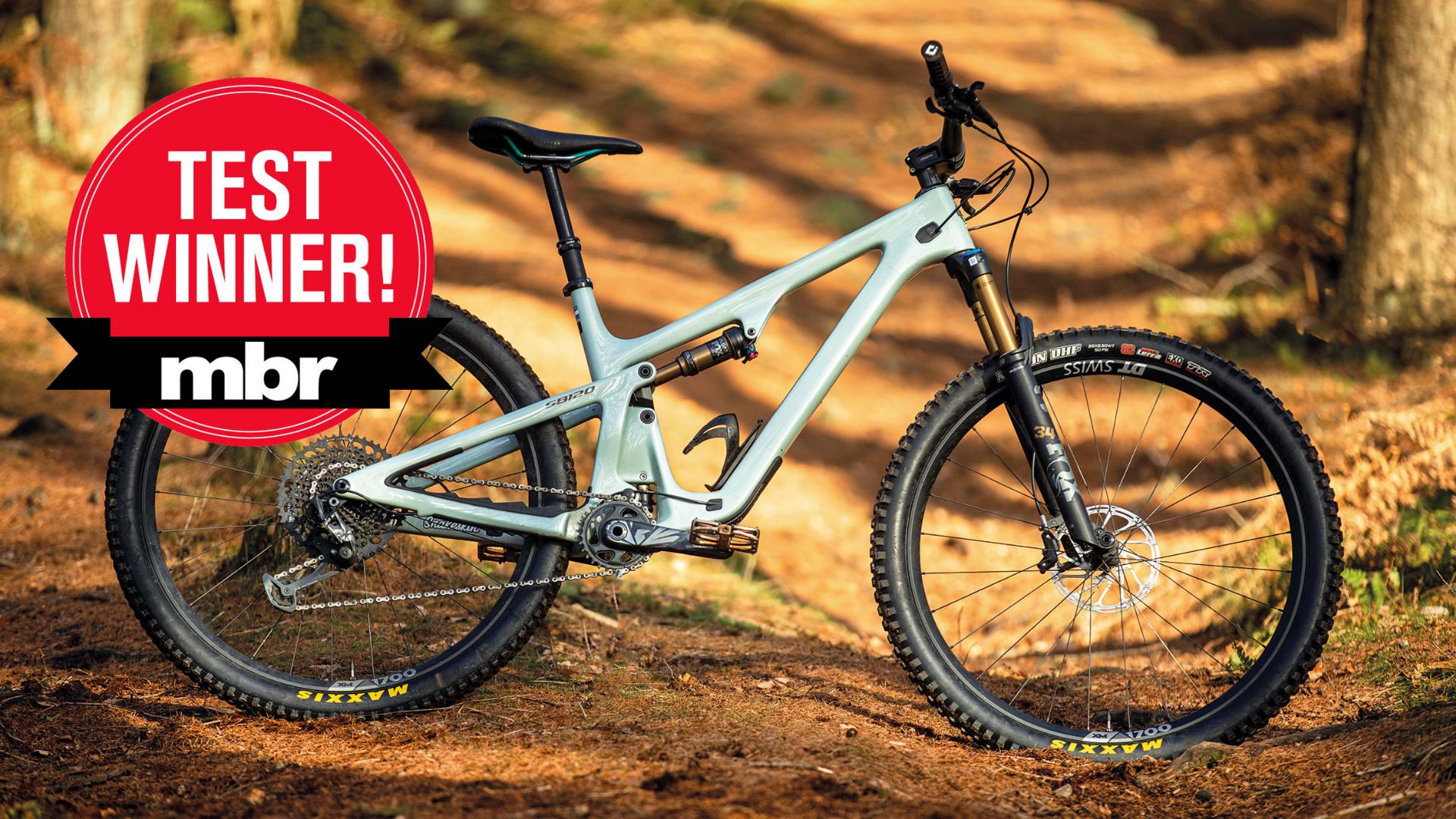
The Yeti SB120 is a down-country bike you can buy with your head as well as your heart
Best boutique down-country bike
Wheel size: 29in | Frame: Turq carbon, 120mm | Weight: 13.3kg (29.3lb) | Rating: 9/10
- All round overachiever with superlative suspension
- Agile rather than ultra aggressive
- Not actually that light
- No internal storage
From one of the most aspirational brands in the business comes the impeccable SB120. Yeti shrinks and shoehorns its unique Switch Infinity suspension design into the SB120 chassis. Where the swingarm moves up and down on dual Fox shafts just above the bottom bracket. And the new design has improved seals, bearings, hardware, and pivots, so it should stay in tip-top condition for longer.
And this clever suspension design really works. As we explained in our review, “the supple suspension is stable under power gives a really positive pedalling feel”. Then, when you really hit a something hard and the rear wheel sticks to the ground, giving superb traction and control. It needs a lighter set of wheels to do the flickable geometry and sublime suspension justice, but even out of the box the Yeti SB120 had us smitten.
Read our full review of the Yeti SB120

Santa Cruz’s Tallboy is a terrier that thinks it’s a rottweiler
Santa Cruz Tallboy
Best down-country bike for sending it.
Wheel size: 29in | Frame: Carbon CC, 120mm | Weight: 13.08kg (28.84lb) | Rating: 9/10
- Outstandingly fast and focused full-send aggression
- Does things normally reserved for burlier bikes
- Superb size range
- Internal storage compartment
- Needs a pretty skilled rider to avoid pratfalls
- Uncomfortably uncooperative on technical off-piste trails
- Can be tiring to ride
Although often overlooked in the comprehensive, verging on confusing, Santa Cruz range, we think the Tallboy is an undiscovered gem. You’ve heard of small man syndrome, or small dog syndrome, well the Tallboy has small bike syndrome, where it steadfastly believes it’s actually an enduro bike, and deserves to be ridden as such. The stiff frame and aggressive angles beg to be wrung out on every descent, yet the efficient suspension and lightweight mean it’s always the first bike back up to the top of the hill.
For some riders, all that straining at the leash might be too much. But if you love wringing the neck of a short travel whip, and seeing your buddies slack-jawed in amazement as you undermine and overtake their big-travel enduro bikes, the Tallboy is the ultimate sleeper bike.
Read our full review of the Santa Cruz Tallboy

Transition’s Spur is still one of the finest down-country bikes we’ve ever tested
Transition Spur X01
Best lightweight down-country bike.
Wheel size: 29in | Frame sizes: S, M, L, XL | Weight: 11.25kg | Suspension travel: 120mm f/120mm r | Rating: 10/10
- Perfect blend of speed and control
- Lightweight
- Not the most robust build if you’re carrying some timber
- Narrow size range
The Transition Spur is arguably the bike that spawned the down-country category, and also the bike that perhaps best defines it. At under 11.5kg, the Spur flies out of the gate, haring up climbs and tearing along high-speed singletrack. That lack of inertia encouraged us to sprint every rise, pop every jump, and schralp every turn, helped by the stable geometry and supple suspension.
With lightweight RockShox Sid forks up front, the temptation is to add travel and girth, but to do so is to dilute the Spur’s potency and add unnecessary grams. So while there’s a bit of flex when pushed hard, we’d treat that as part of the charm, and lap up the whirlwind of action that accompanies every descent. As we said in our review, the Transition Spur is “the best-realised ‘down-country’ bike we’ve ever tested and the one we all covet if we were spending our own cash”.
Read our full review of the Transition Spur

Did the Mondraker Raze RR impress us? Yes, it did.
Mondraker Raze
Best trail bike for suspension set-up nerds.
Wheel size: 29in | Frame sizes: S, M, L, XL | Weight: 13.65kg (30.09lb) | Suspension travel: 150mm f/130mm r | Rating: 10/10
- Fast and capable
- Built-in suspension data acquisition
- Excellent on-trail performance
- You need a 4G connection to keep the MIND engaged
Mondraker has never been afraid to push ahead with innovation. It was the first brand to really give us modern sizing, with its Forward Geometry concept. And now it’s getting creative with suspension set-up, incorporating built-in data logging, to make set-up and analysis easily available to a trail bike audience.
But it hasn’t forgot about the basics, and the Raze is a right little ripper, that – as we explained in our review – has ‘nailed the balance of speed, compliance and capability to perfectly capture the essence of the short-travel trail category’.
Read our full review of the Mondraker Raze Carbon RR

Integrated suspension system conceals the RockShox NUDE 5 shock inside the full carbon frame
Scott Spark RC WC AXS
Best high end xc race bike.
Wheel size: 29in | Frame sizes: S, M, L, XL | Weight: 11.12kg | Suspension travel: 120mm f/120mm r | Rating: 9/10
- Ruthless in its efficiency
- Hidden shock should need less maintenance
- Remote suspension adjust
- Suspension could be more supple in Descend mode.
Scott’s Spark has won more trophies than any other race bike, with double Olympic gold back in 2016. This latest version gets a sleek new frame and more modern geometry, meaning that while the Scott Spark has lost none of its potency, it has now become even more versatile. It also gets a hidden shock for reduced maintenance, and remote suspension control for uphill efficiency without compromising on downhill confidence.
Read our full review of the Scott Spark RC WC AXS

The Nukeproof Giga offers a right rollicking ride
Nukeproof Giga
Best enduro bike.
Wheel size: 27.5, 29in or mullet | Frame sizes: S, M, L, XL, XXL | Weight: 15.4kg | Suspension travel: 180mm f/170mm r | Rating: 10/10
- All of the travel, none of the drawbacks
- Michelin tyres are temperature sensitive
The Giga is testament to the adage that you can have your pudding and eat it. You can enjoy all of the all-ness, all of the time. Loads of travel. Slack AF head angle. The biggest of wheel sizes. And the most remarkable thing? It rides just like a normal mountain bike when the gradient tips up. The Giga really is a race-worthy enduro bike that doesn’t feel like a chore to pedal around on your Sunday Social rides. Poppy and playful, the Giga is no passive plough.
Read our full review of the Nukeproof Giga 290 Carbon Factory

YT Industries’ Capra Core 2 GX just had the edge on the Canyon Torque when we tested them back-to-back.
Best direct-sales enduro race bike
Wheel size: 29/27.5in | Frame sizes: S, M, L, XL, XXL | Weight: 16.6kg | Suspension travel: 170mm f/170mm r | Rating: 9/10
- Calm and quiet
- Rocketship fast
- Five frame sizes
- Needs sturdier casing tyres
YT’s Capra narrowly clinched victory against its arch nemesis, the Canyon Torque, when we pitted them head-to-head recently. But it was a points victory, and which one is best depends largely on your priorities. The Capra feel at home going flat-out, racing for those fractions of a second that are crucial in enduro racing. Yes, it’s also tons of fun to ride, but its true calling is against the clock.
Choose from carbon or alloy frames, a multitude of sizes, and a range of superb specs, whatever your budget. A classic bike that has just got better with age.
Read our full review of the YT Capra Core 2 GX

The Canyon Torque Mullet AL 6 loves to party.
Canyon Torque
Best direct-sales bike park shredder.
Wheel size: 29/27.5in | Frame sizes: S, M, L, XL | Weight: 16.6kg | Suspension travel: 170mm f/175mm r | Rating: 9/10
- Playful and bombproof ride
- Excellent tyre spec
- Fork needs more support or overinflating
- No proportional chainstay lengths
So if the YT Capra is the head-down racer, the Canyon Torque is the joker in the pack, goofing around on side hits and rarely seen with both wheels on the ground at one time. It’s a bike that revels in being twisted into crazy shapes at the bike park or surfing loamy turns in the hills.
Of course Canyon also offers a huge array of options, with alloy and carbon frames, coil shocks and air shocks, and mullet wheels or full 29ers. All of the Torque models come with exemplary specs, so however big your budget, you won’t be disappointed.
Read our full review of the Canyon Torque Mullet AL 6

The Merida One-Sixty FR 600 offers plenty of bang for not too many bucks.
Merida One-Sixty FR 600
Best value long-travel enduro bike.
Wheel size: Mullet | Frame sizes: XShort, Short, Mid, Long, XLong | Weight: 17.2kg | Suspension travel: 180mm f/171mm r | Rating: N/A
- Robust build kit
- Well matched DVO suspension
- Modern sizing system
- Keenly priced
- Bike park-ready straight from the box
- Internal headset cable routing
- Noisy in rough terrain
The competitively-priced Merida One-Sixty FR 600 really impressed us when we tested it. With a 180mm fork, and 171mm of coil-sprung travel out back, the One-Sixty packs enough travel to take on pretty much anything, and the flex-stay rear suspension design is innovative while reducing complexity, so you have fewer bearings to worry about in the long run.
Given that the One-Sixty is sold through a dealer network, the price is very reasonable, with quality suspension, wheels, and brakes. It also boasts modern geometry, so there’s loads of standover height on all frames, and you can choose your size according to length, and handling characteristics. The burly aluminium frame, is built tough, so it’s no lightweight, but it actually pedals and climbs surprisingly well. And on the descents, we found the Merida One-Sixty was easy to ride, confidence-inspiring, and impressively capable.
Read our first ride review of the Merida One-Sixty FR 600

The Vitus Mythique 29 VRX is one of the best budget full-suspension bikes on the market
How we tested the best mountain bikes, and why you can trust our opinion
Our list is drawn up by a test panel of mountain bike journalists, most of whom have over 20 years experience reviewing bikes ( read more about our bike testers and writers them here ). In recommending the best mountain bikes to you, we draw on that experience and our expansive knowledge and comprehensive overview of the market. In 2022 alone we tested over 80 different mountain bikes and we’ve been testing bikes since MBR was launched in 1997. In 25 years that’s over 2,000 bikes reviewed – that’s why you can trust our advice.
We never take a product at face value and manufacturer’s claims are always probed. That’s why we measure the weight, travel and geometry on all our test bikes (the numbers we publish are our own figures unless specified). In group tests we always try to fit control tyres to create a more level playing field and help isolate critical differences in handling and suspension performance.

A good starter mountain bike costs from £400 upwards, but an extra couple of hundred quid really counts at this level.
What’s your budget?
£400+ is a good start for a bike that will stand up to off-road abuse without falling apart in five minutes, but… hold your horses. We’re going to go into what you get (and don’t get) for your money in a moment. You can get a perfectly decent mountain bike for under £600. You can also max out your credit card and drop over £10k on a mountain bike.
Are those bikes 10x better? No, they aren’t. The law of diminishing returns definitely applies to mountain bikes, particularly as you spend over £4,000. They are better, sometimes significantly so depending on the rider and terrain, but essentially you get less drastic improvements in bike quality the higher you go up the price scale.

Most of us are trail riders, looking for a bike that’s fun and efficient on a wide variety of terrain.
What sort of riding are you going to do?
Whilst your budget is probably going to be main thing you’re thinking about at first, it shouldn’t be. First, you need to decide on the type of mountain bike is going to suit you best. Then you can look at what your budget will get you.
Mountain bikes are now very capable and versatile machines. They can turn their hand to all sorts of riding. More so than ever these days in fact. You can go for a trail ride on an enduro bike. You can ride enduro trails on a down-country/XC bike. So you aren’t closing off all avenues of riding by going for a certain sort of bike. But you’ll have a more fun and rewarding experience if you get a bike that best suits your main type of riding.

An XC bike, like the Canyon Lux, is fast and efficient, but you’ll need good skills to make the most of it
Conversely, don’t be tempted to get a bike for the extreme 1% of the riding that you’ll do on it. A burly gravity-fuelled bike is fine and dandy for an annual uplift day, but you’ll have to pedal that thing around for the other 51 weekends of the year.
For the purposes of this guide let’s ignore the extreme ends of the spectrum. Chances are you aren’t looking for an Olympic XC race bike. Nor are you looking for a World Cup level Downhill bike. This buyers guide is about ‘normal’ mountain bikes. But even within the realm of ‘normal’ mountain bikes there are various sub-genres. Some are gimmicks, some are irrelevant, some are seemingly entirely fabricated by marketing departments.
In a nutshell: the best mountain bike for most people
In our opinion, if you’re in doubt, get a Trail bike. These will be capable enough on more extreme terrain but won’t feel like a burden on calmer, flatter terrain.

Modern trail bikes are versatile beasts and come in many different flavours
Choosing the best mountain bike for: Trail riding
Trail riding is arguably best defined by what it’s not. It’s not cross-country. It’s not Enduro. It’s riding around regular tracks and trail centres with the occasional 50km epic thrown in and the odd uplift day or two. Trail bikes sport between 120mm and 150mm of travel and are designed to be strong enough to withstand all sorts of abuse without being too portly.
Recommended mountain bike : hardtail or full-suspension with 120-140mm suspension. 29in, 27.5in, or mixed (mullet) wheels (29in front and 27.5in rear).

Some of the latest XC bikes have progressive geometry that lets you blast the descents just as hard as you can scorch the climbs
Choosing the best mountain bike for: Cross-country (XC) riding
This is less about jumps and slamming berms and more about pedalling miles and crossing fells. But hold on, don’t write it off thinking it’s for doddery older riders on dull, wide fire-roads. XC riding and racers are still about off-road speed. But with cross country there’s more of an emphasis on climbing. So the bikes are as light as possible. They also don’t pack much in the way of suspension travel (sub-120mm) as more suspension travel results in heavier bikes. They are also often less overbuilt in terms of fork/frame/wheel stiffness. Again, stiffer stuff means more weight. They also aren’t able to install a dropper seatpost due to having narrow (sub-30.9mm) seat tubes. Crucially, XC bikes can also still have rather old-fashioned geometry that often ignores descending prowess and is still heavily modelled on road bikes. This is all well and good if you’re Nino Schurter, but for most people the end result is fairly terrifying on any technical terrain. As a result, even if you want to ride cross-country you’re probably better off on a (light as possible) trail bike than a sketchy XC bike.
Recommended mountain bike: light-as-you-can-afford hardtail or light full suspension with 100-120mm suspension and 29in wheels.

Enduro bikes have to survive the equivalent of racing multiple World Cup DH tracks in a single day, without breaking, and being pedalled back up to the top again
Choosing the best mountain bike for: Enduro riding
Enduro riding intentionally and unashamedly prioritises descending capability and speed. The terrain can resemble Downhill race tracks but there’s no uplift here. You have to pedal your way around. Enduro bikes are essentially longer travel (160+mm) Trail bikes with stronger parts. As a result they’re heavier than Trail bikes. Or the same weight and significantly more expensive. Enduro bikes are very much in vogue but you should be careful before you automatically head down this route. A couple of kilos may not sound much but it’s always there no matter what trail you’re on. If most of your riding is trail centres then an Enduro bike is going to be OTT and very probably slower than a Trail bike. One area where Enduro bikes are leading the way for all kinds of riding however is geometry. A cutting edge Enduro bike will have a riding position that bests both XC and Trail bikes for climbing, descending and contouring. Enduro bikes are at the forefront of mountain biking. A lightweight Enduro bike is an amazing thing. And amazingly expensive.
Recommended mountain bike : full suspension with 150-170mm suspension. 29in, 27.5in or mullet (29in front, 27.5in rear) wheels

The best hardtails under £1,000 make a great starting point
Hardtail or full-suspension?
It’s easy to assume that everyone would be riding full suspension bikes instead of hardtails if there was no price difference. This isn’t really true. Hardtails do have some advantages over full-suspension bikes regardless of price tag.
Hardtails are lighter. Hardtails have less to go wrong or require servicing. Hardtails are easier to clean. Hardtails can be faster and more fun on smoother trails. Adding to this the fact that hardtails are cheaper than their full-sus counterparts means that hardtails aren’t going to be extinct anytime soon.
What are the benefits of going full-suspension? First and foremost, control. Full suspension bikes track the ground better and as such offer greater traction. Full-suspension bikes are more composed and not as sketchy to ride as hardtails. The fatigue and comfort benefits are also important, particularly over longer distances. Being less beaten up and less tired on longer rides is an added bonus of bounce.
What are the drawbacks of full-suspension? They’re heavier than hardtails. They usually have a lower component spec (compared to hardtail of the same price). They have bearings and pivots that will eventually wear out and cost money to replace/service. They can be mud traps. They can be difficult to clean properly. And if you don’t understand the basics of how to setup suspension, then a full-suspension bike can ride really badly, inefficiently and sketchily.

Modern e-bikes, like the Whyte E-160, can open up new off-road horizons
What about the best electric mountain bikes ?
Riders have switched on to e-bikes in huge numbers over the last few years for one simple reason: they let you pack a lot more trails into your usual ride. In fact you can often enjoy double the distance and metres climbed/descended in a typical three hour Sunday ride than you can on an analogue bike, and with people’s lives busier than ever, that’s a big incentive. E-bikes have also improved massively since the early versions came out in 2013/2014, with plenty of power, impressive range and handling that can be as fun as any non-assisted model.
E-bikes are governed by a number of legal restrictions, so they can only assist while you’re pedalling and only up to 15.5mph, but that doesn’t hold them back off-road, and the best models will slap a bigger grin on your face than any other bike you’ve ridden. So what’s the catch? Well, e-bikes are generally more expensive than analogue models, there’s a lot more to go wrong, they are more expensive to maintain and they are very different to ride. Some might say they are less pure, and they are for the lazy. It’s true, you can be lazy on them, but you can also get a really good workout (including your upper body) if you put your mind to it.
If all that sounds enticing, check out our buyer’s guide to the best electric mountain bikes and the best budget electric mountain bikes .

Even straight out of the mould, the HB frames are a thing of beauty
Carbon or aluminium?
At the mid to high end level there’s something of a crossover point where you can sometimes choose between a carbon framed bike (with lower end parts) or an aluminium framed bike (with better bits) at around the same price point. We’d always recommend going for the better specced aluminium model.
Is carbon worth the extra money? For most riders, no it isn’t. Just how much extra does it cost anyway? To go carbon will cost you approximately an extra £1,000 (for the similarly equipped bike).
What does this £1,000 get you? A lighter frame for sure. But not that much lighter, maybe 700g or so at the absolute most. The more convincing argument for going carbon is not weight, it’s ride feel. Carbon bikes ride differently to aluminium bikes. Stiffer. Sometimes with a damped (dead) sort of feeling. And these days carbon bikes are often stronger than their aluminium counterparts.
The carbon feel and strength is what it’s all about. This is not to say that this racy, rally-car ‘carbon feel’ is going to suit everyone. Some riders prefer the feel of aluminium bikes over carbon.

Cotic uses steel in its full-suspension frames to great effect
Some people are even making big hype about steel again. This time steel full-suspension, with brands like Cotic and Starling leading the charge. Maybe things can get too stiff on a mountain bike? When this occurs, fatigue increases. Line choice becomes harder. Maybe some chassis flex results in a faster ride? But then, steel full-sussers are going to be even heavier than aluminium.
At the end of the day, the frame material isn’t going to affect most people’s bike riding. Tyres, wheels and suspension setup is far, far more significant. So we would actually say that frame material isn’t worth worrying about overly.

Which wheel size is best?
This old chestnut. Again, we’re going to be mildly controversial and say that the difference between 27.5in bikes and 29er bikes isn’t as pronounced as it was back in the mid ’00s.
Nowadays you can get 29ers with decent amount of suspension travel (up to 170mm – more for DH) and with decent geometry, so the wheel size debate has fizzled out. Some brands even offer two versions of each model, one with 27.5in wheels and one with 29in wheels, so you can just choose the option that suits you.
29ers are more stable and have better grip. But they have unavoidably higher front ends and the rear tyre can hit your bum on steep stuff if you’re under 6ft tall. The higher wheel axles can make the bike feel taller in tight switchbacks and thus require more leaning over. 27.5in bikes can be stiffer, can have lower front ends and the rear tyre won’t boot you up the behind on steep drops and chutes. The lower wheel axles require less body English in tight hairpins so the bikes can feel more nimble for a given rider input.

Canyon’s Torque CF8 Mullet is an example of a modern mullet bike that blurs the lines between enduro and freeride
If you’re 6ft tall or over, you’re probably going to better served by a 29er. If you’re under 5ft 6in then a 29er is likely going to feel too big. Which is where the mullet bike, or MX, fits in. These models use a 29in wheel up front (for maximum stability, speed and rollover) paired with a 27.5in wheel at the back (to improve agility and bum clearance). They’re a great option for riders who want a fun, playful bike or have shorter legs.

The Orange Switch 7 SE is a single-pivot design with a linkage to drive the shock, which lets Orange tune the leverage curve
Which suspension design is best?
A bonus debate for you. Sorry! Although there’s less hype and grand claims made about different suspension frame designs these days (compared to the slanging matches and OTT marketing of yore, anyway) there is still a valid interest in how the designs differ from each other. The mountain biking market is now mature and experienced enough to admit that there is no single Best Suspension Design . The four-bar (or Horst Link) used to be the Holy Grail. Single pivots used to get ragged on for being crude. Neither of these stances are correct.
To be frank, pretty much all suspension designs are good. But they are not all the same. They do differ in how they feel and respond (to both the trail and to the rider onboard). Some are fussy in how precisely they’re set up, some are more forgiving. Some also require more maintenance than others. The rear shock – and how you can tune it – is arguably more important than frame suspension design these days. It is now possible to do an awful to with a rear shock to alleviate any frame design niggles you may encounter. Bike too bob-prone, or wallowy, or harsh bottom out? Chances are something can be done with the rear shock to address this.
Basically, bike companies have got most of the kooky, bad designs out of their system now. The differences between them are now extremely subtle. Learning about suspension theory and setup is more important.

Geometry, geometry, geometry
The angles and lengths of the frame tubes governs almost everything in how a bike will ride. The best suspension in the world counts for nought if the geometry is poor. Similarly, a bike with great geometry can often overcome any suspension shortcomings and ride just fine.
What’s the best geometry for a mountain bike ? This is a tricky area and one which is still full of old myths and prejudices. But here’s our take on it…
Long reach (the distance between saddle and handlebars, in layman’s terms) is good. Steep seat angles are good. Slack head angles are good. And we’re not talking just ‘good for descending’. This geometry is good everywhere. Slack head angles don’t cause front end wandering on climbs (that’s caused by slack seat angles and/or short top tubes).
Low bottom bracket heights are generally good (for stability and for cornering), but riders who pedal in rutted/tufty/stumpy terrain, or like to be challenged by rocky, trials-style terrain, may get bored with frequent pedal strikes and so prefer a higher bottom bracket height and accept the compromise in handling.
Chainstay length is another area full of cliché. Short chainstays are seen as highly desirable. Long chainstays are seen as bad. Why is short good? We’re not sure it is particularly. It makes bikes easier to manual but that’s about it. They can be problematic on climbs if the seat tube is too slack, making it difficult to keep the front wheel weighted. Long chainstays offer greater stability and climbing prowess, but there is a trade-off in agility.
Another aspect these days is the return of standover as being high on the important list. The advent of dropper posts with 150mm+ of travel has meant that bike designers are factoring shorter seat tube lengths in their bikes now so that they can fit in long drop dropper posts. Truth be told though, you still can’t judge how a bike will ride by looking at its geometry chart. Geometry is a combination of multiple factors that all interact with each other. One isolated measurement doesn’t govern everything.

Have a budget in mind before heading to your local dealer
How much should you spend?
If you have less than £1,000 to spend then we still think a hardtail is the way to go. Sub-£1k full-sussers are going to be overly hefty and sport low-end kit that will impair your ride experience.
These days you can get capable and fun full-suspension bikes for between £1,000 and £2,000. They aren’t especially light but they aren’t restrictively heavy either. And the parts package on a good £1k susser will feature perfectly good stuff from recognised brands. Sure there’ll be some cost-cutting here and there, and some no-name finishing kit, but it won’t overly affect the bike’s ride.
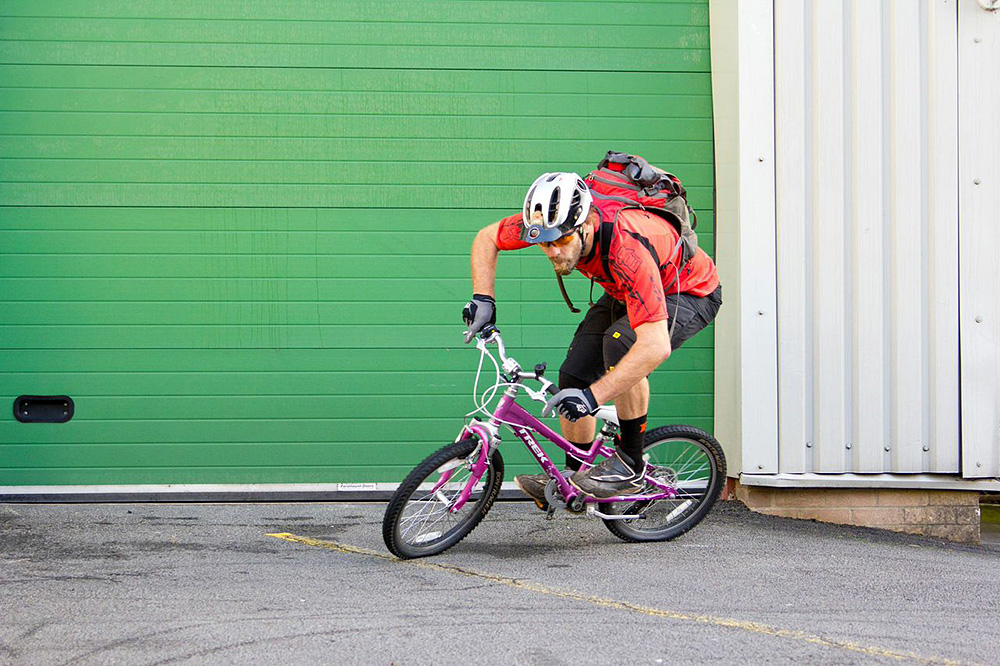
Don’t end up on the wrong size bike
What size bike should you get?
A lot of people are riding around the wrong size bike.
The first myth to bust is that smaller bikes are more nimble/playful/manoeuvrable. Nope. Smaller bikes are less stable, more sketchy and uncomfortable. Don’t buy a bike that’s too small thinking it’ll be alright. Don’t get suckered into buying the wrong size bike because it’s at a bargain price. A cheap bike that’s big enough for you and has good geometry will be infinitely better than a half-price bling bike that’s too small for you.
The best way to do it is consult a size calculator (most bike brands have them), confer with other owners, and (if you’re in the 5ft10in-5ft11in height range) check out our reviews. We always add the rider height and size tested information in the specification table and we will usually comment on the sizing within with review. You should also check out our guide to choosing your mountain bike frame size . Remember that there is a degree of adjustability when it comes to fit with any frame size – you can slide saddles fore and aft on the rails, you can run longer or shorter stems, high-rise or low-rise bars – but you can never change the length of the seat tube.

- Mountain Bikes
- Gravel Bikes
- Hybrid Bikes
- Electric Bikes
- Commuter Bikes
- Exercise Bikes
- Women’s Bikes
- Kids’ Bikes
- All Best Bike Brands
- Mountain Bike Brands
- Electric Bike Brands
- Bike Rack Brands
- Brand Review: Rad Power Bikes
- Brand Review: Ride1UP Bikes
Disclaimer: Bikexchange is reader-supported . We may earn an affiliate commission when you buy through the links on our site.
Best Mountain Bikes in 2024: Top Choices for XC, Trail, Enduro, and DH Riding
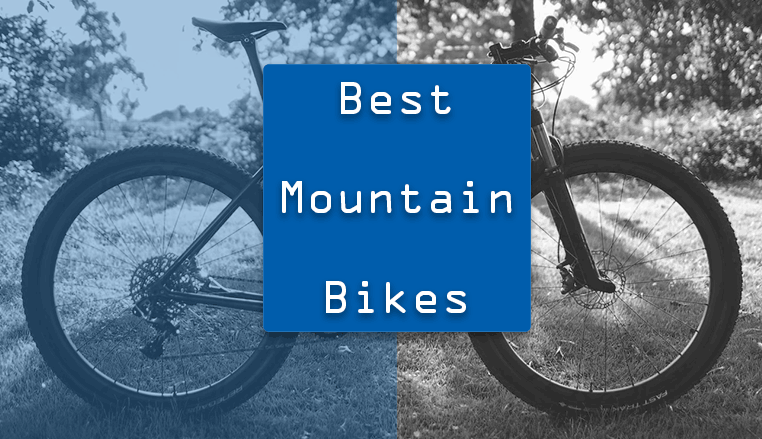
When choosing the best mountain bike, you’re making a significant investment that’s likely to last 5 to 10 years. That’s why you need to choose wisely!
If you’ve decided on a mountain bike as your next two-wheeled companion—whether as an upgrade or your introductory venture on the trails—our article will provide you with a carefully selected range of the latest and best mountain bikes available.
Navigating through the diverse range of mountain bike disciplines can be overwhelming, which is why our guide simplifies this decision, ensuring you choose the perfect bike to match your riding style and ambitions.
- Consider Also: Used Mountain Bikes from The Pro’s Closet
Our Selection of the Best Mountain Bikes
1. Niner Air 9 2-Star 2. Santa Cruz Bicycles Chameleon AL D R 3. Salsa Rangefinder 4. Cannondale Trail 8 5. Salsa Beargrease 6. Alchemy Argos 7. Rocky Mountain Growler 20 8. Marin San Quentin 2 9. Specialized Chisel 10. Ibis Ripmo 11. Trek Top Fuel 8 12. Cannondale Habit 4 13. Norco Sight C2 14. Niner WFO RDO 2-Star
Best Mountain Bikes of 2024
1 . niner air 9 2-star.

MSRP: $1,999
- Frame: Aluminum
- Suspension Travel: 120 mm
- Brakes: Hydraulic discs
- Gearing: SRAM SX Eagle 12-speed
- Tire Size: 29″ x 2.6″
Niner Bikes is a renowned mountain bike brand specializing in producing high-performance mountain bikes. The Niner Air 9 2-Star is a good hardtail example.
Niner Air 9 is an aluminum hardtail mountain bike with a 120 mm suspension fork, a 12-speed drivetrain, and 29×2.6″ tires.
The 2-Star model boasts a SRAM SX Eagle drivetrain, Marzocchi Bomber Z2 Rail fork, a Niner Custom saddle, and SRAM Level hydraulic disc brakes.
Sadly, this build doesn’t come with a dropper post, but you can easily fit one. If you plan to do so, you should check out our recommendation of the best dropper seat posts .
Depending on how hard you shred, the Niner Air 9 range has quite a large variety of set-ups to choose from, while the geometry of the bike is suitable for top-class riding on intermediate and advanced trails.
Buy on JensonUSA.com
2 . Santa Cruz Bicycles Chameleon AL D R
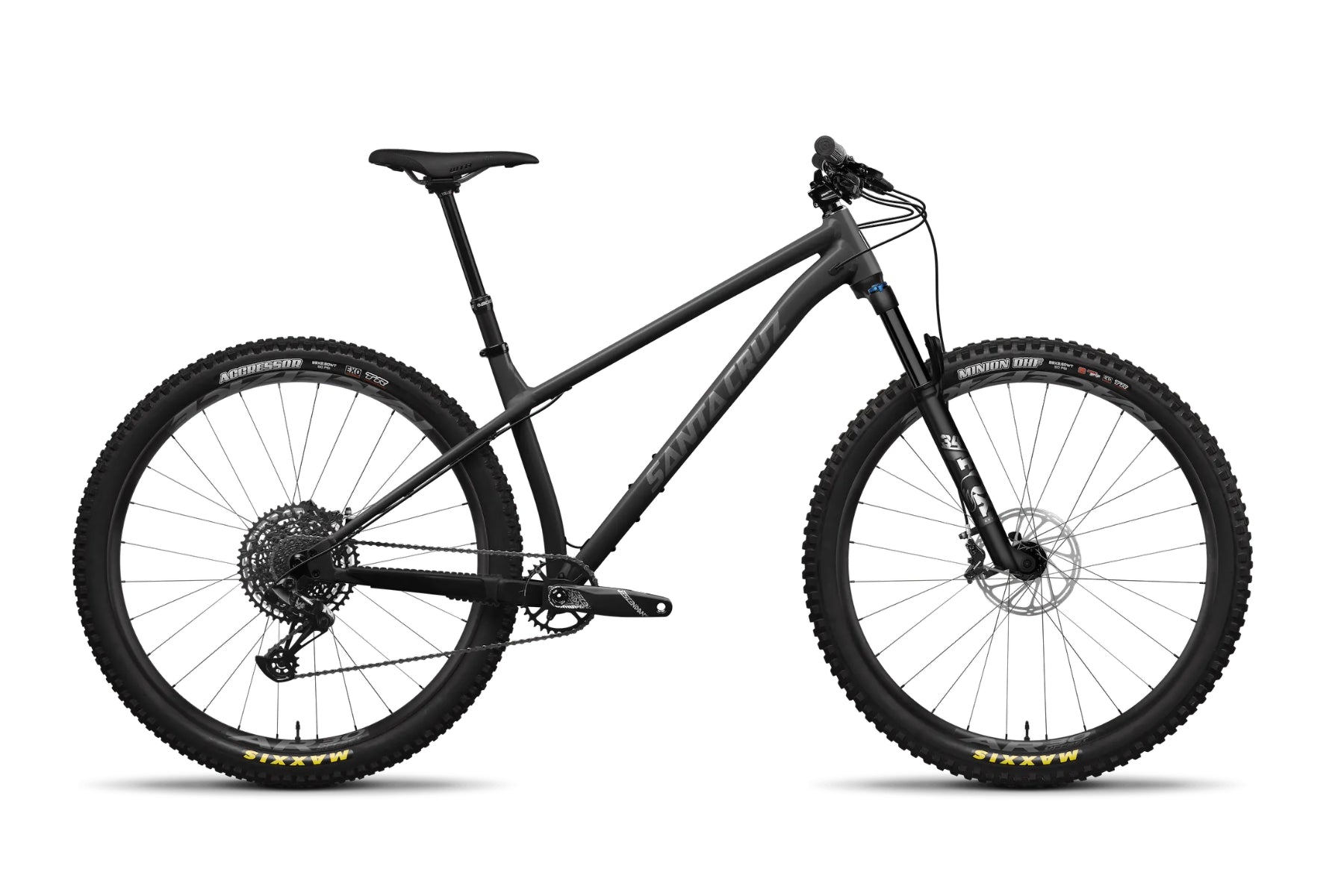
MSRP: $2,600
- Suspension Travel: 130 mm
- Gearing: SRAM NX Eagle 12-speed
- Tire Size: 29″ x 2.5″
The latest Chameleon model from Santa Cruz Bicycles is designed to excel in a variety of terrains, just as its name suggests.
The Chameleon AL D R that we’re reviewing here boasts a lightweight aluminum frame paired with a FOX Rhythm 34 Float fork with 130 mm of travel. That makes it suitable for hitting light trails and rough singletracks.
The SRAM NX Eagle drivetrain puts 12 speeds at your disposal and the SRAM G2 R hydraulic disc brakes will give you all the control you need to hit technical descents. A dropper seat post will help in this area as well.
In addition to that, the Santa Cruz Chameleon has 29″ x 2.5″ tires that seem massive and guarantee enough grip on a variety of surfaces.
All things considered, the Chameleon is a high-end option from a reliable brand that can fit the needs of a large variety of riders.
Buy from MikesBikes.com
3 . Salsa Rangefinder

MSRP: $1,399
- Gearing: Shimano Deore 12-speed
- Tire Size: 27.5″ x 2.8″
The Salsa Rangefinder has been one of the best mountain bikes in the entry-level category for years now. It offers an exceptional value for the money for beginners and intermediate riders.
With a 120 mm SR Suntour XCR34 air front suspension and an aluminum frame, the Rangefinder is capable of proper mountain biking on rough trails.
This build also sports a Shimano Deore 12-speed derailleur and shifters, WTB ST i30 wheels, and plus-size 2.8″ Maxxis Rekon tires. The package also includes basic Shimano MT200 hydraulic disc brakes that have plenty of stopping power, but not as much modulation as more expensive brakes.
The Salsa Rangefinder also comes with a TranzX dropper post, which is not a common find in this price range. We also love the numerous mounting points scattered around the frame, which also makes the Rangefinder one of the top MTBs for bikepacking .
Buy on REI.com
4 . Cannondale Trail 8

- Suspension Travel: 75 mm
- Brakes: Mechanical discs
- Gearing: Shimano Tourney 2×7-speed
- Tire Size: 27.5″ or 29″ x 2.25″
The Trail series by Cannondale offers eight affordable mountain bikes, with the Trail 8 offering the best value for the money considering that it retails for just $535.
The Cannondale Trail 8 is a great mountain bike for recreational and beginner cyclists as it has all the right components you expect to see in this price range.
The geometry of this bike is upright and relaxed, which is ideal for beginners, and it’s also a perfect all-rounder mountain bike due to the 75 mm travel fork on the front.
What stands out most about the bike is the 2×7-speed Shimano Tourney drivetrain and Tektro mechanical disc brakes, which is a low-tier combination of components, but solid for a bike that costs around $500.
Shorter riders will also appreciate the size-specific wheels, as the Trail 8 comes with 27.5″ wheels in XS and S frame sizes and 29″ wheels in larger frame sizes. This ensures a good fit across the 4’6″ – 6’3″ recommended rider height range.
5 . Salsa Beargrease

MSRP: $2,899
- Frame: Carbon
- Suspension Travel: Rigid (None)
- Gearing: Shimano Cues 11-speed
- Tire Size: 27.5″ x 4.0″
The Salsa Beargrease is a fat tire mountain bike with a full carbon fiber frameset and a rigid fork.
This impressive Salsa carbon frame is stiff, responsive, and incredibly lightweight, giving this bike a premium feel. The huge 4.0″ 45NRTH Vanhelga fat tires ensure comfort, traction, and durability on almost any terrain you encounter.
Of course, this bike is slightly limited on chunky downhill terrain without suspension, but the wider tires mean you can ride on snow, sand, and mud without any issues.
The groupset comprises a Shimano Cues 11-speed drivetrain with an 11-50t cassette and reliable Shimano hydraulic disc brakes.
All things considered, if you’re in the market for one of the best fat tire mountain bikes , you won’t get much better than the Salsa Beargrease in the sub $3,000 price range.
6 . Alchemy Argos

MSRP: from $6,499
- Frame: Titanium
- Gearing: SRAM GX Eagle 12-speed
- Tire Size: 29″ x 2.4″
When it comes to ultra-durable, stylish, and well-thought-out mountain bikes, you can surely count on Alchemy. The Argos hardtail is equipped with the latest technologies that are ideal for the best hardtail mountain bike experience.
This truly is a hardtail trail mountain bike to consider when you are looking for a performance race companion.
The Argos is built around a lightweight and comfortable titanium frame that comes equipped with a 130 mm front suspension fork.
The cheapest build features a SRAM GX Eagle 12-speed groupset, but you can also get a Shimano XT, SRAM X0, Shimano XTR, and SRAM XX groups.
All builds roll on Maxxis 29″ x 2.4″ tires and come with Industry Nine Enduro S aluminum or carbon wheels, depending on the build.
Titanium mountain bikes are not common on the market, which really makes the Alchemy Argos stand out, through the price tag will not fit everyone’s budget.
Buy on Alchemybikes.com
7 . Rocky Mountain Growler 20

- Frame: 6061 Aluminum
- Suspension Travel: Suntour XCM34 DS, 130mm Travel
- Gearing: MicroSHIFT Advent X 10-Speed with Clutch
If you’re looking for one of the best mountain bikes to kickstart your mountain biking adventures, we recommend looking no further than the Rocky Mountain Growler 20. This is a high-travel mid-range hardtail that will help you improve your trail skills and build confidence.
The 29er Rocky Mountain Growler 20 is the brand’s middle-of-the-line aluminum hardtail with a massive 130mm fork on the front. The rather slack geometry is best for all-mountain blasting, while the 29-inch wheels suit the riders who like to go fast.
We believe that hardtail MTBs are a much better choice in this price range than any similarly priced full-suspension mountain bike because of the overall value for the money you get.
The Growler 20 comes with a microSHIFT Advent X 10-speed groupset, hydraulic disc brakes, tubeless rims, and tried and true Kenda Amrak 2.6″ wide tires.
Buy on Jenson USA
8 . Marin San Quentin 2
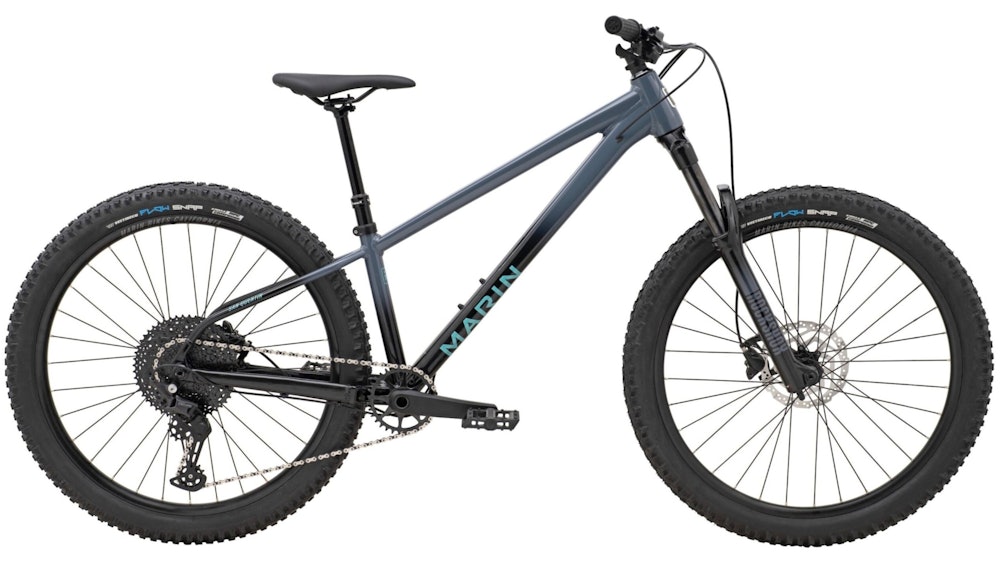
MSRP: $1,399
- Suspension Travel: 140 mm
- Gearing: Shimano Deore 11-speed
- Tire Size: 27.5″ x 2.6″
The Marin San Quentin 2 is as tough as it looks. Equipped with solid components, a durable frame, and a long-travel RockShox FS35 Silver 140mm fork in the front gives you a ton of freedom when it comes to choosing the most challenging line on the trails!
The 1×11 Shimano Deore drivetrain is known for being light, reliable, and easy to maintain. Whereas Shimano MT201 2-piston hydraulic brakes and Vee Tire Co. Flow Snap 2.6″ tires inspire confidence by providing enough grip and braking control in tricky situations.
Marin San Quentin 2 has some fantastic surprises when it comes to the components fitted to it. It even comes with a TranzX dropper seat post, which is a rare find on entry-level MTBs.
When we saw the price and analyzed the parts, we had no second thoughts about including it on our ‘best mountain bikes’ list.
9 . Specialized Chisel
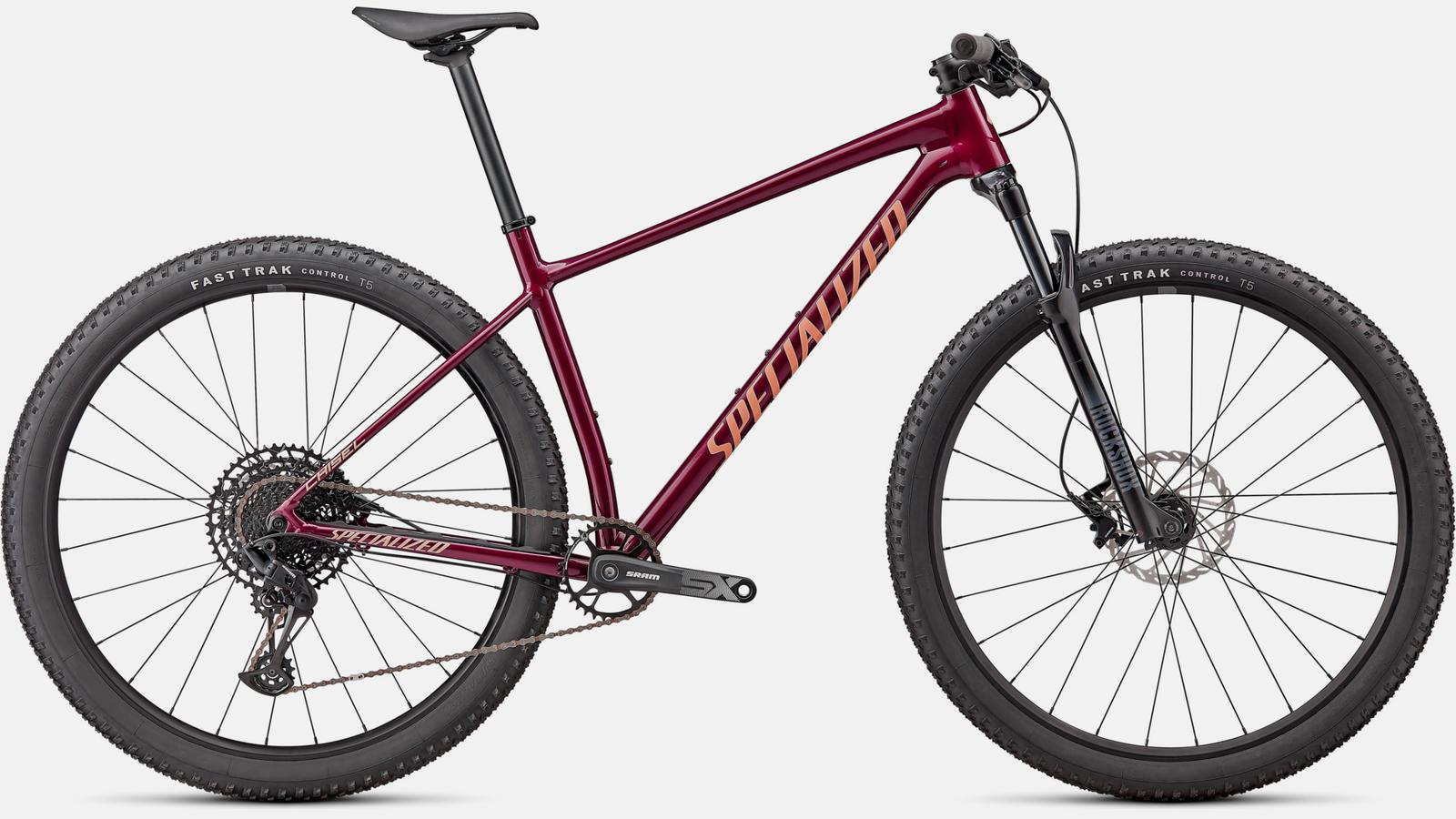
MSRP: $1,800
- Suspension Travel: 100 mm
- Gearing: SRAM SX Eagle 12-speed
- Tire Size: 29″ x 2.35″
The Chisel is one of the best Specialized mountain bikes the brand has to offer. This bike is ideal for riders who want to enjoy a range of terrains off-road, including long climbs and technical descents.
With all of its high-tech features, starting with the hydroformed aluminum frame and RockShox Judy Silver 100mm (80mm on XS frame) fork suspension, it is hard not to include the Chisel on this list.
Moreover, it comes with 29-inch wheels and 2.35″ tires which make for more stability and faster rolling speeds. Sadly the Specialized Chisel does not include a dropper post, but it justifies its price tag with a few other high-value components.
The SRAM SX Eagle 12-speed drivetrain can handle hard riding and the SRAM Level T hydraulic disc brakes will give you control when you need to navigate tricky sections of the trail.
Buy from Specialized.com
10 . Ibis Ripmo AF NGX

MSRP: $3,599
- Suspension Travel: 160 mm
The Ibis Ripmo is a high-end aluminum all-mountain bike with an aggressive frame geometry that combines longer reach with a steep, 76-degree seat tube angle.
This places the rider more centrally over the pedals for better control on steep, tricky descents. In addition, the slacker 64.9-degree headtube angle makes climbing less twitchy, resulting in an excellent all-around trail bike.
The front fork is a Marzocchi Bomber Z1 Coil with 160mm of travel and the rear suspension features a Marzocchi Bomber Air shock.
For downhill riding, you also get a dropper post, aluminum rims, and Maxxis Assegai 29×2.5″ tires.
All in all, the Ibis Ripmo AF is a well-rounded full-suspension mountain bike perfect for enduro and all-mountain trails and suitable for all levels of riding.
11 . Trek Top Fuel 8 GX AXS
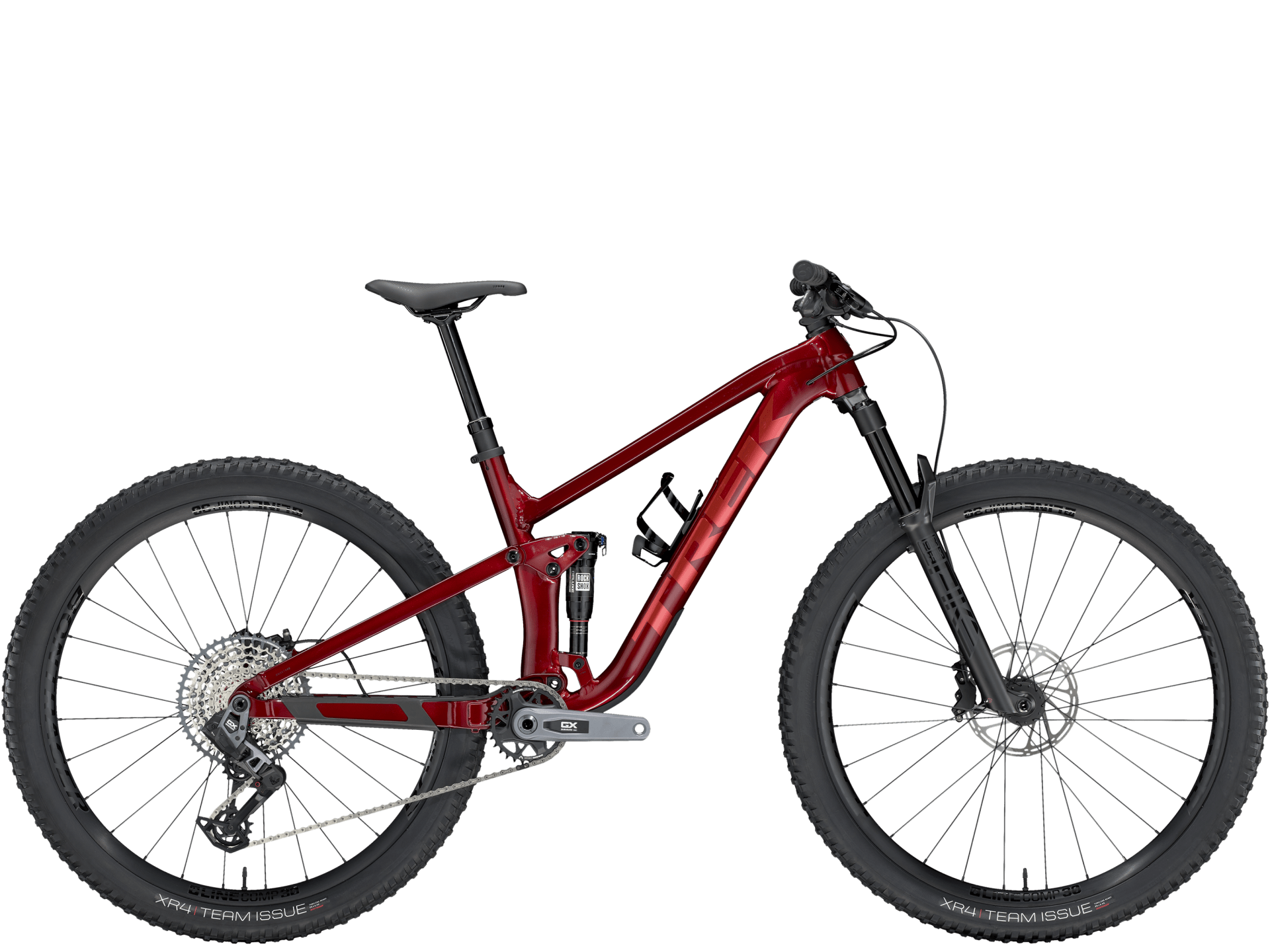
MSRP: $4,800
The Trek Top Fuel 8 is a premium full-suspension mountain bike made by one of the biggest brands in the industry.
The 130mm of travel in the front and the rear categorizes this bike as a cross-country MTB but gives it all the capabilities of a full-suspension trail mountain bike.
The Top Fuel 8 features a 12-speed SRAM GX Eagle drivetrain, lightweight aluminum frame, and 2.5-inch Bontrager tires.
The RockShox Pike suspension fork and RockShox Deluxe Ultimate RCT rear shock will give you the necessary control on rugged trails, while the Bontrager dropper post is a necessity for technical descents.
We also love the dark red finish, though you can get the Trek Top Fuel 8 in all-black as well.
Buy from Trekbikes.com
12 . Cannondale Habit 4

MSRP: $2,300
- Tire Size: 29″ x 2.4″ (27.5″ on XS)
Cannondale never fails to surprise us with the bang for the buck its mountain bikes offer. The Cannondale Habit 4 is an entry-level full-suspension mountain bike with trail-focused geometry. It boasts solid features packed into an affordable price tag.
The new Cannondale Habit 4 is built for trail enthusiasts who wish to start amateur racing or check out some popular descents in their area.
It comes with a lightweight SmartForm C1 alloy frame that offers nimble and responsive handling, especially on tricky descents. The SmartForm C1 alloy is the perfect alternative to much pricier carbon frames seen in that price range.
In addition to that, the combination of a RockShox Recon RL 140 mm front suspension and a RockShox Deluxe Select 130mm rear suspension makes light of any jumps and rock gardens you encounter on the trail.
Finally, the 12-speed Shimano Deore derailleur is among the best you can get in this price range, and the same can be said for the Shimano MT200 hydraulic disc brakes.
If you want one of the most affordable mountain bikes with full suspension that is actually worth buying, we recommend shortlisting the Cannondale Habit 4.
13 . Norco Sight C2

MSRP: $5,499
- Tire Size: 29″ x 2.5″ / 2.4″
The Norco Sight C2 is a line of high-end carbon trail bikes with the best components for performance riders. Norco mountain bikes are perfect for professional trail riders who want to start winning races, therefore the bike might be too much for a casual cyclist.
The Norco Sight C2 is a premium long-travel bike featuring a light, stiff, and responsive carbon frame, that can win any Enduro podium!
RockShox Lyrik Ultimate fork and RockShox Super Deluxe Ultimate DH rear shock will allow you to start practicing on terrains unimaginable to you before.
For the $5,500 that you’d need to pay for this build, you will get one of the top trail bikes with a SRAM GX Eagle 12-speed rear derailleur, which is the best you can find on the market right now on mid-range mountain bikes.
Maxxis Assegai and Minion 29 x 2.5″ / 2.4″ tires are a combo that will make you fast on hardpacked flat sections and offer perfectly optimized grip in tight turns.
Simply put, the Norco Sight C2 speaks for itself—It’s one of the best mountain bikes you’ll fall in love with and finally start winning some races.
Buy from Jenson USA
14 . Niner WFO RDO 2-Star
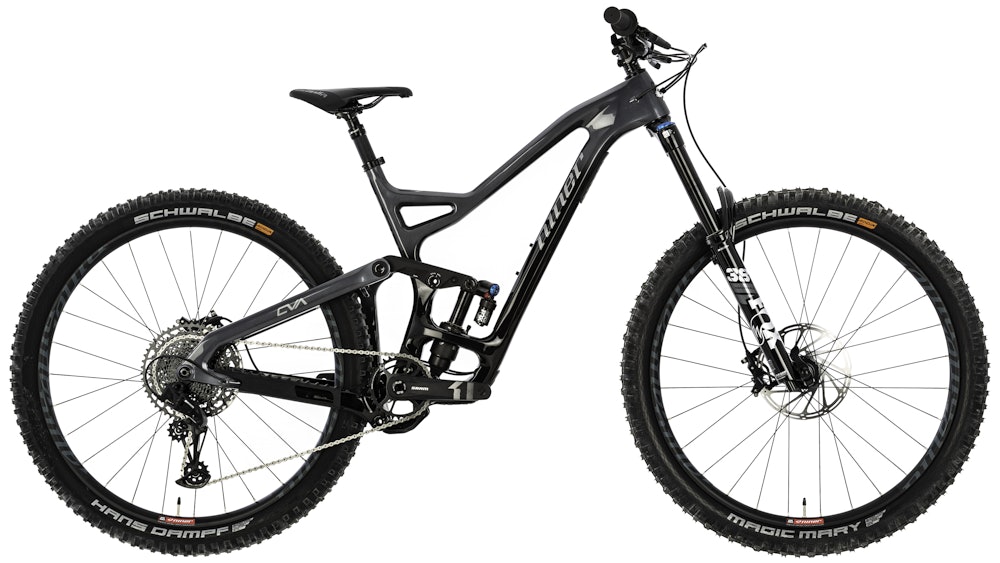
MSRP: $5,449
- Suspension Travel: 180 mm
The Niner WFO RDO 2-Star is an all-terrain machine that can both climb hills efficiently and tackle fast flats and downhill. This Niner bike is built around RDO Carbon technology, which makes it amazingly lightweight, stiff, and resilient.
The frame is made complete with the Fox 38 Float Performance GRIP EVOL fork with 180mm of travel and the Fox Float X2 Performance rear suspension linked with Niner’s CVA suspension system. These components make this bike a true Enduro machine but give it some downhill traits as well. This frame has fully internal cable routing and a flip chip which we love as it allows you to change geometry while riding.
When it comes to gearing, the Niner WFO RDO features a lightweight and quick 12-speed SRAM SX/X1 Eagle drivetrain. Hydraulic disc brakes are a must on a bike of this caliber, so the SRAM G2 R 200mm-rotor hydraulic brakes provide more than ample braking.
The Niner WFO RDO 2-Star is an incredibly capable and plush 29er enduro bike designed for the harshest downhill terrain and surprisingly efficient climbing.
Buy on JensonUSA.com
What to Consider When Buying the Best Mountain Bike?
Price category must-haves, front suspension with lockout.
A good MTB should have a lock-out feature on the suspension fork, with plenty of adjustments to be made according to the trail and rider.
Internal Cable Routing
Internal cable routing is obviously another must these days, alongside with
1x Chainring
1x front chainring with 11- or 12 speed rear cassette.
Tubeless-Ready Wheels and Tires
Also, the majority of mountain bikers have turned to tubeless-ready wheels and tires .
SRAM and Shimano Components
SRAM has been dominating the MTB industry, while higher-end Shimano components are present on many bikes.

Dropper seat post with a switch, locking & adjustable fork, single front chainring with 11/12 speed cassette
Popular Wheel Sizes
29″ vs 27.5″ vs 26″ mountain bike wheels, 27.5″ or 29″ wheels are basically a must these days.
29″ Wheels: XC, Trail, All-Mountain, Enduro
- Best for going fast on straight lines
- Great rollover capabilities
- Preferred by taller riders
27.5″ (650b) Wheels: XC, Trail, All-Mountain, Enduro, Downhill
- Better on technical sections
- Allows to fit plus-sized tires 2.4-2.8″ wide
- Faster acceleration
26″ Wheels: Park, Trail, XS frame sizes
- Often seen on older mountain bikes
- Available in XS, S frames
Prices & What To Expect
- Mountain bikes under $1,000 > A selection of entry-mid aluminum hardtail models.
- Mountain bikes under $1,500 – Mid-range hardtail bikes with all the bells and whistles.
- Mountain bikes under $2,000 – A good quality trail mountain bike, carbon frames starting to come along.
- Mountain bikes under $2,500 – Entry full-suspension trail mountain bikes, carbon hardtail mountain bikes.
- Mountain bikes under $3,000 > Variation of entry-mid range full-suspension bikes.
- Mountain bikes under $3,500 – The widest option of bikes to choose from.
Suspension Travel
Short, mid vs long-travel
Short suspension travel is anything less than 100-120mm and is best for all-around performance, as well as for smoother trails and uphill rides. Long suspension travel is between 120-200mm and is best for high-speed descents on rough terrain. The larger the travel, the more suitable the bike is for descending.
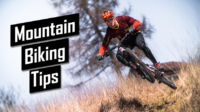
Mountain Biking for Beginners — 19 Tips to Improve Your Skills
We can also combine these traits in mid-suspension travel bikes, but we lose some of the advantages of both worlds this way.
How many gears are enough on a bicycle?
Gears are generally not a problem on today’s mountain bikes. These days mountain bikes usually have between 9 and 27 gears on 1x, 2x, or 3x cranksets. All of these setups will provide you with plenty of gearing. The only time you might need to get off your bike is up to some extremely steep hills.
- 1x chainrings = Option among mid/high-end bikes.
- 2x chainrings = Mid-range bikes
- 3x chainrings = Often used on cheaper or gravel bikes .
Head Tube Angle
The head tube angle is important because it affects handling.
- XC – Cross Country bikes have steeper head angles ( 69-71 degrees ) which makes the fork more upright and provides sharper handling.
- Aggressive enduro and trail bikes have sharper head tube angles ( 65-68 degrees ), which makes the fork more parallel to the ground. This provides more stability, but it affects handling
- Downhill bikes have slacker head angle ( 62 degrees and up )
Women’s Mountain bikes vs Men’s Mountain bikes?
The main difference in women’s mountain bike geometry is the shorter top tube, which also has a lower angle for easier on- and off. It is also the aesthetics, obviously.
Related: Best Women’s Mountain Bikes
What are the best mountain bike brands?
Bike brands that are specialized in the mountain bikes scene are – Ibis , Santa Cruz Bicycles , Yeti , Orbea, Evil. Many other popular mountain bike brands are Giant , Trek , Mongoose, Cannondale , Diamondback , GT Bicycles , Rocky Mountain , Scott, and many others.
Read more from our Best Bike Brands article to find out more!
To Wrap It Up
Before buying a mountain bike, you need to ask yourself what you want to do with it and how serious you are going to be about it. Are you planning to go for relaxed forest rides on trails, ride long cross-country rides, or do downhill descents? All of these categories require a different bike. After that, determine your budget and you can finally pick your perfect bike! This way, you’ll ensure that you’ll end with the best mountain bike for your needs!
Share this on:
About the Author

Sam Millers
2 thoughts on “ best mountain bikes in 2024: top choices for xc, trail, enduro, and dh riding ”.
In your section on the Diamondback Atroz 2 you write “The SR Suntour Raidon-R rear air shock will help you with this. It has a rebound adjust, so it won’t feel like a pogo stick, like many other entry-level forks.” The Radion-R is a rear shock, this much you got right. You then go on to note that “it won’t feel like a pogo stick, like many other entry-level forks”. Why on earth are you comparing the feel of the rear shock to that of an entry level fork? Forks exist exclusively on the FRONT of a bike. Find a bike with a rear fork and I”ll be extremely impressed. If you want to compare the rear shock to something, let that something be another rear shock as opposed to a completely different component at the opposite end of the bike.
Also the writing here is just bad. Lets say that that it was somehow appropriate to compare the Raidon-R to entry-level forks. If you were trying to make a point that the Raidon-R was better than the entry level forks you would say “The SR Suntour Raidon-R rear air shock will help you with this. It has a rebound adjust, so it won’t feel like a pogo stick, *unlike* many other entry-level forks.” When you use “like” as opposed to “unlike” you are essentially saying that the Raidon-R doesn’t feel like a pogo stick and neither do the entry level forks you are comparing it to
In the next paragraph you say “I especially liked the 9-speed drivetrain, which keeps shifting simple and effective. The rear derailleur is a Shimano Acera, which is expected on best mountain bikes.”
The Acera line is never expected on anything other than entry level bikes. The reason? Acera is Shimanos absolute lowest entry level complete Groupset. This is why you can buy and brand new Shimano Acera rear derailleur brand new in the box from Walmart for $24.99. “….expected on best mountain bikes.” Come on man…..
I could go on like this all the way down your entire article. Bottom line is that given your overwhelming lack of knowledge on the subject of all things “Mountain bike” its downright inappropriate and extremely uncool of you to write an article intended to offer guidance to others on the subject. I get that it may make you feel helpful but the fact of the matter is that its never helpful to speak with authority on a subject which you have very little knowledge of. People who put their trust in your words will ultimately be mislead and potentially let down, disappointed or god forbid even injured when they made decisions based upon the poor information you’ve given them. Please consider taking this article down or editing it after having it reviewed by someone who knows what their talking about.
Hi Matt, thanks for pointing those mistakes out. They were simply slips of tongue and they are now corrected. 🙂 Happy riding!
Leave a Reply Cancel reply
Your email address will not be published. Required fields are marked *


Wildly Popular Mid-Travel Mountain Bike Just Got Better: Revel Rascal V2 Review
I've ridden many 130mm travel mountain bikes, and while they're fun, I usually opt for a bike with more travel or less. Sometimes, mid-range travel bikes feel like a compromise on both ends. But when I swung a leg over Revel's new Rascal, its competence in challenging terrain, playful personality, and easy climbing made me fall in love.
I can't decide if shopping for a mountain bike is simpler or more complicated than before. It's easier because there are so many competent bikes. But it's more complex than ever because there are so many good and great bikes, and you must ride them to know which is which. Revel's V2 Rascal proved to be one of the greats.
Revel released the original Rascal in 2019. It was its first bike, and since 2019, the Rascal has been Revel's bestselling bike, according to Adam Miller, the brand's founder.
Revel redesigned the 29-inch wheel Rascal, making significant and minor changes to transform a good bike into a great one. The brand reconfigured the frame’s carbon layup, swapped pivot bearings for bigger and better ones, and tweaked geometry, rendering the bike more efficient and capable. Minor changes, including new carbon internal cable guides, a universal derailleur hanger (UDH) , and new fasteners, also contributed to the improved Rascal V2.
I rode the 140mm front/130mm rear travel Revel Rascal in Vermont about half a dozen times in late fall and early winter when the conditions allowed. Temperatures ranged in the 40s and 50s, and the trails were often wet, with slick rocks and roots. If it was dry, leaf-covered tracks were common. The terrain was solidly all-mountain, and I threw in a bit of enduro riding as well.
In short: The Revel Rascal V2 took full advantage of the update, becoming one of my favorite mid-travel bikes. It was smooth pedaling and extremely capable. The Revel Rascal V2 is a worthy contender if you want one bike to conquer all. This single bike made me believe in the one-bike quiver, from the fastest trails on the flats to super technical descents.
Revel Rascal V2 Mountain Bike
- Fork RockShox Lyrik Ultimate 140mm
- Drivetrain SRAM X0 Eagle transmission
- Brakes SRAM Code RSC
- Cockpit Trail 1 The Crocket Carbon Handlebar, Trail 1 The Viking Alloy Stem 35×40
- Dropper post Bike Yoke Revive 2.0
- Wheels Crank Brothers Systhesis Alloy Rims, Industry Nine 1/1 Hubs
- Tires Continental Kryptotal-F Trail 29 x 2.4 Soft Front, Continental Xynotal Trail 29 x 2.4 Endurance Rear
- Capable across a wide range of terrain
- Feels much lighter than it is when riding
- Incredible traction
- Attractive color selection
- Heavier than some mid-travel bikes
Revel Rascal Frame Updates
"The Rascal V2 is 100% brand new everything," says Miller. "It's in the same category with the same suspension, but we completely redesigned the geometry and carbon layup."
To make the new Rascal, Revel opened an office in Taiwan for production and quality control. They updated the bike's hardware - including bolts, bearings, and frame hardware - to higher quality and tolerances.
Revel uses Toray pre-preg thermoset carbon fiber, known for its exceptional strength, low weight, high impact resistance, and relatively reasonable price. The size M frame weighs 6 pounds, 4 ounces without a shock. On my scales, the fully built bike weighs 30 pounds, 10 ounces for a size M with SRAM XO transmission and carbon thermoplastic wheels, but no pedals ($7,999, not including the wheels). The frame is 150 g lighter than the V1 frame.
To improve the rider experience, Revel equipped the Rascal V2 with new pivot hardware. The more oversized bearings and axles Revel now specs contribute to the bike's stiffer, more responsive ride feel. They're also more durable and easier to maintain because all pivot bearings can now be tightened or removed with a single tool, not multiple. Revel now secures the shock with titanium hardware for weight savings and durability.
"We wanted the V2 Rascal to be the best possible all-mountain bike out there," says Miller. "We checked every box, adding bigger Bolu bearings where it matters. They're the best bearings with the best seals and are longer lasting. We reduced the number of bearings from 18 to 10, which saves weight and adds simplicity.
“We made sure that all frame hardware could be adjusted with one tool, not two, as previously needed. That makes trail tweaks easier, though the rider should never have to touch the bolts. We designed and built a stiffer, stronger frame with the best tolerances in the industry, which means that the Rascal V2 should be low-maintenance for a long time."
In its second iteration, the Rascal lost weight, but Revel achieved that savings without skimping on features. Revel added a rear triangle debris guard to reduce the dirt and mud that gets flung into the bike's pivots by the rear wheel.
To keep the bike silent, they co-molded carbon internal cable guides. These also make maintenance easier because threading new brake cables and shifter/ dropper cables is easier. And they wrapped the right chainstay with a beefy rubber guard to protect the bike and reduce noise.
As with most high-end brands, Revel adjusts the seat tube angles by size so that all sizes have the same ride feel, even if the geometry is slightly different. On XL and XXL Rascal V2s, the seat tube angle is slightly steeper. And every Rascal V2 has a size-specific carbon layup designed to meet the needs of a rider's anticipated weight.
Suspension Changes
I'm a big fan of Yeti's Switch Infinity translating pivot because it gives bike suspension a bottomless feel. I felt like Revel’s CBF suspension on the Rascal V2 achieved much of the same. Revel licensed the Rascal's CBF suspension from Chris Canfield, who founded Canfield Bikes.
The system doesn't use a virtual pivot point (VPP) like the suspension popularized by Santa Cruz and VPP-utilizing brands. CBF suspension operates at the center of curvature.
"If you take VPP and the wheel axle path at all travel points, there is a point that is the center of curvature," explains Miller. "In VPP, that center of curvature can be a foot across. In CBF, it's 50mm across at the top of the chainring … what that means is that the bike has consistency at all points in the rear wheel's travel, whether you're riding up or downhill or braking."
On the trail, that meant there was no squatting when I braked. The pedal forces were consistent, so the bike felt extremely efficient and delightfully predictable when riding.
The bike I demoed paired a Rock Shox Lyrik Ultimate front fork with a Lyrik Super Deluxe Ultimate piggyback shock. It took me a little time to fine-tune the sag, compression, and rebound settings, but once I did, they rode like a dream.
Chassis Geometry Changes
Revel took its time refining this bike's geometry, and it was time well spent. The Rascal's geo numbers are in the middle of what you'll find across the all-mountain category.
The Rascal V2 has a slacker head angle than the previous version, combined with a 44mm offset fork. The previous Rascal had a 51mm offset fork. This new combination gave the bike more precise handling and stability, especially at higher speeds.
The new Rascal has a steeper seat angle than the V1. I felt like the watts I was putting into the pedals translated directly to forward motion without the bike feeling squirrely. That's at least part of the reason that the bike rode with a lighter feel than what the scale indicated.
The new Revel is available in S-XXL. When asked why they don't offer an XS for smaller women and kids, Miller says the small fits riders down to 5'1" and that the XXL fits riders over 6'3". The Rascal's shock placement prohibits smaller than size small construction. All Rascal V2 frames have room for a water bottle, and many sizes have space for a second bottle on the underside of the downtube.
Parts and Pieces
Instead of the Crank Brothers Synthesis Alloy Rims with Industry Nine 1/1 Hubs that come standard with the XO build, I rode Revel's RW30 Thermoplastic Carbon Fiber wheels with I9 hubs. I've tested these wheels on multiple bikes, and I loved them for how stiff and smooth they were without being jarring.
The cockpit included a Trail 1 The Crocket Carbon Handlebar held by a Trail 1 The Viking Alloy Stem 35×40 and a Bike Yoke Revive 2.0 dropper. An SDG Components Radar seat rounded it all out.
Revel specs the Rascal with Continental tires, a departure from the nearly universally spec'd Maxxis Minion DHF/DHR or Assegai/DHR. The Rascal's Continental Xynotal (rear) and Kryptotal (front) were interesting choices. SRAM Code Ultimate Stealth Brakes handled braking duties.
Finally, I don't usually comment on bike color. But the Rascal's Ponyboy Gold, a color chosen by Revel team rider and Skida founder Corinne Prevot, caught my eye, and I got compliments from other riders regularly. The other Rascal color, Pinot Gnar, is just as good and will make this bike recognizable on the trail.
Revel Rascal V2 Ride Impressions
"We set the bar high; we wanted to not just meet but to exceed what people expect," said Miller. "We're pleased with how it's gone."
I was excited when I threw a leg over this eye-catching bike. On the technical all-mountain/enduro trails behind my house in Vermont, I pedaled my standard lunch ride loop as fast or faster than usual. When I came around a tight corner and a tree had partially blocked the trail, I easily maneuvered around it without a hitch.
On a ride on Goodnight Irene in Vermont's Mad River Valley, the bike boosted off little hits and jumps and landed with plenty of suspension to spare. Cornering was intuitive and fast. Climbing switchbacks on Revolution, also in the Mad River Valley, the bike gripped the slippery rocks and roots without a slip. It rolled onto an awkwardly angled bridge without issues.
The Continental tire combination was superb for Vermont riding, with exceptional grip on greasy rocks and slick trails. They inspired me to ride with confidence on every feature.
Conclusion s on the New Revel Rascal
The new Rascal is meant to satisfy the largest number of mountain bikers riding the most diverse terrain. If you are primarily an XC racer, grab a Specialized Epic or a Scott Spark instead. If you're purely an enduro rider, hop on Norco's Shore or Yeti's SB160 instead. Do you want one bike to have max fun, that pedals efficiently while climbing, and makes you hoot and holler on the descent? The Revel Rascal is a splendid choice.
"The Revel Rascal V2 is an all-mountain bike for everybody," says Miller. "It's a bike that invites the widest range of riders to have fun on it. This downcountry 29-inch wheel, 130mm suspension spec is the bread and butter of the full-suspension mountain bike world. We're proud of what we created."
I wholeheartedly agree.
Pivot Switchblade Mountain Bike Review: Updated Classic Is Still a Jack-of-All-Trades
The latest reiteration of the Pivot Switchblade didn't disappoint. It's a a vastly capable trail/enduro bike that can still do it all. Read more…
The post Wildly Popular Mid-Travel Mountain Bike Just Got Better: Revel Rascal V2 Review appeared first on GearJunkie .
This article may contain affiliate links that Microsoft and/or the publisher may receive a commission from if you buy a product or service through those links.
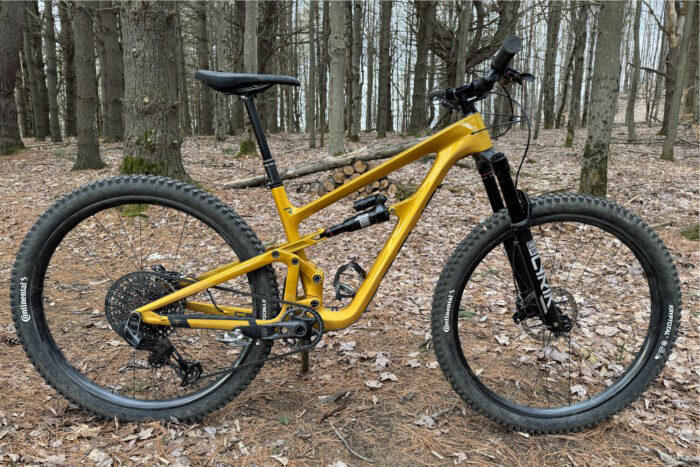
SORT CONTENT BY LOCATION
CLICK TO DRILL DOWN BY COUNTRY/PROVINCE
Your browser is ancient! Upgrade to a different browser or install Google Chrome Frame to experience this site.
Inspiration
- Bikepacking 101
- Join/Support

- View Latest/All
- Bikepacking Videos
- Your Stories
- Rider's Lens
- Field Trips
Popular Tags
- #bikerafting
- #Tour-Divide
- #family-bikepacking
- #winter-bikepacking
- #1Q5V (1 Question 5 Voices)
Gear/Reviews
- Bikepacking Bags
- Camping Gear
- Accessories
- #Editors-Dozen (Our Favorite Gear)
- #Gear-of-the-Year
- #MYOBG (DIY)
- #Decade-in-Review (Best of All Time)
The Gear Index
Latest indexes.
- Mini Panniers
- Saddlebags & Top Openers
- Cargo Cages & Anything Bags
- Gravel Bars
- Drop Bar 29ers
Bikepacking Bikes
- Rigid & Plus Bikes
- Drop-bar & Gravel
- Full Suspension
Rigs & Roundups
- Rider & Rig
- Race/Event Rig Roundups
Worthy Builds
- Handbuilt Bikes
- #29+ (29-plus)
- #vintage-mountain-bikes
- #cargo-bikes
- Readers' Rigs (Dispatch)
- New Bikes (Dispatch)
Plan Your Trip
- Bikepacking Guides
- Bikepacking Food
- Gear & Pack Lists
- Bike Photography
Essential Reading
- Leave No Trace (for Bikepackers)
- Guide To Bikepacking Bags
- Bikepacking Gear That Lasts
- #Bikepacking-Awards
- Power Of An Overnighter
- Advice For New Bikepackers
- Our Favorite Bikepacking Routes
-
Where to Begin
We have over 300 original and curated bikepacking routes in our global network spanning nearly 50 countries.

Start at our worldwide routes map to dig into our detailed guides with GPS maps and inspiring photography.
By Location
- The United States
- Latin America
- Middle East
By Length (days)
- Overnighters & S24O
- Weekend Routes (2-4)
- Week-long Routes (5-10)
- Odyssey Routes (11-30)
- "Freakouts" (31+)
Local Overnighters
The Local Overnighters Project is a unified effort to document and map one-night bikepacking routes all over the world—by locals, in their own backyards.
The Bikepacking Journal is our biannual printed publication. Each issue features a collection of inspiring writing and beautiful photography. Find details on the three most recent issues below, join the Bikepacking Collective to get it in the mail (anywhere in the world), or click here to find a collection of selected stories in digital format.

The special edition 10th issue of The Bikepacking Journal is one you won’t want to miss! It features 25% more pages with extra stories, bonus art and maps, and much more...

Issue 09 takes readers on trips through time—one to the early days of bicycles—and offers several reminders to be grateful for supportive friends and family, and strangers we meet along the way...

For Issue 08, we invited several contributors to return and pick up where earlier trips and ideas left off and also feature a handful of first-timers whose perspectives we’ve long been eager to share...

30 Years of Turner Bicycles (2024 Sea Otter)

We caught up with David Turner to discuss the past, present, and future of mountain bike technology and took a look at a fresh titanium fork and two brand-new bike models Turner Bicycles launched at this year’s Sea Otter Classic. “Come for the titanium fork and stay for the beautiful dropouts.” Find it all here…

Early last Friday morning, I rounded a corner in a relatively quiet section of the Sea Otter expo and found Turner Cycles set up in a humble tent with five or six bikes. I was a little surprised to see that all of them were made of titanium, four of which were fully rigid, and only two equipped with short-travel 120mm suspension forks. There were absolutely zero full-sussers to be found. Anyone familiar with the Turner brand, particularly those who’ve been out of the loop for the last few years, likely would have had the same reaction.
When I (re)started mountain biking back in 2006, Turner made top-tier, highly coveted full-suspension dream bikes. They were always slightly out of reach for me, alongside Ellsworth and a couple of other boutique brands. The Turner story is a long one, and many twists and turns led to the titanium bikes David Turner and co. had on display at Sea Otter, including two brand-new models. Read on for details on those bikes and more.

In the grand scheme of mountain bike technology, David Turner has been through it all. Turner started racing mountain bikes in the sport’s heyday. As a professional racer in the late 1980s and early ’90s, he collaborated with designers at RockShox, Mongoose, and AMP Research, adding significant contributions to the advancement of front and rear mountain bike suspension design. Following his retirement from full-time competition, he worked with Mongoose and suspension guru Horst Leitner, creating some of the most influential lightweight rear suspension frame designs of the era. In 1992, Turner started designing his own bicycles, and by 1994, he had a production run of 150 aluminum frames built in the USA by Ventana. This flagship model eventually earned the name Turner Burner, a title that stuck around and saw many iterations over the years. The original Burner had 2.75” inches of rear travel.
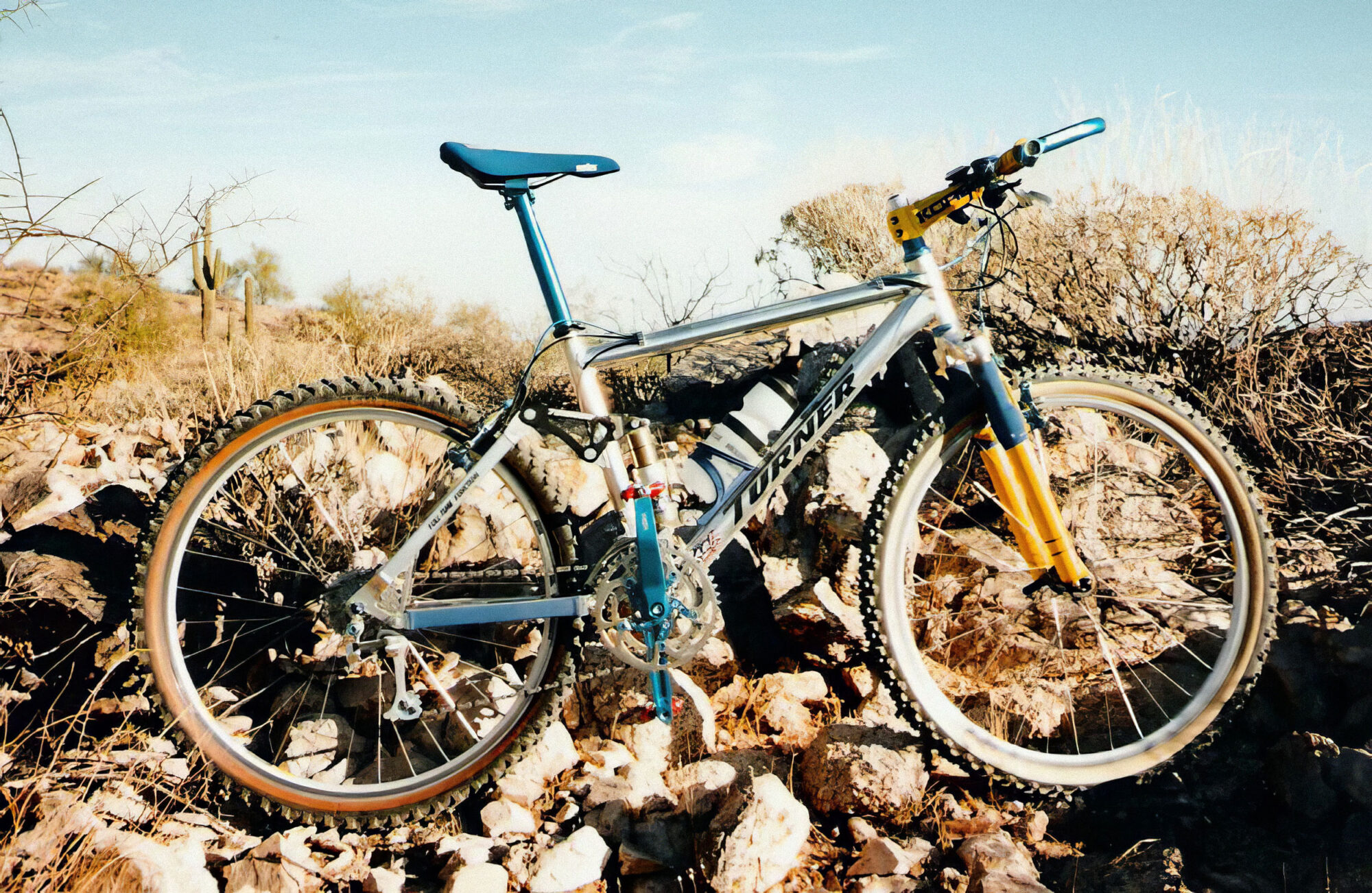
Turner Suspension Bicycles Inc. carried on as a premium full-suspension mountain bike company for well over a decade. When I first took notice of the brand around 2006, Turner was at the top of the game in that world, making bikes that most of us could only drool over in catalogs. But somewhere along the line, the brand seemed to vanish into obscurity. What exactly happened, and how did Turner reenter my radar with titanium frames?
Part of the answer lies in how the mountain bike industry evolved over the last decade. Everything essentially sped up. Wheel sizes fell in and out of favor, geometry shifted, materials changed, and more/larger brands entered the arena. Whether these shifts were market-driven or marketing-driven is a different conversation. Either way, to keep up with trends, costs, and the big players, Turner began producing carbon frames in 2012, entering a relatively short phase in the company’s history that ended in 2016. David referred to this period as “dark times” that he’s still trying to forget.
In summary, the financial investment into prototyping, tooling, and molds, which could cost upwards of $150,000 per bike, and the 18-24 month lead times, weren’t sustainable for Turner. When customers and market trends called for longer, lower, or slacker, Turner had to start from scratch, and the old tooling and mold costs were tossed into the ever-burning furnace of capitalism. As he told Mountain Bike Action in a 2021 interview , “Trying to plan that far in advance with an ever-changing market was challenging to say the least.”
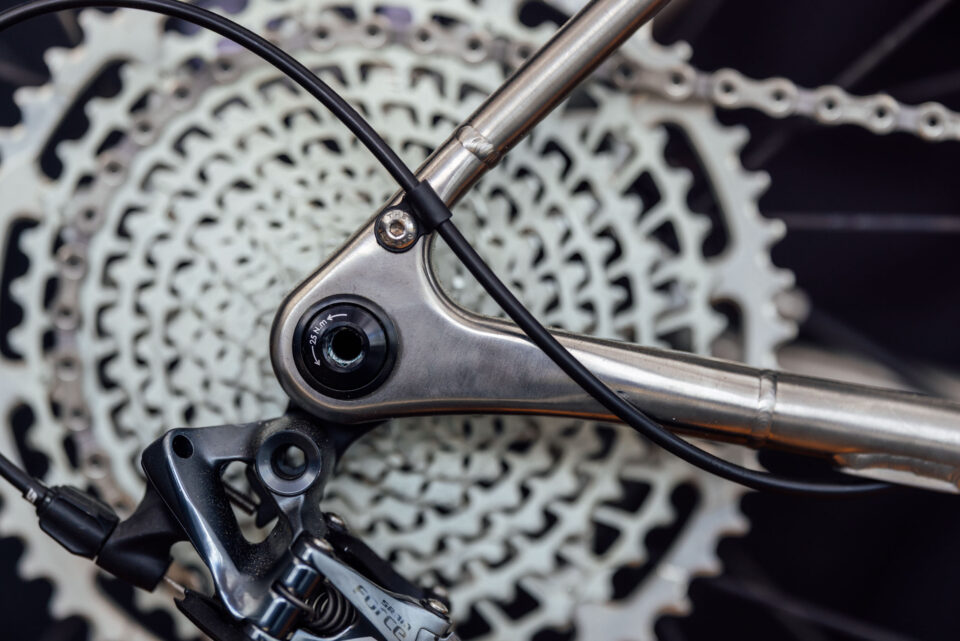
In 2019, Turner completely pivoted away from suspension (pun intended), shifted to titanium, and began working with a factory in Taiwan to bring his new vision to light. David described the rationale behind this shift simply, “The beauty of metal is the ability to adjust for changes.” That year, Turner Bicycles relaunched with two new bikes, the ARTi, an all-road bike, and the Cyclosys gravel platform. In 2021, they launched the Nitrous, a trail hardtail, and this year, they released two new models and teased two upcoming forks.
Turner Titanium Forks
When I first started writing this piece, I kind of wanted the title to be something like Come for the Ti Fork and Stay for the Dropouts, but that ran a little long. That is precisely what I did, though. There was a beautiful titanium fork lying on a table that caught my eye and first drew me into the Turner Bicycles tent.
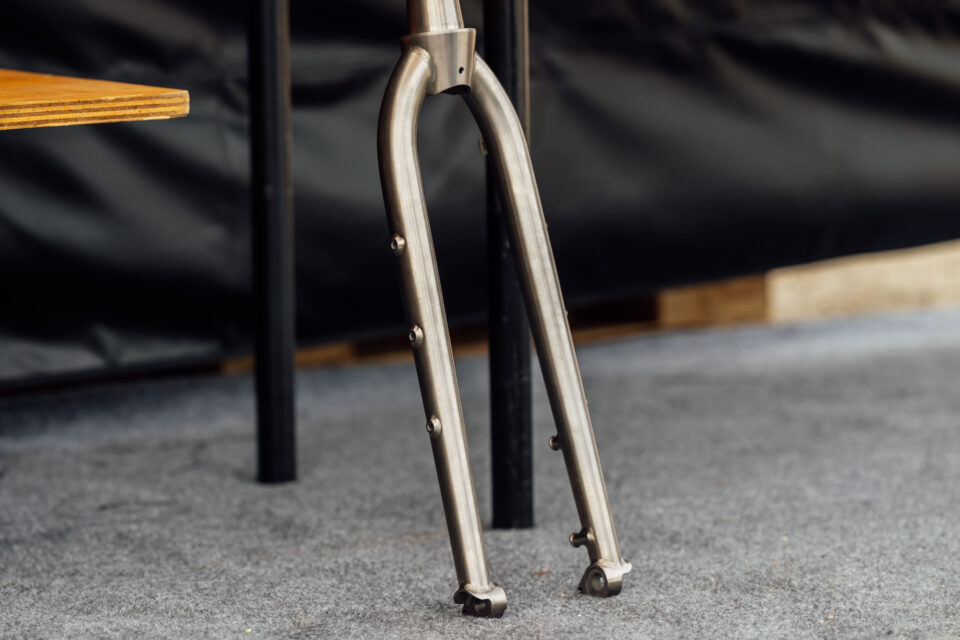
David told me it’s a gravel fork that’s well on its way to production. It has a 395mm axle-to-crown height, a 50mm offset, three-pack mounts on each leg, dynamo wire routing, and threaded rack mounts integrated into the dropouts.
Turner is also working on a longer 510mm axle-to-crown version for the Nitrous, GILA, and VENN (the VENN I shot was running a prototype; see below), which are all designed around a 120mm suspension fork. But I digress. The rear dropouts on all of the Turner bikes caught my attention next; I started ogling those after I finished fondling the Ti fork.
Turner Bicycles VENN
The brand-new VENN launched at Sea Otter is first bike I noticed. It was packed with a set of Revelate bags in the corner, but the first thing that caught my eye was actually the drive-side sliding dropout. To put the cart before the horse, this 3D-printed part is pretty special. In fact, David said that it’s built specifically with single speeding in my mind. Music to my ears. It’s engineered it as a three-sided box to ensure precise alignment for those using a belt. That design also resists twisting forces, as he wanted to create a rock-solid connection at either end of the drivetrain. The other thing that makes it unique is that it offers 25mm of axle travel, which allows you to change the sprocket a tooth or two without needing to cut/swap the chain/belt. Added benefits to having the longer adjustment is tire size compensation and ride feel experimentation.
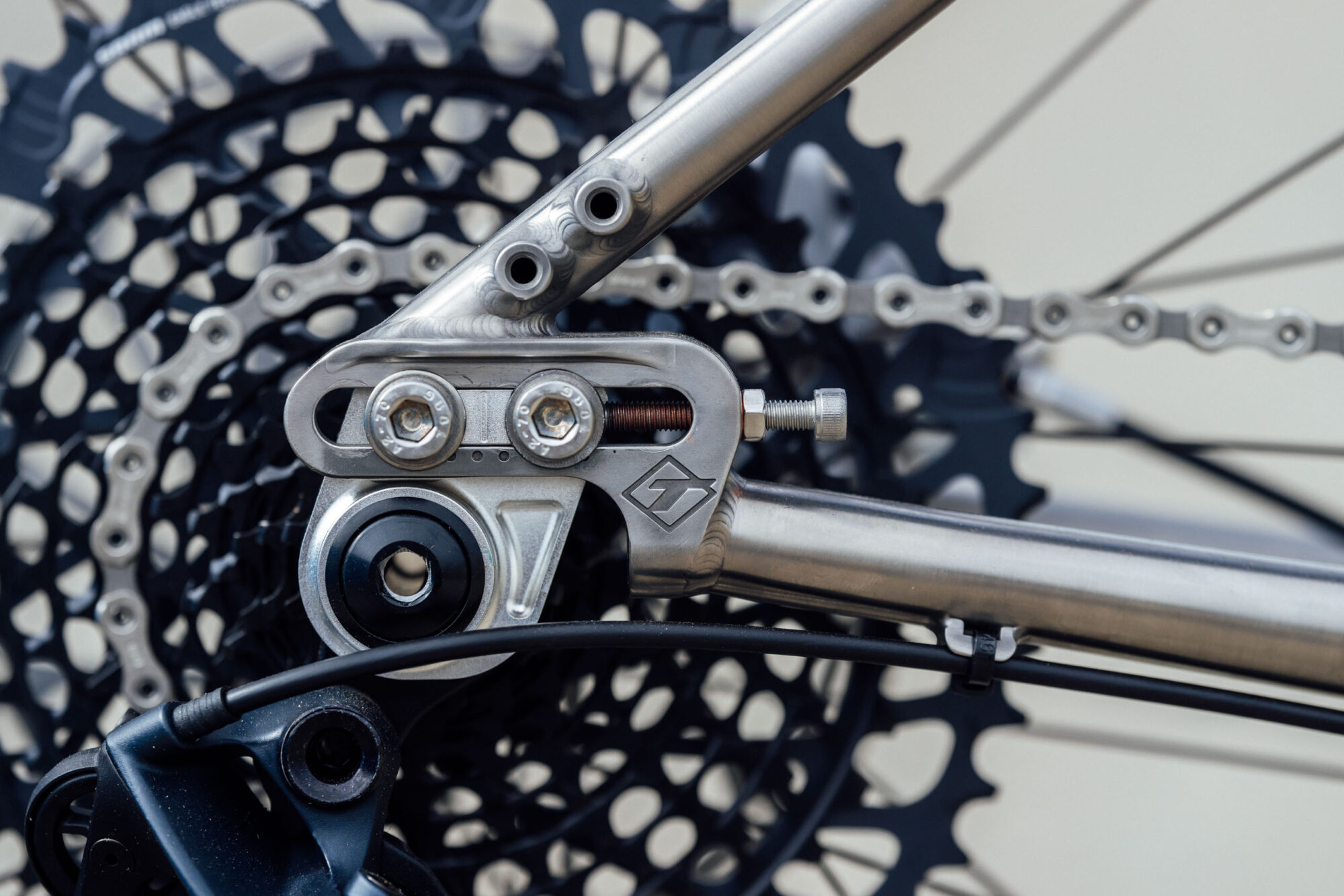
Adding to that, the VENN also has a 3D-printed full yoke. Again, this was largely engineered for stable drivetrain alignment, particularly when used with a belt drive. David mentioned that these two parts would probably be impossible, or at least financially crippling, if they were CNC machined. “Since I am trying to offer as much technology and finer details on my designs at a reasonable price, 3DP is allowing me to create specific shapes without hours and hours of CNC or tooling costs that are very expensive.”
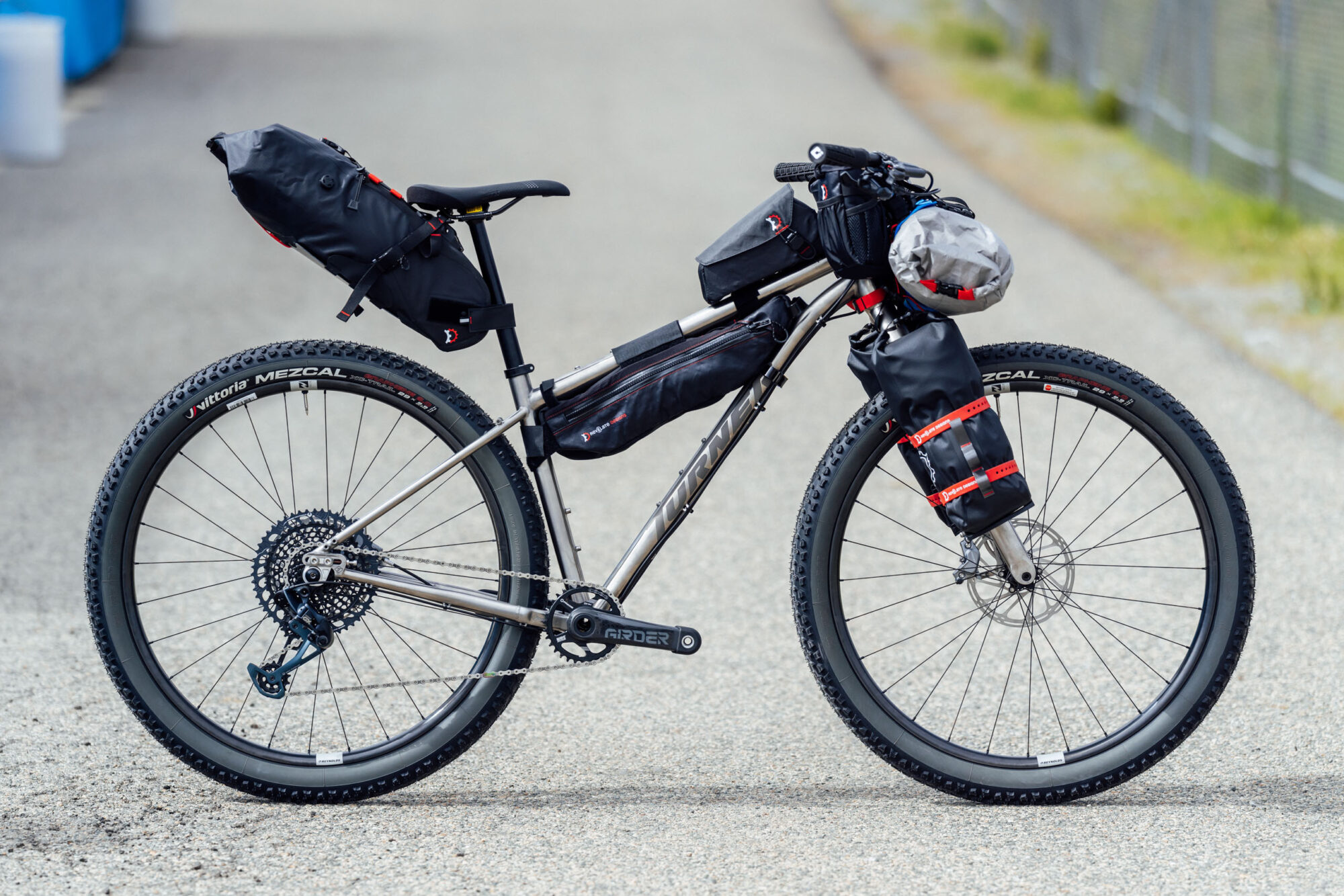
Now, about the Venn. David described it to me as an ATB, which fits its name—taken from a diagram of overlapping circles that show the logical relation between different things. It’s a multi-use bike. Comparing it to other Turner hardtails, it’s a bit shorter and has a 1° steeper head tube and 1° slacker seat tube than the Nitrous and new GILA. He said it can be set up with a drop bar and short stem or a flat bar with a modest-length stem. It was made with bikepacking in mind and is equipped with quite a few bosses and rack and fender mounts on the frame. As for tire clearance, it can fit up to a 29 x 3.0” tire.
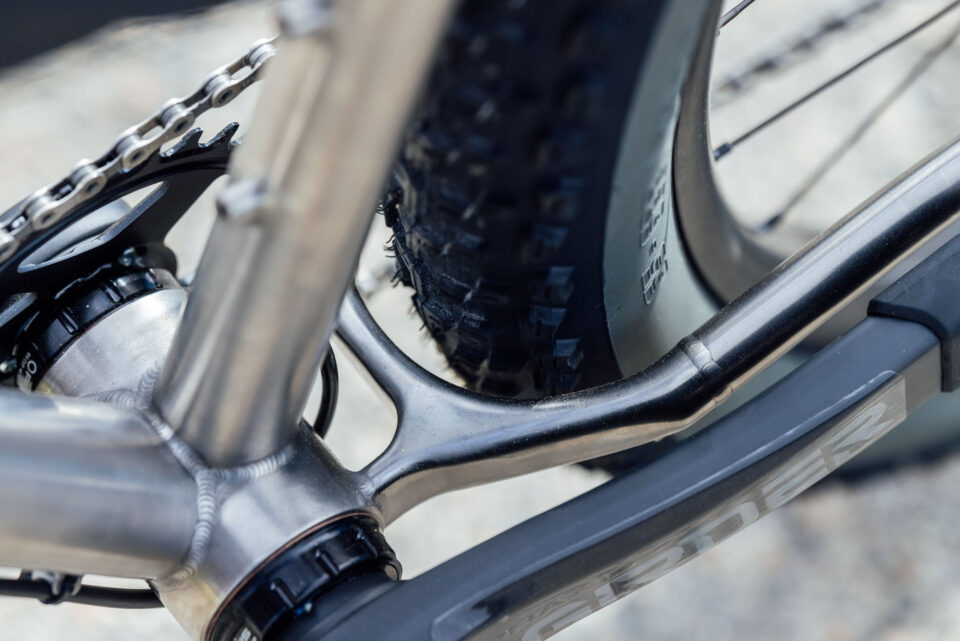
VENN isn’t on the website quite yet, but David told me it will be for sale in a week or so.
Flashback Nitrous
The Turner titanium Nitrous was named after a full-suspension bike that was in Turner’s lineup from 2005-07. That particular model was considered an XC race bike at the time, hence the speedy name. However, the current titanium Nitrous looks to have a little more versatility. It’s kind of a downcountry-style hardtail at heart, built around 120mm of travel, a 66° head tube angle, and a 74.5° seat tube. That said, it also has a relatively tall stack, medium reach, and a size-specific chainstay length ranging from 435 to 445mm. For 2024, it got a 3D-printed chainstay 1/2 yoke that provides clearance for 2.6″ tires and room for a 38t round chainring. Turner also made custom 3D-printed cable routing ports designed to make it easier to run the internal control lines. Other features include UDH-compatible dropouts and a UDH, “so any derailleur from the last four decades can be installed.”
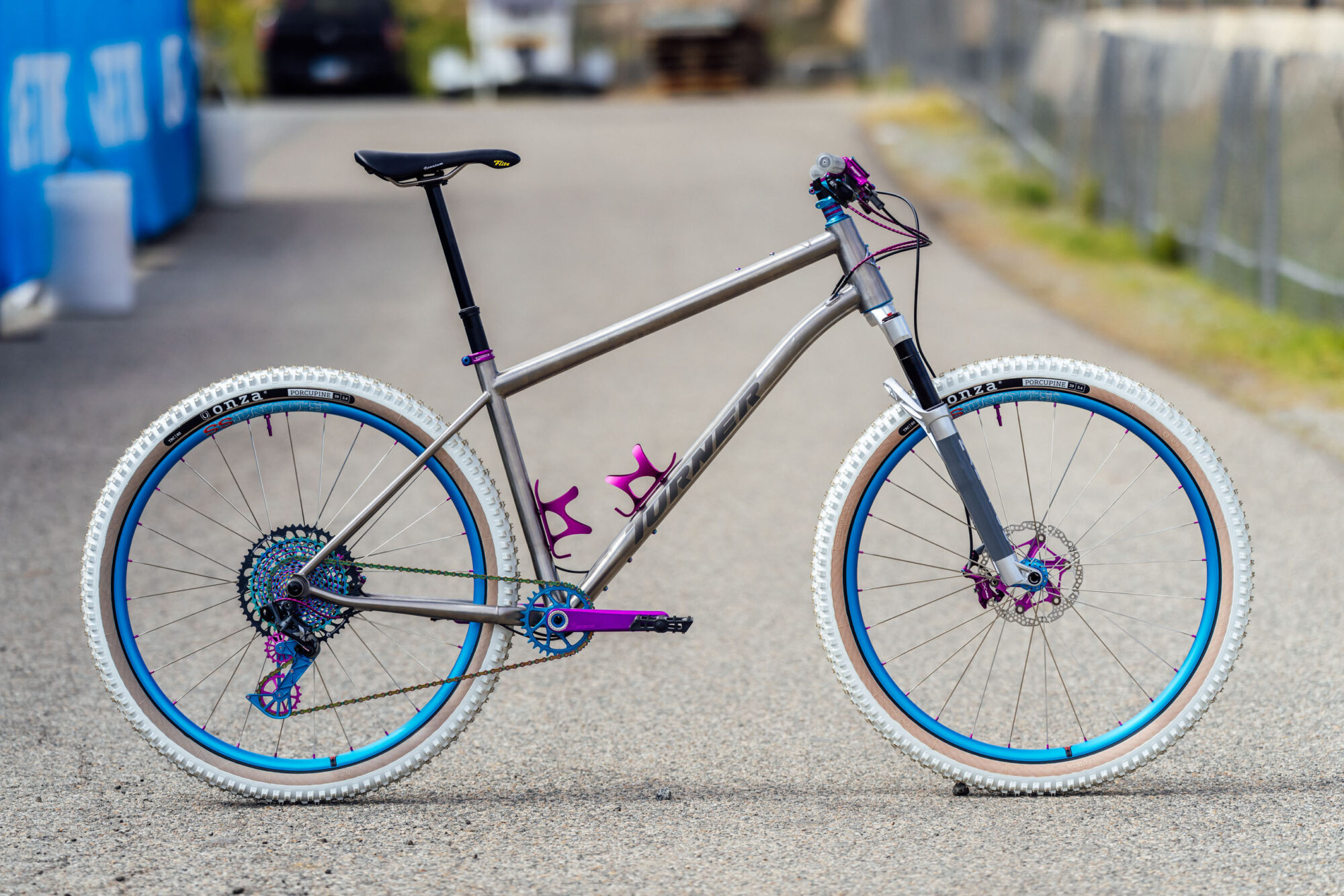
The Nitrous “flashback” build shown here was the work of Rich Wessels, a longtime bike industry guy. Rich approached David asking if he could create a Nitrous for Sea Otter, and David gave him the go-ahead. David added, “In his mind, it was what the bitchin’ bikes of our childhood looked like. Growing up in a mountain bike house, Rich’s dad and his friends were mountain bike riders, so Rich was able to see what was hot when he was a little guy. Flash colors and titanium were the pinnacle a couple of decades ago!”

Turner Bicycles GILA
The new GILA that was released at Sea Otter is very close to the Nitrous, so much so that I didn’t shoot it. I actually thought it was another Nitrous. However, it sounded quite compelling when I learned the differences. In summary, it has the same custom sliding dropout as the VENN, a split seat stay for a belt drive, and a bit longer top tube and reach for, as David put it, “all the standing when smashing it up the mountain in singlespeed mode!” Also, in order to keep the drivetrain in perfect alignment, something critical to using a belt drive, it has a full 3D-printed lower yoke to stiffen the connection between the bottom bracket and rear axle. In contrast, the Nitrous has a half yoke but keeps the full left side chainstay for lower weight and what David considers a more “racy” design.
When I asked David what he thought the future of mountain bike tech holds and what he hopes for, he responded with the sentiment that all the big jumps in innovation have been made, many of which are now a decade or more old, but, “Like any mature market segment, we are now in the battle of refinement. Splitting the growing number of segments (DH, Enduro, Shredpacking, Trail, Bikepacking, downcountry, XC, gravel, touring, etc, etc) into smaller ones, and of course, continuing to refine each. Big picture for me? Improved gear boxes would be nice. Less weight and more belt-drive bikes for longer life in the dirt. Drivetrains are expensive, and budget drivetrains don’t last, so if we have to pay top dollar for them, it would be nice if they’d last a very long time.”
For more on several models mentioned here, head over to TurnerBikes.com , and stay tuned, as the VENN and GILA will be added to the website soon.

Further Reading
Make sure to dig into these related articles for more info...
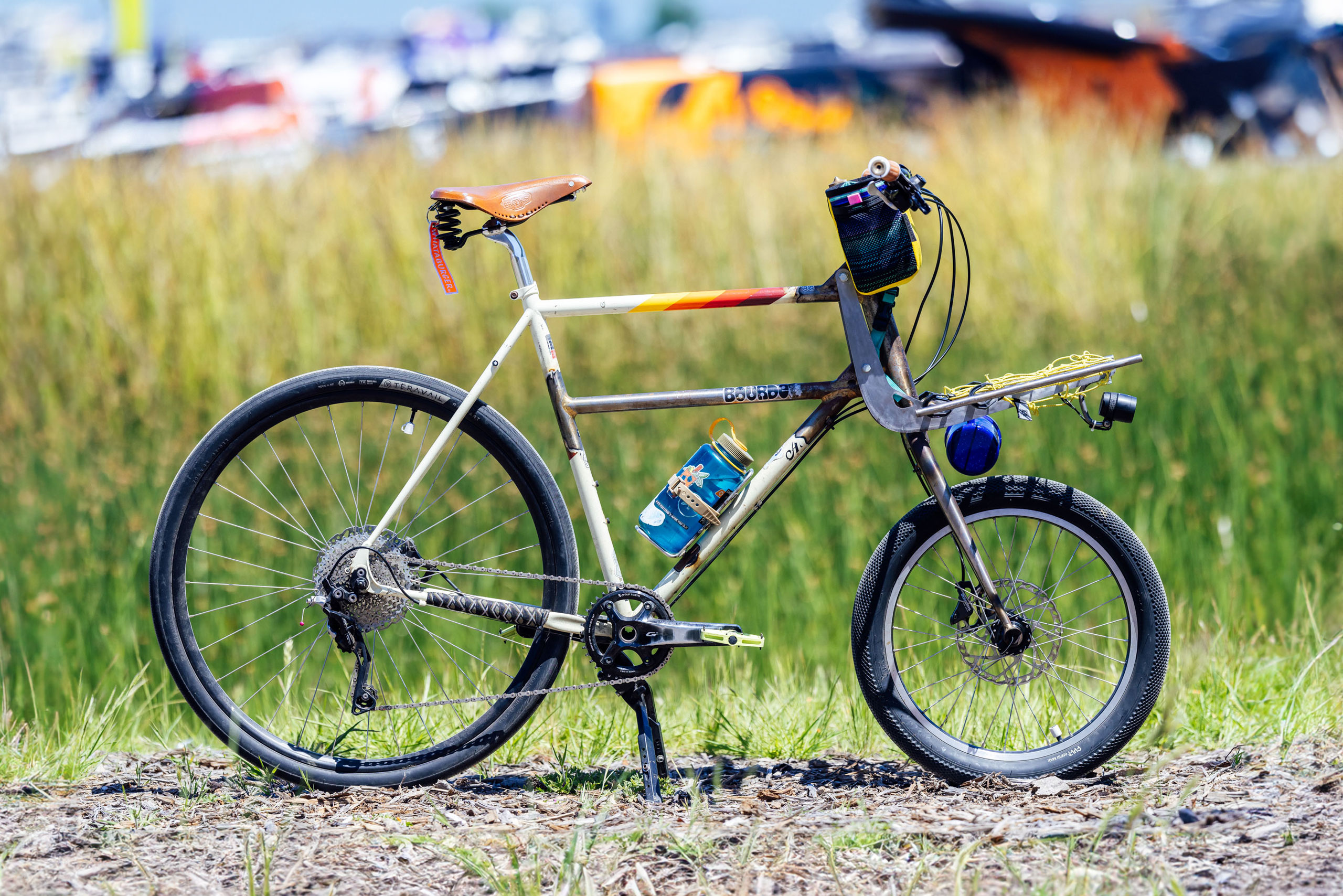
Bikes of Sea Otter (Part 1): Neuhaus, Space Truck, and HotSalad
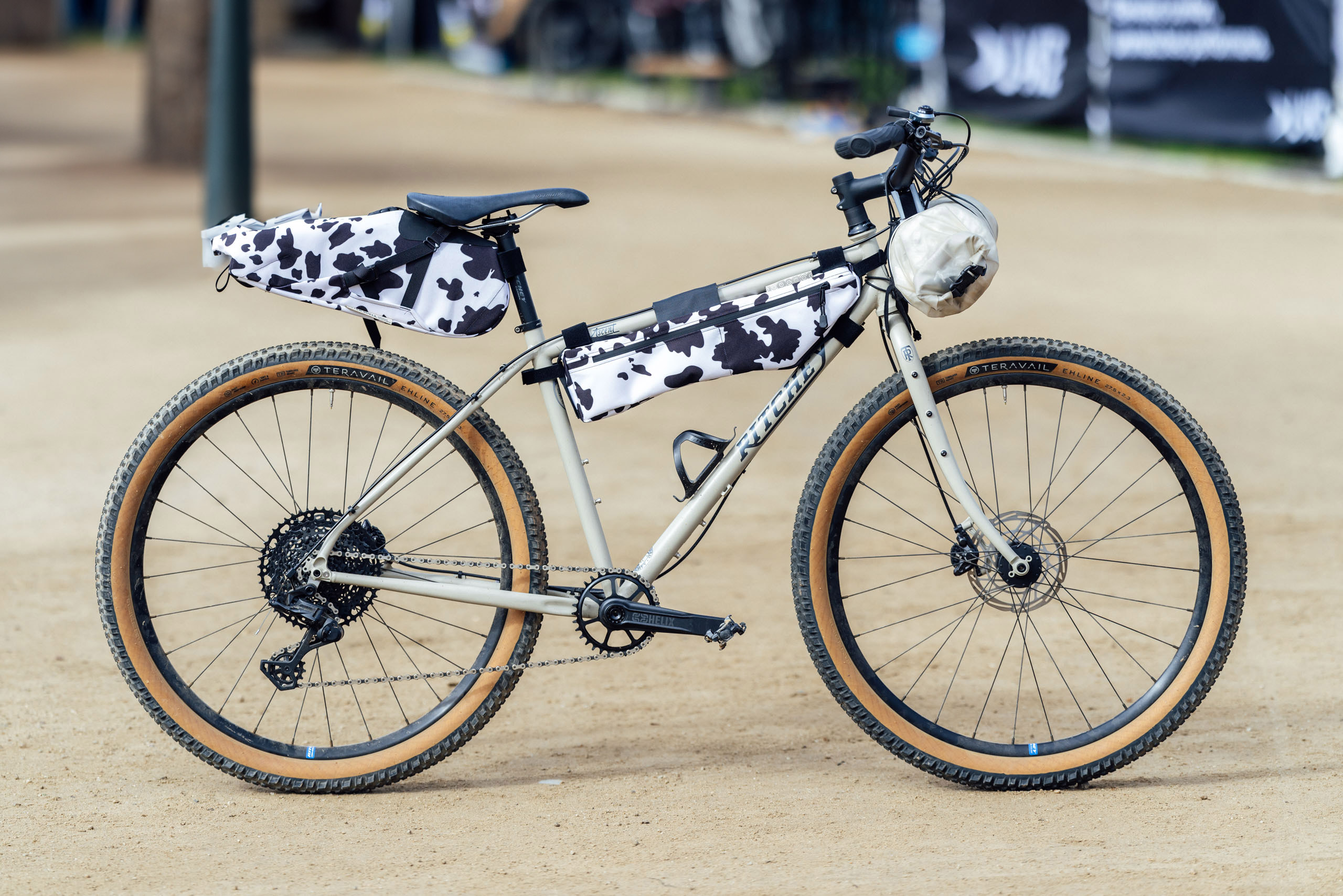
Bikes of Sea Otter (Part 2): Ritchey, Truemarmalade’s Omnium, and Sage
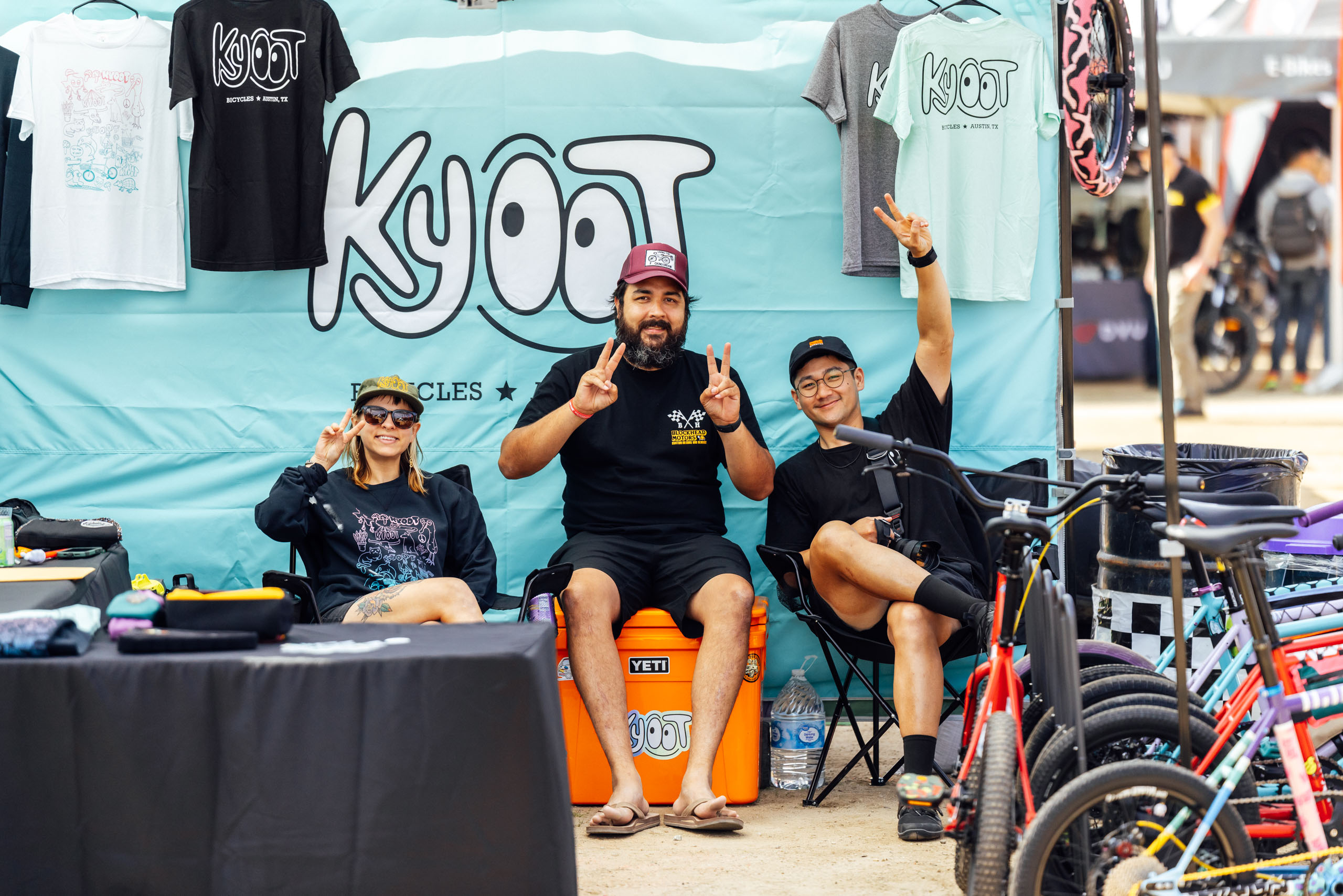
2024 Sea Otter Finds (Part One)

2024 Sea Otter Finds (Part Two)
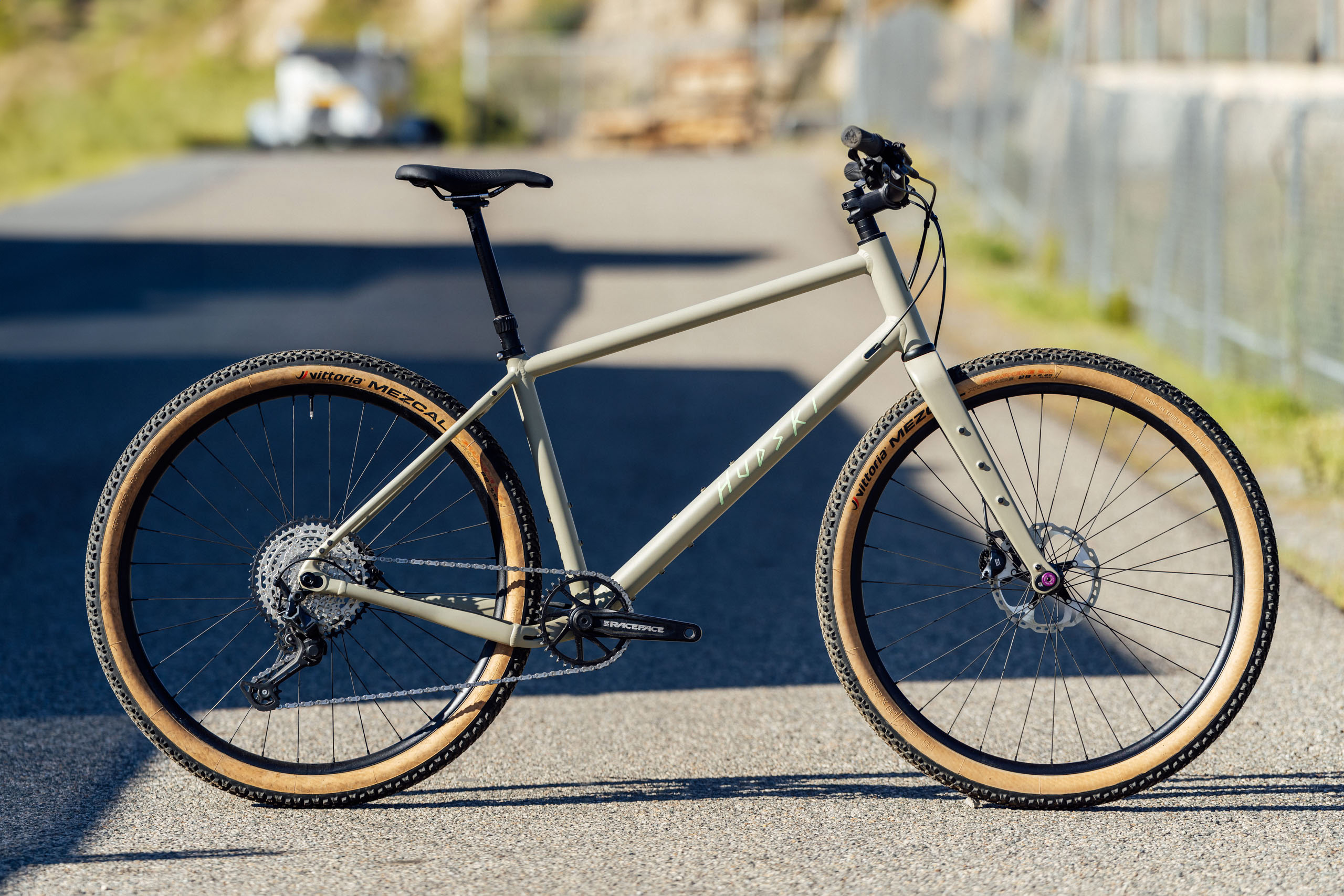
Introducing the Hudski Dualist (Sea Otter Classic)
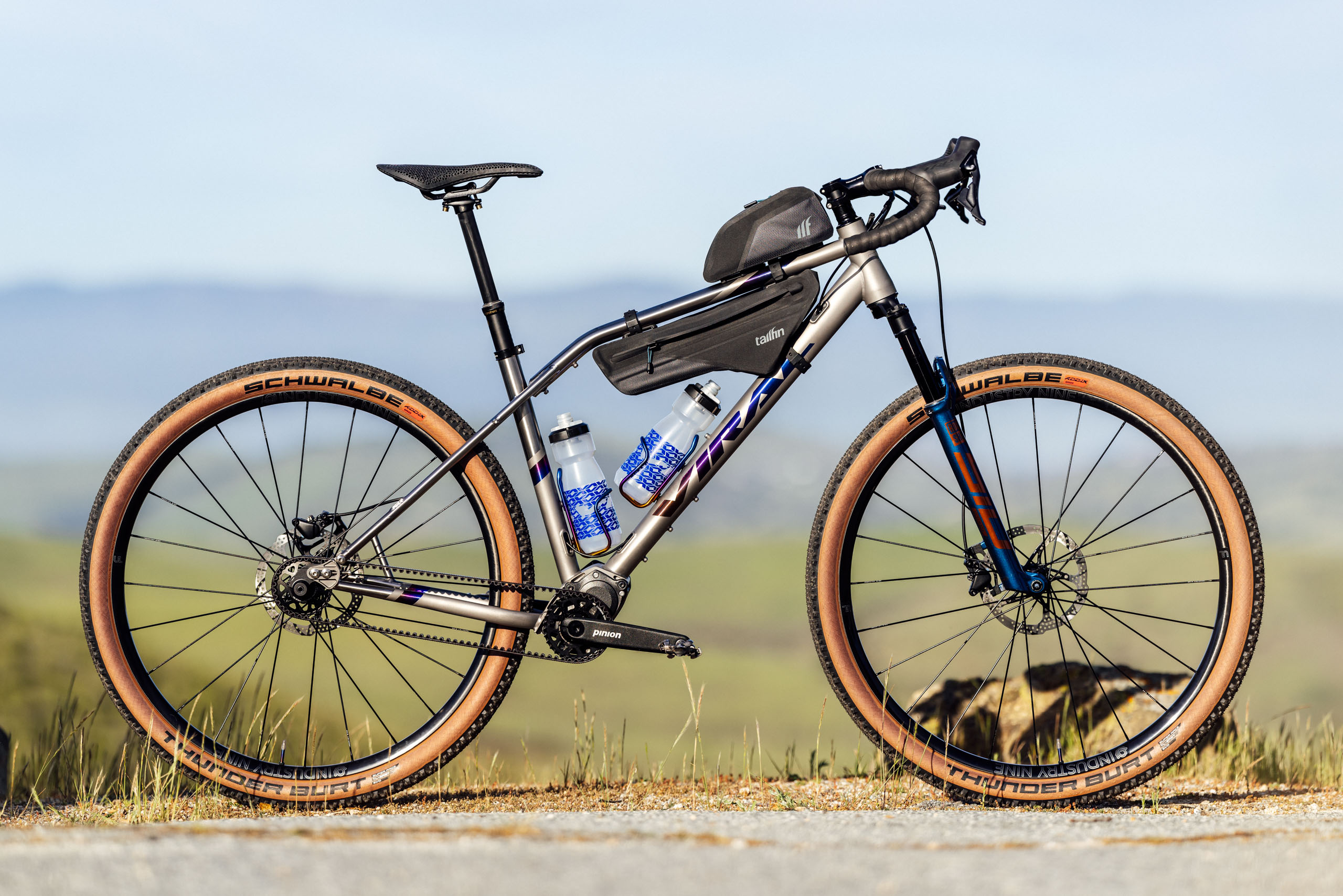
First Look at the Viral Wanderer (Sea Otter 2024)
Filed in (categories & tags).
Please keep the conversation civil, constructive, and inclusive, or your comment will be removed.
Rad Companies that Support Bikepacking

You need to be logged in to use these features. Click here to login , or start an account if you’re not yet a member of the Bikepacking Collective…

How to travel by bicycle in Russia: ideas and suggestions
- April 15, 2021
- Last updated: April 19, 2021
- Adventure , Destinations , Outdoor , Russia
Home » Travel Blog » How to travel by bicycle in Russia: ideas and suggestions
Day trips in Russia
Newcomers can test their “strength” on a one-day trip – the roads should not be complicated and the distances should not be too long. For first-time riders, study the route carefully, taking into account not only the length of the road, but also the conditions: there should be no long climbs and no high mountain passes. The flatter the road, the better. Do not ride close to crowded and busy large traffic lanes, even if conditions permit. Also, make sure carry your Russian invitation letter with your visa .
Route: Levutov – Pavlovsky town
Distance: 65 km
From Reutov (metro station “Novokosino”) outside Moscow, via Saltykovsk, Zheleznodorozhny, Fedurnovo, then turn to Biserovo, to Staraya Kupavna, then to Elektrostal via Ivashevo, and finally to Pavlovsky Posad via Subbotino, the intercity electric train This is a good route for newcomers to the town of Pavlovsky Posad (Vokhna or Pavlovsky Posad station).
This route is good for beginners: the terrain remains almost unchanged throughout the route. It’s mainly asphalt, but it’s quiet, with a rural landscape and few cars. Also, there are many intercity train stations along the way – if you get tired, you can take the train back to Moscow.

For the uninitiated, there are plenty of suitable roads around Moscow. The entire Moscow region is dotted with railway lines, so it is not necessary to make a circular route. You can take an intercity train to one station and back from another. There are many convenient route options around most Russian cities. You can make your own route, or take the advice of experienced travelers and use an already prepared route map.
Two-day trips in Russia
If you can travel 60-70 km per day, it’s no problem and you’ll be able to ride for two days. First of all, you need to solve your overnight problem: will you stay in a hotel, borrow a private house or pitch your own tent? Be sure to take the weather into account and take extra things that will keep you warm or heated.
When choosing your route, add some “hills” on the way, but not too steep.
Keep an eye on your bike. Ideally, it should be carefully checked and tested two days before departure; if you don’t know much about bike parts, you should have a full “car check” at a good mechanic’s shop to remove all faults in time.
Read more inspiring articles:
- Cycling Medieval Towns in Costa Brava And The Pyrenees
- Train Travel in Europe with Interrail
- Packing List for Europe: The Ultimate Preparation Guide
- Best Hikes in the World: Europe
- Cycling In Costa Brava: All You Need To Know To Plan Your Trip
- Hiking in Portugal: Some of the Best Trails
Route: ride along Nizhny Novgorod and rest on the Volga
Distance: 140 km
This is a self-guided route with picturesque Volga forests, where you will have to pitch a tent on the road overnight. You don’t have to think about the schedule of electric trains or buses, even if you are delayed on the way, don’t worry.
From Nizhny Novgorod, you will pass through the town of Bor (you can cross the Volga by cable car). Next, head to Ivanovskoye. On the way, note the unique, interlocking bi-level railroad: it is no longer in use, but the original structure is still there. Then go in the direction of Yurasovo, where you will turn to Maloye Utkino, then to Beryozovka, to Vypolzovo, then to the Volga River, to Apraksino, passing through the hill fortress with its ancient earthen embankment. Hillfort, which retains its ancient earthen berm.

After that, follow Orlovo, Belkino, Yamnovo, Zavrazhnoye, Selishi. After passing through Zhukovka, you can go straight through the forest to the bank of the Volga River and find a place to pitch your tent.
The next day, go in the direction of Pumra, then through Vagankovo, Orekhovo, Markovo, turn left at Matveyevka, go to Vatoma, then through Put’kovo and back to the banks of the Volga, then to the town of Pol, and then to Nizhny Novgorod.
There are many suitable two-day rides in the Volga Valley, around the Voronezh region, around the cities along the Golden Ring and in the Crimean steppe.
Multi-day rides in Russia
Riding for several days in a row is a very serious matter and you need to be physically prepared. For the first time, choose a route that is not too difficult and not extreme, because riding a few days in a row is not at all the same as riding 100 km in a week. Please estimate that it is more comfortable to travel 70-80 km per day on the plains and with much less hills.
Check to see if there are any settlements along the way – it depends on whether you’ll be carrying a lot of food, or if you can buy all your food along the way. But whenever and wherever you go, make sure you have drinking water on you. Please do not forget to constantly replenish your supplies and have an emergency reserve – about 1.5 liters of water per person.
Route: “Crimean coast: from Kerch to Alushta”
Distance: 270 km , 5-7 days
We have intentionally divided the trip on this route into several days, as it depends a lot on your fitness and desire to visit the sights – which will be seen on the way, and quite a lot of them. There will be some mountain passes – if you feel tired as you pass them, it is always possible to set up camp early and prepare for an overnight stay. Almost the entire road runs along the coastline. If you don’t want to pitch a tent, you can easily find a place to spend the night in the resort.
Get off the ferry to Kerch and head directly to the Feodossia steppe. Pass through the town of Ordzhonikidze and head to Koktebel. Be prepared for a long and tiring uphill climb. If you don’t want to tire yourself out that much, then sacrifice some of the scenic views and take a different route – along the Simferopol highway.
From Koktebeli there is a difficult mountain road leading to Sudak. The strongest will can cycle to the town of “Novyi Svit” in one day, while the rest of the people should go to the village of Morske and then to Alushta via Rybache and Malorichens’ke. From Alushta, you can take a bicycle and a trolleybus to Simferopol, from where you can return by plane or return to Kerch by bus or taxi.
Pack & travel:
- The Best Carry On Travel Backpack: A Practical Guide
- Tep Wireless Review: a Portable WiFi Hotspot For Travelers
- Best Walking Shoes For Women
- Best Rain Jacket for Any Travel Needs
- Best Backpacking Tent: The Ultimate Guide
- Vivobarefoot Stealth II: A Detailed Review
Guest Contributor
- Published: April 15, 2021
You may also like...

The 4 Reasons To Hire A Yacht For Your Vacation As A Travel Influencer

Things to Do in Taipei, Taiwan: Tips on Attractions, Food and Best Hotels

10 Things To Do in Beijing, China
SHARE WITH YOUR FRIENDS!
This post may contain affiliate links. Please visit our Privacy Policy for more info.
Useful links
AFFILIATE DISCLOSURE
Nomad is Beautiful is a participant in the Amazon Services LLC Associates Program, an affiliate advertising program designed to provide a means for us to earn fees by linking to Amazon.com and affiliated sites.
2024 © All rights reserved - Nomad Is Beautiful
Web by Nimble.help (EN) | (SK) | Graphic design & Logo: Gabriela Holcer
Sights of Elektrostal, Moscow region
Table of contents:, history of the city, park of culture and leisure, historical and art museum, october cultural center, kristall ice palace, memorial complex, museum and exhibition complex.

2024 Author : Harold Hamphrey | [email protected] . Last modified: 2023-12-17 10:06
In the Moscow region there is a small cozy town Elektrostal. Its sights for the most part have no historical value due to the fact that the city has a relatively small history. But for a visiting tourist or city dweller, they will be of interest. There is something to see, where to go to have an exciting leisure time.
Today the population of the city is 158 thousand people. Until the beginning of the 20th century there were several small workers' settlements here. After the opening of the electrometallurgical and equipment factories, the place began to be called the natural boundary of Calm. The construction of the railway made this settlement accessible, and workers and families flocked here to earn money. In 1925, the station was named Elektrostal, and the rapid increase in population allowed the village to receive the status of a city.

The founder of the city is a prominent Russian industrialist Nikolai Vtorov. It was he who opened the plant here, creating, in fact, a city-forming enterprise that is still operating. In Soviet times, it was a closed facility, and it was not easy to get to work here.
Today Elektrostal is a promising industrial city with a great future and a heroic past. It bears the proud name "City of Military and Labor Glory".
You can learn about the sights of Elektrostal with descriptions and photos here. There are places for walking, outdoor activities and cultural development.

Those who come to the city by train are met by a monument to the metallurgist. It was installed in November 2017 for the 100th anniversary of the Elektrostal plant. The attraction is made in the style of constructivism. The monument quickly won the love of the townspeople, because this city is supported by ordinary workers.

Elektrost altsy and the founding father of the plant, Nikolai Vtorov, are honored. In 2002, a monument was opened in honor of him, which became a landmark of the city of Elektrostal. The bronze sculpture is installed on the site where once stood a monument to the leader of the world proletariat, V. I. Lenin. Times change, characters change. Today, the plant, founded a century ago, is the largest in Russia. Vtorov himself, whose fortune was estimated at 60 million rubles in gold, according to Forbes magazine, was the owner of the largest capital at the beginning of the century. He was a banker, an industrialist, an entrepreneur, a man of action.
The monument was erected byinitiative of the townspeople who wished to perpetuate the monument to the great man.
One of the popular places for spending weekends and evenings among citizens and guests of the city is the Park of Culture and Leisure. Here you can ride attractions for children and adults, play slot machines, rollerblade or bike. The park is divided into two zones. Fans of unhurried walks in the fresh air make a promenade on the Quiet Alley, and those who prefer outdoor activities flock to the Entertainment Alley. The park has a summer stage, where concerts and cafes are regularly held.

Until 1999, there was no central museum among the attractions of Elektrostal in the Moscow Region. The expositions were exhibited in schools, the house of culture, in factory museums. The city was closed, so there was no large influx of tourists and visitors. The appearance of the historical and art museum made it possible for residents and guests of the city to learn a lot of useful information about their native land, the formation of the production process, and the difficult years of the war. The exposition consists of paintings by local artists, historical artifacts, household items, documents, books and much more. The collection is updated regularly. It also hosts outdoor exhibitions, which are always popular with the townspeople.
One of the main attractions of Elektrostal, the photo of which is available to almost every resident or visitor, is the Main Alley. On herpassers-by like to stroll along shady paths, townspeople rest by the fountain after a hard shift at the plant. Flower beds are the decoration of the alley. In 2006, a flower festival was held here for the first time, which has become traditional. Each enterprise of the city and private individuals give residents a real composition of fresh flowers, which pleases with bright colors all summer long. A riot of colors, aromas and a flight of fantasy reigns here. Walking through the park, you can see Snow White with a basket, a bright well, a multi-tiered cake made from fresh flowers, hearts of lovers or a fabulous house. It is almost impossible not to take a photo against the background of these compositions.
There is a cultural center in the city. It hosts performances by local creative teams and visiting stars, performances and circus performances.
In 1971, the ice palace "Crystal" was opened in the city. Almost immediately, a children's and youth hockey team was organized, which gained sports fame. This is the home sports arena for the Elektrostal hockey team. Matches of different levels are held on the ice.
There are sections for children who go in for hockey or figure skating. Citizens come here with their families to cheer for their favorite team or go ice skating.
Elektrostal is a city with a heroic past. During the war years, more than 12 thousand citizens came to the recruiting station and went to the front to defend their homeland. Almost 4 thousand of them did not return from the battle. To these heroesdedicated to the memorial complex with the inextinguishable Eternal Flame, opened in 1968
But the electricians took part in the war in Afghanistan and Chechnya. By decision of the city authorities, their memory is also immortalized in the memorial complex.
It has become a good tradition for newlyweds to lay flowers at this monument.

In 1999, a museum and exhibition complex was opened in the city, where, in addition to the exhibition hall, there are numerous circles for children, classes for young people, and a creative workshop. Various festivals, exhibitions, city holidays and other events are held within the walls and on the territory of the complex, which attract many spectators.

Listing the sights of Elektrostal, it is impossible not to mention the temples. There are several of them in the city: the church of St. John of Kronstadt, St. Andrew's Church, the hospital church of St. Panteleimon. Another new church is being built. In appearance, the temples look ancient, monumental, in the Novgorod style. But they were all built at the end of the 20th century.
Let there be no ancient artifacts among the sights of Elektrostal. But on the other hand, all of them are connected with the history of the city, with everyday work and military exploits of ordinary residents.
Recommended:
The best boarding houses (moscow region): review, description, names. boarding houses of the moscow region "all inclusive": an overview.

Recreation centers and boarding houses of the Moscow region allow you to comfortably spend weekends, vacations, celebrate an anniversary or holidays. Constantly busy Muscovites take the opportunity to escape from the embrace of the capital to recuperate, improve their he alth, think or just be with family and friends. Each district of the Moscow region has its own tourist places
Cities of the Moscow region. City of Moscow, Moscow Region: photo. City of Dzerzhinsky, Moscow region

Moscow region is the most populous subject of the Russian Federation. There are 77 cities on its territory, of which 19 have more than 100 thousand inhabitants, there are many industrial enterprises and cultural and educational institutions, and there is also a huge potential for the development of domestic tourism
Chekhov, Moscow region. Russia, Moscow region, Chekhov

This article will tell you about the amazing village. He literally from the first visit manages to fall in love with almost every traveler
Pushchino, Moscow region. Pushchino on the map. Sanatorium "Pushchino", Moscow region

In the south of the Moscow region, about 80 km from the capital, on the banks of the Oka River (at the confluence of the Lyubozhikha River) is one of the scientific centers of Russia - the Science City of Pushchino. Its population is just over 20,000 people
The most interesting sights of Pushkin Leningrad region. City of Pushkino, Moscow Region

Pushkin is the nearest suburb of St. Petersburg, mentioned in many works of art and official documents as Tsarskoye Selo (renamed in 1937)
Popular for the day

Galilee, Israel: photos and descriptions of attractions, excursions, interesting facts and reviews of tourists

Sights of Belgorod: photos with descriptions, the most interesting places, interesting facts and reviews of tourists
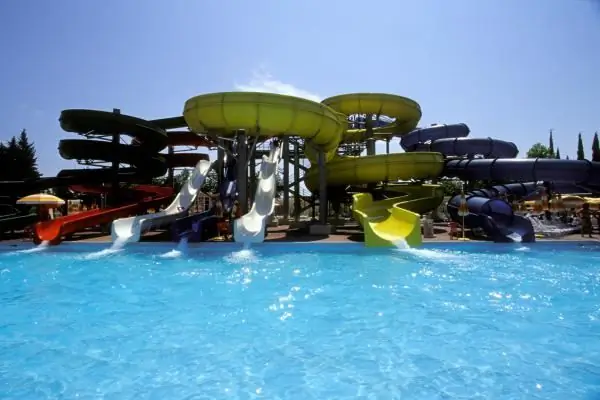
Attractions and entertainment in Adler: photos and descriptions, the most interesting places, interesting facts and reviews of tourists

Where to relax in February at sea: a list of countries

How is the weather in Turkey in June?

Thermal springs in Abkhazia: photos, reviews. Where are the thermal springs in Abkhazia?

40 Facts About Elektrostal
Written by Lanette Mayes
Modified & Updated: 02 Mar 2024
Reviewed by Jessica Corbett

Elektrostal is a vibrant city located in the Moscow Oblast region of Russia. With a rich history, stunning architecture, and a thriving community, Elektrostal is a city that has much to offer. Whether you are a history buff, nature enthusiast, or simply curious about different cultures, Elektrostal is sure to captivate you.
This article will provide you with 40 fascinating facts about Elektrostal, giving you a better understanding of why this city is worth exploring. From its origins as an industrial hub to its modern-day charm, we will delve into the various aspects that make Elektrostal a unique and must-visit destination.
So, join us as we uncover the hidden treasures of Elektrostal and discover what makes this city a true gem in the heart of Russia.
Key Takeaways:
- Elektrostal, known as the “Motor City of Russia,” is a vibrant and growing city with a rich industrial history, offering diverse cultural experiences and a strong commitment to environmental sustainability.
- With its convenient location near Moscow, Elektrostal provides a picturesque landscape, vibrant nightlife, and a range of recreational activities, making it an ideal destination for residents and visitors alike.
Known as the “Motor City of Russia.”
Elektrostal, a city located in the Moscow Oblast region of Russia, earned the nickname “Motor City” due to its significant involvement in the automotive industry.
Home to the Elektrostal Metallurgical Plant.
Elektrostal is renowned for its metallurgical plant, which has been producing high-quality steel and alloys since its establishment in 1916.
Boasts a rich industrial heritage.
Elektrostal has a long history of industrial development, contributing to the growth and progress of the region.
Founded in 1916.
The city of Elektrostal was founded in 1916 as a result of the construction of the Elektrostal Metallurgical Plant.
Located approximately 50 kilometers east of Moscow.
Elektrostal is situated in close proximity to the Russian capital, making it easily accessible for both residents and visitors.
Known for its vibrant cultural scene.
Elektrostal is home to several cultural institutions, including museums, theaters, and art galleries that showcase the city’s rich artistic heritage.
A popular destination for nature lovers.
Surrounded by picturesque landscapes and forests, Elektrostal offers ample opportunities for outdoor activities such as hiking, camping, and birdwatching.
Hosts the annual Elektrostal City Day celebrations.
Every year, Elektrostal organizes festive events and activities to celebrate its founding, bringing together residents and visitors in a spirit of unity and joy.
Has a population of approximately 160,000 people.
Elektrostal is home to a diverse and vibrant community of around 160,000 residents, contributing to its dynamic atmosphere.
Boasts excellent education facilities.
The city is known for its well-established educational institutions, providing quality education to students of all ages.
A center for scientific research and innovation.
Elektrostal serves as an important hub for scientific research, particularly in the fields of metallurgy, materials science, and engineering.
Surrounded by picturesque lakes.
The city is blessed with numerous beautiful lakes, offering scenic views and recreational opportunities for locals and visitors alike.
Well-connected transportation system.
Elektrostal benefits from an efficient transportation network, including highways, railways, and public transportation options, ensuring convenient travel within and beyond the city.
Famous for its traditional Russian cuisine.
Food enthusiasts can indulge in authentic Russian dishes at numerous restaurants and cafes scattered throughout Elektrostal.
Home to notable architectural landmarks.
Elektrostal boasts impressive architecture, including the Church of the Transfiguration of the Lord and the Elektrostal Palace of Culture.
Offers a wide range of recreational facilities.
Residents and visitors can enjoy various recreational activities, such as sports complexes, swimming pools, and fitness centers, enhancing the overall quality of life.
Provides a high standard of healthcare.
Elektrostal is equipped with modern medical facilities, ensuring residents have access to quality healthcare services.
Home to the Elektrostal History Museum.
The Elektrostal History Museum showcases the city’s fascinating past through exhibitions and displays.
A hub for sports enthusiasts.
Elektrostal is passionate about sports, with numerous stadiums, arenas, and sports clubs offering opportunities for athletes and spectators.
Celebrates diverse cultural festivals.
Throughout the year, Elektrostal hosts a variety of cultural festivals, celebrating different ethnicities, traditions, and art forms.
Electric power played a significant role in its early development.
Elektrostal owes its name and initial growth to the establishment of electric power stations and the utilization of electricity in the industrial sector.
Boasts a thriving economy.
The city’s strong industrial base, coupled with its strategic location near Moscow, has contributed to Elektrostal’s prosperous economic status.
Houses the Elektrostal Drama Theater.
The Elektrostal Drama Theater is a cultural centerpiece, attracting theater enthusiasts from far and wide.
Popular destination for winter sports.
Elektrostal’s proximity to ski resorts and winter sport facilities makes it a favorite destination for skiing, snowboarding, and other winter activities.
Promotes environmental sustainability.
Elektrostal prioritizes environmental protection and sustainability, implementing initiatives to reduce pollution and preserve natural resources.
Home to renowned educational institutions.
Elektrostal is known for its prestigious schools and universities, offering a wide range of academic programs to students.
Committed to cultural preservation.
The city values its cultural heritage and takes active steps to preserve and promote traditional customs, crafts, and arts.
Hosts an annual International Film Festival.
The Elektrostal International Film Festival attracts filmmakers and cinema enthusiasts from around the world, showcasing a diverse range of films.
Encourages entrepreneurship and innovation.
Elektrostal supports aspiring entrepreneurs and fosters a culture of innovation, providing opportunities for startups and business development.
Offers a range of housing options.
Elektrostal provides diverse housing options, including apartments, houses, and residential complexes, catering to different lifestyles and budgets.
Home to notable sports teams.
Elektrostal is proud of its sports legacy, with several successful sports teams competing at regional and national levels.
Boasts a vibrant nightlife scene.
Residents and visitors can enjoy a lively nightlife in Elektrostal, with numerous bars, clubs, and entertainment venues.
Promotes cultural exchange and international relations.
Elektrostal actively engages in international partnerships, cultural exchanges, and diplomatic collaborations to foster global connections.
Surrounded by beautiful nature reserves.
Nearby nature reserves, such as the Barybino Forest and Luchinskoye Lake, offer opportunities for nature enthusiasts to explore and appreciate the region’s biodiversity.
Commemorates historical events.
The city pays tribute to significant historical events through memorials, monuments, and exhibitions, ensuring the preservation of collective memory.
Promotes sports and youth development.
Elektrostal invests in sports infrastructure and programs to encourage youth participation, health, and physical fitness.
Hosts annual cultural and artistic festivals.
Throughout the year, Elektrostal celebrates its cultural diversity through festivals dedicated to music, dance, art, and theater.
Provides a picturesque landscape for photography enthusiasts.
The city’s scenic beauty, architectural landmarks, and natural surroundings make it a paradise for photographers.
Connects to Moscow via a direct train line.
The convenient train connection between Elektrostal and Moscow makes commuting between the two cities effortless.
A city with a bright future.
Elektrostal continues to grow and develop, aiming to become a model city in terms of infrastructure, sustainability, and quality of life for its residents.
In conclusion, Elektrostal is a fascinating city with a rich history and a vibrant present. From its origins as a center of steel production to its modern-day status as a hub for education and industry, Elektrostal has plenty to offer both residents and visitors. With its beautiful parks, cultural attractions, and proximity to Moscow, there is no shortage of things to see and do in this dynamic city. Whether you’re interested in exploring its historical landmarks, enjoying outdoor activities, or immersing yourself in the local culture, Elektrostal has something for everyone. So, next time you find yourself in the Moscow region, don’t miss the opportunity to discover the hidden gems of Elektrostal.
Q: What is the population of Elektrostal?
A: As of the latest data, the population of Elektrostal is approximately XXXX.
Q: How far is Elektrostal from Moscow?
A: Elektrostal is located approximately XX kilometers away from Moscow.
Q: Are there any famous landmarks in Elektrostal?
A: Yes, Elektrostal is home to several notable landmarks, including XXXX and XXXX.
Q: What industries are prominent in Elektrostal?
A: Elektrostal is known for its steel production industry and is also a center for engineering and manufacturing.
Q: Are there any universities or educational institutions in Elektrostal?
A: Yes, Elektrostal is home to XXXX University and several other educational institutions.
Q: What are some popular outdoor activities in Elektrostal?
A: Elektrostal offers several outdoor activities, such as hiking, cycling, and picnicking in its beautiful parks.
Q: Is Elektrostal well-connected in terms of transportation?
A: Yes, Elektrostal has good transportation links, including trains and buses, making it easily accessible from nearby cities.
Q: Are there any annual events or festivals in Elektrostal?
A: Yes, Elektrostal hosts various events and festivals throughout the year, including XXXX and XXXX.
Was this page helpful?
Our commitment to delivering trustworthy and engaging content is at the heart of what we do. Each fact on our site is contributed by real users like you, bringing a wealth of diverse insights and information. To ensure the highest standards of accuracy and reliability, our dedicated editors meticulously review each submission. This process guarantees that the facts we share are not only fascinating but also credible. Trust in our commitment to quality and authenticity as you explore and learn with us.
Share this Fact:

COMMENTS
Mid-travel full-suspension MTBs tend to cover a broader spectrum of mountain biking applications than other more specific MTB styles. With front and rear travel in the 130mm to 160mm range, these mountain bikes are usually classed as trail or all-mountain bikes. These bikes are able to handle relatively mountainous conditions like rocky trails and singletracks […]
But even if we take the 0.8 percent difference at face value, that's about what we'd expect from the weight difference between the two bikes alone, suggesting the travel per se (i.e. the ...
The YT Izzo is the shortest travel model in their line of trail, all-mountain, and gravity mountain bikes. With 130mm of front and rear wheel travel, this lightweight carbon 29er is YT's most trail-oriented model, with a fairly modern geometry that lends itself more toward the XC side of the trail riding spectrum.
The best trail mountain bikes are designed to be all-around MTBs that can take on any trail, all day long. As trail mountain biking fills the middle ground between enduro and XC, ... Trail bikes can range from 130mm of travel all the way up to about 160mm, and quite often we see forks that are about 10mm longer than rear shocks. ...
Long-travel, or enduro, bikes are awesome for those who don't mind carrying some extra bike around in the name of getting rowdy. With 150 to 170mm of travel, they pedal reasonably well, but efficiency is far from their defining trait. ... Not all that long ago, all-mountain bike wheels were all 26 inches in diameter. Now, 27.5-inch and 29-inch ...
The 26 best trail bikes of 2024 as ridden, rated and reviewed by our expert testers, and buyer's guide.
The all-mountain bike was previously a 650b machine until YT debuted the newest generation with the option to buy it in either wheel size. As a 29er, the Capra comes with a 65 to 65.5-degree head angle, depending on the geometry mode and a 75.5 to 76-degree seat angle.
Our Top Picks. Santa Cruz Hightower : Best All-Around Long Travel Bike of 2021. Giant Reign : Best Budget Long Travel Bike of 2021. Yeti SB150 : Best Climbing Long Travel Bike of 2021. Specialized Enduro : Best Enduro Bike of 2021.
A long-travel all-mountain bike built for racing rugged enduro lines and having a rippin' good time in the rough. Learn more See all models Remedy. Snappy 27.5˝ wheels make this the rig for popping off jumps, railing corners, and throwing the bike around. Learn more
Enter the Yeti Cycles SB150, launched today, starting at $5,199. With a 150mm travel shock and 170mm travel fork, it offers the best example of a long-travel 29er bike that climbs as well as an ...
As the most expensive analogue bike in this test, the MERIDA ONE-FORTY 10K convinces with a good frame platform and several clever features, like the tool strap and long-travel dropper post, which can be inserted all the way into the frame across all sizes. On the trail, the MERIDA delivers a smooth performance, but feels a little sluggish ...
Best Mountain Bikes. Dream Bike: Giant Trance X Advanced Pro 29 SE. Best Fat Bike: State 6061 Trail+ Fat Bike. Best Priced E-MTB: Specialized Turbo Tero 3.0. Best Budget Hardtail: Specialized ...
Our Team's Trail Mountain Bike Picks. Best Overall Trail Mountain Bike: Yeti Cycles SB130. A Close Second (For Rougher Terrain): Ibis Ripmo V2. Best E-Mountain Trail Bike: Specialized Turbo Levo Comp. Best Hardtail for Trail Riding: Salsa Timberjack XT 29. Best Budget Full-Suspension Trail Bike: YT Jeffsy Core 2.
Equipped with 29in wheels, 150mm of rear travel and a 160mm fork, it's essentially the e-MTB version of the Slash. It's a similarly capable and planted beast on the descents, though with 85Nm of torque between the crank arms, it can go up some rather extraordinary terrain too. There have been some big updates to Trek's big-travel Rail for ...
The Canyon Lux Trail is a longer-travel take on the brand's lightweight, race-worthy full suspension XC bike, the Lux. Canyon positions the bike — with 120/110mm of suspension travel front and rear — as "everything a downcountry bike should be," so naturally Singletracks had to give it a try. After putting in hundreds of miles of ...
The Polygon Xtrada 5 may well sport a dated 2×10 drivetrain, but this 29er has the slackest steering geometry for stability at speed, along with the lowest top tube and shortest seat tube to give you maximum range of motion on black-level trails. While the drivetrain is frustrating, the handling is first class.
MSRP: $1,999 Frame: Aluminum Suspension Travel: 120 mm Brakes: Hydraulic discs Gearing: SRAM SX Eagle 12-speed Tire Size: 29″ x 2.6″ Niner Bikes is a renowned mountain bike brand specializing in producing high-performance mountain bikes. The Niner Air 9 2-Star is a good hardtail example. Niner Air 9 is an aluminum hardtail mountain bike with a 120 mm suspension fork, a 12-speed drivetrain ...
12 x 148mm Boost™ rear spacing for additional stiffness and control. Hassle-free, full-length, internal cable routing. Fully Di2 compatible. Fits a wide range of riders (between 5'4" and 6'7") The Firebird is the no-comprimise long-travel mountain bike that is both an enduro bike and technical climber. The tough & light Firebird has peerless ...
The new Revel Rascal proved to be a mid-travel bike that made me rethink having an XC bike and a trail bike. The post Wildly Popular Mid-Travel Mountain Bike Just Got Better: Revel Rascal V2 ...
The bike also has a long wheelbase of 1,218mm for the size large, and the frame can fit plus-sized 27.5" tires or narrower, standard 29er tires. ... The Trillion Prime is a British-built, long-travel hardtail that looks like it eats downhill runs for lunch. The durable steel frame will take whatever burly hits the 160mm fork can't manage to ...
In the grand scheme of mountain bike technology, David Turner has been through it all. Turner started racing mountain bikes in the sport's heyday. As a professional racer in the late 1980s and early '90s, he collaborated with designers at RockShox, Mongoose, and AMP Research, adding significant contributions to the advancement of front and ...
Home » Travel Blog » How to travel by bicycle in Russia: ideas and suggestions. Contents hide. 1 Day trips in Russia. 1.1 Route: Levutov - Pavlovsky town. 2 Two-day trips in Russia. 2.1 Route: ride along Nizhny Novgorod and rest on the Volga. 3 Multi-day rides in Russia. 3.1 Route: "Crimean coast: from Kerch to Alushta".
Elektrostal is linked by Elektrichka suburban electric trains to Moscow's Kursky Rail Terminal with a travel time of 1 hour and 20 minutes. Long distance buses link Elektrostal to Noginsk, Moscow and other nearby towns. Local public transport includes buses. Sports Indoor practice ice rink named after A. Ionov.
In the Moscow region there is a small cozy town Elektrostal. Its sights for the most part have no historical value due to the fact that the city has a relatively small history. But for a visiting tourist or city dweller, they will be of interest. There is something to see, where to go to have fun
40 Facts About Elektrostal. Elektrostal is a vibrant city located in the Moscow Oblast region of Russia. With a rich history, stunning architecture, and a thriving community, Elektrostal is a city that has much to offer. Whether you are a history buff, nature enthusiast, or simply curious about different cultures, Elektrostal is sure to ...